
Klingon modern history:
Klingon motivation - as written about from the logs of Nathaniel Hawkins from U.S.S. Montrose.
Kahless the Unforgettable led the Klingon revolt againt their oppressor race, the Her'Q. The Her'Q plundered Qo'noS and the surrounding area in Earth's 14th Century. Geological analysis by Ieuan Griffiths and others has shown that the Her'Q has left the region what has been described as a 'mineralogical desert'. This appears to be the original motivator for the Klingons to begin their outward expansion and conquering: to supplement their bleak resource supplies on Qo'nos.
Klingon mining, refining and purification technologies are of the highest order as a result. Military strip mining and mobile refinary technologies have been perfected as a priority by the Klingons to get good resources back to the Empire and its military as quickly as possible.
 Klingon and Humans 2151 - 2166:
Klingon and Humans 2151 - 2166:
Prior to the First Confrontation with Archer of Earth, the Klingons had dismissed the humans. They had watched the fledgling world restrained by the Vulcan pacifists and struggle to defeat the Ferasans when they attacked Earth freighters. The Klingons had the best warships, they had phasers and photon torpedoes. They had an empire, Earth did not. The encounter with the warship Enterprise showed that it was fast, but her weapons were feeble. This all changed within a decade. The Kingon High Council had received information that assaults between Houses had actually been orchestrated by the Suliban Cabal. The courier sent by the High Council, Klaang, received information from a member of the Suliban resistance on Rigel X. Klaang was pursued by members loyal of the Suliban Cabal in a cloaked ship and shot down on insignifcant planet Earth in a place called Broken Bow in Oklahoma. A human farmer shot the warrior. Klaang was saved and brought to Qo'noS by Captain Jonathan Archer and the Enterprise. Even at this early point in their history, the humans showed a lack or regard to Klingon honour. The second encounter by Vorok showed Archer had acquired a contemptuous attitude towards the Klingons when he confronted them about Xyrillians onboard. Holographic technology was acquired from this encounter and the humans confirmed their lack of respect.
The third encounter with the humans was when they illegally boarded the Raptor class scout Somraw. The ship had been damaged after an attack on a Xarantine outpost. The humans declared that they had boarded the ship to help the crew, when in fact they were spying on Klingon technology and had accessed details on photon torpedo technology - something they had not even heard of. Archer and the Enterprise interfered with Klingons claiming dilithium resources for the Empire Archer and his crew armed the colonists and helped them to defeat Korok and his men. Captain Archer was later arrested and tried on Narendra III for holding Klingon fugitives, conspiracy and enemy of the Empire. Archer had taken Klingon colonists, claiming the Empire had no further use for their colony. The warship Bortas commanded by Duras had been sent to retrieve the colonists. Archer was sent to Rura Penthe but dishonourable Klingon officials were bribed to gain Archer release. The humans showed they could form alliances and the attack by the Xindi focussed their attention on improving their defences. The Romulans - up until then the main rivals to the Klingons, soon took an interest in the humans. The Klingons' concern about the humans was increased with the revelations of Cold Station 12 and the Augment programme. The Klingon Empire stole the technology to wield its secrets, causing genetic damage to many Klingons when it was realised the technology was beyond modern Klingon medicine. The biological incident that Klingon scientist Antaak tried to stop came from human Augment DNA experiments designed to counter the recent use by humans of Augments. The Augment virus gave Klingons superior abilities but dissolved their cranial ridges. Antaak managed to convert the virus into a non-lethal variant, removing the superior strength but later analysis would show that the afflicted Augment Klingons retained their superior intelligence and desire for power. This would manifest itself when Augment Klingons would take control of the Empire gradually from 2154 until 2269, driving the expansion of the Empire. The ways of Kahless would be set aside for the betterment of the Empire. A cure for the Augment virus would not present itself until 2270 when a future Klingon named Miral provided a genetic cure for the affliction.
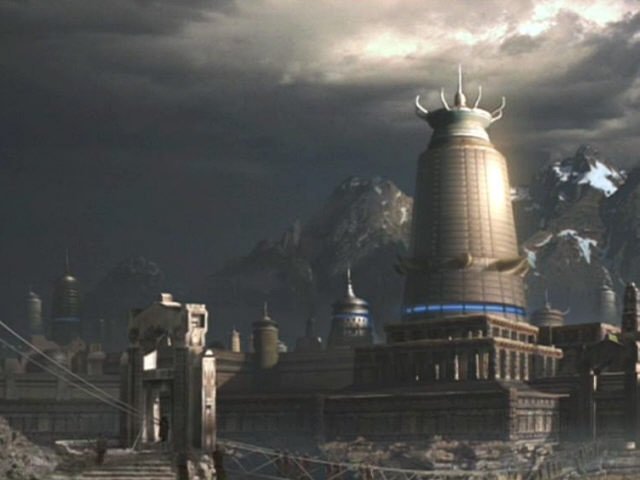 All attention was grabbed when Archer forged the Coalition of Planets. This organisation successfully threw off the latest Ferasan aggression and would later be successful in a war against the Romulans. Everything had changed and the United Federation of Planets was created, a threat to the beliefs and ways of Kahless. The Klingons disregarded the fledgling United Federation of Planets as a coalition that could be shattered by Klingon military might at any time.
All attention was grabbed when Archer forged the Coalition of Planets. This organisation successfully threw off the latest Ferasan aggression and would later be successful in a war against the Romulans. Everything had changed and the United Federation of Planets was created, a threat to the beliefs and ways of Kahless. The Klingons disregarded the fledgling United Federation of Planets as a coalition that could be shattered by Klingon military might at any time.
A Century of Silence - The Klingon Empire in disarray 2166 - 2256:
The Klingon Empire failed to meet the expansion of the Federation, instead the 24 great Houses of the Empire turned inwards upon each other as they fought for the leadership of the Empire. This fractious in-fighing latest for generations. The lack of a unified leader meant that the military might of the Klingon Empire could never be bought to bear on one enemy. This led to a century of silence between the Federation and the Klingons. What the Empire needed was a unifying leader with a cause that would bring the great Houses back together to fight a worthy, common enemy.
Despite sporadic hostile encounters between the Klingons and Starfleet vessel, including the clash at Donatu V in 2245, the Klingon Hi Council singularly failed to unify the Empire. The success of Donatu V bred complacency in the face of Federation expansionism; the threat was simply not recognised by the High Council.
One Klingon leader, T'kuvma, found this unifying cause in four words used by the United Federation of Planets: "We come in peace."
Author's Notes:
Star Trek: Discovery episodes "The Vulcan Hello" and "Battle at the Binary Stars" showed that the Klingon Empire had not been seen outside of occasional, violent encounters for nearly a century - since the end of the ST: Enterprise series. Donatu V is still in the history as a clash in 2245 - the year Enterprise 1701 is launched - and T'kuvma berates the High Council for being complacent in the result of that battle. The threat from the Federation is simply not recognised, just as many of the Native American tribes continued to fight amongst themselves, despite the spread of white settlers westward from the eastern seaboard colonies.
"The Klingon Empire has been in disarray for generations" - Sarek in Star Trek Discovery.
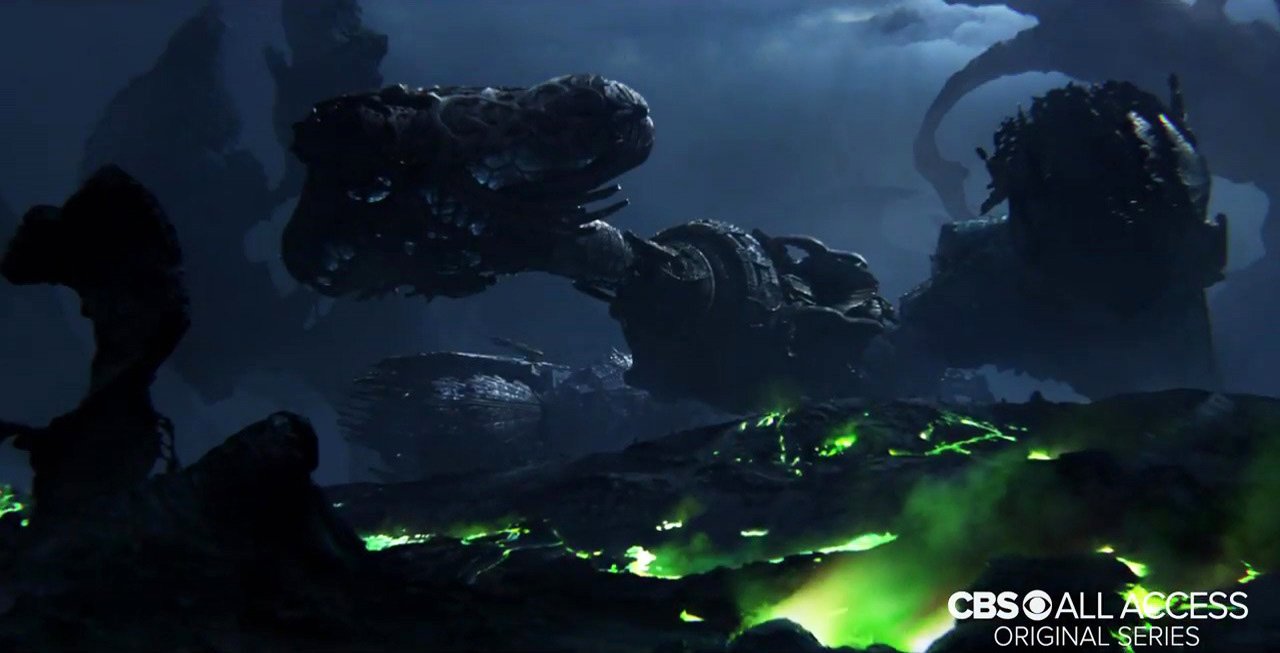
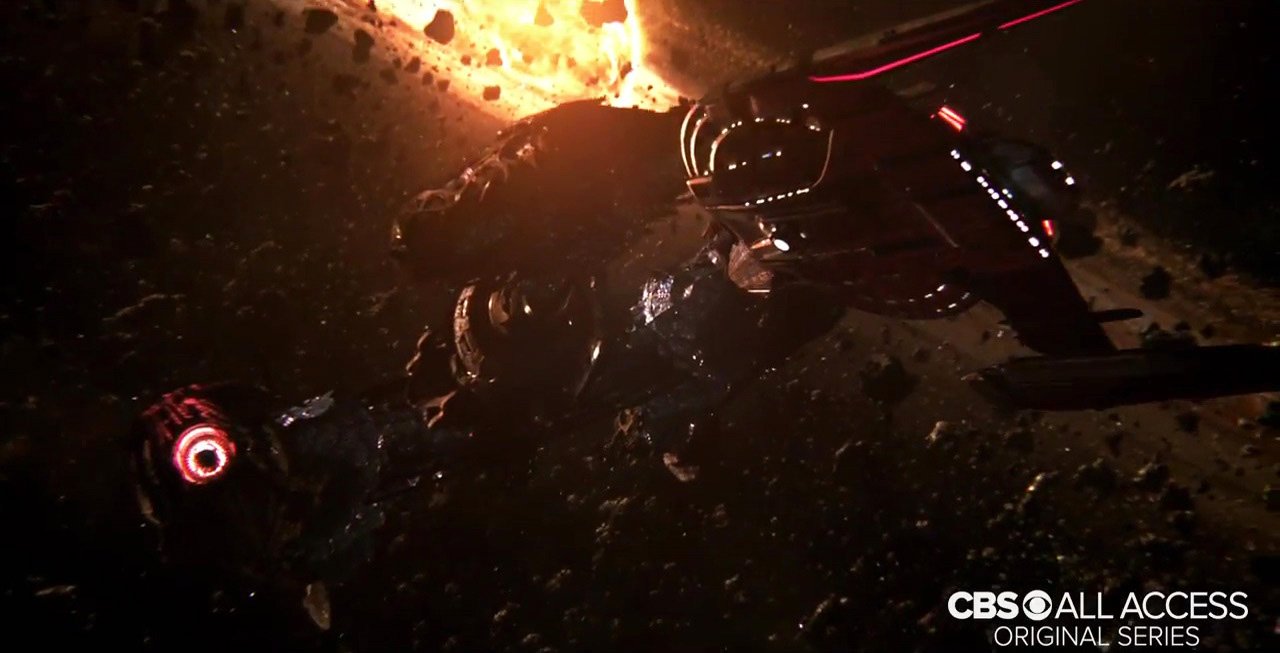

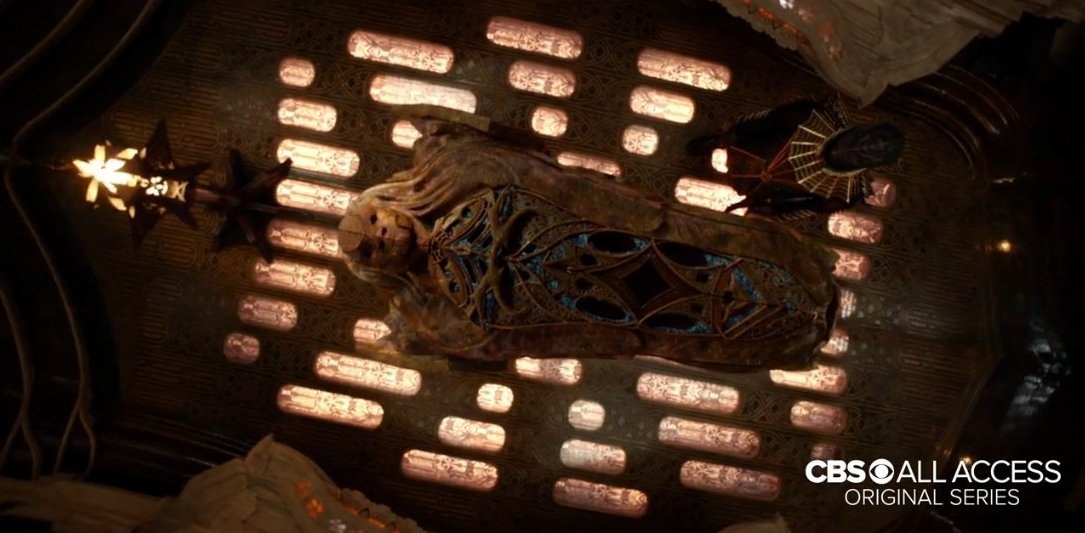
2256 - 2264 T'kuvma, the Federation-Klingon War and the unification of the Klingon Houses:
On Stardate 1207, Sunday May 11th 2256, the U.S.S. Shenzhou investigated the damaging of a Federation subspace relay near a binary star system. The damage was inconclusive. Upon studying the system further, an object of unknown origin was detected. The damage was actually caused by T'kuvma, a devoutly religious Klingon who sought to follow the ways of Kahless the Unforgettable. T'kuvma sought to maintain the purity of the Klingon people against the filthy mix of Vulcans, Andorians, Tellarites and Humans. T'kuvma looked to his crew for a Torchbearer to light the beacon of Kahless and unify the Klingon people once more.
One of the Shenzhou crew interrupted the lighting of the Beacon of Kahless by the Torchbearer Rejac and killed him. T'kuvma sought only to unify the Klingon people in the face of Federation expansionism under the lie of 'we come in peace'. A second torchbearer, Voq, succeeded in drawing the 24 great Houses of the High Council together. Whilst Kol of House Kor did not consider House T'kuvma a worthy House with their ragtag collection of unwanted, disgraced and genetically impure like the albino Voq. DennaS of House D'Ghor and Ujilli of House Mo'Kai were keen to know more.
The Shenzhou set out demands that this was the edge of Federation space. T'kuvma was able to show tha the Federation always says "we come in peace" - their lie as T'kuvma put it. The Klingons opened fire when the Federation received reinforcements. Federation Admiral Anderson repeated the Starfleet mantra of talking and peace. The Europa ran into a cloaked Klingon vessel; sensing a rapidly degenerating tactical situation the Europa self-destructed, yet Starfleet losses were more than Klingon. The Klingon High Council withdrew to spread the message of unity. T'kuvma sadly did not survive the encounter, yet his example as T'kuvma the Unforgettable, lit the flame to unify the Klingon Empire for the first time since Kahless.

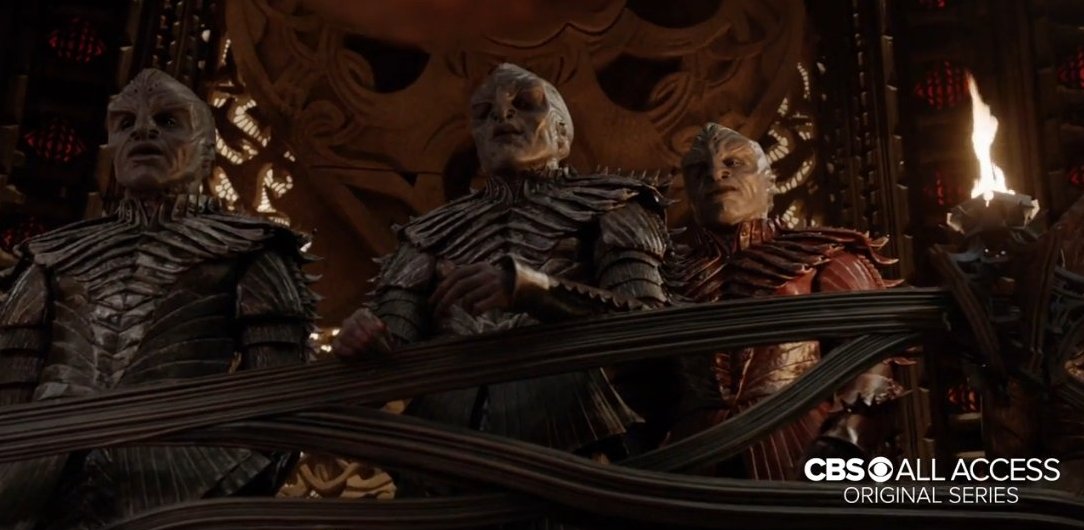
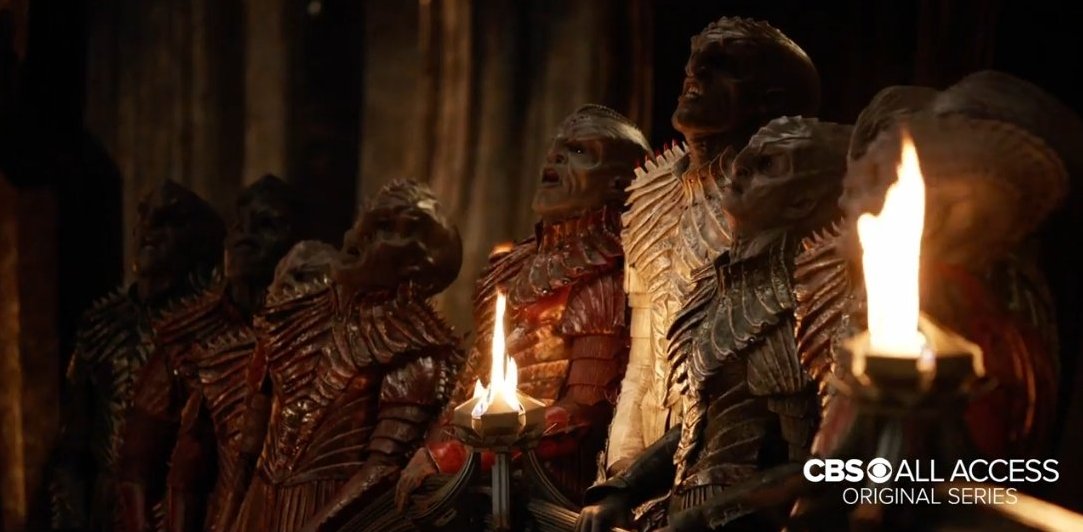
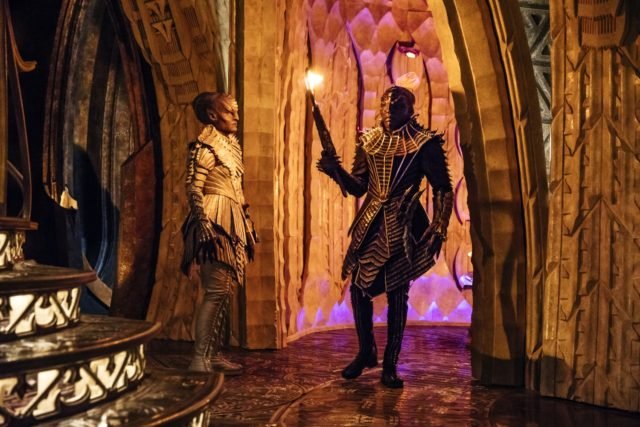
T’Kuvma (Chris Obi), a leader of an ancient Klingon house, goes to extreme measures to unite his people. “In the different versions of Trek, the Klingons have never been completely consistent,” Harberts said. “We will introduce several different houses with different styles. Hopefully, fans will become more invested in the characters than worried about the redesign.”

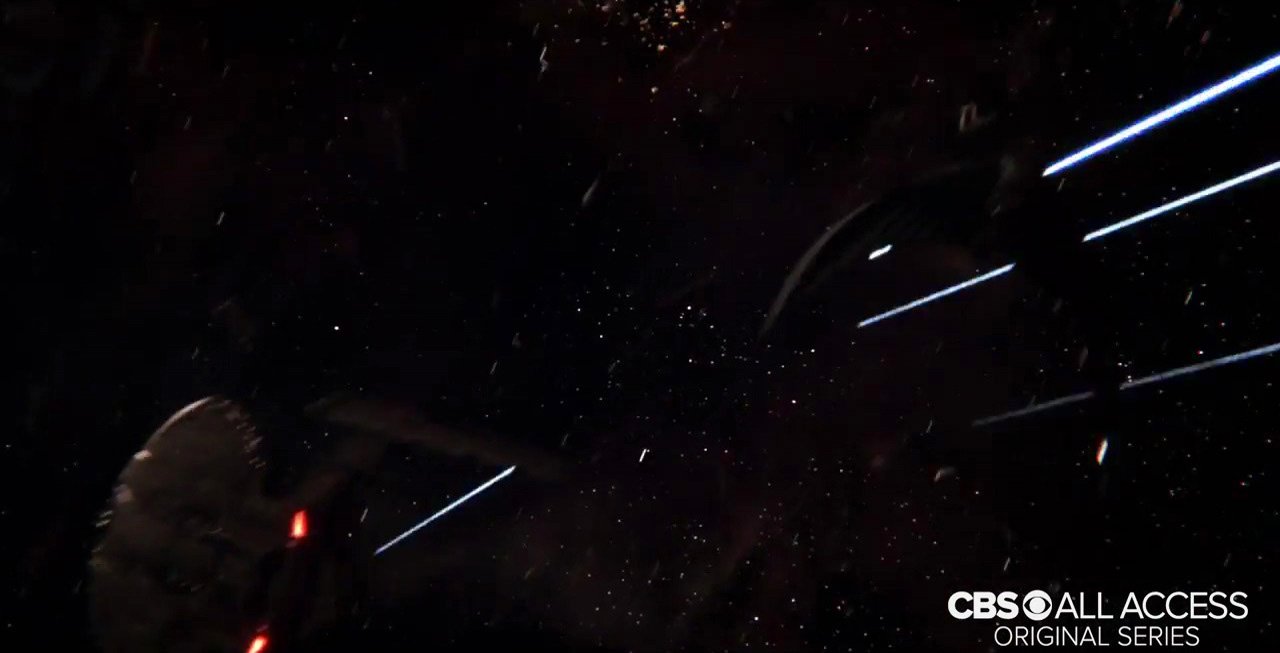
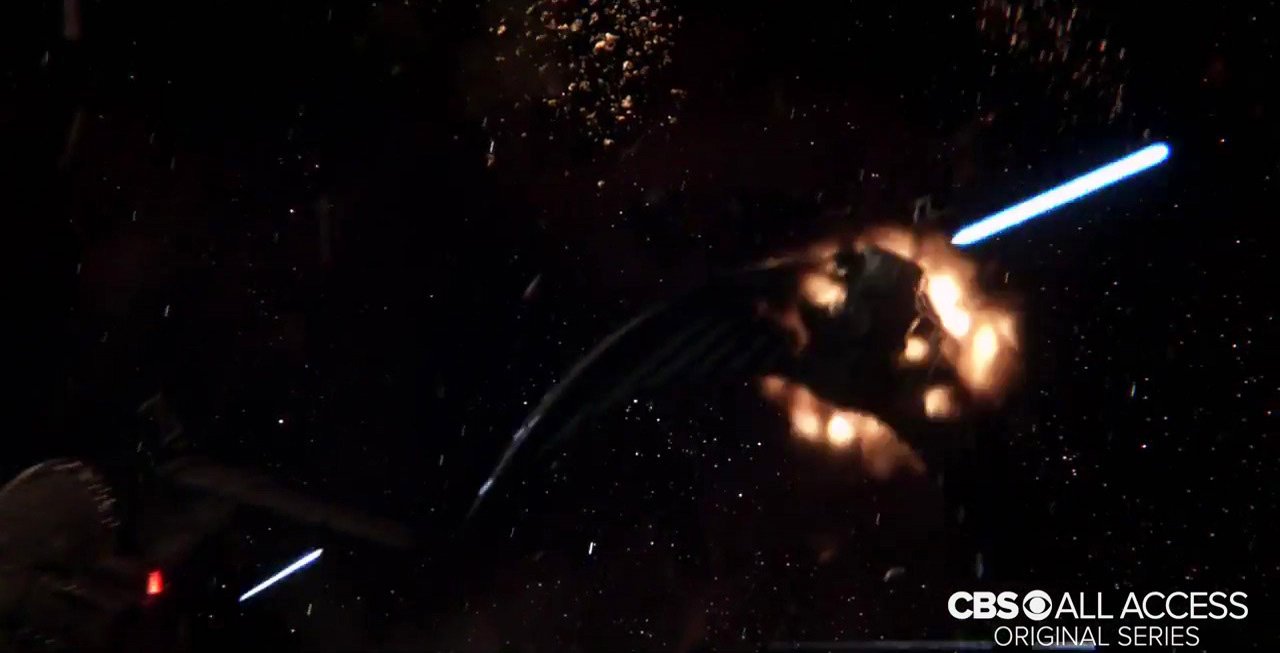
The Federation-Klingon War of 2256 was started by the science vessel U.S.S. Shenzhou, NCC-1227. The Executive Officer, Michael Burnham, disobeyed her commanding officer, Captain Georgiou, and the resulting actions triggered a confrontation with over half a dozen Klingon warships. Overwhelmed, the Shenzhou was abandoned, leaving behind the legacy of a war that could cost countless lives and cast a shadow over billions more.
With the death of T'kuvma the Unforgettable by Commander Michael Burnham, there was a power vacuum that needed to be filled. The void was soon filled by General Kol, leader of the House of Kor and the Alpha Klingon on the High Council. Kol saw the strategic value of the cloaking technology that House T'kuvma possessed. Kol returned to the sarcophagus ship six months after it was crippled by the Shenzhou. Kol saw an easy opportunity and fed the starving survivors, buying the loyalty of House T'kuvma and obtaining the cloaking technology he sought. Kol wasted no time in using the technology to reward the loyalty of Houes tat swore allegience to his own. Houses such as D'ghor and Mo'kai soon swore fielty in exchange for the technology. By the end of 2256, the tide was turning in the war in favour of the Klingons and House Kor.
Kol made no secret that he was not T'kuvma; he did not seek to unify the Klingon Empire, he only sought Klingon supremacy under his rule. Many of House T'kuvma were executed by House Kol as he worked to get his message across and drown that of T'kuvma.

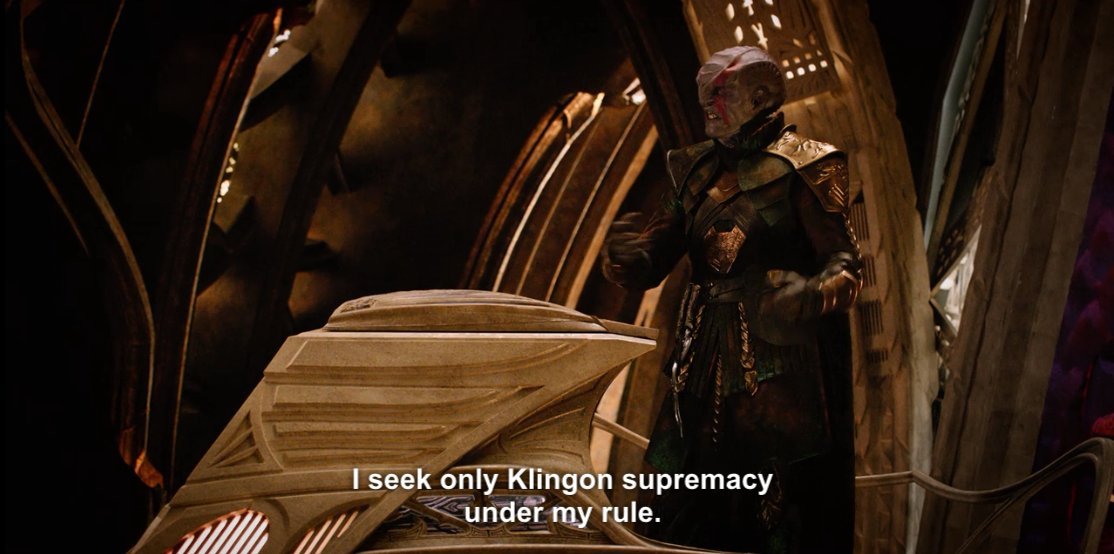
Kol eventually met his fate when he was summoned by a signal from the planet Pahvo. Kol took the Ship of the Dead to Pahvo and confronted the U.S.S. Discovery. Discovery used her secret drive system to encircle the Ship of the Dead. Unbeknown to Kol, two Starfleet spies were on the ship and set sensors to scan the cloaking frequency. The Discovery was then able to beam their spes bacl and recover Admiral Cornwell, kept prisoner on the ship. The assassin who killed T'kuvma, Michael Burnham, challenged Kol to a Mek'leth battle, opting to beam herself off the ship before she could be defeated. The Ship of the Dead was then torpedoed to destruction by the Discovery, sending Kol and his crew to Sto-Vo-Kor. This now left a power-vacuum in the Empire...
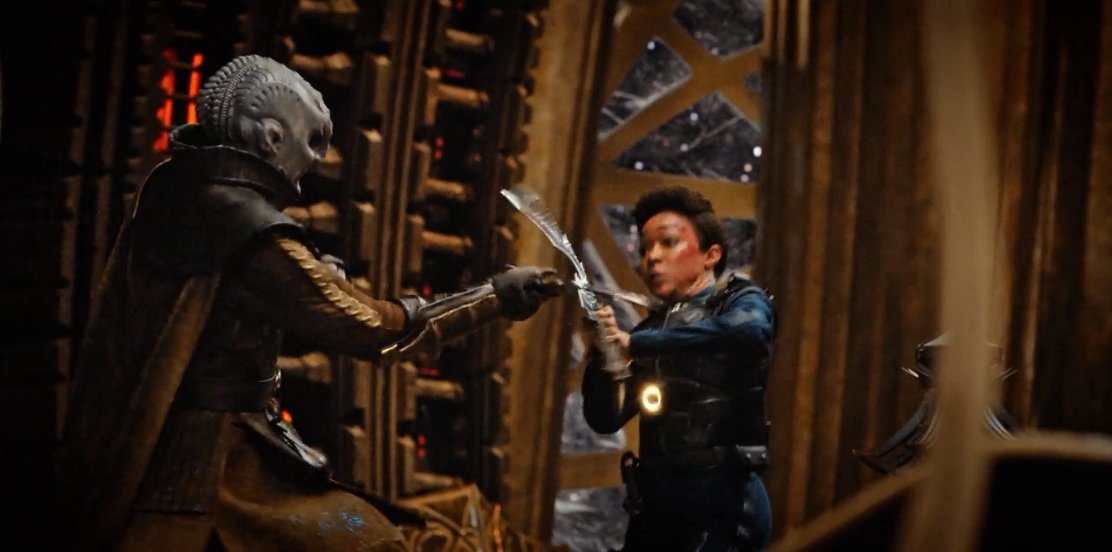
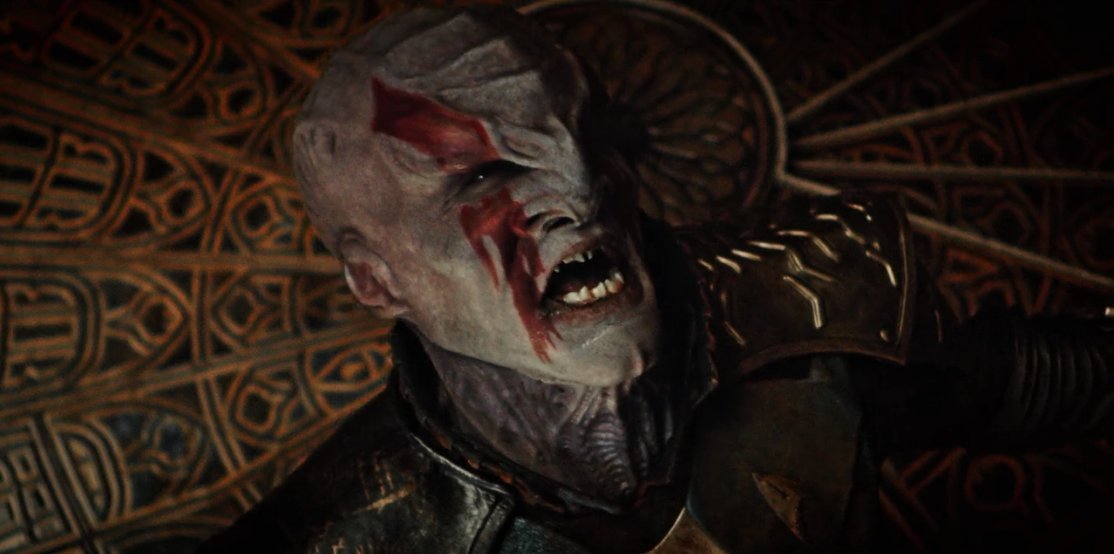
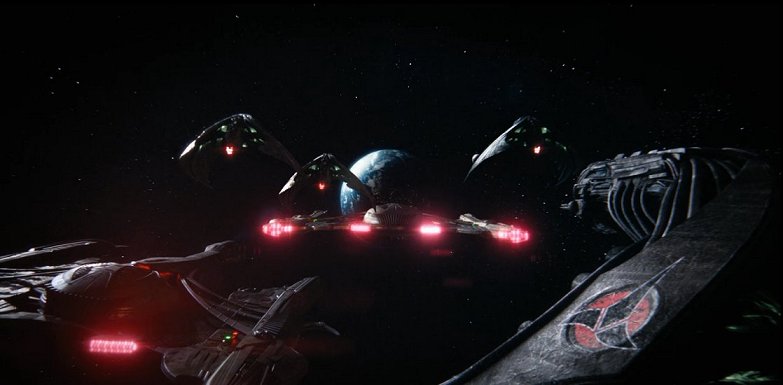
After the death of Kol, the Houses all fought to overthrow the Federation. Each House operated independently, using every means at their creativity to destroy Starfleet and the Federation worlds and colonies. Starbases 12, 19 and 22 were destroyed by Klingon military tactics. A third of the Starfleet was destroyed and the Klingon battlefleets had conquered a fifth of the Federation and were converging on the core worlds such as Earth. Research outposts on Iridin, Nivalla and Septra were wiped out. The anti-cloaking algorhythm was delivered by the Discovery but was too late to stop the assault. The Discovery crew went to Qo'noS and L'rell took over as leader of the Klingon Empire by placing a Hydro Bomb in the volcanic cave system that permeates the interior of Qo'noS. L'rell ordered the Klingon Houses to withdraw back to Klingon space. The war was over.
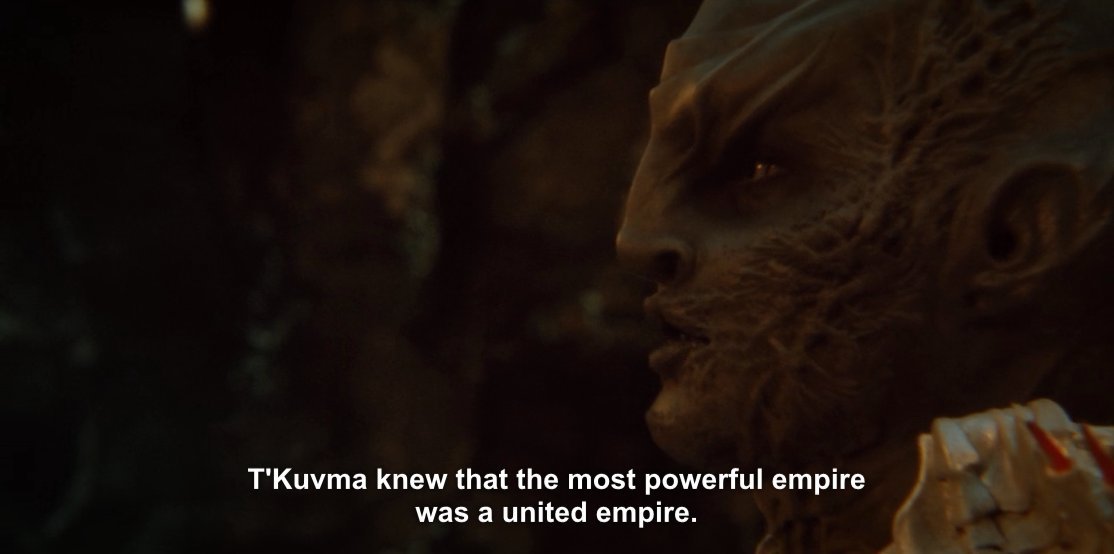
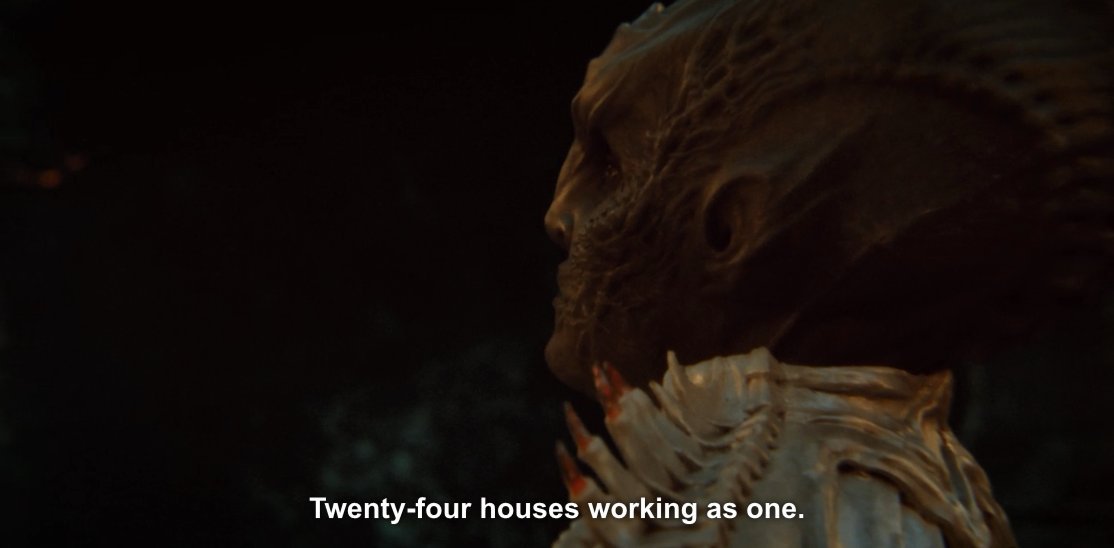
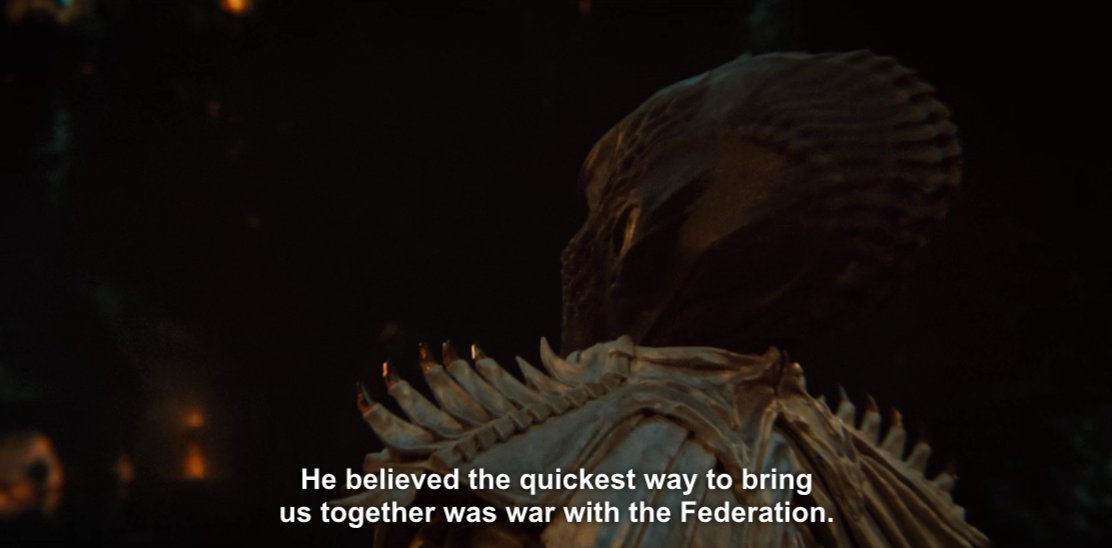
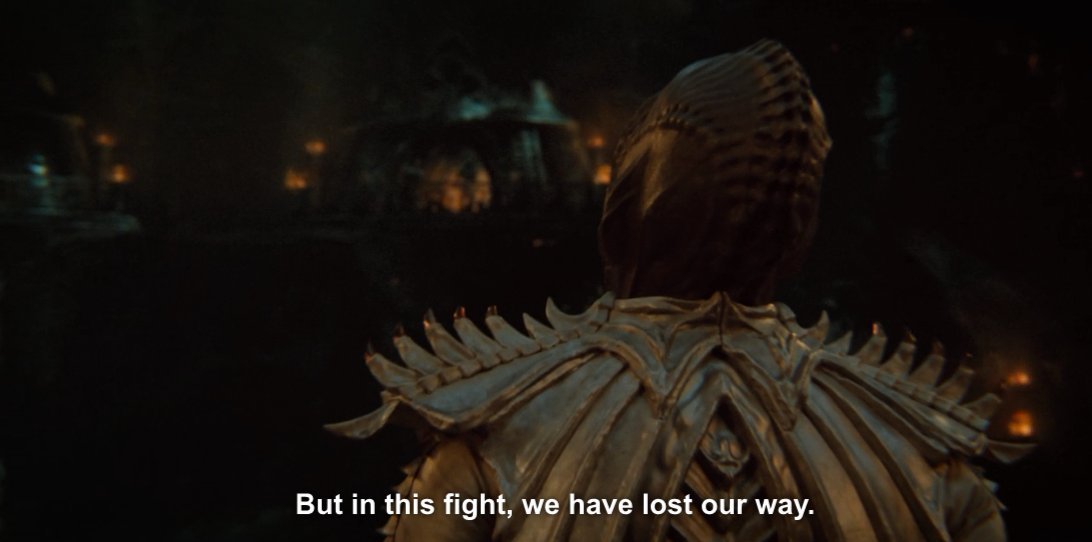
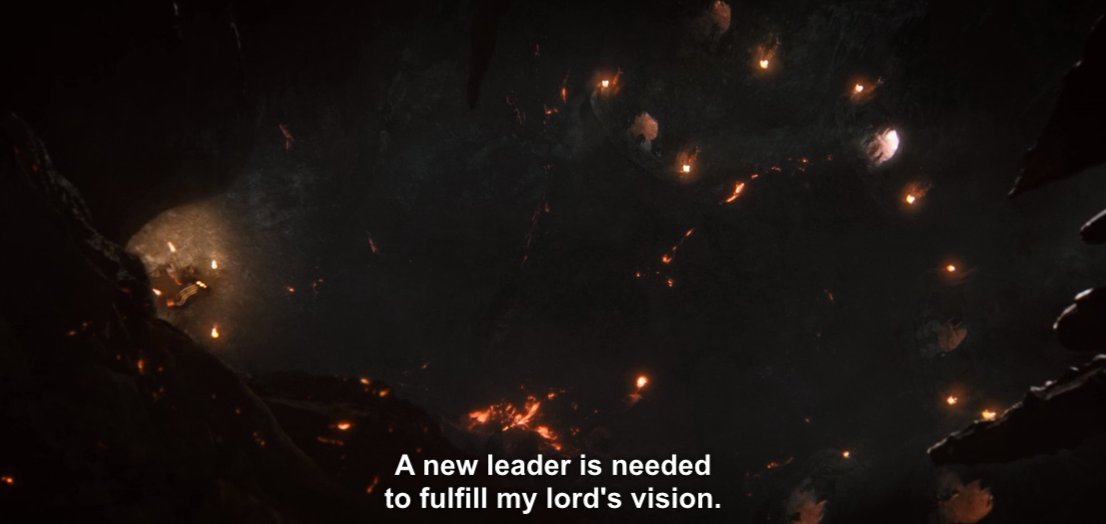
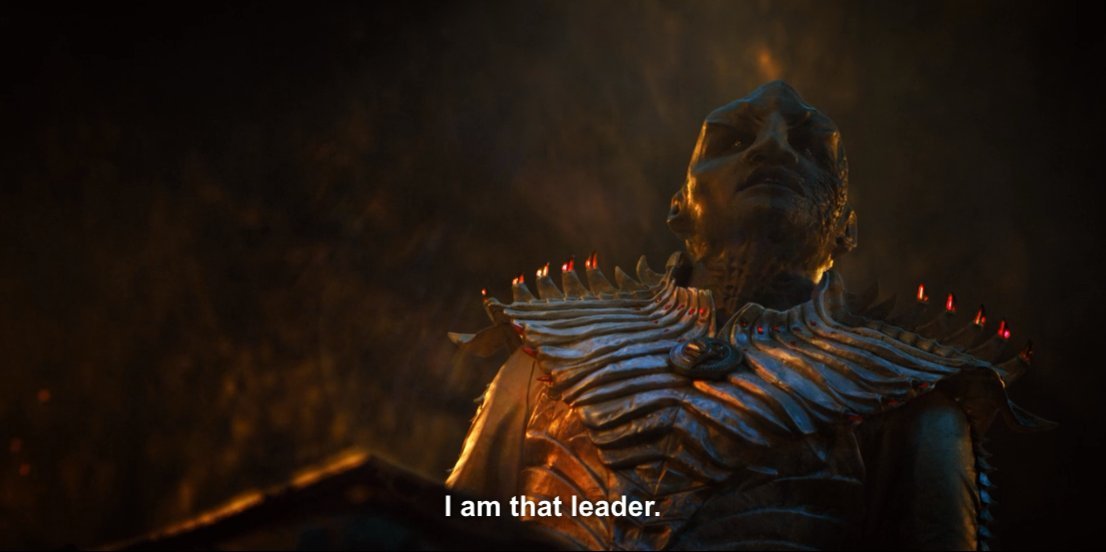
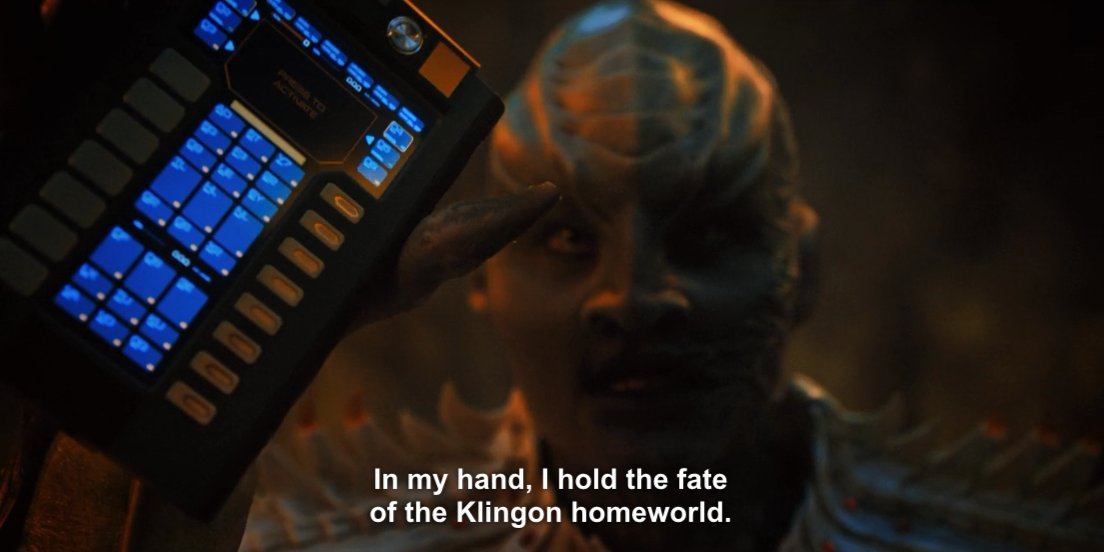
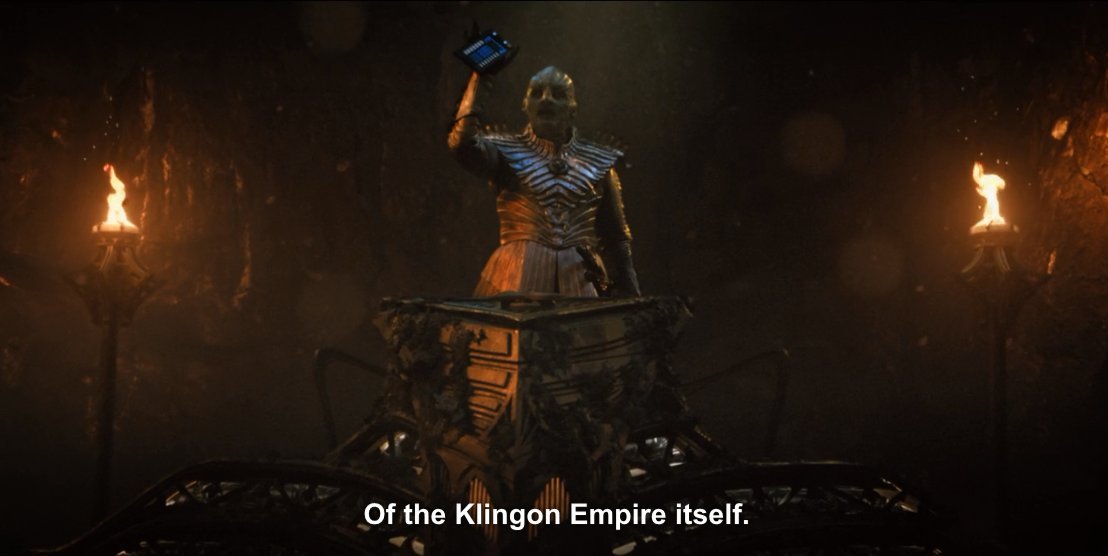

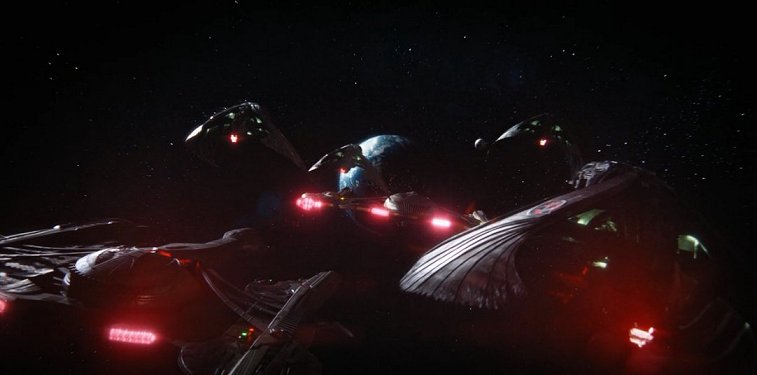
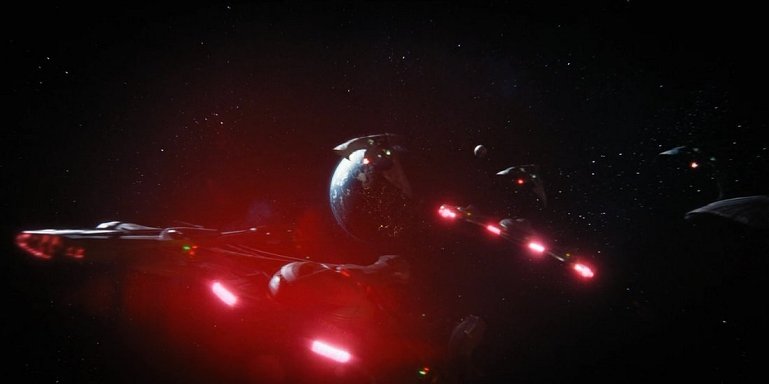
Author's notes:
This information comes from the first two trailers for Star Trek: Discovery. Captain Georgiou telling Burnham in the first trailer the famous line: "Starfleet does not fire first", to which Burnham replies "We have to." This may be taken out of context for a trailer, but the second trailer and interviews at SDCC suggest that Burnham is arrested, imprisoned and demoted following her actions. This implies disobeying orders and (as Captain Lorca says) helps to start the Federation-Klingon War.
ST:DSC also changes history. Kirk and the Enterprise crew 2265 - 70 never mentioned this terrible war of only a decade before. In 2000, all people would have spoken of is Desert Storm, not even WW2 from fifty years earlier. So why only mention the Romulan War of 2156? Secondly the Organians stop the conflict in the 2260s but won't stop an all-out war in 2255? The Federation class dreadnoughts would now be Admiral Alexander Marcus' Vengeance class, born out of this war. T'kuvma's actions would seem to justify the JJ-verse Admiral Marcus saying the Klingons won't come to the negotiating table. Seems he was right. Maybe the Prime version of Marcus (I can only hope we get Peter Weller back) will be also justified in being more hawkish as a result of this? I can also see why ST: Axanar was stopped; the non-canon FASA Four Year War history of 2241 - 2245 would have been confusing to viewers with this canon war of 2255. Safe to say the Four Years War is scrapped as non-canon/never happened.
In addition, the "almost seventy years of unremitting hostility" line from Spock in STVI would seem to be apocryphal and more like forty years.
"We have been waiting for someone worthy of our attention" - T'kuvma in Star Trek Discovery.
 2265 - 2270 Klingon Augments, Confrontation with the Federation and the Gonmog Sector:
2265 - 2270 Klingon Augments, Confrontation with the Federation and the Gonmog Sector:
The five years from 2265 - 2270 (Earth Calender) would be defined by the rise to power of the Augment Klingons, the use of their devious, strategic minds and the confrontation over the Gonmog Sector. The Gonmog Sector was seen as strategically important by the Klingons, evn mre so when classified technology was secured by the Federation aboard their Watchtower class Starbase 47 'Vanguard'. Lurqal of Imperial Intelligence was assigned to infiltrate the Federation Diplomatic Corps as Anna Sandesjo, part of Ambassador Jetanien's entourage. Lurqal was compromised by her romantic liaison with a Vulcan intelligence officer aboard the Vanguard station. Imperial Intelligence terminated the traitor before the Federation could use her to compromise them any further.
By 2266, Federation Ambassador Jetanien was attempting to create a 'Planet of Galactic Peace' on the remote planet of Nimbus III in the Neutral Zone. Gorkon and the High Council sent Lugok, the Klingon Ambassador on Vanguard station to Nimbus III to humour this creation. The High Council ordered the 'dregs of the Empire' to be sent to the colony to ensured it failed. Unfortunately one of the casualties of the strategy was the death of the Romulan Ambassador D'Tran, only shortly after an alliance had been signed between the two Empires. Whilst the Romulan Star Empire had given the best technology it had -cloaking technology - in exchange for the best Klingon D-7 Klolode class battlecruiser, the Empire was secretly developing the D-8 K'T'inga class battlecruiser that would incorporate the Romulan technology, along with superior ablative armour, better sensors, photon torpedoes and disruptors.The cloaking technology had been tested on Bird of Prey vessels such as the vaQjoH. With the destruction of Starbase 47 and its secret technology, the importance of the Gonmog Sector was re-evaluated.
Stardate 3198.4 (2267) the relations with the Federation deteriorated to the extent that the Federation and Klingons finally declared war on each other. The Cold War finally went hot! The two main fleets faced off against one another over the strategically important world of Organia. The Federation did not want the Klingon Empire using Organia as a base of operations to assault Federation worlds and colonies. After the Klingons subjugated the Organians, it was later found that the Organians were post-organic entities with abilities beyond the current understanding of Federation science. These beings enforced a peace treaty on both sides and postponed the matter of honour by creating a 'neutral zone' between the two empires.
Despite the creation of this 'Neutral Zone' and a 'magic show' display from the Organians over their home world, the Klingon Empire was able to get an agent to Capella IV to negotiate for Topaline. In fact despite it was a violation of treaty, the Klingons sent a warship to Capella IV but were unsuccessful in obtaining the minerals after the appearance of Captain James T. Kirk and the Enterprise.
Author Notes: I hate god-type beings as they are lazy writing. IMHO. The Organians created the Peace Treaty and were never seen again. They never used their powers, even when the Klingons sent their ship all the way to Neural. Perhaps the Organians were bluffing in a pacifistic way? Maybe this suggests a localised range of their abilities to their home world. An imposed peace treaty doesn't work; peace is won through the wishes of the people it affects. The Organian Peace Treaty never worked and only at Khitomer did the first seeds get planted, coming to fruit after the loss of the Enterprise-C in 2344.
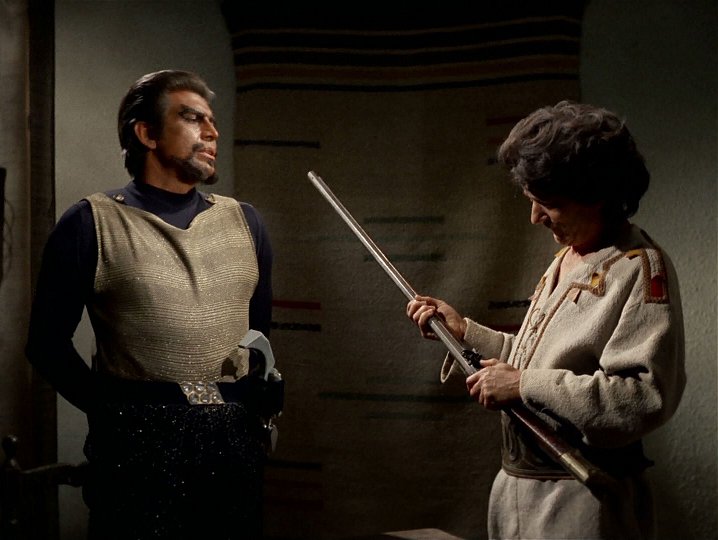 In 2268 on Stardate 4211.4, the Klingon Empire was able to send a warship far beyond the Neutral Zone border to Neural. This world was coreward of the Klingon Empire, The Romulan Star Empire and even the Ferasan Patriarchy. The warship had already forged new relations with the Ferasans and was locating new worlds that might bring allies and prosperity to the Klingon Empire. The Federation had been sending ships to Neural for years, but the Empire hed to influence the military technological development of these people to change the political allegiences into their favour. Interference from the Enterprise and Captain James T. Kirk, in violation of their own Prime Directive, similarly armed their own allies to maintain the political balance on Neural and thwart the Klingon ambitions there.
In 2268 on Stardate 4211.4, the Klingon Empire was able to send a warship far beyond the Neutral Zone border to Neural. This world was coreward of the Klingon Empire, The Romulan Star Empire and even the Ferasan Patriarchy. The warship had already forged new relations with the Ferasans and was locating new worlds that might bring allies and prosperity to the Klingon Empire. The Federation had been sending ships to Neural for years, but the Empire hed to influence the military technological development of these people to change the political allegiences into their favour. Interference from the Enterprise and Captain James T. Kirk, in violation of their own Prime Directive, similarly armed their own allies to maintain the political balance on Neural and thwart the Klingon ambitions there.
Later in 2268, on Stardate 4523.3, the Klingon Empire attempted to gain control of Sherman's Planet - claimed by both sides and the Organian Peace Treaty would grant the planet to those who could develop it the best - by placing an agent on Station K-7. The advanced D-7 battlecruiser G'roth was sent with Captain Koloth to seal the deal, again violating the Neutral Zone whilst the Federation attempted to complete their wall of Epsilon series monitoring stations. The grain stored at the station was poisoned by the Klingons. Fortunately for the Federation, an outbreak of Tribbles on K-7 foiled the gain poisoning and the Klingon spy. The Klingons were forced to cede all claims for Sherman's Planet to the Federation.
In 2268 over planet Beta XII-A, James T. Kirk and the Enterprise encountered the Klingon warship commanded by Kang. The situation was later found to be engineered by an organism that fed on the anger between the two species. Kang and Kirk worked together to defeat the organism. Kirk returned Kang to the Empire unharmed as his guest. During the encounter, Kang does mention the Klingons have honoured a peace treaty with the Federation for three years, although Hawkins would note that the Klingons' interpretation of honouring the treaty does not extend to 'flexing' or indeed violating the terms.
Author's Note: Kang's line about honouring the treaty was a reflection of this being the third season of the Original Series and Errand of Mercy was in season 1, however the chronology makes the events actually barely a year apart. And as for honouring the Treaty by driving your ships through/around the Neutral Zone more than once...
Later in 2268, on Stardate 4372.5 the Klingons sent a D-7 warship to the Tellun star system to foil a mission by Captain James T. Kirk and the Enterprise to take the Dolman of Elas for a secret peace treaty. Alarmed by the Federation acting on their border, the Klingons sent the D-7, newly fitted with cloaking technology, to maintain the balance of power along the Neutral Zone and destroy the Enterprise if necessary. In the event, the Enterprise was able to drive off the D-7 battlecruiser without destroying her.
The decade ended with the development of the D-10 Riskadh class and other new warships. The alliance with the Romulans ended along with its usefulness. These 'allies' could not be trusted and would have stabbed the Empire in the back.
The Treaty of Organia and the Klingon Neutral Zone 2267 - 2293:

 The advent of the neutralising of all Klingon and Starfleet tactical vessels by the Organians in 2267 led the Federation and Klingon Empire to adopt their own treaty to cool off hostilities. The Treaty of Organia was the first agreement to be signed on Nimbus III, which itself was created to avoid such hostilities again in the Beta Quadrant. The Neutral Zone was proposed by the United Federation of Planets as this tactic had shown itself to be effective in diffusing hostilities with the Romulan Star Empire.
The advent of the neutralising of all Klingon and Starfleet tactical vessels by the Organians in 2267 led the Federation and Klingon Empire to adopt their own treaty to cool off hostilities. The Treaty of Organia was the first agreement to be signed on Nimbus III, which itself was created to avoid such hostilities again in the Beta Quadrant. The Neutral Zone was proposed by the United Federation of Planets as this tactic had shown itself to be effective in diffusing hostilities with the Romulan Star Empire.
Along the Federation side of the disputed border region (which covers just over 10 sectors of common border with the Klingon Empire), Starfleet was tasked with constructing 22 monitoring stations along this frontier to listen and watch everything that passed near or through the Neutral Zone. Eleven Delta stations along the rimward section of the disputed border towards Gorn space and eleven Epsilon stations towards the coreward end and along to the Borderland triangle of space and the joint with the Romulan Neutral Zone.
Author Notes: The Neutral Zone was not a hard border as such. As discussed with Andrew Brown, this treaty would have been something the Federation and Klingon diplomats created after the Organians paralysed every Federation and Klingon warship 'wherever they were' during the Errand of Mercy episode. For the Klingons, as Andy pointed out, this would have disabled Klingon warships on the Gorn and Romulan sectors as well - something the Empire could not afford at all.
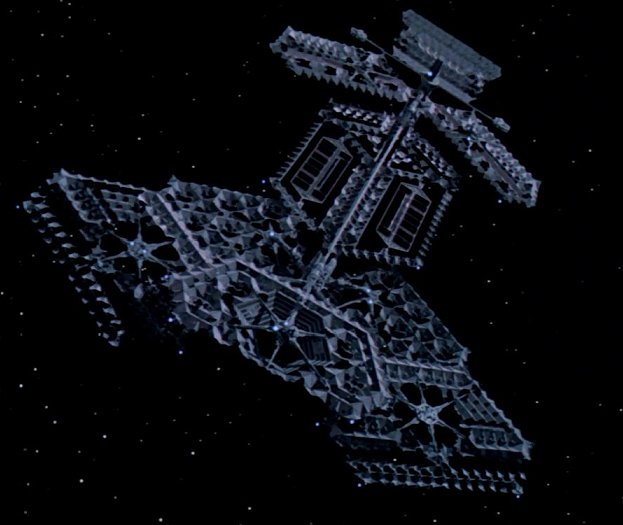 The Delta and Epsilon stations were designed and constructed within two years, using the already-advanced designs to upgrade the Romulan Neutral Zone monitoring stations in light of the Romulan attacks of stardate 1709.1 in Earth calender year 2266. The facilities were large arrays of sensors and listening equipment designed to detect all starships along the frontier, whether cloaked or not, and report their positions back to the chain of Starbases, primarily Starbases 6, 12, 15, 22, 24 and 36. This would then be forwarded on to Starfleet Headquarters.
The Delta and Epsilon stations were designed and constructed within two years, using the already-advanced designs to upgrade the Romulan Neutral Zone monitoring stations in light of the Romulan attacks of stardate 1709.1 in Earth calender year 2266. The facilities were large arrays of sensors and listening equipment designed to detect all starships along the frontier, whether cloaked or not, and report their positions back to the chain of Starbases, primarily Starbases 6, 12, 15, 22, 24 and 36. This would then be forwarded on to Starfleet Headquarters.
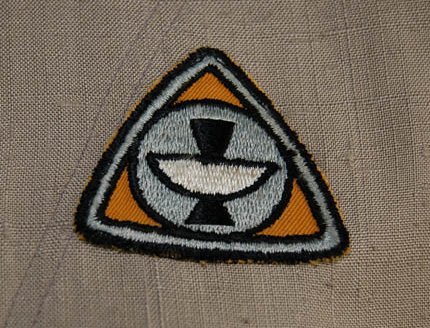 These new monitoring stations were commanded by a Starfleet officer of rank Commander or Captain. The stations themselves had only defensive deflectors and shields. The loss of Epsilon IX in 2273 highlighted the vulnerability of the stations, but the political sensitivity of their proximity to the border meant they had to remain unarmed as scientific monitoring stations only. Epsilon IX was replaced within 18 months of its loss, to ensure the rising tensions with the Klingon Empire were addressed and their warships followed.
These new monitoring stations were commanded by a Starfleet officer of rank Commander or Captain. The stations themselves had only defensive deflectors and shields. The loss of Epsilon IX in 2273 highlighted the vulnerability of the stations, but the political sensitivity of their proximity to the border meant they had to remain unarmed as scientific monitoring stations only. Epsilon IX was replaced within 18 months of its loss, to ensure the rising tensions with the Klingon Empire were addressed and their warships followed.
The Delta and Epsilon stations monitored the Koro class D-7 warships in their varying material state, along with the advent of the upgrade that became the D-8 K'T'inga class. Typically the stations would record their energy signatures, being able to identify not only the class of a ship but individual members of that class. Even defects could be detected and logged to add to the profile of the ship and their commander.

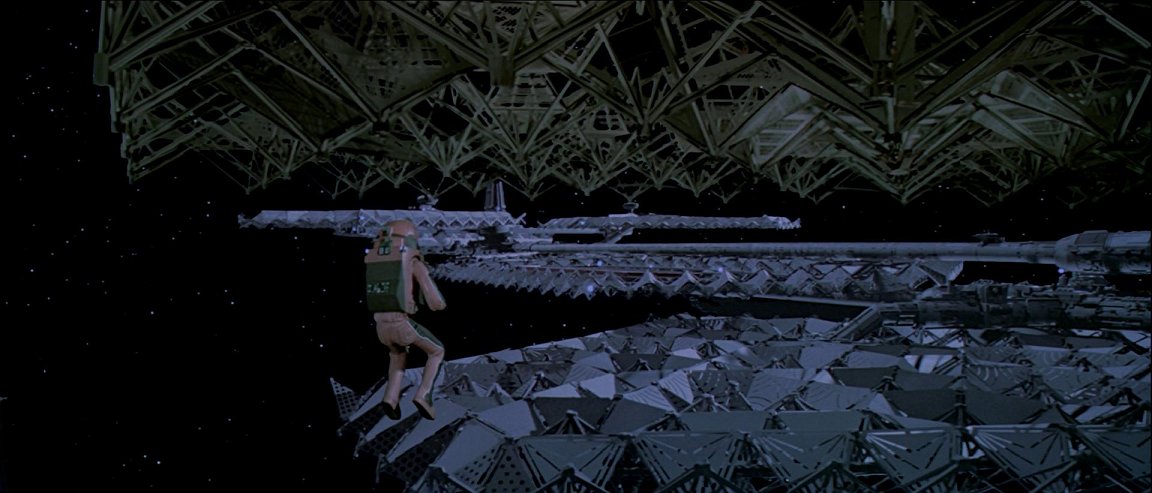
Author's notes: I wanted Nathaniel Hawkins to have a period of his early career studying the Klingons more closely. For a young junior officer, a frontier communications relay and monitoring station is an opportunity for commanding a larger team than would probably be the case on a larger starship. A rotational assignment with the lead ship of the Endurance class allows Hawkins to monitor and witness the Klingons in greater detail than other assignments would allow. His experience on the Argus prepare him for this rotational assignment. Unlike the ill-fated Epsilon IX station, Hawkins serves on Monitoring station Delta II towards the Rimward end of the former Neutral Zone.
Ensign Hawkins' mixed team of enlisted xenocultural experts, linguists, cultural experts and intelligence specialists study the activities of not only the military and their assets but also civilian activities. By comparing the information they glean from their period on the Endurance (NCC-1862) with the information obtained from Delta II, they can study the complex activities and the relationships between Houses, other Houses, subject races and neighbouring nations. Starfleet utilised its unique strengths to study and learn from the Klingons, gathering information on their hierarchy and the relationships between the military leadership and civilian Klingons.

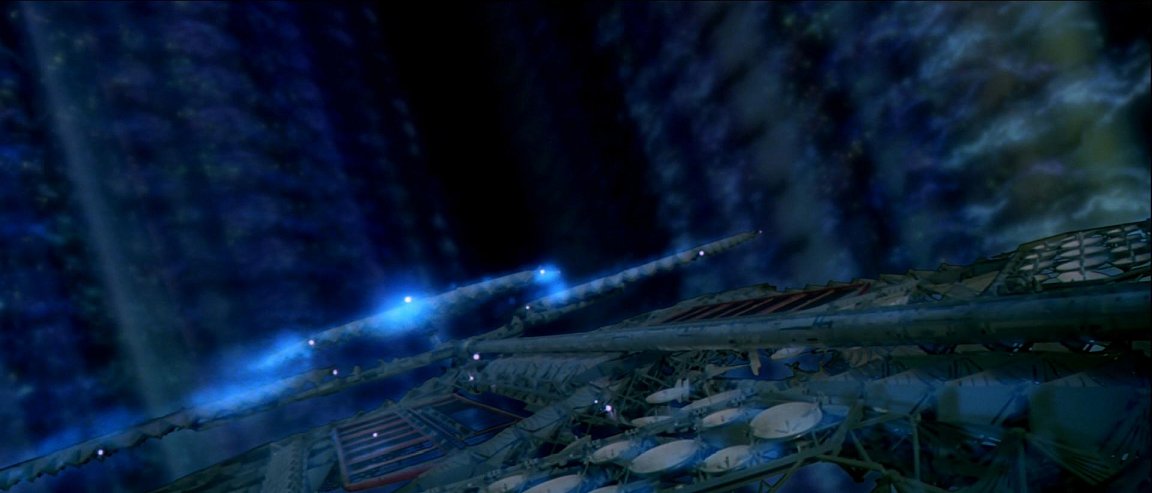
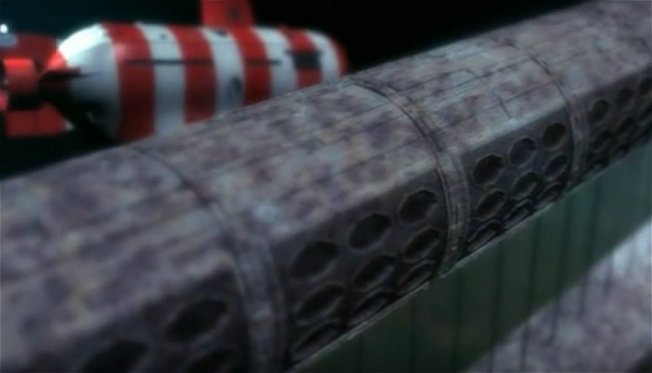 We Klingons responded to the Delta and Epsilon stations by constructing our own intelligence gathering eave-dropping stations. These are larger, clumsier affairs than the Federation ones but are no less sensitive to detecting the presence and type of Starfleet starships. We have the added benefit that the Federation don't believe in using cloaking technology and their starships were readily visible on sensors. The crude Klingon technology needed constant maintainence and did not always operate well, but the Morska series was operational around the turn of the 2270s.
We Klingons responded to the Delta and Epsilon stations by constructing our own intelligence gathering eave-dropping stations. These are larger, clumsier affairs than the Federation ones but are no less sensitive to detecting the presence and type of Starfleet starships. We have the added benefit that the Federation don't believe in using cloaking technology and their starships were readily visible on sensors. The crude Klingon technology needed constant maintainence and did not always operate well, but the Morska series was operational around the turn of the 2270s.
Our technology may have been less sophisticated than that which the Vulcans, Deltans and Tellarites had helped to devise for the Federation, but we achieved the same coverage of the Federation Neutral Zone border with far less monitoring stations than they needed. Our technology was cruder, yes, but more resilient to an assault; more capable to function despite receiving heavy damage. The Morska stations were devised to require minimal personnel. Klingon scientists are a rarity, but our Morska stations wwere there to monitor the Starfleet operations and training exercises.
Author notes: The Soviets built their own version of the SOSUS network near Kamchatka and could detect and identify United States and British submarines. The Priz 28 was nearly lost in August 2005 whilst maintaining this old Soviet facility after getting caught in fishing nets. Thankfully the Royal Navy was able to get a team out there and rescue them.
The Soviets had another secret facility near Pripyat and the Chernobyl nuclear power station. This was Duga-3, or the Soviet Woodpecker. This facility was marked as a children's summer camp and produced powerful radio waves detected by HAM radio listeners in 1976. This was an over-the-horizon radar with over 1500 personnel manning the 300 metre high structure.
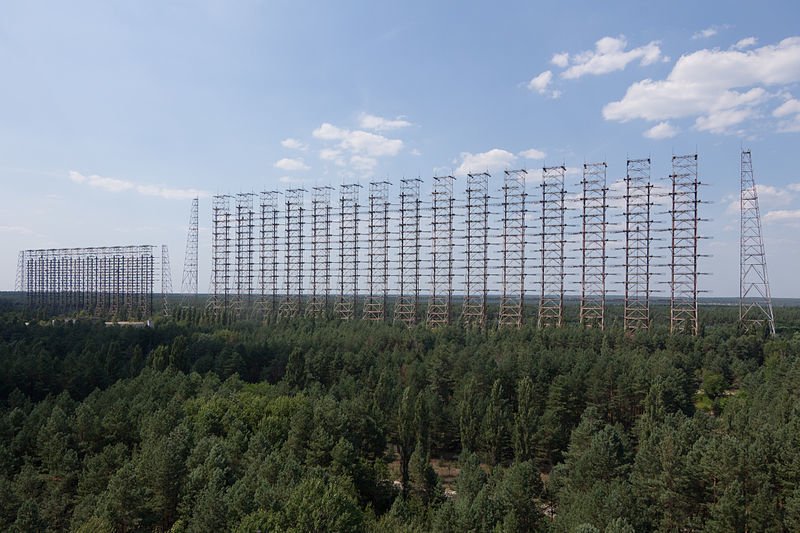 The facility had murals with Soviet space scenes, Lenin and other propaganda images. After the Chernobyl disaster, the facility had to be evacuated and by 1989 the site went silent. This facility was designed to detect missile attacks, much like the RAF Fylingdales site in North Yorkshire, UK. NATO gave Duga-3 the nickname Steel Yard.
The facility had murals with Soviet space scenes, Lenin and other propaganda images. After the Chernobyl disaster, the facility had to be evacuated and by 1989 the site went silent. This facility was designed to detect missile attacks, much like the RAF Fylingdales site in North Yorkshire, UK. NATO gave Duga-3 the nickname Steel Yard.
With increasing hostile activity by the Klingons from the early part of the 2270s onwards, Starfleet started to adopt a more assertive defensive stance. The Neutral Zone was heightenend from a nebulous border region into a definitive no-warship zone. Any warship entering the Neutral Zone would be a violation of Treaty and would be then repelled by force if necessary. The security presence on the Zone frontier was increased from the Soyuz class reconnaissance missions to add Saladin and later Akula class destroyers and eventually Miranda class light cruisers such as Saratoga in 2286.
Author's notes: I had to basically explain why a Treaty established in 2267 has D-7 battlecruisers crossing into Federation space and using Federation frontier facilities in TOS episodes like Trouble with Tribbles and yet by TMP and TWOK the Neutral Zone was treated more like the Romulan one where crossing the border was an act of war. It has been suggested that the change from the TMP onesies to the Wrath of Khan more militaristic approach was due to the increased hostilities with the Klingons. If the Organians were going to keep doing nothing, the Klingons would keep on escalating to see what they could get away with. By ST: III Kruge crossed the Federation Neutral Zone in the Southern region where the zone runs out after Delta XI station towards Gorn space. The ill-fated Saratoga (light cruiser) patrolled the Neutral Zone in ST: IV where as in TMP we had the Columbia and Revere (destroyer and scout). I also presume the dreadnought Entente was looking out for the Epsilon stations too, but too late and helpless to the power of V'ger.
The Khitomer Accords of 2293 looked to dismantle the space stations and star bases along the Neutral Zone. This was an optomistic suggestion by Captain Spock to warm up relations and end the Klingon Cold War. As with an earlier Cold War in Earth's history, this optomism was premature and with the end of the honeymoon in 2294 after the Terajuni Incident, the Federation President was less hasty in dismantling the Epsilon stations. The suggestion was they were re-tasked as communications stations ony, whilst monitoring Orion Pirates and other smugglers along the borders. Similarly the Klingons never dismantled their Morska stations, however the continued lack of maintainence means they are only 65% operational at best by Starfleet Intelligence calculations.
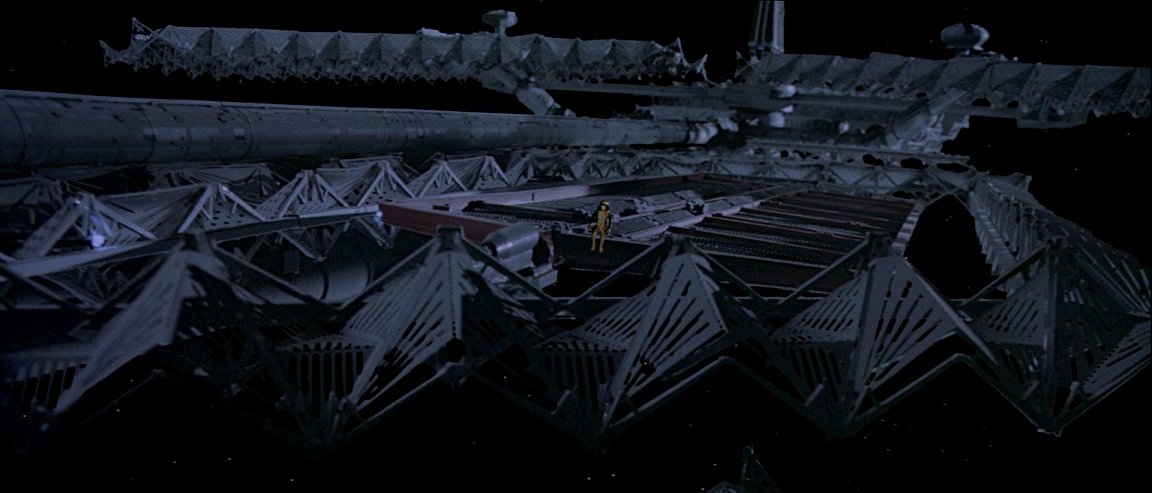
Author notes: Star Trek: VI had Spock mention "the dismantling of space stations and star bases along the Neutral Zone" but by TNG their was still a reference to Epsilon IX as an active station. With the Terajuni Incident of 2294, I don't think Starfleet would be too eager to shut down the Delta and Epsilon stations. Equally I cannot see the Klingons wanting to take their Morska stations down - they probably cannot be bothered either. The US SOSUS warning systems and Russian counterpart still exist 20 years after the Cold War ended. The old Fylingdales 'golf ball' radars designed to detect incoming ICBMs were just upgraded to a single smaller pyramid that does the same job. Whilst Spock was optomistic on the legacy of the Cold War being dismantled and erased, reality is this does not happen.
As seen below, in Star Trek Into Darkness Admiral Marcus' powerwall had the Klingon Neutral Zone displaed on it. The Klingons appear to have a line of monitoring stations or space stations on their side, shadowing the Federation stations.

2271 - 2289 Kesh, the Klingon Empire and the Federation - escalation of the Cold War:
 The new decade brought with it a new confidence in the Klingon Empire. The new K'T'inga class battlecruiser was easily a match for any Federation warship, despite the loss of the Amar, Arakkab and Eelst to an alien probe. With the discovery of the cure to the Augment Virus, a new Age of Honour was ascending in the Empire. The Empire would expand through glorious battle and not deceit and subterfuge. The D-10 Riskadh had entered service in numbers and the fleets were looking in the best shape they had in decades. Development was underway for a battleship designated B-10; merely the mention of this dreadnought had the Federation cowering in their own shipyards.
The new decade brought with it a new confidence in the Klingon Empire. The new K'T'inga class battlecruiser was easily a match for any Federation warship, despite the loss of the Amar, Arakkab and Eelst to an alien probe. With the discovery of the cure to the Augment Virus, a new Age of Honour was ascending in the Empire. The Empire would expand through glorious battle and not deceit and subterfuge. The D-10 Riskadh had entered service in numbers and the fleets were looking in the best shape they had in decades. Development was underway for a battleship designated B-10; merely the mention of this dreadnought had the Federation cowering in their own shipyards.
The successful capture of the Federation scout Gagarin allowed a glimpse of the latest Federation technology. Questioning of their crew would provide further insights into the abilities and dispositions of their warships. The B-10 was launched in 2280 and would evolve into the successful B-11 Accuser class; as predicted, this brought new victories to the Empire in a renewed assault on the Syr'Ypt'Q. This new dreadnought supplemented the existing L-13 design, bringing strength and security to the Empire. An assault was launched on the Federation in 2283, across the accursed 'Neutral Zone'. This successful campaign cost thousands of Federation lives and many of their warships, providing the basis for future campaigns against the Federation and their democratic ways.
The Federation cruiser Hood captured one of our warships and disgraced them in 2285. This affront was avenged a short time later when the Hood was destroyed by other warships from the House, restoring their honour. As the list of assaults on the Federation grew, so the High Council realised that the Organians had not interfered in our battles; the glowing ones had fled in fear of the true warriors of the Beta Quadrant. This came just as the latest product of our arms race with the Federation came to fruition: the L-24 Komo Val class pocket battleship. This technological marvel of a warship was designed to counter the Federation new Excelsior class battleship and their Ascension and Federation class dreadnoughts. The L-24 production was stalled by the need for rare minerals in her construction, but the other scouts and warships of the Empire would find these in our quest across the Quadrant. By 2286 it was proved that the Organians had gone, our spies having read the reports from the new Federation cruiser Enterprise (which replaced the one Commander Kruge had destroyed). Nothing now stood in the way of the Empire unleashing its might on our neighbours, which we then did.
The later policies of Kesh had engaged the Federation with peace talks involving Councillor Gorkon, compromising the Empire with more concessions to their subject races and co-operation with the Federation and Romulans in the Tabula Rasa Incident. Kalnor of the House of g'Iogh openly criticised the latter policies of Kesh, stating that Klingon pride had been compromised by siding with both the Federation and the Romulans, races that both lacked the honour of the Klingon people. Kalnor wanted the Klingons to recapture their destiny. The Tabula Rasa campaign had ended in the loss of the mineral rich systems, insisted upon by the scientific reasoning of the Federation. The Klingon people had been denied a worthy adversary and a war that Kalnor's propaganda insisted they could have won.
Kesh looked to new 'muscle warships' to overwhelm the enemies of the Empire. Whilst the L-24 Komo Val offered a technical solution, he wanted a super battleship and large contingency of capital ships. Production of the B-11 Accuser class and B-12 Sword of Kahless battleship is increased. The B-14 WoQ'a class is seen as the ultimate evolution of the battleship and the first hull was laid down.
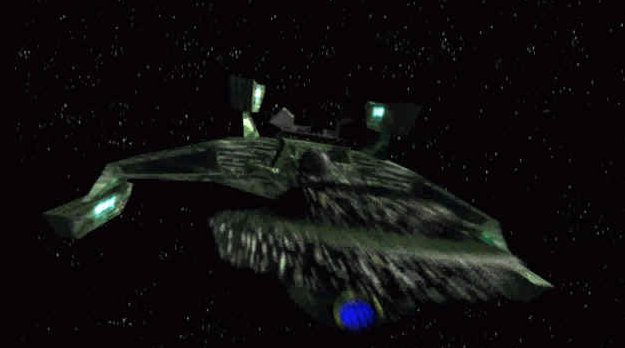 2289 - 2291 Tabula Rasa Campaign:
2289 - 2291 Tabula Rasa Campaign:
The detonation of the Shiva Device unlocked the subspace pocket in which the Tabula Rasa systems were imprisoned by the Hubrin. The Klingons, alerted by early system scans and the mineral riches therein, deployed several fleets to the systems. Chancellor Kesh ordered that the systems be taken for the greater good of the Klingon Empire and claimed in the names of the brave crew of Captain Dal'ke's D-7 battlecruiser that had 'discovered' them (although technically the ship was destroyed in the initial explosion; a minor technicality to the Klingons). Kesh correctly identified the systems as a cure for the resource desert of Qo'noS.
Theatre Operations Controller General Chang advised a decisive manoevre of two or three fleets to secure the sector against both Federation and Romulan interference. An armada of over two thousand warships and auxiliaries was assembled at the nearby world of and then directed to the Tabula Rasa sector and the planets Taal and Ixion. A command base was set up on Taal whilst an anti-proton source was investigated. A Hubrin fortress was discovered. The Taubat temple was captured after the Taubat were destroyed. On Ixion the Klingons found more co-operative Taubat and eliminated the less co-operative ones.
Author's Notes: This is the first and only instance of Taubat civil war. The co-operative Taubat were DNA-programmed to earn the trust of the Klingons to get the Metar released. Their plan worked.
The Klingon fleets were slowly securing their systems. Everything up to the campaign at Mazikaan went straight foward until contact with Hubrin warriors on Orgolio. The Hubrin showed themselves to be vastly superior. At AP173B the 'mask slipped' and the Metar were released. The Klingons took heavy casualties.
Freighters took early mineral gains back to the Empire. Compared with the low-quality Q'alon crystals of the Empire, the dilithium from Tabula Rasa was of the highest purity and quality. This fuelled much of the L-24 Komo Val and and other high-purity dilithium-preferring technology for a decade. The crude strip-mining technology got quick returns in a military war zone over the four years of the campaign.
By Pellion Blue (Stardate 9224) the Klingons knew that negotiation with the Federation was the only option. Klingon General Gorkon knew the heavy losses since AP173B could not be sustained. Kesh disagreed and insisted that the Klingon Navy was designed to fight the Federation, the Metar should pose no more serious a threat. More warships were drawn from the other fleets but the withdrawal of many more forces from elsewhere would compromise the Syr'Ypt'Q campaign and internal security.
F'Thorca is where the alien containment device was researched and deployed. The device went to the Metar central base where the Tabula Rasa sector was returned into its dimensional prison. Some Klingon subject races never escaped from the sector in time and were entombed with the Metar. The disagreement between B'rak and Kesh about co-operating with the Federation culminated in a challenge for power by Gorkon and the death of Kesh. This would leave a power vacuum back he which was soon filled by Kalnor.
Author's Notes:
The economic model of the Klingon Empire was geared for the warrior class to lead the Empire to glory and honour, expanding the Empire - and the fortunes of their Houses - through conflict. Meanwhile the conquered and assimilated races would feed the military machine and build their weapons and property. Unfortunately for the Empire, this model did not scale up to the gigantuan size the Empire achieved in the 2260s. Kesh did not engage with the Federation and planned to build his way out of decline.

 2290 - 2293 Klingon Civil War, Praxis and the rise of Gorkon:
2290 - 2293 Klingon Civil War, Praxis and the rise of Gorkon:
Kalnor aimed to re-organise the High Council and work closer with allies. It was indecisive at this crossroads for the Klingons. At every stage where the Klingons could have gained the military advantage: at Sherman's Planet, Organia and Tabula Rasa, it was the Federation that had won its way. The House of g'Iogh aspired to victory at any cost, as they had done during the prime of the Empire twenty-five years beforehand. What followed was a year of civil war, General Chang challenged and killed Kalnor but his half-brother Melkor tried to flank the manoevre by proclaiming himself Emperor.
This declaration was a severe test for Chancellor Gorkon; honour dictated that he face down this direct challenge to his authority, but he also had to secure the fleet and facilities to win this civil war. Gorkon knew he had to secure the assault ships, capital ships and carriers all based at the traditional fortress of Ty'Gokor. Gorkon chose his closest aide, General Chang, to deal with Melkor and bleed his forces dry for Gorkon to finish him off. The Chancellor knew that inevitably the btte would come to him at Qo'noS; the 'Emperor' would want to crown himself in the seat of power and Gorkon would be waiting for him.
General Chang suspected the House of g'Iogh of further treachery after Kalnor made a bid for power. He sent a Bird of Prey to spy on Melkor and listen in to his meetings on the Accuser class MupwI'. On the occasion of the second meeting, near Krios, the eavesdropping was detected and Melkor's plan was forced into action. Torlek, the commander of the Bird of Prey was assigned to escort valuble cargo for General Chang; the convoy assembled from elements in the Chaj Daq and Gorth'nar systems and was attacked in the Qitlh VaS system. The next stage of the civil war was the attack on the Kat'va repair facility in the Qu'org system. Mines around the facility were ultimately used to destroy it; Suspicious class yIv, Relentless class DoyHov and K'T'inga class GhI were also destroyed in the attack. This deprived Melkor of valuable repair facilities and postponed his attack on Qo'noS.
To keep Melkor off his feet, Chang organised a raid on his convoys in the nuHod, puy Dete and Wey'ltlh systems. This further humbled Melkor's fleets and further stalled his ambitions. In the Puy Dete system the first evidence of the real support for the House of G'iogh was discovered: the RSE Swiftwind, a Romulan Gladius class warship. After the success of this mission, Chang awarded his student Torlek a Warrior's Anger class command cruiser. Thiship is sent to liberate the qvaQ base that was siezed early on in the civil war by Melkor's forces. Commander roq took a troop ship to storm the station and free the warriors there from their oppressors. Melkor temptd Chang at this encounter to join him but Chang refused. Melkor set the liberated station to destruct but not before many warriors were rescued.
 Torlek was awarded the Emperor class heavy cruiser may van Bom after Colonel Drakkor was killed. Melkor's forces regrouped after their recent clash to fight Gorkon's forces, meanwhile Chang regrouped from the Qojup system to Qayngo and Veygh systems, capturing and destroying Relentless, K'Tinga and Warrior's Anger class warships. Torlek met with Gorkon in the tlhuq'on system and acquired the use of a repair facility to aid Gorkon's cause. The next battle was a game-changer: Thok Mak led Chang's forces into the qeping, DoviD system (with its mining facilities) and the Qovon system. At Qovon the Klingon forces captured a Romulan Ambassador who revealed the price for helping Melkor: The Gates of Tal'lhnor.
Torlek was awarded the Emperor class heavy cruiser may van Bom after Colonel Drakkor was killed. Melkor's forces regrouped after their recent clash to fight Gorkon's forces, meanwhile Chang regrouped from the Qojup system to Qayngo and Veygh systems, capturing and destroying Relentless, K'Tinga and Warrior's Anger class warships. Torlek met with Gorkon in the tlhuq'on system and acquired the use of a repair facility to aid Gorkon's cause. The next battle was a game-changer: Thok Mak led Chang's forces into the qeping, DoviD system (with its mining facilities) and the Qovon system. At Qovon the Klingon forces captured a Romulan Ambassador who revealed the price for helping Melkor: The Gates of Tal'lhnor.
The task force of Chang's battlefield commander, Thok Mak, are decimated by a combined assault from Melkor's forces with Romulan assistance. In the Tal'lhnor system, K'mak destroys the Gate of Tal'lhnor with a gravimetric attenuator device, rather than let the Chacellor's forces secure the system. The exposure of Romulan involvement stops Melkor's recruitment and starts the reversal for his forces. Torlek got the Accuser class MIl'oD after their crew realised the treachery of their commander, killed him and submitted the ship to Chang. The hunt was on to bring Melkor to the High Council for trial and punishment. The Quwotlh system saw a fight between the forces of the Empire and Melkor, including his Accuser class Voyje. Chang was challenged by Melkor to a duel of Blood Peace in the Tal'lhnor Nebula; this was an ambush with Romulan forces and other Empire-allied fleets are called in to help. This is one battle involving both of the B-12 Sword of Kahless class battleships.
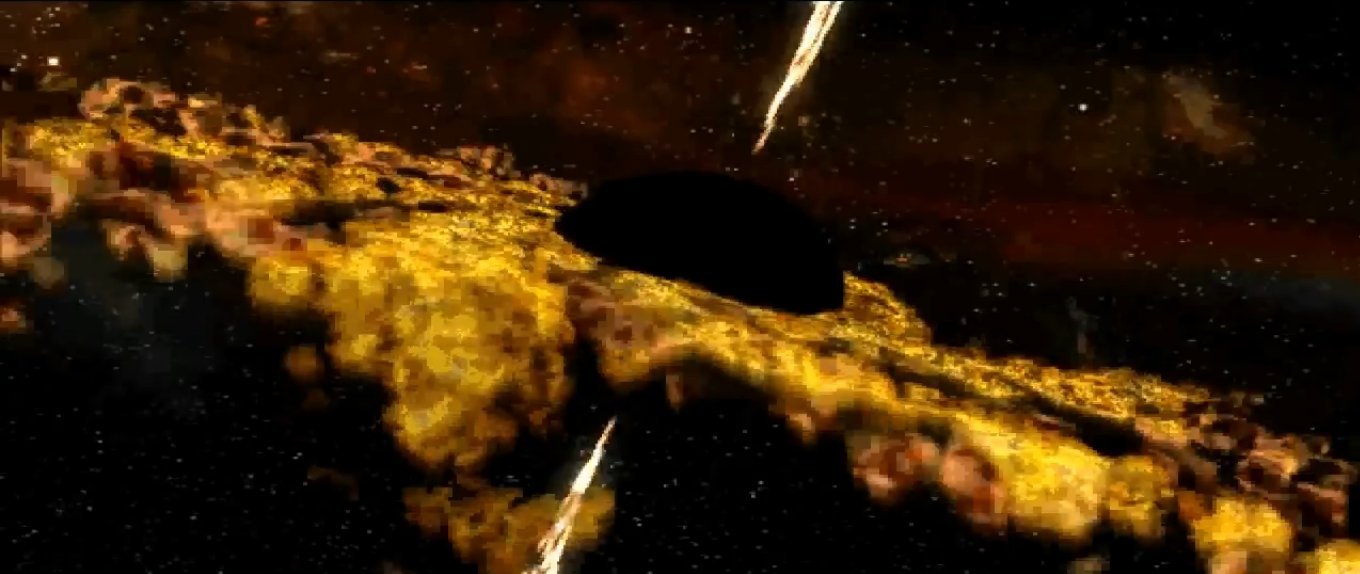
Melkor then tried to decoy Chang and his battleship into fighting the Federation, fooling him into thinking Starfleet had opened a second front. The Federation Britannia system, illegally created in neutral space, was attacked during this deception. This bought Melkor time to attack the Qo'noS system itself, hoping the odds in his favour of his B-12 against the B-11 Accuser class of Gorkon would be enough to defeat him. Gorkon had used Suspicious class science ships to jam the sensors of Melkor and conceal the true size of the forces that he had amassed at the Homeworld. Melkor arrived to find the Behmoth class carriers and other Accuser class had been moved from Ty'Gokor to Qo'noS to stand by the Chancellor. When the battle was at its height, Gorkon transferred his flag to the B-12 vessel under Chang and attacked Melkor; Chancellor Gorkon successfully defeated the second B-12 battleship and Melkor's challenged was over. The House of g'Iogh had brought Romulan forces to the home world of the Klingon people and for that they were discommendated: their lands and ships would be forfeit and they were hunted down into Romulan space until their last Warrior's Anger command cruiser was destroyed.
 The truth is that this was not the end for the House of g'Iogh; the House was too powerful, with powerful allied Houses along the Romulan border region. Whilst Melkor had been killed, the bloodline of Kalnor was continued through his young son J'bok. Their continued support was made on the basis that Melkor was half-blood to the Kalnor bloodline and his ambition had descended into madness and corruption. The House of G'Iogh saw that his bloodline was ended so to regain their honour in the eyes of their allies. In time they would fight in the invasion of the Klingon Empire by the Syr'Ypt'Q: their valour in battle would restore their name under Chancellor Kaarg. The civil war had allowed alliances to be made in deep space away from the High Council chambers: Chang owed a debt to Gorkon and this would in time lead to a change of Chancellor as the seeds of change were already sown.
The truth is that this was not the end for the House of g'Iogh; the House was too powerful, with powerful allied Houses along the Romulan border region. Whilst Melkor had been killed, the bloodline of Kalnor was continued through his young son J'bok. Their continued support was made on the basis that Melkor was half-blood to the Kalnor bloodline and his ambition had descended into madness and corruption. The House of G'Iogh saw that his bloodline was ended so to regain their honour in the eyes of their allies. In time they would fight in the invasion of the Klingon Empire by the Syr'Ypt'Q: their valour in battle would restore their name under Chancellor Kaarg. The civil war had allowed alliances to be made in deep space away from the High Council chambers: Chang owed a debt to Gorkon and this would in time lead to a change of Chancellor as the seeds of change were already sown.
The destruction in 2292 of the primary source of power for the Klingons, the Gates of Tal'lhnor, led the Klingons to seek an alternative source of primary power. Meanwhile they leaned more on the Klingon moon: Praxis. The explosion of the moon Praxis in late 2292, the the new key energy production facility of the Klingon Empire, changed the balance of power. The Klingons were unable to sustain the conflict on the four borders and the loss of ships from the Praxis explosion had diminished the fleet availability. Councillor Gorkon, a skilled tactician and former Chief of Staff, realised that the situation was unsustainable. Chancellor Kesh had been blamed by General Chang and the High Council for the overmining of Praxis.
Author Notes: Praxis is a conundrum. From what was seen in ST: VI, this was like a 100MT nuclear bomb being detonated in London and only doing the damage of a car bomb. The explosion shook the Excelsior across the Neutral Zone. The Neutral Zone is a light year across - light takes eight MINUTES to go from the Sun to Earth. A light year is what is does in a year. Qo'noS is not even next to the Neutral Zone. This explosion crossed over a half dozen light years from Praxis to shake Excelsior badly WITH SHIELDS. At POINT BLANK RANGE, Qo'noS would be planetary omelette.
I've reasoned that a fortress planet like Kronos would have the best shields in the Empire. With minutes of warning, the planet could shield itself. The immense explosion would easily overwhelm the shield and scorch the face of the planet facing Praxis. Better that than the fate of most ships and worlds in the shockwave. Praxis was a moon like ours, say roughly the size of Australia. That's one very large bomb on your doorstep.
For dramatic purposes, the explosion of Praxis must be big enough to threaten the very existence of the Klingon Empire. Damaging or even destroying Kronos is not enough. By wrecking the central infrastructure of the Empire, trashing their main ship yards and wiping out a sizeable portion of the Klingon Battle Fleet, THIS will bring he Empire to its knees - and to the negotiating table with Captain Spock. Quite simply, anything less, wouldn't have.
The spherical explosion of Praxis would leave the Klingon Empire hollowed out - hence 50 years of life to it...

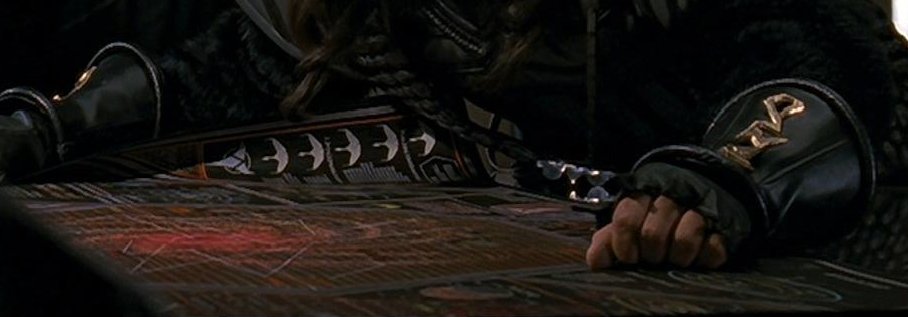


(Above) Praxis damage assessment and Klingon Battlefleet briefing from Brigadier Kerla (from ST:VI)
The Briefing appears to show the Klingon Fleet Strength on the right hand side - perhaps each ship representing a fleet. There are three K'T'inga class symbols top right - one green. one red one grey. These are either fleets or giving the statuses of warships of that class(es). There are five B'rel Bird of Prey symbols - the bottom fifth one appears to have a Klingon style notice next to it - perhaps ths refers to Chang's prototype fire-while-cloaking ship. The central part of the briefing plan appears to show the Neutral Zone and Klingon space - perhaps Kerla was giving a briefing on the Federation's defences? The presence of Chang, Kerla and the two Generals in this scene suggest the new Chancellor was being briefed in on the strength of the Empire and damage caused by Praxis. The top central section appears to show a pair of K'T'inga with a trio of Bird of Prey - perhaps a battle strategy. The bottom central section of this Okudagram shows the Qo'noS system and the remains of Praxis. Perhaps this is briefing on the cause and damage? Sadly the right side of the diagram is illegible on Blu-ray or standard screencaps.
As the fallout fell outside, and the true scale of the damage to Qo'noS was realised, Gorkon had to plan how best to keep the Empire functioning. Most of the shipyards were within the Qo'noS system and most had either been damaged or destroyed by the subspace explosion. Many of the warships of the home fleet had been obliterated in the close proximity to the blast. Gorkon had already met with Federation diplomats at Korvat Colony with Kang and Koloth; he met with Curzon Dax and had found that the Federation representative had studied their ways. Gorkon knew that quelling the Federation border would free up valuable resources to deal with the aftermath of Praxis. Just as Gorkon was assessing how to approach the Federation, he was approached by Spock of the Federation to meet to discuss peace; Gorkon made it plain that this was not surrender, and any such wording would result in all-out war to the death. Gorkon met the Enterprise and the meeting went well. However, Gorkon was assassinated after the meeting, resulting in the trial of Captain J. T Kirk and Dr. McCoy. Subsequently it was found that there was a conspiracy to make the Klingon and Federation governments go to war.
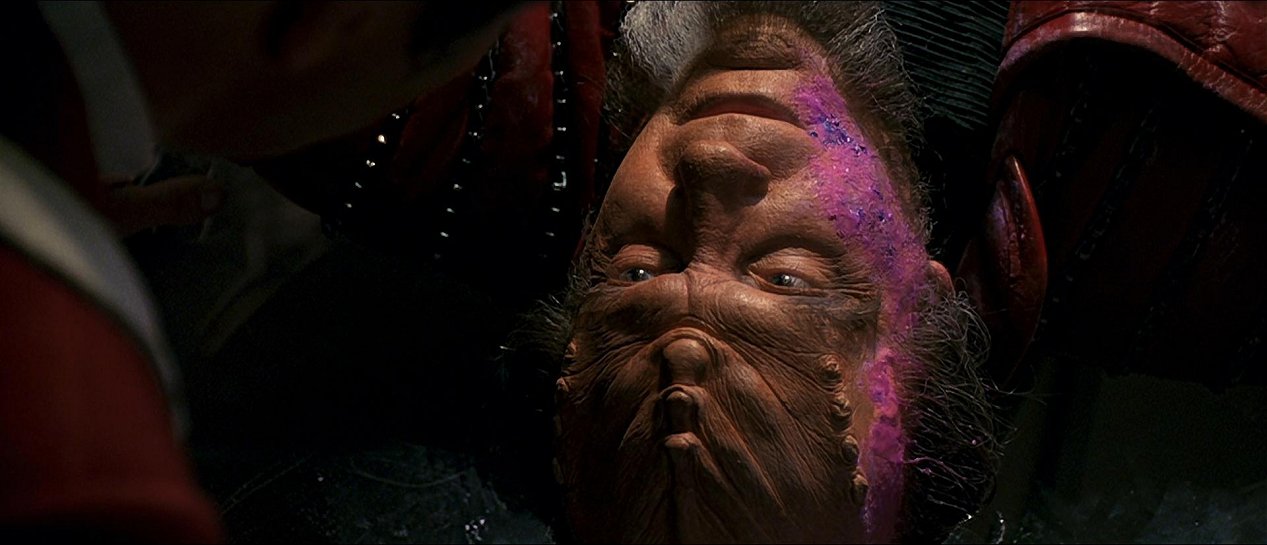
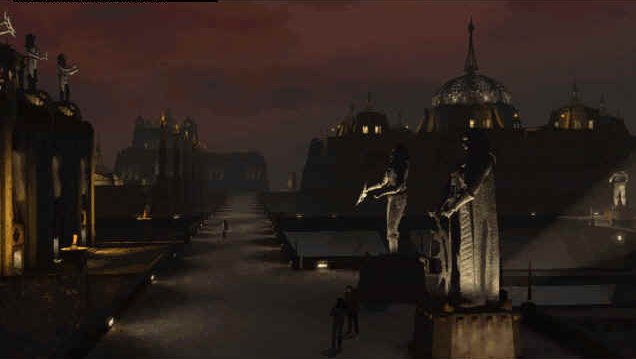 Khitomer Accords, Terajuni Incident and the rise of Azetbur:
Khitomer Accords, Terajuni Incident and the rise of Azetbur:
Gorkon had realised that the Klingons did not have the resources to combat the catastrophe of Praxis. The debris that fell from the moon had devastated wide areas of the home world. His experience with the Federation in the Gonmog Sector back in the 2260s had shown him the Federation and their wise Vulcans were adequate for the job. His plan was to declare a ceasefire with the Federation on Earth and get the aid hi world needed; the war could be resumed later. This was not a popular decision and it ultimately cost Gorkon his life. Gorkon had anticipated this and had a plan in case of this eventuality. In the ways of the old Emperors, and backed due his popularity, he had written that in the event of his death his daughter, Azetbur, would become Chancellor and continue his work.
The lore of the High Council said that succession should be decided by blood and battle; what Gorkon had done was ignore the words of Kahless. In light of the disaster, Azetbur was seen as a temporary measure that would be removed once the necessary overtures to the Federation were no longer needed. Azetbur, daughter of Gorkon would have to overcome her own perceived weakness to step up and rule the Klingon Empire. Despite needing the assistance of the Federation, Azetbur knew she had to bargain from a position of strength. She made it plain to Ra-Ghoratreii that the Klingons were prepared to go down fighting, should they not get the help from the Federation. Kronos meant everything to the Klingons culturally, but militarily the remainder of the Empire was still there to fight.
One of the conditions for this aid was that the Federation would deliver the aid in one of their own Starfleet Auxiliary vessels (accompanied by an escort and Klingon attaches). The Federation ships would go to station los pagh los orbiting Da'kel III. The station would not be ready initially, so carefully escorted ships went to Kronos directly. This was an opportunity to learn more about the Klingon culture in an exchange (as well as an opportunity for some ultra-discreet intelligence-gathering).
Author's notes: Keith DeCandido's magnificent tome Klingon Art of War finally sheds light on the succession of Azetbur. She is described as having been named by Gorkon as his successor; this would normally have been dismissed by Kahlessian laws, but such was the regard for Gorkon that this was accepted - apparently reluctantly by some.
The Khitomer Accords of Stardate 9529:
Article I: Both Parties obligate themeselves to desist from any act of violence, any aggressive action, and any attack on the each other, either individually or jointly with other powers.
Article II: The Governments of the two Parties shall institute full diplomatic relations with each other. A parcel of land shall be delivered on each of the worlds, which will serve as centre for government for each Party so that the other Party may establish an Embassy
Article III: Should one of the Parties become the object of belligerent action by a third power, the other Party shall in no manner lend its support to this third power, and will lend whatever aid and assistance to the other party it deems appropriate by the rules of its internal government.
Article IV: Both Parties agree to provide humanitarian aid to each other.
Article V: Both Parties agree that any former grievances they had with the other are now forgotten. If any individual under the rule of one Party commits an act of revenge or retribution on the other Party, that individual will be extradited to stand trial under the laws of the aggrieved Party.
Article VI: Both Parties agree to the specifics of the following sections delineating conflict resolution, territorial definitions, trade laws, and all other provisions in this document.(ST reference: Federation: The First 150 Years)
The Klingons knew that they needed to address the internal stability of the Empire following Praxis and the high turnover of Chancellors in the last two years. The people wanted Azetbur to stay and rebuild their Empire, the High Council was prepared to bide their time and allow Azetbur to fix their Homeworld with Federation support, before taking any further action.
The Federation started getting refugees coming through post-2293 from species and nations that they were not familiar with. (The break-up of the Klingon Empire as alluded to in ST VI was underway). There are a number of factors involved here: both subject races fighting for their freedom against being in the Empire and also the Imperial Klingon Navy using firepower to hold the Empire together – with civilians fleeing from the carnage.
Ch’ramak was the start of the fracturing. The new chancellor Azetbur was in a perilous position from the start as a female ruling the Klingon patriarchy, against thousands of years of tradition. She had enemies straight away, with serious opposition from the Houses of Amar, Choroth, G’Iogh and Duras. This axis of Houses had a sizeable powerhouse politically and also a war-fleet to match. Whilst Azetbur was ready to face all challenges, she did not want to destroy the Empire to do so.
Think about Elizabeth I and Mary Queen of Scots for the rivalry side. For the historical side the break-up of the Soviet Union and Warsaw Pact, with Yugoslavia as a role model and refugees from the current Syrian and Middle Eastern turmoil.
Azetbur was quick to find Houses loyal to the throne and to fight those traitors who would split the Empire in the face of the Praxis disaster. Whilst Azetbur courted the Federation for technical aid in restoring Kronos, the IKN battle-fleets were tasked with stabilising the Empire and finding new sources of minerals and energy to replace Praxis and the Tal'Ihnor Gates. This massive movement of warships caused the movement of civilians away from the conflict, resulting in flows of refugees towards the fringes of the Empire and even over the border into the Federation.
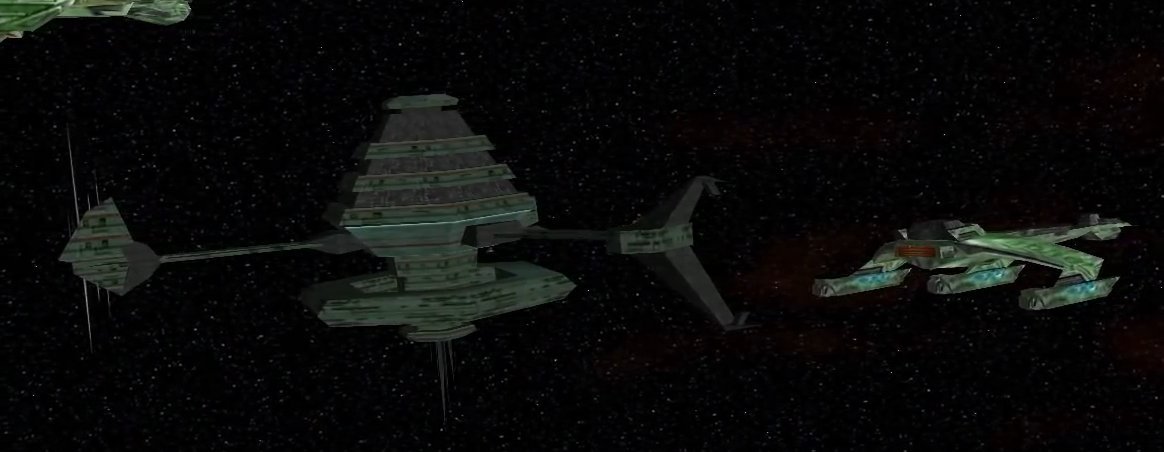
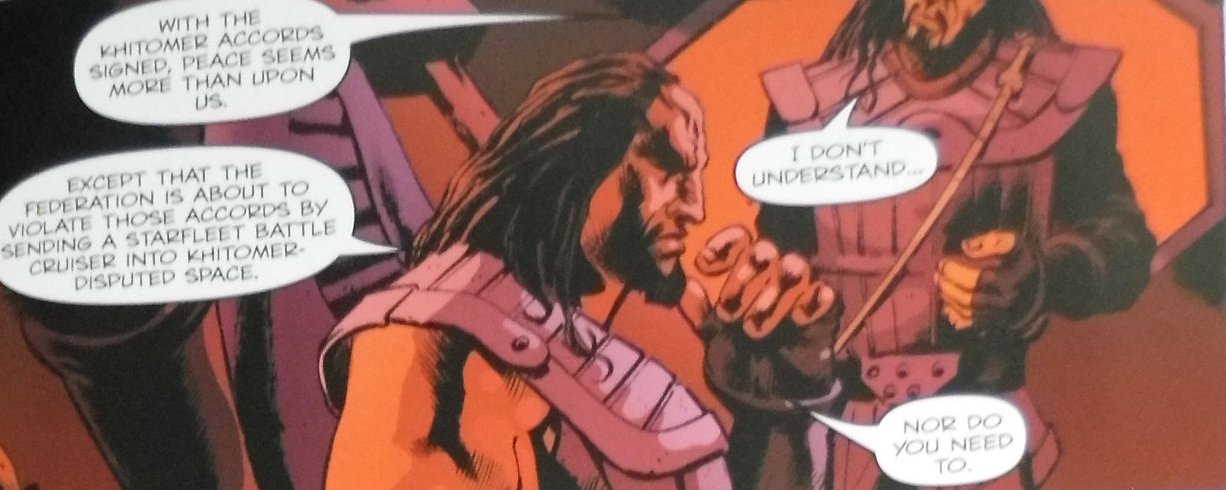

 2294. Stardate 9856.4, the U.S.S. Enterprise NCC-1701-B picked up Doctor Leonard McCoy to deal with an outbreak of Terrellian Virus, which he was an expert in. The Enterprise was challenged by the Imperial Klingon Cruiser Vengeance under the command of General Choroth. After a short exchange of fire, Captain John Harriman surrendered to the Klingons; this was a ruse to arm photon torpedoes and beam them onto the Klingon K'T'inga class warship, simultaneously baming the entire Klingon crew off. There were unsubstantiated allegations that the virus outbreak was caused by the General. After the resulting political fall-out, Choroth returned to the Empire with his crew and was re-assigned. Azetbur had neither the political strength, nor the abundance of generals to exile the embarrassing failure to Rura Penthe. In the event, the blame went on the Tactical Officer of the Vengeance who was executed for his incompetance. General Choroth swore revenge on Harriman and they would clash many times after this.
2294. Stardate 9856.4, the U.S.S. Enterprise NCC-1701-B picked up Doctor Leonard McCoy to deal with an outbreak of Terrellian Virus, which he was an expert in. The Enterprise was challenged by the Imperial Klingon Cruiser Vengeance under the command of General Choroth. After a short exchange of fire, Captain John Harriman surrendered to the Klingons; this was a ruse to arm photon torpedoes and beam them onto the Klingon K'T'inga class warship, simultaneously baming the entire Klingon crew off. There were unsubstantiated allegations that the virus outbreak was caused by the General. After the resulting political fall-out, Choroth returned to the Empire with his crew and was re-assigned. Azetbur had neither the political strength, nor the abundance of generals to exile the embarrassing failure to Rura Penthe. In the event, the blame went on the Tactical Officer of the Vengeance who was executed for his incompetance. General Choroth swore revenge on Harriman and they would clash many times after this.
By 2295, Starfleet Intelligence was reporting increased military action in the driftward regions of the Klingon Empire. Signs were that the Klingons were fighting on multiple fronts and were taking casualties. New information was fleshing out the Kinshaya, who appeared to be a theocracy, that was holding its own against the resource-hungry Empire. The other nation that intelligence had scarce information about were the Syr’ypt’Q. This kingdom was resource rich and on the far side of the Klingon Empire. The majority of the fleet action had been against this zealous people. Information suggested the Syr’Ypt’Q seemed to have traded with the Orion Syndicate for weaponry, utilising their small merchant ships and scouts in vast swarms to overwhelm the larger, slower capital ships of the Klingon battle-fleets.
By 2297 Starfleet authorised the Constellation class U.S.S. Montrose to gather information on the Klingon Empire, especially the border region and the driftward expansion of the Empire.
Author's Notes:
 The Vengeance Incident came from Captain's Log: Harriman graphic novel by Marc Guggenheim. This was set 6 months after the loss of Kirk in the encounter with the Nexus. I like the way the K'T'inga is the Vengeance - a nice nod to John M Ford's novel The Final Reflection, which features the same named warship as a series enjoyed by all Klingons.
The Vengeance Incident came from Captain's Log: Harriman graphic novel by Marc Guggenheim. This was set 6 months after the loss of Kirk in the encounter with the Nexus. I like the way the K'T'inga is the Vengeance - a nice nod to John M Ford's novel The Final Reflection, which features the same named warship as a series enjoyed by all Klingons.
This was a reversal of the Star Trek: III battle with Kruge's Bird of Prey and this was obviouly studied for this story, since the crew of the Vengeance behaved very much like the crew of Kruge's Bird of Prey. Allowing the photon torpedoes to be both armed and then beamed onto the Klingon warship smacks of overeagerness of the General to allow this to happen - okay he is a young flag officer, but surely competant? - and then to allow the entire crew to be beamed off the Vengeance made me think that the Tactical Officer will be executed for gross incompetence.
I considered that this incident would have been political dynamite at the time - allegations that the General himself created the viral outbreak would have caused outrave in the Federation Council and the press. Only the lack of proof stopped this from being a larger issue. I deemed Choroth was a powerful young flag officer and that after Praxis there is a shortage of them. As a result of powerful connections and his prowess, Choroth survives with a re-assignment and slapped wrist. His Tactical Officer is less lucky.

2294 Kronos aid missions start with the U.S.S. Argus.
2295 Demora Sulu survives a retroviral attack by the Albino, likely due to inherited immunities to the base retrovirus. Oby VI reports a plasma plague outbreak and it is investigated by Doctor Susan Nuress. DaqS, son of Kang, Rynar, son of Kor, and the firstborn son of Koloth die due to a retrovirus tailored to their fathers by the geneticist pirate Qagh the Albino. Starfleet Intelligence was reporting increased military action in the driftward regions of the Klingon Empire. Signs were that the Klingons were fighting on multiple fronts and were taking casualties. (This would be both the Kinshaya and the Kingdom of Syr’Ypt’Q).
2296 (approx) One of the seven ships of Ch'gran is discovered adrift after a thousand years in the Betreka Nebula. Klingon Imperial Intelligence seals all records on board.
2296 Ra-ghoratreii of Efros is re-elected to serve a third term as President of the United Federation of Planets. T'Latrek of Vulcan begins her first term as Federation Councilor from Vulcan. Captain John Harriman first meets Gell Kamemor, a Romulan diplomat. They develop a friendship that serves as a useful "back channel" between their governments.
2298 Rogue Klingon attack on Starbase 11. Lt Harvey Hildebrandt is killed with dozens injured, some seriously. Former Starfleet Admiral Lance Cartwright died while serving a prison sentence.
2299 Under the terms of the Khitomer Accords, the Neutral Zone monitoring stations are due to be completely removed in this year. Stardate 10855.2, U.S.S. Comanche, NCC 5519, Oberth class, encounters a wrecked Klingon D-7 battlecruiser floating in Federation space. The Klingon authorities order the ship destroyed immediately, citing that it is contaminated with a deadly biological organism. Starfleet is ordered to comply, for reasons of enhancing relations with the Klingons. Rumours cite the ship wasn't destroyed before Starfleet Intelligence had examined the wreck.
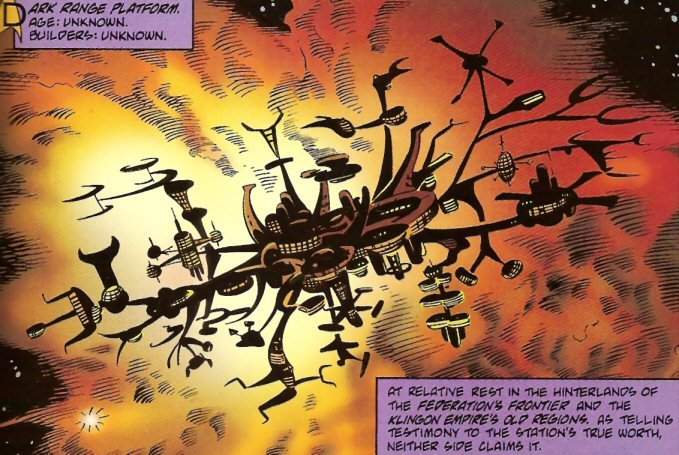 Dark Range Platform – useful story location between Klingon and Federation space.
Dark Range Platform – useful story location between Klingon and Federation space.
The Dark Range Platform, backwater refueling stop, located in the hinterlands of the Federation's frontier and the Klingon Empire's Old Regions, neither claimed it.
Late Nineties details 2296 - 2299. By this point the effects of the Praxis explosion, and drain on the resources being pulled away from the other regions of the Empire to restore Kronos, are now being profoundly felt. Azetbur is finding it harder to keep the High Council together. Members of the council from frontier regions are not happy that their fleets are in decline at a time of fighting on multiple fronts. The Praxis damage and need for aid has been like blood in the water for the enemies of the Empire. Brushfire conflicts have started in various colonies in the Empire, adding to the strain on the IKN as it attempts to find new sources of minerals and energy for the Empire.
Some of the Great Houses have resorted to disproportionate responses in order to crush the rebellions sparking up in some of their colonies. Tri-ox weapons have been used as well as orbital bombardment. Other colonies have been deprived of food as supplies have been directed away. Many of the fleets have a high proportion of warships either partially of completely unserviceable. Many have armour plates, disruptors or torpedo tubes missing, others are unable to cloak themselves or have compromised propulsion systems as the effects of the many shipyards wrecked by the Praxis shockwave is now felt. New and sophisticated warships like the L-24 Komo Val class are almost totally grounded as the rare minerals and alloys needed for the construction and operation of these vessels are in short supply.
The almost-nuclear winter climate created on Kronos by the fallout from Praxis has created low temperatures. Klingon physiology is ill-suited to the cold, resulting in increased casualties and reduced fitness levels for the general Klingon population. As the Klingon High Council chambers are rebuilt, the High Council meets at the Lukara Edifice*.
Starfleet Medical supplies are sent to Kronos to help with the medical crisis, whilst other aid from the Federation Science Council and Vulcan Science Academy will deal with the ecological disaster. By this time the aid has been re-directed from the original Kronos destination to be sent to Station los pagh los (101) as the unloading platform.
By 2297 the Orion Syndicate is found to have its nefarious claws in the Klingon misfortune; several aid vessels are raided by pirates and their specialist equipment and supplies are stolen. The Klingons and Starfleet co-operate to escort the freighters after these attacks. The Orions also offer the Klingons black-market aid via back routes for some of the Great Houses to curry favour. This also fuels rivals to Chancellor Azetbur.
Imperial Intelligence notifies Azetbur that the axis of the Great Houses of Amar, G’Iogh and others on the spinward and coreward edges of the Empire are rising in influence and warships. This is partly through resources obtained from allied Houses unhappy at Azetbur and her performance as Chancellor; the other force fuelling these Houses is thought to be the Orion Syndicate, ever happy to gain influence through business. Accepting the House of G’Iogh back into the High Council may postpone the inevitable, but not halt it.
2298 and elements of the Rogue Axis of the Klingon Empire attack Starbase 11 without the knowledge, let alone consent, of the High Council. Azetbur is troubled that her authority has been degraded to the point that Houses are now openly defying her. Kest advised that she ought to prepare for the inevitable challenge in order to focus on rebuilding Kronos.
* from MB:
The Lukara Edifice was a large structure in the city of Novat on Qo'noS. Named for Lukara, the mate of Kahless the Unforgettable, the Lukara Edifice held a large hall on its ground floor, and multiple smaller meeting rooms on the three upper floors. A statue of Lukara stands outside the edifice, one of the few public statues on Qo'noS where the subject does not branish a weapon.
The Lukara Edifice served as an alternate venue for meetings of the Klingon High Council when the Great Hall in the First City could not be used. It was used as such shortly after the destruction of Praxis in 2293, and during Morjod's coup in late 2375.
The Kurak Edifice was the location of many Age of Ascension ceremonies for high-born Klingons
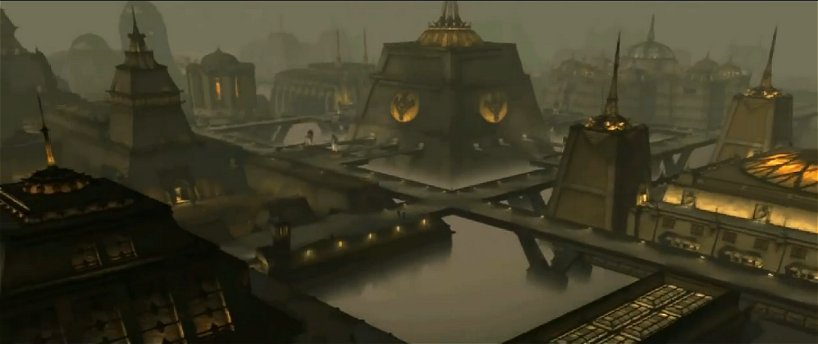 Late Azetbur era: Treaties, Treason and Destiny 2299 - 2311:
Late Azetbur era: Treaties, Treason and Destiny 2299 - 2311:
Following the Tabula Rasa campaign, civil war, Praxis, and Khitomer, the effects were really being felt. The break-up of the Klingon Empire - as hinted at by Captain Spock on stardate 9521- was now starting to happen as the central mechanisms of control are now feeling the strain. Despite the Empire Security Services working to keep the outer colonies under control, worlds like the Ch'ramaki and Terajuni were actively revolting against ther masters. Subject races were reconsidering their place in the crumbling empire. In the worlds with a military base or fleet presence then the worlds did not tend to rebel. Away from the fleet bases and frontier the patrol vessel presence had weakened allowing discontent to be expressed.
Azetbur led a successful military campaign against the Syr'Ypt'Q, buying her breathing room at the turn of the century. The invasion of Klingon space had traumatised the psyche of the warrior race, puncturing their self-belief. Some also felt that they had been held back from assaulting the Syr'Ypt'Q core worlds in retalliation. Azetbur had lost valuable allies in the form of Kerla and Korrd, the latter an apparent action by the Ch'ramaki terrorists.
Nimbus III was an important planet for the destiny of the Empire and its leader. Stardate 11222, a treaty with the Klingons, Romulans and Federation had helped to stabilise the situation between the three governments and allowed for progress to be made with trade negotiations and mining rights. Nimbus III, Stardate 11804.5 9th January 2304 saw changes in the politics both internal and external.
Azetbur's speech re-wrote relations:
"...therefore it is with a new sense of vigour that I intend to take the Klingon Empire forward in this new century. For too long the Empire has placed the burden of reconstruction after Praxis on the shoulders of others. I therefore propose plans to expand the Klingon Empire to increase our resources. No more shall the Empire be denied the pride that I promised it would retain after the death of my father, over a decade ago..."
"Many have spoken of the annexing of the Ch'ramak system. It has not gone unnoticed that there has even been political debate raised concerning the future of that world, the system and its inhabitants. Let me announce to the assembled persons here today that there will be no further debate on the system of the Ch'ramaki, and other systems like it. The Klingon Empire will be revived from the stagnation that callous acts have attempted to impose on us. Let the other governments assembled here understand that the Empire has traditionally expanded to survive and we shall not let our traditions go questioned any longer."
The speech was inflammatory, marking the end of the aid missions from the Federation and a new independence of the Klingon Empire. Such strong words had not been heard since the time of Chancellor Kesh. It had been most of what the experts had been predicting: the gauntlet had been laid down. Azetbur had as much dared her own rivals, within the Empire as much as without, to get in the way of her running the Empire. This was due notice that normal service was now resumed with the Klingon Empire and the tolerance for interference from without and within was at an end.
What was shocking was the assassination that took place immediately afterwards. A terrorist had managed to infiltrate the Klingon tower, with the intention of killing Chancellor Azetbur. In the event it was General Korrd who walked in on the assassin. A fight ensued and the General was killed, along with the terrorist. The Klingons considered the matter cosed and would not discuss anything further. Korrd's body was removed and nothing more was spoken of the events. St. John Talbot used all of his influence and friends in the Empire to discover the identity of the assassin: a Ch'ramaki. This was a statement being made by the very planet Azetbur was announcing as subdued and finally theirs. This was a very public statement that the Ch'ramaki could get anywhere and kill anyone.
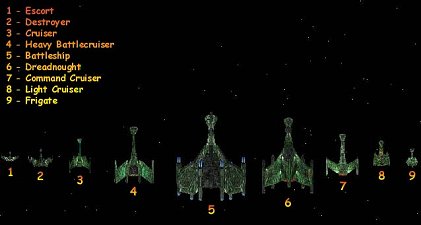 During this period in the reign of Chancellor Azetbur, the Imperial Klingon Navy consisted of some 10 000 warships. Starfleet Intelligence believed only 60% of the fleet were operational with many of those with non-functioning aspects (e.g. non-functioning torpedo launchers or cloaking device). There were signs a policy was in place to refurbish the medium and smaller sized elements of the fleet, rather than refurbish the larger battleships or build new warships. After nearly two decades of disuse, the Klingon military-industrial complex was showing signs of life once again, however the damage done during the time of neglect is showing. As the mission of the U.S.S. Sheffield showed, the classified report of Stardate 9521 was influenced by Federation-centric thinking that if Earth had been similarly damaged then the Federation would be seriously compromised. The Klingon Military is not centrally organised and therefore besides the IKN losses from the actual explosion of Praxis, the fleet is still up to numbers. It is only the reallocation of resources to repairing Kronos and appeasing the Federation that has actually degraded the Klingon Navy.
During this period in the reign of Chancellor Azetbur, the Imperial Klingon Navy consisted of some 10 000 warships. Starfleet Intelligence believed only 60% of the fleet were operational with many of those with non-functioning aspects (e.g. non-functioning torpedo launchers or cloaking device). There were signs a policy was in place to refurbish the medium and smaller sized elements of the fleet, rather than refurbish the larger battleships or build new warships. After nearly two decades of disuse, the Klingon military-industrial complex was showing signs of life once again, however the damage done during the time of neglect is showing. As the mission of the U.S.S. Sheffield showed, the classified report of Stardate 9521 was influenced by Federation-centric thinking that if Earth had been similarly damaged then the Federation would be seriously compromised. The Klingon Military is not centrally organised and therefore besides the IKN losses from the actual explosion of Praxis, the fleet is still up to numbers. It is only the reallocation of resources to repairing Kronos and appeasing the Federation that has actually degraded the Klingon Navy.
Author's notes: More reflecting of the state of Russia; the Yeltsin years of 1992 - 2000 also had decline in the military of the type described here. Much of the Cold War navy fleet was left to rot at their moorings in Murmansk and Vladivostok. For much of the 90s the fleet had been used to transport Japanese cars to Vladivostok and other ports to earn the crews some money. Exploratory vessels such as the Keldysh were used to make films such as 'Titanic'. By the early 21st Century, vessels such as the aircraft carrier Admiral of the Fleet Kuznetsov and nuclear Kirov missile battlecruisers Kirov, Frunze and Kalinin were non-operational. Others such as Kiev and Minsk were Chinese tourist attractions whilst Moskva and others were scrapped at Alang in India. The decline of the Russian fleet was from the collapse of the Russian economy and exports following poor harvests. The Klingon situation is dissimilar.
Praxis wrecked Kronos but did not wreck the Empire. TNG Yesterday's Enterprise showed that by 2344 the Klingon Navy was able to defeat the Federation's latest Ambassador class starships. Were the Empire wrecked, they could not have built up their fleet strength and numbers to do this. The Empire was rotten but not physically destroyed. If an H-bomb wrecked London, parliament could still re-assemble in the Scottish Parliament or offices in Birmingham or Manchester; the UK would not fold. The ISC war will have cut Klingon numbers and scarred their psyche, but the Klingons would still be a force to be reckoned with. The 18 year Betreka Nebula incident with the Cardassians would be as much down to extended supply lines as anything else.
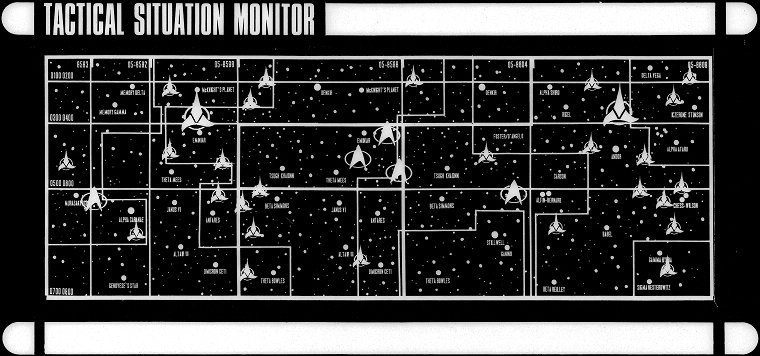
On the other hand, by 2008 the military power of Russia had started to be rebuilt. Old 'Bear' and 'Blackjack' bombers were flying again and elements of the navy were once more deployed to the Bay of Biscay, Mediterranean and even the Caribbean. The surge in oil prices having payed off Russian debts and started the rebuild of the Russian military - even a new uniform and philosophy as a professional army from the policies of Putin. In a similar way could the Klingon military rise from the ashes?
By 2310, Azetbur was a Chancellor with a fading popularity. Analysis had marked for some time that she would be challenged for leadership. The Syr'Ypt'Q war had bought her perhaps a decade extra in office, but that time was fast running out. The outer colonies were in revolt. Ch'ramak, Terajuni and Nirophia were all seceding away from the Empire; Nirophia and the Corridor were allowed to go in return for Federation aid. Nirophia may have gone easily but the Federation was stung by Terajuni. The Excelsior was sent to negotiate with the Terajuni and instead was held hostage. After an embarrassing intergalactic incident, where the security operations team under Captain Sulu retook the ship, the Federation Council was very reluctant to intervene further. Azetbur and the High Council quickly exploited this reluctance to put down the remaining rebellions by force.
General Gorak was instrumental in restoring order in the breakaway republics. He even challenged the leader of the resistence to personal combat. After this point, Gorak was seen as the prime candidate to succeed Azetbur as Chancellor...
Author's Notes:
The Klingons has always been the analogy for the Soviets, and later the Russians. Here is the modern history of Russia both for my inspiration and comparison
Modern Russian history in brief from 1992 - present.
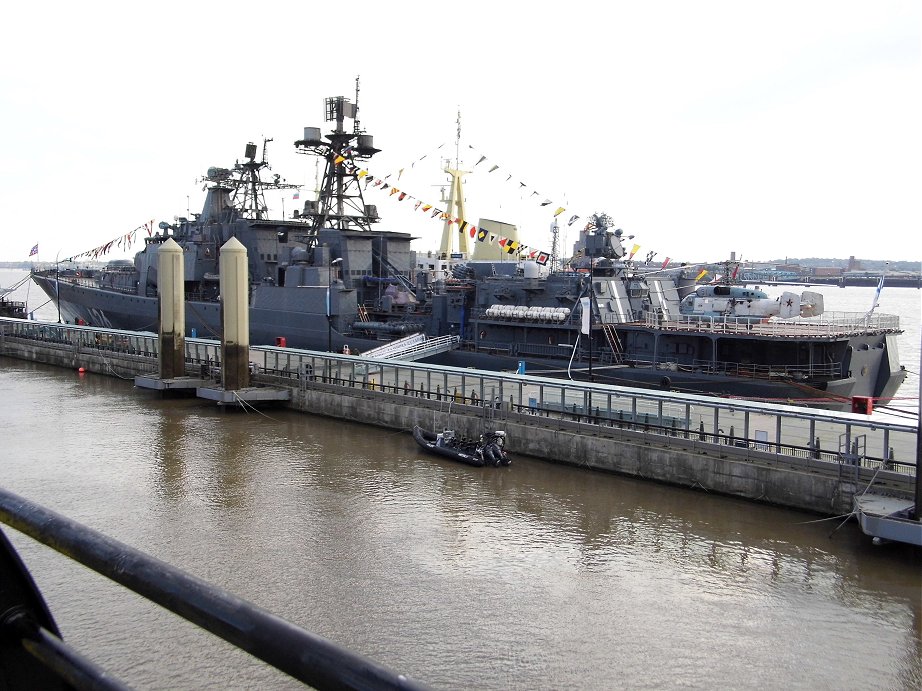 1992 - The Soviet Union is officially no more as of New Year's day, the red flag is taken down and replaced with the Russian tricolour.
1992 - Commonwealth of Independent States (CIS) formed.
1993 - Czechoslovak federation broke up.
1993 - September: Decree 1400 suspends Supreme Soviet, taking it into Presidency.
1993 - Yeltsin uses tanks on the White House to quell resistance to decree 1400.
1994 - First Chechen war 94 - 96.
1995 - Yeltsin buys himself a Mercedes.
1996 - Yeltsin has quintuple heart bypass.
1996 - Oligarchs help fund Yeltsin.
1996 - Vladimir Putin transferred from St. Petersburg to Kremlin.
1998 - May: Yeltsin impeached and found guilty of state treason. He survives in power due to new constitutional rules.
1998 - August: The Russian economy crumbles after the Ruble is devalued.
1998 - Prime Minister Sergei Kirienko replaced by Yevgeni Primakov.
1999 - May: Prime Minister Yevgeni Primakov abruptly fired and replaced by Sergei Stepashin.
1999 - Serbs routed from Kosovo. Russians feel humiliated by the defeat of their kin.
1999 - August: Prime Minister Sergei Stepashin suddenly replaced by Vladimir Putin.
1999 - September: Explosions in Moscow and other areas blamed on Chechnya. Second Chechen war begins.
2000 - Vladimir Putin is named by Boris Yeltsin as his successor.
2000 - Boris Yeltsin given legal immunity. Daughter and others still suspected of fraud.
2000 - Seven super-districts created across the Russian Federation.
2000 - August: NTV owner forced out. Begining of crackdown on freedom of speech.
2000 - Kursk sinks in August. Putin finds crisis difficult.
2002 - Outspoken General Alexander Lebed is killed in a helicopter acident.
2002 - October: Theatre siege in Moscow ends in tragedy.
2003 - Sham referendum in Chechnya marks normalisation in that war-torn country.
2003 - Rose Revolution in Georgia. Leads to elections in January 2004.
2004 - Vladimir Putin wins a second term as persident.
2004 - Akhmed Kadyrov, 'Kremlin marionette leader', assassinated in Chechnya.
2004 - December: Orange Revolution in Ukraine.
1992 - The Soviet Union is officially no more as of New Year's day, the red flag is taken down and replaced with the Russian tricolour.
1992 - Commonwealth of Independent States (CIS) formed.
1993 - Czechoslovak federation broke up.
1993 - September: Decree 1400 suspends Supreme Soviet, taking it into Presidency.
1993 - Yeltsin uses tanks on the White House to quell resistance to decree 1400.
1994 - First Chechen war 94 - 96.
1995 - Yeltsin buys himself a Mercedes.
1996 - Yeltsin has quintuple heart bypass.
1996 - Oligarchs help fund Yeltsin.
1996 - Vladimir Putin transferred from St. Petersburg to Kremlin.
1998 - May: Yeltsin impeached and found guilty of state treason. He survives in power due to new constitutional rules.
1998 - August: The Russian economy crumbles after the Ruble is devalued.
1998 - Prime Minister Sergei Kirienko replaced by Yevgeni Primakov.
1999 - May: Prime Minister Yevgeni Primakov abruptly fired and replaced by Sergei Stepashin.
1999 - Serbs routed from Kosovo. Russians feel humiliated by the defeat of their kin.
1999 - August: Prime Minister Sergei Stepashin suddenly replaced by Vladimir Putin.
1999 - September: Explosions in Moscow and other areas blamed on Chechnya. Second Chechen war begins.
2000 - Vladimir Putin is named by Boris Yeltsin as his successor.
2000 - Boris Yeltsin given legal immunity. Daughter and others still suspected of fraud.
2000 - Seven super-districts created across the Russian Federation.
2000 - August: NTV owner forced out. Begining of crackdown on freedom of speech.
2000 - Kursk sinks in August. Putin finds crisis difficult.
2002 - Outspoken General Alexander Lebed is killed in a helicopter acident.
2002 - October: Theatre siege in Moscow ends in tragedy.
2003 - Sham referendum in Chechnya marks normalisation in that war-torn country.
2003 - Rose Revolution in Georgia. Leads to elections in January 2004.
2004 - Vladimir Putin wins a second term as persident.
2004 - Akhmed Kadyrov, 'Kremlin marionette leader', assassinated in Chechnya.
2004 - December: Orange Revolution in Ukraine.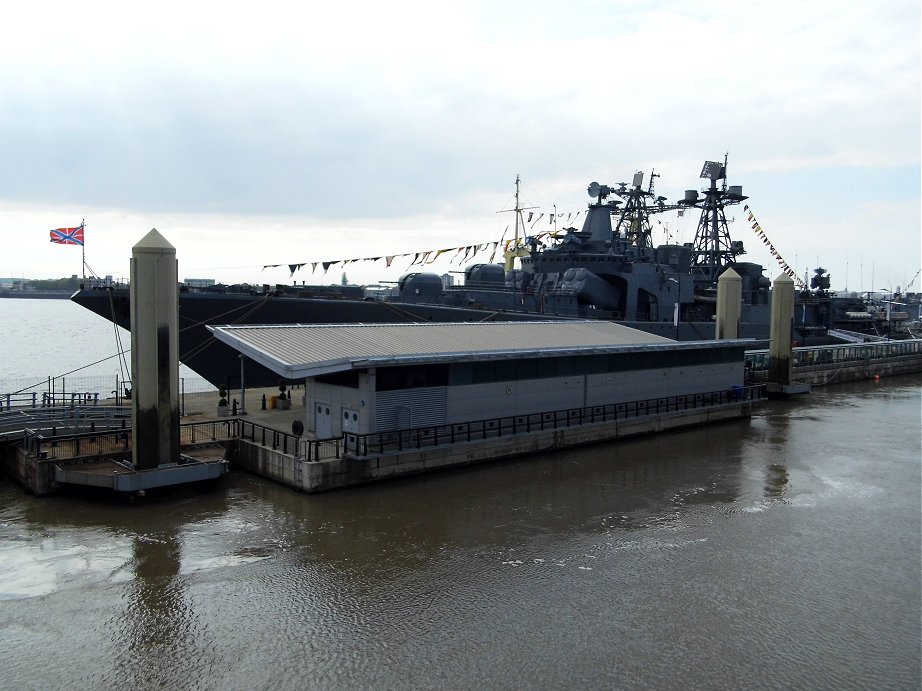 2005 - Beslan school held by terrorists.
2005 - Tulip Revolution in Kygyzstan.
2005 - March: Nashi (ours) youth movement created.
2006 - July: Nashi conduct a campaign against the British ambassador in Moscow, Tony Brenton.
2006 - October: Anna Politkovskaya assassinated by a gunman.
2006 - November: Alexander Litvenenko assassinated with polonium 210 in London.
2007 - Febrary: Putin denounces America as pernicious force in world politics.
2007 - In April and May, Nashi holds daily protests at the Estonian embassy in Moscow as a protest the moving of the Bronze Soldier of Tallinn.
2007 - April 26, 2007, Putin announced plans to declare a moratorium on the observance of the CFE Treaty by Russia until all NATO members ratified it.
2007 - August: Arktika 2007 expedition in Arctic waters culminated in the planting of a Russian flag on the ocean floor at the North Pole.
2007 - August: Russian 'Bear' bombers resume their flights into NATO airspace, suspended since 1992.
2008 - January: Dmitry Medvedev is named as successor to Vladimir Putin, who himself becomes the new Prime Minister.
2008 - May Day celebrations in Red Square revived with tanks and troops.
2008 - August: Russia goes to war with Georgia over South Ossetia. In a blitzkrieg move, Georgia is crippled.
2008 - August: Russia makes trade movements towards Syria.
2008 - August: independent South Ossetia and Abkhazia recognised by Russia, in a similar manner to Kosovo recognition by the West.
2008 - September: Russian Tu-160 'Blackjack' bombers and warships visit Venezuela.
2008 - September: The Movement for the Emancipation of the Niger Delta (Mend) attacks oil facilities in Nigeria. Russian oil and gas raises in importance.
2008 - November: Vote rushed through to extend presidential term from four to six years. Putin expected to return as a result.
2008 - November: Anna Politkovskaya trial finally begins behind closed doors.
2009 - April: Russians declare Chechan War over.
2009 - June: Medvedev looks to sign civilian nuclear energy deals with Egypt and Nigeria.
2009 - July: Natalya Estemirova, the promininent human rights activist killed in Chechnya.
2009 - July: Russia to drill for oil off Cuba.
2009 - August: Indians launch SSBN developed with Russian assistance.
2005 - Beslan school held by terrorists.
2005 - Tulip Revolution in Kygyzstan.
2005 - March: Nashi (ours) youth movement created.
2006 - July: Nashi conduct a campaign against the British ambassador in Moscow, Tony Brenton.
2006 - October: Anna Politkovskaya assassinated by a gunman.
2006 - November: Alexander Litvenenko assassinated with polonium 210 in London.
2007 - Febrary: Putin denounces America as pernicious force in world politics.
2007 - In April and May, Nashi holds daily protests at the Estonian embassy in Moscow as a protest the moving of the Bronze Soldier of Tallinn.
2007 - April 26, 2007, Putin announced plans to declare a moratorium on the observance of the CFE Treaty by Russia until all NATO members ratified it.
2007 - August: Arktika 2007 expedition in Arctic waters culminated in the planting of a Russian flag on the ocean floor at the North Pole.
2007 - August: Russian 'Bear' bombers resume their flights into NATO airspace, suspended since 1992.
2008 - January: Dmitry Medvedev is named as successor to Vladimir Putin, who himself becomes the new Prime Minister.
2008 - May Day celebrations in Red Square revived with tanks and troops.
2008 - August: Russia goes to war with Georgia over South Ossetia. In a blitzkrieg move, Georgia is crippled.
2008 - August: Russia makes trade movements towards Syria.
2008 - August: independent South Ossetia and Abkhazia recognised by Russia, in a similar manner to Kosovo recognition by the West.
2008 - September: Russian Tu-160 'Blackjack' bombers and warships visit Venezuela.
2008 - September: The Movement for the Emancipation of the Niger Delta (Mend) attacks oil facilities in Nigeria. Russian oil and gas raises in importance.
2008 - November: Vote rushed through to extend presidential term from four to six years. Putin expected to return as a result.
2008 - November: Anna Politkovskaya trial finally begins behind closed doors.
2009 - April: Russians declare Chechan War over.
2009 - June: Medvedev looks to sign civilian nuclear energy deals with Egypt and Nigeria.
2009 - July: Natalya Estemirova, the promininent human rights activist killed in Chechnya.
2009 - July: Russia to drill for oil off Cuba.
2009 - August: Indians launch SSBN developed with Russian assistance.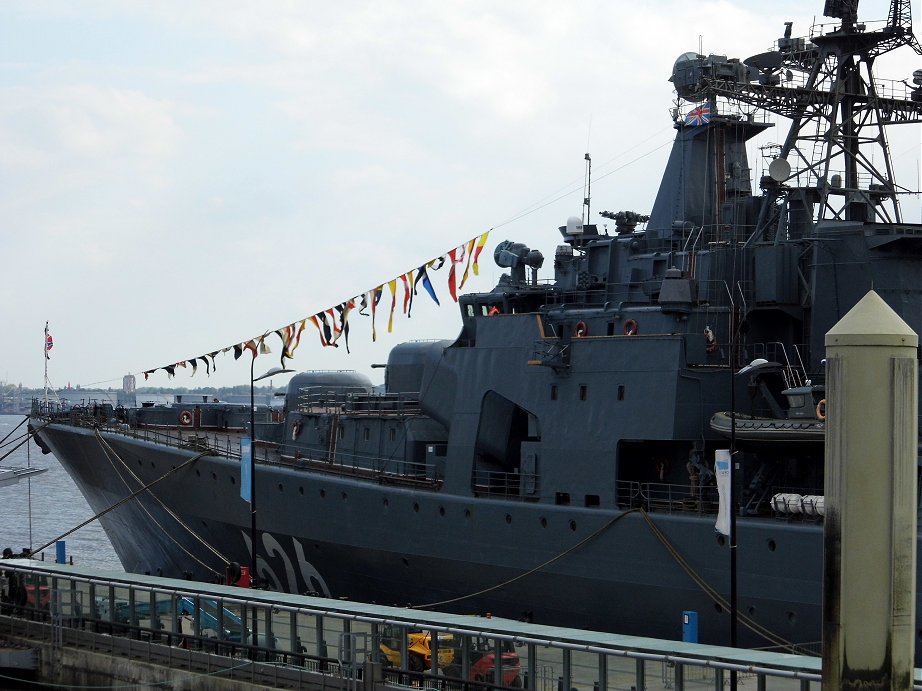 2009 - August: Vladimir Putin on holiday promoting action man image.
2009 - August: Two Russian SSN, one older Akula (I) and brand-new Akula (II), submarine detected off the US and Canadian coasts.
2009 - September: Venezuelan leader Hugo Chavez meets Putin in Moscow.
2009 - September: Russia agrees to lend Venezuela over $2bn to buy weapons.
2009 - September: Barack Obama cancels missile shield in Eastern Europe
2009 - September: Russia reciprocates and cancels proposed missiles in Kaliningrad.
2010 - January: Maiden flight of fifth generation Sukhoi T-50 fighter.
2010 - February: Second and third flights of Sukhoi T-50.
2010 - February: Russian security operation in Arsty on Chechen/Ingush border.
2010 - March: 'Black Widow' attack on Moscow underground at Lubyanka and Park Kulturny stations.
2010 - March: Dagestan double suicide bombing in Kizlyar on Chechen/Dagestan border.
2010 - March: Georgian special forces accused of training Chechen terrorists.
2010 - April: Clashes in Kyrgystan capital of Bishkek leading to overthrow of the president.
2010 - April: BRIC meeting with Brazil, India and China
2010 - April: Russia forges closer relations with Poland after tragic death of Polish President.
2010 - May: T-95 tank project has formal government funding ceased.
2010 - June: Ten suspected Somali pirates captured by Marshal Shaposhnikov last week may have perished after their release.
2010 - May: Blast kills six outside theatre in Stavropol, Russia
2010 - June: Nine killed in clash in Russia's Dagestan region
2010 - June: Belarus has gas debts and Russi cuts them off for a time.
2010 - June: Anna Chapman arrested as spy. Later swapped for US spies.
2010 - July: Militants attack hydroelectric station in the mainly Muslim republic of Kabardino-Balkaria republic.
2010 - July: Beautician Anna Fermanova, 24, a US citizen born in Latvia arrested for trying to smuggle night sights and other military equipment to Russia.
2010 - July: Canadian CF-18 fighter jets dispatched to intercept Russian bombers as they skirted Canadian airspace by the Arctic.
2010 - August: Magomed-Ali Vagabov was killed with four others in a counter-terrorism operation in the southern region of Dagestan.
2010 - September: Russia and China sign series of energy agreements
2010 - October: Russia pursues new Algeria gas and telecoms deals with Medvedev visit
2009 - August: Vladimir Putin on holiday promoting action man image.
2009 - August: Two Russian SSN, one older Akula (I) and brand-new Akula (II), submarine detected off the US and Canadian coasts.
2009 - September: Venezuelan leader Hugo Chavez meets Putin in Moscow.
2009 - September: Russia agrees to lend Venezuela over $2bn to buy weapons.
2009 - September: Barack Obama cancels missile shield in Eastern Europe
2009 - September: Russia reciprocates and cancels proposed missiles in Kaliningrad.
2010 - January: Maiden flight of fifth generation Sukhoi T-50 fighter.
2010 - February: Second and third flights of Sukhoi T-50.
2010 - February: Russian security operation in Arsty on Chechen/Ingush border.
2010 - March: 'Black Widow' attack on Moscow underground at Lubyanka and Park Kulturny stations.
2010 - March: Dagestan double suicide bombing in Kizlyar on Chechen/Dagestan border.
2010 - March: Georgian special forces accused of training Chechen terrorists.
2010 - April: Clashes in Kyrgystan capital of Bishkek leading to overthrow of the president.
2010 - April: BRIC meeting with Brazil, India and China
2010 - April: Russia forges closer relations with Poland after tragic death of Polish President.
2010 - May: T-95 tank project has formal government funding ceased.
2010 - June: Ten suspected Somali pirates captured by Marshal Shaposhnikov last week may have perished after their release.
2010 - May: Blast kills six outside theatre in Stavropol, Russia
2010 - June: Nine killed in clash in Russia's Dagestan region
2010 - June: Belarus has gas debts and Russi cuts them off for a time.
2010 - June: Anna Chapman arrested as spy. Later swapped for US spies.
2010 - July: Militants attack hydroelectric station in the mainly Muslim republic of Kabardino-Balkaria republic.
2010 - July: Beautician Anna Fermanova, 24, a US citizen born in Latvia arrested for trying to smuggle night sights and other military equipment to Russia.
2010 - July: Canadian CF-18 fighter jets dispatched to intercept Russian bombers as they skirted Canadian airspace by the Arctic.
2010 - August: Magomed-Ali Vagabov was killed with four others in a counter-terrorism operation in the southern region of Dagestan.
2010 - September: Russia and China sign series of energy agreements
2010 - October: Russia pursues new Algeria gas and telecoms deals with Medvedev visit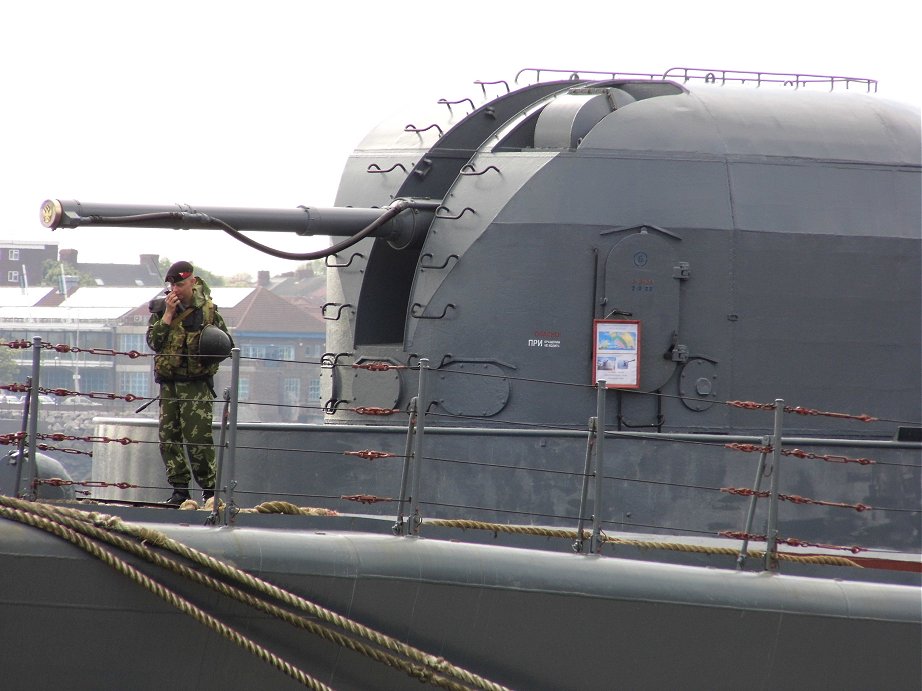 2010 - October: India to buy advanced fighter jets from Russia
2010 - October: Spy Anna Chapman in surprise appearance at Baikonur
2010 - October: Russia and Venezuela sign nuclear power and oil deals
2010 - October: Russians pulled out from Perevi, which is located just outside Georgia's breakaway South Ossetia region
2010 - October: Attack on Chechen parliament in Grozny leaves six dead
2010 - October: ex-Soviet republics of Azerbaijan and Armenia agreed to swap prisoners captured during fighting in disputed territory of Nagorno-Karabakh.
2010 - November: Dmitry Medvedev first visit by a Russian president to the disputed Kuril Islands, sparking a diplomatic row with Japan.
2010 - November: Viktor Chernomyrdin, former Russian PM dies.
2010 - November: Georgia 'breaks Russian spy ring'
2010 - November: Col Shcherbakov of the Russian foreign intelligence agency had been working for the Americans.
2010 - November: Medvedev warns of political 'stagnation' in Russia
2010 - December: Russia used more than 50% of its known oil reserves needs to attract enormous investment to modernise its oil infrastructure.
2010 - December: Russia-India arms deal backed by historic ties
2010 - December: Russian spy Anna Chapman appointed to the public council of the Molodaya Gvardiya (Young Guard).
2010 - December: Russia confirms it will buy at least two Mistral-class warships from French-led consortium.
2010 - December: Spain-Russia spy row leads to diplomats' expulsion
2011 - January: Russia opposition leader Nemtsov jailed for 15 days
2011 - January: Russian President Medvedev reaffirms 1988 recognition of Palestinian state
2011 - January: Moscow blast: Explosion at Russia's Domodedovo airport
2011 - January: Car bomb kills at least three in Russia's Dagestan
2011 - January: Russia and Exxon Mobil sign Black Sea oil and gas deal
2011 - January: Icebreakers have been busy keeping Vladivostok's Pacific port open as Russia's far East look to Asia again.
2011 - January: Russian economy grew by 4% in 2010
2011 - February: Medvedev unveils Boris Yeltsin statue
2011 - February: Russia warned Ireland it will retaliate in spy row over identity thefts including for spy Anna Chapman.
2011 - February: 4 policemen shot dead in Kabardino-Balkaria.
2011 - February: Rosneft profits jump 64% as oil production rises
2011 - February: US-Russia New Start nuclear treaty comes into effect
2010 - October: India to buy advanced fighter jets from Russia
2010 - October: Spy Anna Chapman in surprise appearance at Baikonur
2010 - October: Russia and Venezuela sign nuclear power and oil deals
2010 - October: Russians pulled out from Perevi, which is located just outside Georgia's breakaway South Ossetia region
2010 - October: Attack on Chechen parliament in Grozny leaves six dead
2010 - October: ex-Soviet republics of Azerbaijan and Armenia agreed to swap prisoners captured during fighting in disputed territory of Nagorno-Karabakh.
2010 - November: Dmitry Medvedev first visit by a Russian president to the disputed Kuril Islands, sparking a diplomatic row with Japan.
2010 - November: Viktor Chernomyrdin, former Russian PM dies.
2010 - November: Georgia 'breaks Russian spy ring'
2010 - November: Col Shcherbakov of the Russian foreign intelligence agency had been working for the Americans.
2010 - November: Medvedev warns of political 'stagnation' in Russia
2010 - December: Russia used more than 50% of its known oil reserves needs to attract enormous investment to modernise its oil infrastructure.
2010 - December: Russia-India arms deal backed by historic ties
2010 - December: Russian spy Anna Chapman appointed to the public council of the Molodaya Gvardiya (Young Guard).
2010 - December: Russia confirms it will buy at least two Mistral-class warships from French-led consortium.
2010 - December: Spain-Russia spy row leads to diplomats' expulsion
2011 - January: Russia opposition leader Nemtsov jailed for 15 days
2011 - January: Russian President Medvedev reaffirms 1988 recognition of Palestinian state
2011 - January: Moscow blast: Explosion at Russia's Domodedovo airport
2011 - January: Car bomb kills at least three in Russia's Dagestan
2011 - January: Russia and Exxon Mobil sign Black Sea oil and gas deal
2011 - January: Icebreakers have been busy keeping Vladivostok's Pacific port open as Russia's far East look to Asia again.
2011 - January: Russian economy grew by 4% in 2010
2011 - February: Medvedev unveils Boris Yeltsin statue
2011 - February: Russia warned Ireland it will retaliate in spy row over identity thefts including for spy Anna Chapman.
2011 - February: 4 policemen shot dead in Kabardino-Balkaria.
2011 - February: Rosneft profits jump 64% as oil production rises
2011 - February: US-Russia New Start nuclear treaty comes into effect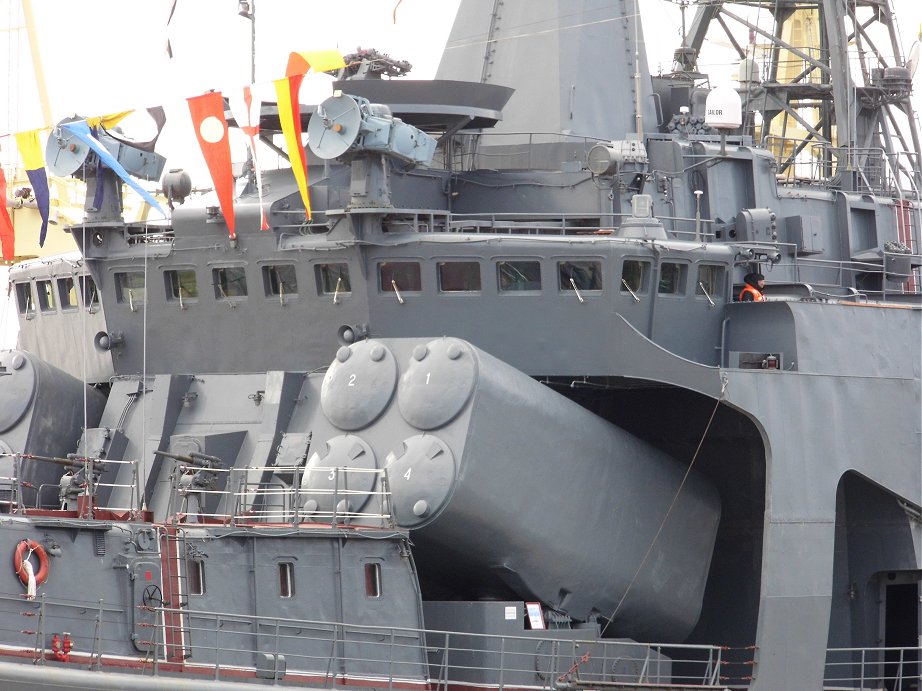 2011 - February: Japan-Russia row escalates over disputed Kurils islands
2011 February: Islamist militant Leader in Russia's North Caucasus, Doku Umarov, said he ordered attack at Moscow Domodedovo airport, which left 36 people dead.
2011 - February: Russia to deploy more arms on Kurils, claimed by Japan
2011 February: 'Cosmonauts' simulate Mars landing
2011 _ February: Eight nuclear submarines, 600 jets and 1,000 helicopters feature in plans to renew Russia's military by 2020, priced at 19tn roubles (£400bn; $650bn).
2011 - March: Glonass, rival to GPS, launched.
2011 - March: Mikhail Gorbachev honoured by Kremlin on 80th birthday
2011 - March: Sevastopol: Russian fleet stirs passions in Ukraine
2011 - March: Chechnya women's Islamic dress code: Russia blamed
2011 - March: Anna Chapman, Russian spy, interviewed by BBC. Now a tv host.
2011 - March: Russia 'kills 17 North Caucasus militants'
2011 - April: Russian manufacturing growth picks up
2011 - April: Police in Moscow have discover "underground town" housing illegal immigrants from Central Asia in Soviet-era bomb shelter in west of city.
2011 - April: Russian Prime Minister Vladimir Putin unveils plans to reverse Russia's declining population.
2011 - April: 'Al-Qaeda envoy' Moganned killed in Chechnya
2011 - May: BP moves closer to Arctic exploration in Russia
2011 - May: Lithuania jails Soviet commando for Medininkai shooting
2011 - May: Russia expels Israel military attache 'for spying'
2011 - May: Belarus 'to get Russian bail-out' worth $3bn
2011 - May: Smallpox decision deferred again
2011 - May: France and Russia strike Mistral warship deal
2011 - June: Evacuation after arms depot blaze near Izhevsk
2011 - June: Russia and Norway agree deal over oil-rich Barents Sea
2011 - June: Russia halves Belarus power supply over unpaid bills
2011 - June: Dagestan imam Ashurlav Kurbanov is latest moderate Muslim murder victim
2011 - June: Oleg Deripaska aims to build a series of hydro-electric dams in remote eastern Siberia and export the power to China.
2011 - June: Chinese President Hu Jintao arrives in Russia to try to push ahead multi-billion dollar deal for natural gas supplies.
2011 - June: A former senior Russian intelligence officer, Alexander Poteyev, found guilty of betraying names of ten Russian sleeper agents.
2011 - August: Russian stealth plane shown off at Moscow airshow
2011 - August: Kim Jong-il in talks with Dmitry Medvedev
2011 - August: Putin ally Valentina Matviyenko set to be Russia's No 3
2011 - August: Politkovskaya murder: Russian ex-policeman arrested
2011 - February: Japan-Russia row escalates over disputed Kurils islands
2011 February: Islamist militant Leader in Russia's North Caucasus, Doku Umarov, said he ordered attack at Moscow Domodedovo airport, which left 36 people dead.
2011 - February: Russia to deploy more arms on Kurils, claimed by Japan
2011 February: 'Cosmonauts' simulate Mars landing
2011 _ February: Eight nuclear submarines, 600 jets and 1,000 helicopters feature in plans to renew Russia's military by 2020, priced at 19tn roubles (£400bn; $650bn).
2011 - March: Glonass, rival to GPS, launched.
2011 - March: Mikhail Gorbachev honoured by Kremlin on 80th birthday
2011 - March: Sevastopol: Russian fleet stirs passions in Ukraine
2011 - March: Chechnya women's Islamic dress code: Russia blamed
2011 - March: Anna Chapman, Russian spy, interviewed by BBC. Now a tv host.
2011 - March: Russia 'kills 17 North Caucasus militants'
2011 - April: Russian manufacturing growth picks up
2011 - April: Police in Moscow have discover "underground town" housing illegal immigrants from Central Asia in Soviet-era bomb shelter in west of city.
2011 - April: Russian Prime Minister Vladimir Putin unveils plans to reverse Russia's declining population.
2011 - April: 'Al-Qaeda envoy' Moganned killed in Chechnya
2011 - May: BP moves closer to Arctic exploration in Russia
2011 - May: Lithuania jails Soviet commando for Medininkai shooting
2011 - May: Russia expels Israel military attache 'for spying'
2011 - May: Belarus 'to get Russian bail-out' worth $3bn
2011 - May: Smallpox decision deferred again
2011 - May: France and Russia strike Mistral warship deal
2011 - June: Evacuation after arms depot blaze near Izhevsk
2011 - June: Russia and Norway agree deal over oil-rich Barents Sea
2011 - June: Russia halves Belarus power supply over unpaid bills
2011 - June: Dagestan imam Ashurlav Kurbanov is latest moderate Muslim murder victim
2011 - June: Oleg Deripaska aims to build a series of hydro-electric dams in remote eastern Siberia and export the power to China.
2011 - June: Chinese President Hu Jintao arrives in Russia to try to push ahead multi-billion dollar deal for natural gas supplies.
2011 - June: A former senior Russian intelligence officer, Alexander Poteyev, found guilty of betraying names of ten Russian sleeper agents.
2011 - August: Russian stealth plane shown off at Moscow airshow
2011 - August: Kim Jong-il in talks with Dmitry Medvedev
2011 - August: Putin ally Valentina Matviyenko set to be Russia's No 3
2011 - August: Politkovskaya murder: Russian ex-policeman arrested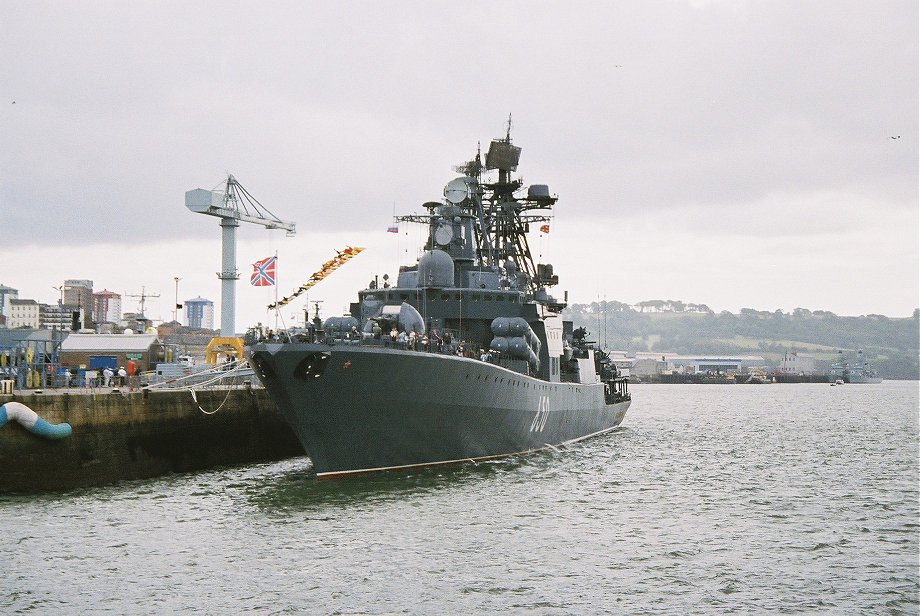 2011 - August: Triple suicide bombing kills police in Chechnya on Eid
2011 - September: Train crash bromine chemical leak in Russian city of Chelyabinsk
2011 - September: President Medvedev supports Vladimir Putin's presidential candidate bid.
2011 - October: Presidential candidate Vaimir Putin calls for 'Eurasian Union' of ex-Soviet republics.
2011 - October: Chinese man arrested for espionage.
2011 - October: French President Sarkozy in Georgian capital Tbilisi says Russia should stop making "threats" against its neighbour.
2011 - October: Russia signs free trade agreement with Ukraine, Belarus, Kazakhstan, Armenia, Kyrgyzstan, Moldova and Tajikistan.
2011 - October: Katia Zatuliveter is accused of starting an affair with Lib Dem MP Mike Hancock because she saw him as politically influential.
2011 - November: Russia-Germany gas pipeline opens.
2011 - November: Georgia denied NATO membership for now.
2011 - November: Yulia Tymoshenko, Ukrainian former prime minister jailed for abuse of office in October, charged with new offences dating to 1990s.
2011 - November: Chechen poet Ruslan Akhtakhanov shot dead in Moscow.
2011 - November: Rusi describes Syria situation as civil war.
2011 - November: Russia signs with Belarus and Khazakstan to form EU-style Eurasian Union by 2015.
2011 - November: Tajikistan releases Russian pilot.
2011 - November: Russia threatens to deploy missiles on Europe border if missile defence plan brought to fruition.
2011 - November: 21st - Russia PM Vladimir Putin 'booed' at martial arts fight. Later showings have boos edited out.
2011 - November: Belarus signs gas deal with Russia.
2011 - November: 29th - Russia has turned on a new incoming missile early warning system in its westernmost region in response to US plans for a missile shield in Europe.
2011 - November: 29th - 'Russian spy' Katia Zatuliveter wins fight to stay in UK
2011 - December: 4th - Loss of face for Putin as support for party falls in Russian elections.
2011 - December: 16th - HMS York has been tracking aircraft carrier Admiral Kuznetsov, a destroyer and two frigates in the Moray Firth.
2011 - December: 24th - Russia's opposition leaders, former ministers and celebrities have joined tens of thousands of people demonstrating in sub-zero temperatures in Moscow and other Russian cities.
2011 - December: 29th - Fire broke out on board a nuclear submarine Yekaterinburg docked at a shipyard in the Murmansk region of northern Russia.
2012 - January: Eurasian Commission (modelled on the European Commission) and the Eurasian Economic Space, started work on 1 January 2012.
2012 - January: K-535 Yuriy Dolgorukiy successfully completed her sea trials.
2012 - January: Sukhoi failed to enter the bidding competition, for the South Korean next generation fighter, by the deadline.
2011 - August: Triple suicide bombing kills police in Chechnya on Eid
2011 - September: Train crash bromine chemical leak in Russian city of Chelyabinsk
2011 - September: President Medvedev supports Vladimir Putin's presidential candidate bid.
2011 - October: Presidential candidate Vaimir Putin calls for 'Eurasian Union' of ex-Soviet republics.
2011 - October: Chinese man arrested for espionage.
2011 - October: French President Sarkozy in Georgian capital Tbilisi says Russia should stop making "threats" against its neighbour.
2011 - October: Russia signs free trade agreement with Ukraine, Belarus, Kazakhstan, Armenia, Kyrgyzstan, Moldova and Tajikistan.
2011 - October: Katia Zatuliveter is accused of starting an affair with Lib Dem MP Mike Hancock because she saw him as politically influential.
2011 - November: Russia-Germany gas pipeline opens.
2011 - November: Georgia denied NATO membership for now.
2011 - November: Yulia Tymoshenko, Ukrainian former prime minister jailed for abuse of office in October, charged with new offences dating to 1990s.
2011 - November: Chechen poet Ruslan Akhtakhanov shot dead in Moscow.
2011 - November: Rusi describes Syria situation as civil war.
2011 - November: Russia signs with Belarus and Khazakstan to form EU-style Eurasian Union by 2015.
2011 - November: Tajikistan releases Russian pilot.
2011 - November: Russia threatens to deploy missiles on Europe border if missile defence plan brought to fruition.
2011 - November: 21st - Russia PM Vladimir Putin 'booed' at martial arts fight. Later showings have boos edited out.
2011 - November: Belarus signs gas deal with Russia.
2011 - November: 29th - Russia has turned on a new incoming missile early warning system in its westernmost region in response to US plans for a missile shield in Europe.
2011 - November: 29th - 'Russian spy' Katia Zatuliveter wins fight to stay in UK
2011 - December: 4th - Loss of face for Putin as support for party falls in Russian elections.
2011 - December: 16th - HMS York has been tracking aircraft carrier Admiral Kuznetsov, a destroyer and two frigates in the Moray Firth.
2011 - December: 24th - Russia's opposition leaders, former ministers and celebrities have joined tens of thousands of people demonstrating in sub-zero temperatures in Moscow and other Russian cities.
2011 - December: 29th - Fire broke out on board a nuclear submarine Yekaterinburg docked at a shipyard in the Murmansk region of northern Russia.
2012 - January: Eurasian Commission (modelled on the European Commission) and the Eurasian Economic Space, started work on 1 January 2012.
2012 - January: K-535 Yuriy Dolgorukiy successfully completed her sea trials.
2012 - January: Sukhoi failed to enter the bidding competition, for the South Korean next generation fighter, by the deadline.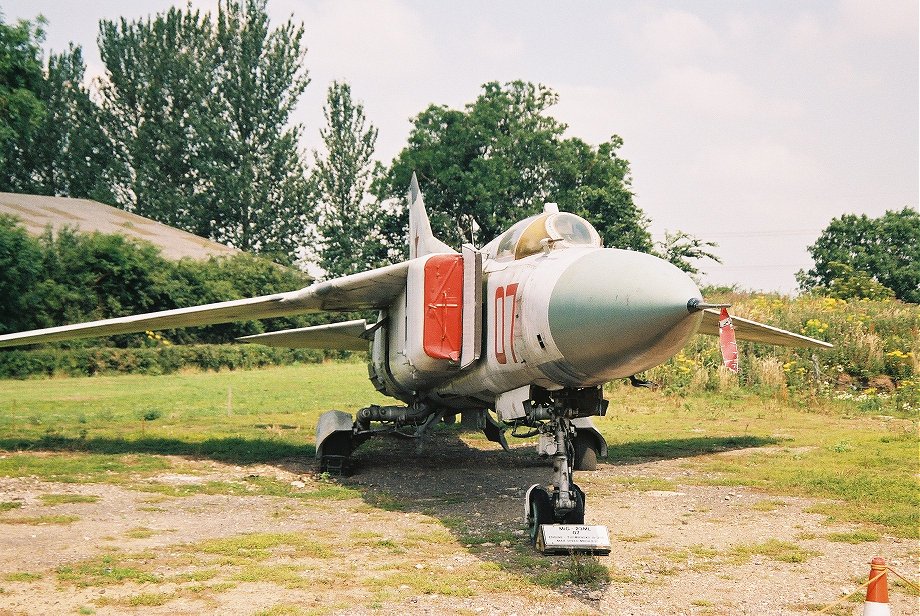 2012 - January: 19th - Britain admitted that it was caught spying when Russia exposed its use of a fake rock in Moscow to conceal electronic equipment. Russia made the allegations in January 2006.
2012 - February: First of French Mistral class for Russia starts construction. She will be the Vladivostok, followed by Sevastopol.
2012 - February 20th - Russian Prime Minister Vladimir Putin has backed the modernisation of his country's military, less than a fortnight before the presidential vote.
2012 - February 27th - Ukrainian security services have thwarted a plot to kill Russian PM Vladimir Putin, Russian officials say.
2012 - March: Uralvagonzavod announces the first prototype of Russia’s new main battle tank built on the Armata Universal Combat Platform by 2013, whereas batch production and deliveries to the Russian armed forces are expected to start in 2015. T-90 orders are cancelled.
2012 - March 5th - Putin wins presidential election. The election was "clearly skewed" in favour of the winner, Vladimir Putin, international monitors have said.
2012 - March 10th - Protests have been held in Russia over Vladimir Putin's presidential election victory but turnout in Moscow was sharply down on earlier rallies.
2012 - April 4th - Russian-built nuclear submarine joins Indian navy as INS Chakra II, formerly K-152 Nerpa.
2012 - April 22nd - China and Russia launch naval exercises in Yellow Sea.
2012 - May 7th - Vladimir Putin is sworn in for a third term as president of Russia.
2012 - May 18th - The court in Yekaterinburg sentenced Alexander Gniteyev to eight years in a high-security prison, without giving details of his crime. He is said to have passed information on the Bulava missile to an unnamed foreign power.
2012 - May 23rd - A new intercontinental ballistic missile (ICBM) so secret it has no name yet has been successfully tested in Russia, the defence ministry says.
2012 - May 26th - Russia PM Medvedev elected United Russia leader.
2012 - June 12th - Thousands of Russian anti-government protesters have taken part in a major rally in Moscow to demand fresh elections and a new president.
2012 - June 19th - Ship 'carrying attack helicopters to Syria' halted off Scotland heads for Russia after insurance pulled by UK soft power.
2012 - June 29th - President Vladimir Putin says he wants to make Russia the fifth-biggest economy in the world. It currently stands at number 11.
2012 - July: 3rd - Russian Prime Minister Dmitry Medvedev has angered Japan by paying another visit to the disputed Kuril Islands.
2012 - January: 19th - Britain admitted that it was caught spying when Russia exposed its use of a fake rock in Moscow to conceal electronic equipment. Russia made the allegations in January 2006.
2012 - February: First of French Mistral class for Russia starts construction. She will be the Vladivostok, followed by Sevastopol.
2012 - February 20th - Russian Prime Minister Vladimir Putin has backed the modernisation of his country's military, less than a fortnight before the presidential vote.
2012 - February 27th - Ukrainian security services have thwarted a plot to kill Russian PM Vladimir Putin, Russian officials say.
2012 - March: Uralvagonzavod announces the first prototype of Russia’s new main battle tank built on the Armata Universal Combat Platform by 2013, whereas batch production and deliveries to the Russian armed forces are expected to start in 2015. T-90 orders are cancelled.
2012 - March 5th - Putin wins presidential election. The election was "clearly skewed" in favour of the winner, Vladimir Putin, international monitors have said.
2012 - March 10th - Protests have been held in Russia over Vladimir Putin's presidential election victory but turnout in Moscow was sharply down on earlier rallies.
2012 - April 4th - Russian-built nuclear submarine joins Indian navy as INS Chakra II, formerly K-152 Nerpa.
2012 - April 22nd - China and Russia launch naval exercises in Yellow Sea.
2012 - May 7th - Vladimir Putin is sworn in for a third term as president of Russia.
2012 - May 18th - The court in Yekaterinburg sentenced Alexander Gniteyev to eight years in a high-security prison, without giving details of his crime. He is said to have passed information on the Bulava missile to an unnamed foreign power.
2012 - May 23rd - A new intercontinental ballistic missile (ICBM) so secret it has no name yet has been successfully tested in Russia, the defence ministry says.
2012 - May 26th - Russia PM Medvedev elected United Russia leader.
2012 - June 12th - Thousands of Russian anti-government protesters have taken part in a major rally in Moscow to demand fresh elections and a new president.
2012 - June 19th - Ship 'carrying attack helicopters to Syria' halted off Scotland heads for Russia after insurance pulled by UK soft power.
2012 - June 29th - President Vladimir Putin says he wants to make Russia the fifth-biggest economy in the world. It currently stands at number 11.
2012 - July: 3rd - Russian Prime Minister Dmitry Medvedev has angered Japan by paying another visit to the disputed Kuril Islands.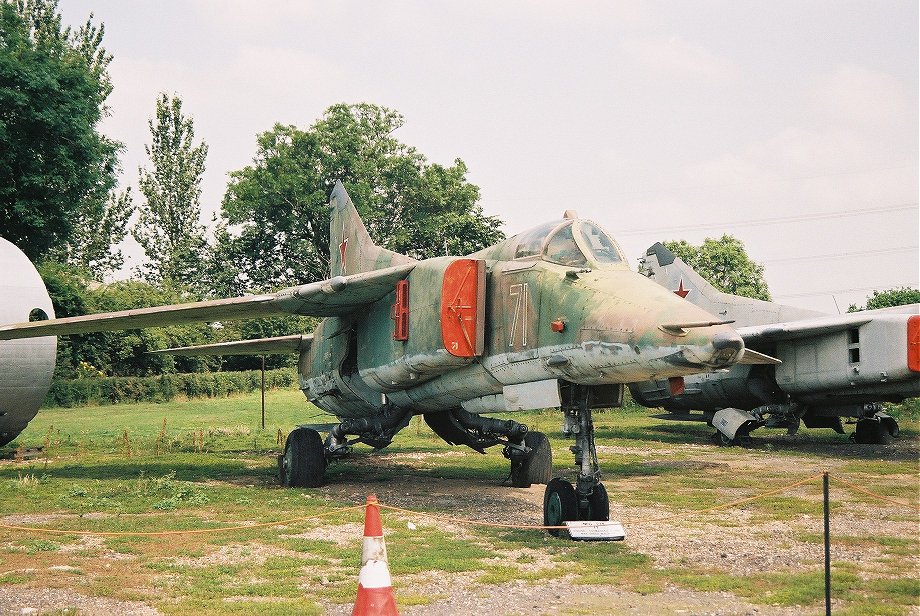 2012 - July: 7th - Dozens have been killed after torrential rains leading to flash floods swept through parts of the south Russian Krasnodar region.
2012 - July: Vikramaditya has second sea trials in the Barents Sea
2012 - July: 19th - The Mufti of Tatarstan, Ildus Fayzov, was injured when his car was blown up as he left a radio station in Kazan. A former deputy mufti, Valiulla Yakupov, was shot dead near his home at about the same time.
2012 - July: 27th - it was announced by the Russian Navy commander-in-chief that construction of the Lada class submarines will resume, having undergone design changes.
2012 - July: K-535 Yuriy Dolgorukiy officially enters the Russian Navy fleet.
2012 - August: 3rd - Part of Russia's Northern Fleet, the Alexander Otrakovsky, the Georgy Pobedonosets and the Kondopoga are denied to be heading for Syrian port of Tartus.
2012 - August: 17th - Three members of the group Pussy Riot jailed this month for staging an anti-Vladimir Putin protest in a Moscow cathedral.
2012 - August: 21st - Severnaya Verf shipyard announces that it has taken out two four-year loans worth RUB 16.23bn (approx. USD 509.88m) from state-owned Sberbank. The money will be used on the construction of Admiral Gorshkov class frigates. Some 20 - 30 ships are expected.
2012 - August: 22nd - Russia finally joins the World Trade Organization after 18 years of negotiations.
2012 - August: 28th - A bomb blast has killed leading Islamic scholar Sheikh Said Afandi and at least five others in Russia's volatile North Caucasus republic of Dagestan.
2012 - August: 28th - Russian activist Taisiya Osipova given long sentence. Osipova said the drugs were planted in revenge for her refusal to testify against her husband, Sergei Fomchenkov, a leader of the Other Russia movement.
2012 - September: 21st - First flight of Sukhoi Su-30SM multi-role fighter with second aircraft ready on 25th.
2012 - December: 12th - Sukhoi PAK FA T-50-4/Bort 054 joins flight test programme at Zhukovsky.
2012 - December: 17th - New Tu-214R reconnaissance aircraft flies off the Japanese coast.
2012 - December: 25th - Five Su-34 Fullback tactical bombers delivered to 7000 Air Base at Voronezh-Baltimor.
2012 - December: Ilyushin and Myasishchev announce upgrade programme for Il-38 aircraft to new Il-38N with NII Leninets Novella suite.
2012 - December: Russian Air Force ditches 2008 structure change and reverts to Soviet system of one air base, one regiment.
2013 - January: Beginning of Putin's 100 ship New Navy and pivot to the Arctic Sea.
2013 - January: 4th - General Staff in Armed Forces quoted in Izvestia saying they are disappointed in new Tu-214R reconnaissance aircraft, esp at low speeds.
2013 - January: Five more Su-34 Fullback tactical bombers delivered to 7000 Air Base at Voronezh-Baltimor.
2013 - February: First short-notice live fire of Black Sea Fleet in 20 years; this uncovers many problems including hardware.
2013 - February: 24th - Tu-95MS bomber Bort 21 red written off after onboard fire.
2013 - March: short notice live-fire exercise by Black Sea Fleet repeated after poor performance in February.
2013 - April: Newly upgraded MiG-31BM deployed to Novosibirsk in Siberia.
2013 - May: Russian Navy reveals new Mistral class assault vessels are to be based in Vladivostok and Petropavlovsk-Kamchatsky. Two for the Pacific Fleet, two for the Northern Fleet.
2013 - May: 26th - Oldest remaining Udaloy I class Vice Admiral Kulakov 626 is on display at the Liner Terminal, Liverpool.
2013 - June: 16th - Vladimir Putin meets with David Cameron ahead of the G8 summit in Lough Erne, County Fermanagh, to discuss Syria.
2013 - June: 19th - Obama in Berlin calls for US-Russia nuclear weapons cuts
2013 - June: 21st - Rosneft in $270bn China oil supply deal.
2013 - June: 24th - US Intelligence leaker Edward Snowden Moscow arrival.
2013 - June: 25th - Five years on, Georgia makes up with Russia.
2013 - July: 5th - China and Russia conduct joint naval drill.
2013 - July: 16th - Putin inspects biggest post-Soviet war games.
2013 - July: 16th - Fugitive Edward Snowden applies for asylum in Russia.
2013 - July: 18th - Alexei Navalny convicted: The fates of Putin's enemies.
2013 - July: 24th - Politkovskaya family boycott murder trial over jury.
2013 - July: 26th - Russia has stopped fuelling the famous Black Sea Fleet at its naval base in a bid to avoid taxes, it's reported.
2013 - Aug: 1st - US intelligence leaker Edward Snowden has left the Moscow airport where he has been staying since June.
2013 - Aug: 8th - Medvedev calls Georgian president 'a war criminal' on conflict anniversary.
2013 - Aug: 14th - Eighteen sailors on board the INS Sindhurakshak are feared dead after massive explosions on the former Russian submarine.
2013 - Aug: 17th - Russia cracks down on illegal immigrants.
2013 - Aug: 22nd - Military hovercraft shocks sunbathers in Russia.
2013 - Aug: 29th - Belarus-Russia potash dispute escalates with trade tensions.
2013 - Aug: 29th - Syria crisis: David Cameron makes case for military action.
2013 - Sept: 4th - Russia's President Putin warns US over Syria military action.
2013 - Sept: 15th - Syria hails US-Russia deal on chemical weapons.
2013 - Sept: 20th - Russia's Putin shines at Valdai summit as he castigates West.
2013 - Sept: 20th - Vladislav Surkov, Russian President Vladimir Putin's former political strategist, has returned to the Kremlin after his sudden resignation in May.
2013 - Sept: 23rd - Russia 'seizes' Greenpeace ship after Arctic rig protest.
2013 - Sept: 28th - Syria chemical weapons: UN adopts binding resolution.
2013 - Oct: 23rd - Prime Minister Dmitry Medvedev met President Xi Jinping and Premier Li Keqiang in Beijing on Tuesday to sign a raft of deals.
2013 - Oct: 28th - Romania works on US missile shield at Deveselu base.
2013 - Oct: 31st - Syria chemical weapons equipment destroyed, says OPCW.
2013 - Nov: 14th - Russia and Egypt in 'historic' talks.
2012 - July: 7th - Dozens have been killed after torrential rains leading to flash floods swept through parts of the south Russian Krasnodar region.
2012 - July: Vikramaditya has second sea trials in the Barents Sea
2012 - July: 19th - The Mufti of Tatarstan, Ildus Fayzov, was injured when his car was blown up as he left a radio station in Kazan. A former deputy mufti, Valiulla Yakupov, was shot dead near his home at about the same time.
2012 - July: 27th - it was announced by the Russian Navy commander-in-chief that construction of the Lada class submarines will resume, having undergone design changes.
2012 - July: K-535 Yuriy Dolgorukiy officially enters the Russian Navy fleet.
2012 - August: 3rd - Part of Russia's Northern Fleet, the Alexander Otrakovsky, the Georgy Pobedonosets and the Kondopoga are denied to be heading for Syrian port of Tartus.
2012 - August: 17th - Three members of the group Pussy Riot jailed this month for staging an anti-Vladimir Putin protest in a Moscow cathedral.
2012 - August: 21st - Severnaya Verf shipyard announces that it has taken out two four-year loans worth RUB 16.23bn (approx. USD 509.88m) from state-owned Sberbank. The money will be used on the construction of Admiral Gorshkov class frigates. Some 20 - 30 ships are expected.
2012 - August: 22nd - Russia finally joins the World Trade Organization after 18 years of negotiations.
2012 - August: 28th - A bomb blast has killed leading Islamic scholar Sheikh Said Afandi and at least five others in Russia's volatile North Caucasus republic of Dagestan.
2012 - August: 28th - Russian activist Taisiya Osipova given long sentence. Osipova said the drugs were planted in revenge for her refusal to testify against her husband, Sergei Fomchenkov, a leader of the Other Russia movement.
2012 - September: 21st - First flight of Sukhoi Su-30SM multi-role fighter with second aircraft ready on 25th.
2012 - December: 12th - Sukhoi PAK FA T-50-4/Bort 054 joins flight test programme at Zhukovsky.
2012 - December: 17th - New Tu-214R reconnaissance aircraft flies off the Japanese coast.
2012 - December: 25th - Five Su-34 Fullback tactical bombers delivered to 7000 Air Base at Voronezh-Baltimor.
2012 - December: Ilyushin and Myasishchev announce upgrade programme for Il-38 aircraft to new Il-38N with NII Leninets Novella suite.
2012 - December: Russian Air Force ditches 2008 structure change and reverts to Soviet system of one air base, one regiment.
2013 - January: Beginning of Putin's 100 ship New Navy and pivot to the Arctic Sea.
2013 - January: 4th - General Staff in Armed Forces quoted in Izvestia saying they are disappointed in new Tu-214R reconnaissance aircraft, esp at low speeds.
2013 - January: Five more Su-34 Fullback tactical bombers delivered to 7000 Air Base at Voronezh-Baltimor.
2013 - February: First short-notice live fire of Black Sea Fleet in 20 years; this uncovers many problems including hardware.
2013 - February: 24th - Tu-95MS bomber Bort 21 red written off after onboard fire.
2013 - March: short notice live-fire exercise by Black Sea Fleet repeated after poor performance in February.
2013 - April: Newly upgraded MiG-31BM deployed to Novosibirsk in Siberia.
2013 - May: Russian Navy reveals new Mistral class assault vessels are to be based in Vladivostok and Petropavlovsk-Kamchatsky. Two for the Pacific Fleet, two for the Northern Fleet.
2013 - May: 26th - Oldest remaining Udaloy I class Vice Admiral Kulakov 626 is on display at the Liner Terminal, Liverpool.
2013 - June: 16th - Vladimir Putin meets with David Cameron ahead of the G8 summit in Lough Erne, County Fermanagh, to discuss Syria.
2013 - June: 19th - Obama in Berlin calls for US-Russia nuclear weapons cuts
2013 - June: 21st - Rosneft in $270bn China oil supply deal.
2013 - June: 24th - US Intelligence leaker Edward Snowden Moscow arrival.
2013 - June: 25th - Five years on, Georgia makes up with Russia.
2013 - July: 5th - China and Russia conduct joint naval drill.
2013 - July: 16th - Putin inspects biggest post-Soviet war games.
2013 - July: 16th - Fugitive Edward Snowden applies for asylum in Russia.
2013 - July: 18th - Alexei Navalny convicted: The fates of Putin's enemies.
2013 - July: 24th - Politkovskaya family boycott murder trial over jury.
2013 - July: 26th - Russia has stopped fuelling the famous Black Sea Fleet at its naval base in a bid to avoid taxes, it's reported.
2013 - Aug: 1st - US intelligence leaker Edward Snowden has left the Moscow airport where he has been staying since June.
2013 - Aug: 8th - Medvedev calls Georgian president 'a war criminal' on conflict anniversary.
2013 - Aug: 14th - Eighteen sailors on board the INS Sindhurakshak are feared dead after massive explosions on the former Russian submarine.
2013 - Aug: 17th - Russia cracks down on illegal immigrants.
2013 - Aug: 22nd - Military hovercraft shocks sunbathers in Russia.
2013 - Aug: 29th - Belarus-Russia potash dispute escalates with trade tensions.
2013 - Aug: 29th - Syria crisis: David Cameron makes case for military action.
2013 - Sept: 4th - Russia's President Putin warns US over Syria military action.
2013 - Sept: 15th - Syria hails US-Russia deal on chemical weapons.
2013 - Sept: 20th - Russia's Putin shines at Valdai summit as he castigates West.
2013 - Sept: 20th - Vladislav Surkov, Russian President Vladimir Putin's former political strategist, has returned to the Kremlin after his sudden resignation in May.
2013 - Sept: 23rd - Russia 'seizes' Greenpeace ship after Arctic rig protest.
2013 - Sept: 28th - Syria chemical weapons: UN adopts binding resolution.
2013 - Oct: 23rd - Prime Minister Dmitry Medvedev met President Xi Jinping and Premier Li Keqiang in Beijing on Tuesday to sign a raft of deals.
2013 - Oct: 28th - Romania works on US missile shield at Deveselu base.
2013 - Oct: 31st - Syria chemical weapons equipment destroyed, says OPCW.
2013 - Nov: 14th - Russia and Egypt in 'historic' talks.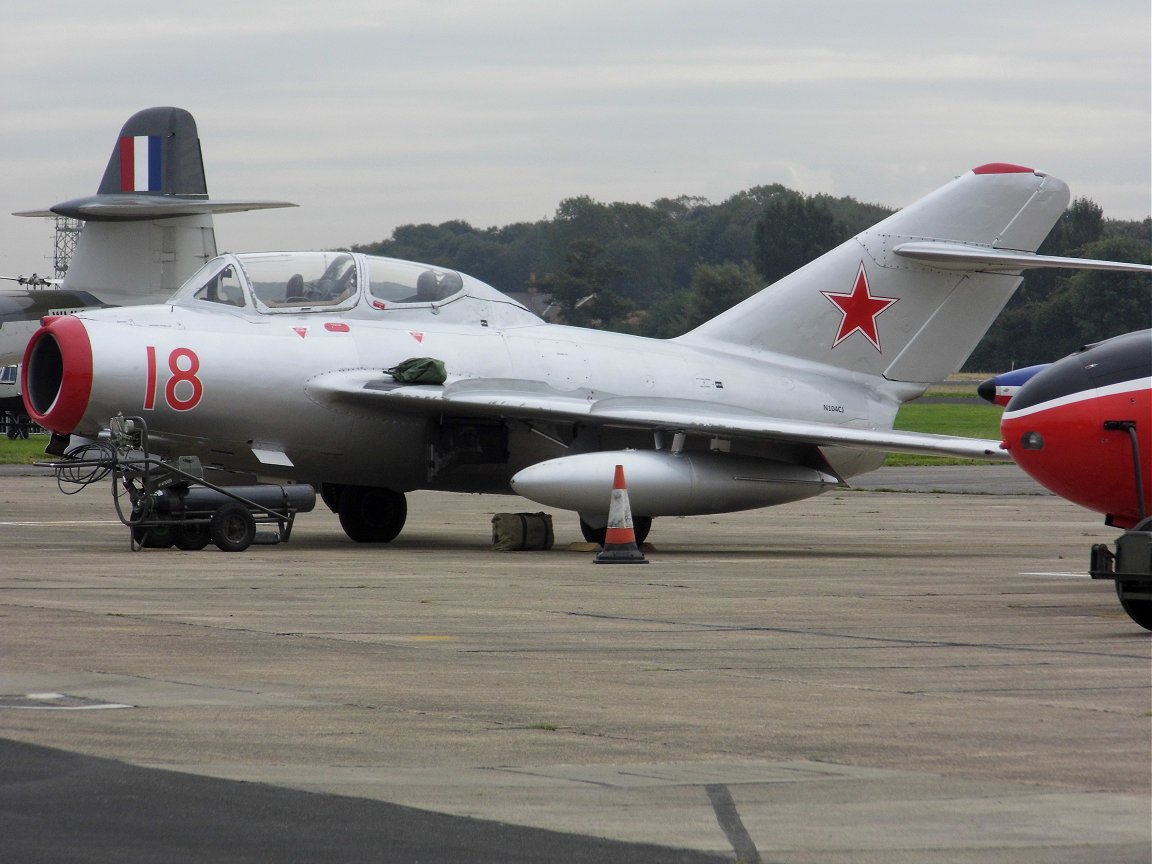 2013 - Nov: 22nd - Greenpeace prisoners released.
2013 - Nov: 29th - The diesel-electric submarine Novorossiysk launched - the first in a series of six to be delivered to the Russian Black Sea fleet over the next two years.
2013 - Dec: 9th - Russia's President Vladimir Putin has abolished the country's state-owned news agency RIA Novosti.
2013 - Dec: 10th - Russia’s military will have 500,000 soldiers serving on professional contracts.
2013 - Dec: 10th - “In 2014 more than 40 of the newest intercontinental ballistic missiles, 210 aircraft, and more than 250 armoured vehicles will enter into the armed forces,” President Putin said at a meeting of the country’s top military leadership.
2013 - Dec: 10th - Putin calls to focus on deployment of military forces in Arctic direction.
2013 - Dec: 12th - Russian Naval Ships to Make 20 More Foreign Visits by End 2013. 115 military-diplomatic visits in 2013, 80 in 2012.
2013 - Dec: 12th - Tomsk Nuclear Submarine to Be Returned to Russian Navy in April 2014.
2013 - Dec: 16th - Sukhoi Fulfilled the 5-year State Contract with the Final Batch of Su-34 Front-Line Bombers for the Russian Air Force.
2013 - Dec: 16th - New aviation training centre will be established at Skolkovo Innovation Centre.
2013 - Dec: 16th - Russia “quietly” moved 10 Iskander-M (SS-26 Stone) missile systems into Baltic exclave of Kaliningrad and along its border with the Baltic States and NATO members Estonia, Latvia and Lithuania.
2013 - Dec: 17th - New silo-based Sarmat ICBM will replace the world’s most powerful nuclear missile, the twenty-five-year-old R-36M2 (SS-18 Satan) by 2020.
2013 - Dec: 18th - New railway-based intercontinental ballistic missile (ICBM) system is planned to be equipped with solid-propellant multiple-warhead ICBM, created on the basis of the Yars ICBM.
2013 - Nov: 22nd - Greenpeace prisoners released.
2013 - Nov: 29th - The diesel-electric submarine Novorossiysk launched - the first in a series of six to be delivered to the Russian Black Sea fleet over the next two years.
2013 - Dec: 9th - Russia's President Vladimir Putin has abolished the country's state-owned news agency RIA Novosti.
2013 - Dec: 10th - Russia’s military will have 500,000 soldiers serving on professional contracts.
2013 - Dec: 10th - “In 2014 more than 40 of the newest intercontinental ballistic missiles, 210 aircraft, and more than 250 armoured vehicles will enter into the armed forces,” President Putin said at a meeting of the country’s top military leadership.
2013 - Dec: 10th - Putin calls to focus on deployment of military forces in Arctic direction.
2013 - Dec: 12th - Russian Naval Ships to Make 20 More Foreign Visits by End 2013. 115 military-diplomatic visits in 2013, 80 in 2012.
2013 - Dec: 12th - Tomsk Nuclear Submarine to Be Returned to Russian Navy in April 2014.
2013 - Dec: 16th - Sukhoi Fulfilled the 5-year State Contract with the Final Batch of Su-34 Front-Line Bombers for the Russian Air Force.
2013 - Dec: 16th - New aviation training centre will be established at Skolkovo Innovation Centre.
2013 - Dec: 16th - Russia “quietly” moved 10 Iskander-M (SS-26 Stone) missile systems into Baltic exclave of Kaliningrad and along its border with the Baltic States and NATO members Estonia, Latvia and Lithuania.
2013 - Dec: 17th - New silo-based Sarmat ICBM will replace the world’s most powerful nuclear missile, the twenty-five-year-old R-36M2 (SS-18 Satan) by 2020.
2013 - Dec: 18th - New railway-based intercontinental ballistic missile (ICBM) system is planned to be equipped with solid-propellant multiple-warhead ICBM, created on the basis of the Yars ICBM.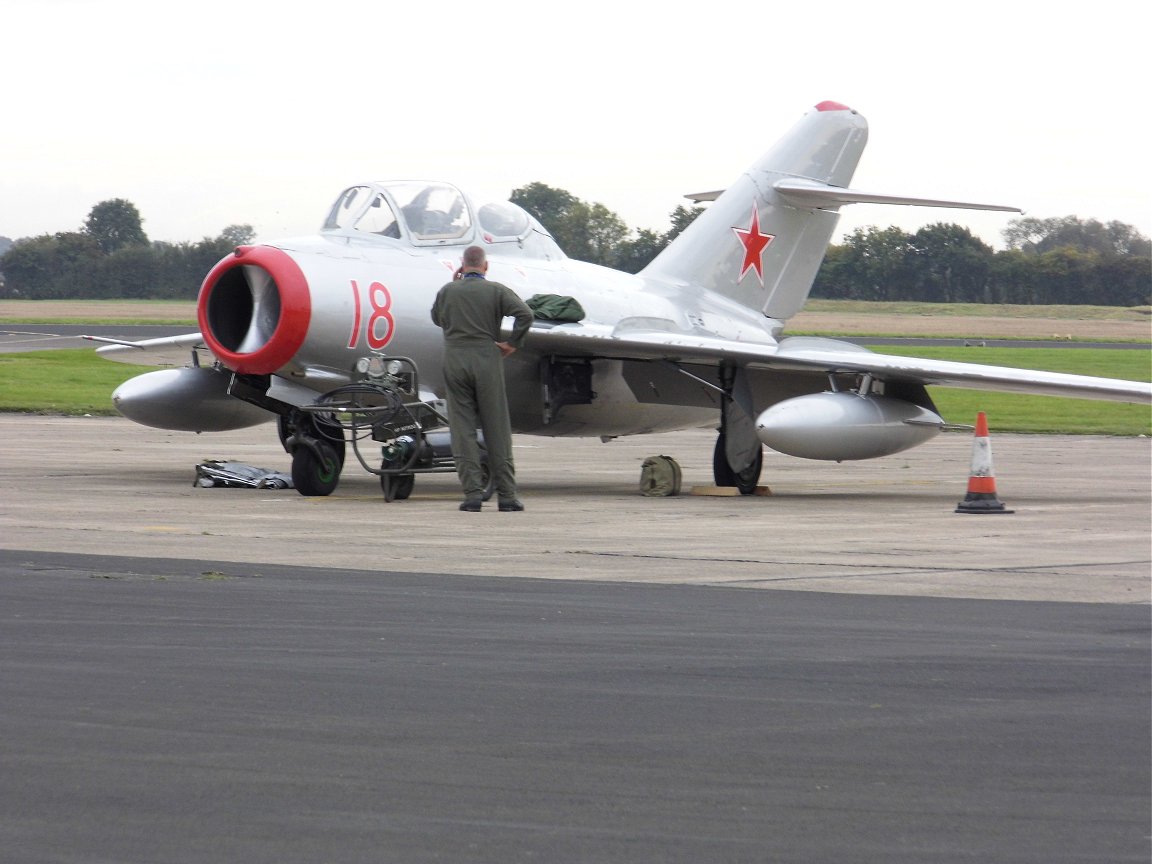 2013 - Dec: 18th - Next year two more missile brigades will be armed with the tactical missile systems Iskander-M.
2013 - Dec: 18th - Russia’s strategic missile force (SNF) will carry out sixteen missile launches in the coming year.
2013 - Dec: 18th - Russia’s SNF continues to be upgraded in strict compliance with the restrictions imposed by START-3, the strategic force commander, Colonel-General Sergei Karakayev said.
2013 - Dec: 18th - Russia slashes price of gas to Ukraine after that country declines entry into Europe. This splits Ukrainian opinion.
2013 - Dec: 18th - Russian military units will have their orders for Arctic region deployment by the middle of next week, Defence Minister Sergey Shoigu said.
2013 - Dec: 23rd - Russia flies lorries to Syria to move chemical weapons.
2013 - Dec: 29th - 'Suicide bomber' hits Russia's Volgograd train station.
2014 - Jan: 16th - First stage of flight testing of a flying testbed derived from Tu-204-120SE aircraft has been completed in China.
2014 - Jan: 21st - Aircraft carrier Vikramaditya has reached the shores of India, arriving at the Karwar naval base in Karnataka.
2014 - Jan: 22nd - Russia hunts suspected female Sochi suicide bomber: 23-year-old Ruzanna Ibragimova from Dagestan in the North Caucasus region.
2014 - Jan: 22nd - Russia plans cruise missile tests and bomber patrols for 2014.
2014 - Jan: 24th - The refit of Admiral Nakhimov/ Kalinin, one of Russia’s four heavy nuclear-powered missile cruisers, has begun after years of delays.
2014 - Jan: 30th - Second of six Varshavyanka-class diesel-electric submarines to be delivered to Russia’s Black Sea Fleet in the next two years, floating out this May.
2014 - Jan: 30th - Major-General Yuri Kuznetsov announces special cyber-defense units for 2017.
2014 - Jan: 30th - US briefs Nato: Russia has been accused by the US of breaching a key arms control treaty banning medium-range nuclear missiles. Russia has been conducting flight tests since 2008 of a ground-launched cruise missile.
2014 - Feb: 3rd - According to the calculations of developers, about 10 years will pass from initial design to the flag raising ceremony on the promising Russian aircraft carrier. Russia needed to create at least four aircraft carriers: two for the Pacific Fleet and two for the North Fleet.
2013 - Dec: 18th - Next year two more missile brigades will be armed with the tactical missile systems Iskander-M.
2013 - Dec: 18th - Russia’s strategic missile force (SNF) will carry out sixteen missile launches in the coming year.
2013 - Dec: 18th - Russia’s SNF continues to be upgraded in strict compliance with the restrictions imposed by START-3, the strategic force commander, Colonel-General Sergei Karakayev said.
2013 - Dec: 18th - Russia slashes price of gas to Ukraine after that country declines entry into Europe. This splits Ukrainian opinion.
2013 - Dec: 18th - Russian military units will have their orders for Arctic region deployment by the middle of next week, Defence Minister Sergey Shoigu said.
2013 - Dec: 23rd - Russia flies lorries to Syria to move chemical weapons.
2013 - Dec: 29th - 'Suicide bomber' hits Russia's Volgograd train station.
2014 - Jan: 16th - First stage of flight testing of a flying testbed derived from Tu-204-120SE aircraft has been completed in China.
2014 - Jan: 21st - Aircraft carrier Vikramaditya has reached the shores of India, arriving at the Karwar naval base in Karnataka.
2014 - Jan: 22nd - Russia hunts suspected female Sochi suicide bomber: 23-year-old Ruzanna Ibragimova from Dagestan in the North Caucasus region.
2014 - Jan: 22nd - Russia plans cruise missile tests and bomber patrols for 2014.
2014 - Jan: 24th - The refit of Admiral Nakhimov/ Kalinin, one of Russia’s four heavy nuclear-powered missile cruisers, has begun after years of delays.
2014 - Jan: 30th - Second of six Varshavyanka-class diesel-electric submarines to be delivered to Russia’s Black Sea Fleet in the next two years, floating out this May.
2014 - Jan: 30th - Major-General Yuri Kuznetsov announces special cyber-defense units for 2017.
2014 - Jan: 30th - US briefs Nato: Russia has been accused by the US of breaching a key arms control treaty banning medium-range nuclear missiles. Russia has been conducting flight tests since 2008 of a ground-launched cruise missile.
2014 - Feb: 3rd - According to the calculations of developers, about 10 years will pass from initial design to the flag raising ceremony on the promising Russian aircraft carrier. Russia needed to create at least four aircraft carriers: two for the Pacific Fleet and two for the North Fleet.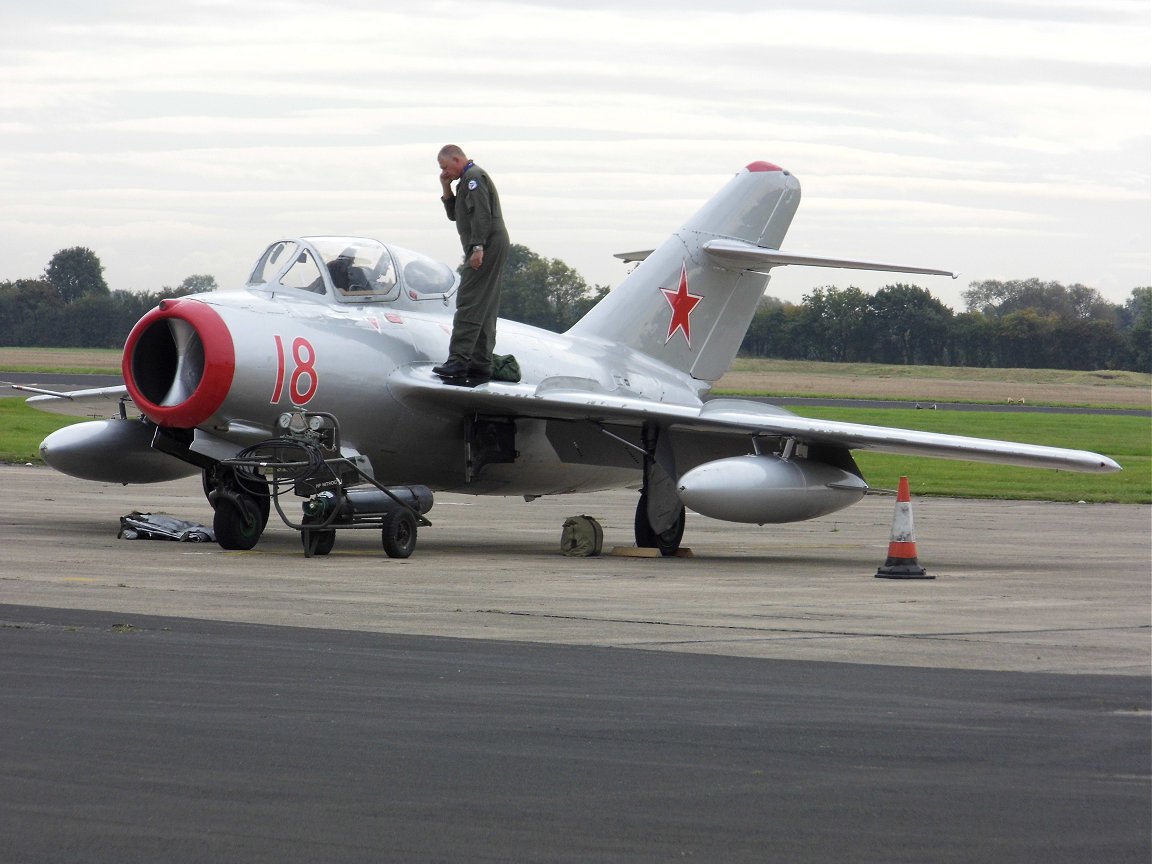 2014 - Feb: 3rd - The latest Russian ADS amphibious assault rifle will be shown for the first time abroad, at an arms exhibition Defexpo-2014 in India, ITAR –TASS reports. This assault rifle was created by Tula Instrument Design Bureau (KBP) from Rosteh holding "Vysokotochnye kompleksy". It can shoot both on land and under water, and currently has no equals.
2014 - Feb: 3rd - Precision weapons will be developed, but they will not replace nuclear ones, says the member of the Russian Academy of Science Georgy Rykovanov.
2014 - Feb: 3rd - It is planned to purchase new and upgraded models of armaments, military and special equipment that will allow equipping the army by 2015 with not less than 30% of the basic models of AMSE, determining the system of the Army weapons. Thus, for reconnaissance units there will soon be purchased drones, intelligence systems, control and communication system "Strelets", special armored cars "Rys", "Tigr-M ", etc.
2014 - Feb:4th - by the end of 2014 there will be formed two companies of electronic warfare (EW). Both units will join separate air assault brigades located in the Eastern Military District.
2014 - Feb: 6th - Ukraine within the framework of the planned activation of cooperation with Russia in the field of civil and military shipbuilding will make Russian colleagues acquainted with capacities of their enterprises in Kherson, Nikolaev, Sevastopol and Feodosiya.
2014 - Feb: 12th - Plasma screens for tanks are planned.
2014 - Feb: 13th - 320 billion rubles are to be spent on UAVs.
2014 - Feb: 14th - Off-shore underwater rigs being designed.
2014 - Feb: 14th - Project 20380 corvette Stoykiy tested radar and communications systems.
2014 - Feb: 17th - Tupolev to develop new bomber (PAK - YES).
2014 - Feb: 17th - Ulysses Bay, Vladivostok, sees piles driven for quay that will service the Vladivostok class amphibious ship. Vilyuchinsk Base improved for arriving Project 955 Alexander Nevsky.
2014 - Feb: 3rd - The latest Russian ADS amphibious assault rifle will be shown for the first time abroad, at an arms exhibition Defexpo-2014 in India, ITAR –TASS reports. This assault rifle was created by Tula Instrument Design Bureau (KBP) from Rosteh holding "Vysokotochnye kompleksy". It can shoot both on land and under water, and currently has no equals.
2014 - Feb: 3rd - Precision weapons will be developed, but they will not replace nuclear ones, says the member of the Russian Academy of Science Georgy Rykovanov.
2014 - Feb: 3rd - It is planned to purchase new and upgraded models of armaments, military and special equipment that will allow equipping the army by 2015 with not less than 30% of the basic models of AMSE, determining the system of the Army weapons. Thus, for reconnaissance units there will soon be purchased drones, intelligence systems, control and communication system "Strelets", special armored cars "Rys", "Tigr-M ", etc.
2014 - Feb:4th - by the end of 2014 there will be formed two companies of electronic warfare (EW). Both units will join separate air assault brigades located in the Eastern Military District.
2014 - Feb: 6th - Ukraine within the framework of the planned activation of cooperation with Russia in the field of civil and military shipbuilding will make Russian colleagues acquainted with capacities of their enterprises in Kherson, Nikolaev, Sevastopol and Feodosiya.
2014 - Feb: 12th - Plasma screens for tanks are planned.
2014 - Feb: 13th - 320 billion rubles are to be spent on UAVs.
2014 - Feb: 14th - Off-shore underwater rigs being designed.
2014 - Feb: 14th - Project 20380 corvette Stoykiy tested radar and communications systems.
2014 - Feb: 17th - Tupolev to develop new bomber (PAK - YES).
2014 - Feb: 17th - Ulysses Bay, Vladivostok, sees piles driven for quay that will service the Vladivostok class amphibious ship. Vilyuchinsk Base improved for arriving Project 955 Alexander Nevsky.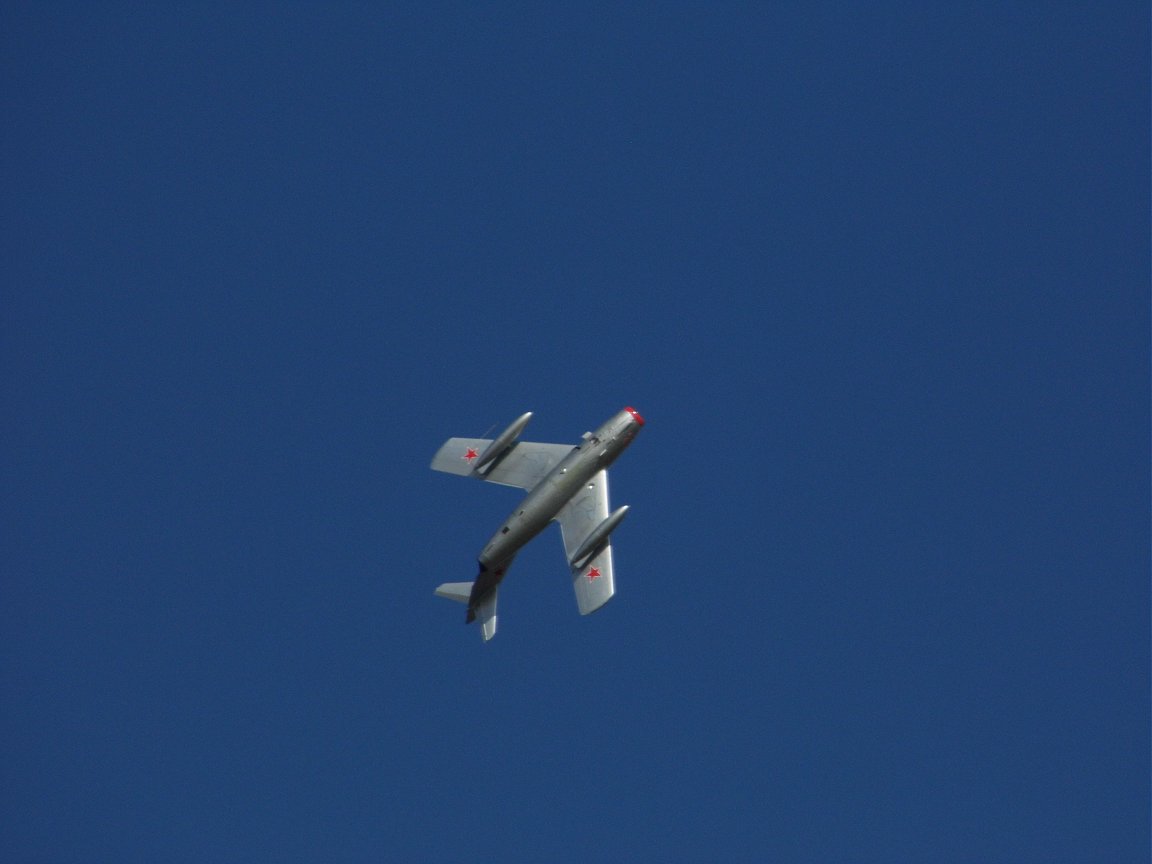 2014 - Feb: 18th - First post-Soviet large rocket, Angara, revealed at Plesetsk Space Centre.
2014 - Feb: 19th - Russia to sell Su-35 fighters to China, despite reservations over copyrights.
2014 - Feb: 20th - Black Sea fleet capability to be improved by Varshavyanka class submarine deliveries starting 2015.
2014 - Feb: 20th - Russia increases military arms sales to Iraq.
2014 - Feb: 20th - Russia's Mistral class amphibious ships Vladivostok and Sevastopol to deploy to the Pacific in 2015 and 2016.
2014 - Feb: 21st: Fourth Project 636 SSK Krasnodar laid down.
2014 - Feb: 21st: First T-50 Stealth fighter deployed to Russian Air Force in Astrakhan region.
2014 - Feb: 21st - Putin announces Russia to continue to reinforce its military.
2014 - Feb: 21st - Lada class sub to feature Air-Independent Propulsion by 2016.
2014 - Feb: 26th - Russia is planning to expand its permanent military presence outside its borders by placing military bases in a number of foreign countries, Defense Minister Sergei Shoigu said Wednesday. Shoigu said the list includes Vietnam, Cuba, Venezuela, Nicaragua, the Seychelles, Singapore and several other countries.
2014 - Feb: 26th - Moscow has informed the North Atlantic Alliance of the surprise inspection of the Russian troops in the Western and Central Military Districts that started on Wednesday, February 26. A total of 110,000 troops are participating in the exercise. “Ninety aircraft, over 110 helicopters, up to 880 tanks, over 1,200 pieces of military hardware and as many as 80 ships and vessels will be involved,” Russian Defence Minister Sergei Shoigu said.
2014 - Feb: 27th - Snap drills started by Russia are not said to be linked to the ousting of the pro-Russian Ukrainian leader.
2014 - Feb: 27th - Three Project 21631 Buyun-M corvettes to be delivered to the Caspian Sea fleet starting with Veliky Ustyug this year.
2014 - Feb: 28th - Soldiers minus markings, thought to be Russian, appear in the Crimea. A Russian frigate patrols off Balaklava.
2014 - Feb: 28th - 16:39: A convoy of nine Russian armoured personnel carriers and a truck have been seen by AP journalists on a road between the Crimean port city of Sevastopol and the regional capital, Sinferopol, the news agency says.
2014 - Feb: 28th - 17:05: All aircraft movements at Sevastopol's Belbek airfield are stopped after unidentified individuals seized the runway, a military source tells the Interfax-Ukraine news agency (BBC Monitoring).
2014 - Feb: 28th - Pro-Russian gunmen seize key buildings in Crimean capital Simferopol. Unidentified gunmen in combat uniforms appear outside Crimea's main airports, sparking fears of Russian military intervention. At first news conference since fleeing Ukraine, Viktor Yanukovych, now in southern Russia, insists he remains president and opposes military intervention or division of Ukraine.
2014 - March: 1st - Russian parliament approves President Vladimir Putin's request to use Russian forces in Ukraine. In Kiev, acting President Olexander Turchynov puts army on full alert. Large pro-Russian rallies in several Ukrainian cities outside Crimea, including second-biggest city Kharkiv, West reacts with alarm: US President Barack Obama tells Mr Putin in 90-minute telephone conversation to pull forces back to bases. Mr Putin says Moscow has right to protect its interests and those of Russian-speakers in Ukraine.
2014 - March: 2nd - Ukraine's interim PM Yatsenyuk says Russia has declared war. US says Russia in control of Crimea. Ukraine's newly appointed naval chief defects.
2014 - March: 3rd - "Black Monday" on Russian stock markets as reports suggest Russia's military issued deadline for Ukrainian forces in Crimea to surrender. These reports are later denied. Russia's UN envoy says that toppled President Yanukovych asked Russian president in writing for use of force.
2014 - March: 4th - Russian President Vladimir Putin breaks silence, denying Russian troops have besieged Ukrainian forces in Crimea, asserting they are self-defence forces. Ukrainian installations are surrounded by soldiers apparently in Russian uniforms who prevent a Ukrainian force from retaking Belbek airbase.
2014 - March: 5th - Talks in Paris between Russia and Western powers end without agreement. Russian Foreign Minister Sergei Lavrov refuses to meet his new Ukrainian counterpart. UN envoy to Crimea Robert Serry cuts short his mission there after being threatened by armed men.
2014 - Feb: 18th - First post-Soviet large rocket, Angara, revealed at Plesetsk Space Centre.
2014 - Feb: 19th - Russia to sell Su-35 fighters to China, despite reservations over copyrights.
2014 - Feb: 20th - Black Sea fleet capability to be improved by Varshavyanka class submarine deliveries starting 2015.
2014 - Feb: 20th - Russia increases military arms sales to Iraq.
2014 - Feb: 20th - Russia's Mistral class amphibious ships Vladivostok and Sevastopol to deploy to the Pacific in 2015 and 2016.
2014 - Feb: 21st: Fourth Project 636 SSK Krasnodar laid down.
2014 - Feb: 21st: First T-50 Stealth fighter deployed to Russian Air Force in Astrakhan region.
2014 - Feb: 21st - Putin announces Russia to continue to reinforce its military.
2014 - Feb: 21st - Lada class sub to feature Air-Independent Propulsion by 2016.
2014 - Feb: 26th - Russia is planning to expand its permanent military presence outside its borders by placing military bases in a number of foreign countries, Defense Minister Sergei Shoigu said Wednesday. Shoigu said the list includes Vietnam, Cuba, Venezuela, Nicaragua, the Seychelles, Singapore and several other countries.
2014 - Feb: 26th - Moscow has informed the North Atlantic Alliance of the surprise inspection of the Russian troops in the Western and Central Military Districts that started on Wednesday, February 26. A total of 110,000 troops are participating in the exercise. “Ninety aircraft, over 110 helicopters, up to 880 tanks, over 1,200 pieces of military hardware and as many as 80 ships and vessels will be involved,” Russian Defence Minister Sergei Shoigu said.
2014 - Feb: 27th - Snap drills started by Russia are not said to be linked to the ousting of the pro-Russian Ukrainian leader.
2014 - Feb: 27th - Three Project 21631 Buyun-M corvettes to be delivered to the Caspian Sea fleet starting with Veliky Ustyug this year.
2014 - Feb: 28th - Soldiers minus markings, thought to be Russian, appear in the Crimea. A Russian frigate patrols off Balaklava.
2014 - Feb: 28th - 16:39: A convoy of nine Russian armoured personnel carriers and a truck have been seen by AP journalists on a road between the Crimean port city of Sevastopol and the regional capital, Sinferopol, the news agency says.
2014 - Feb: 28th - 17:05: All aircraft movements at Sevastopol's Belbek airfield are stopped after unidentified individuals seized the runway, a military source tells the Interfax-Ukraine news agency (BBC Monitoring).
2014 - Feb: 28th - Pro-Russian gunmen seize key buildings in Crimean capital Simferopol. Unidentified gunmen in combat uniforms appear outside Crimea's main airports, sparking fears of Russian military intervention. At first news conference since fleeing Ukraine, Viktor Yanukovych, now in southern Russia, insists he remains president and opposes military intervention or division of Ukraine.
2014 - March: 1st - Russian parliament approves President Vladimir Putin's request to use Russian forces in Ukraine. In Kiev, acting President Olexander Turchynov puts army on full alert. Large pro-Russian rallies in several Ukrainian cities outside Crimea, including second-biggest city Kharkiv, West reacts with alarm: US President Barack Obama tells Mr Putin in 90-minute telephone conversation to pull forces back to bases. Mr Putin says Moscow has right to protect its interests and those of Russian-speakers in Ukraine.
2014 - March: 2nd - Ukraine's interim PM Yatsenyuk says Russia has declared war. US says Russia in control of Crimea. Ukraine's newly appointed naval chief defects.
2014 - March: 3rd - "Black Monday" on Russian stock markets as reports suggest Russia's military issued deadline for Ukrainian forces in Crimea to surrender. These reports are later denied. Russia's UN envoy says that toppled President Yanukovych asked Russian president in writing for use of force.
2014 - March: 4th - Russian President Vladimir Putin breaks silence, denying Russian troops have besieged Ukrainian forces in Crimea, asserting they are self-defence forces. Ukrainian installations are surrounded by soldiers apparently in Russian uniforms who prevent a Ukrainian force from retaking Belbek airbase.
2014 - March: 5th - Talks in Paris between Russia and Western powers end without agreement. Russian Foreign Minister Sergei Lavrov refuses to meet his new Ukrainian counterpart. UN envoy to Crimea Robert Serry cuts short his mission there after being threatened by armed men.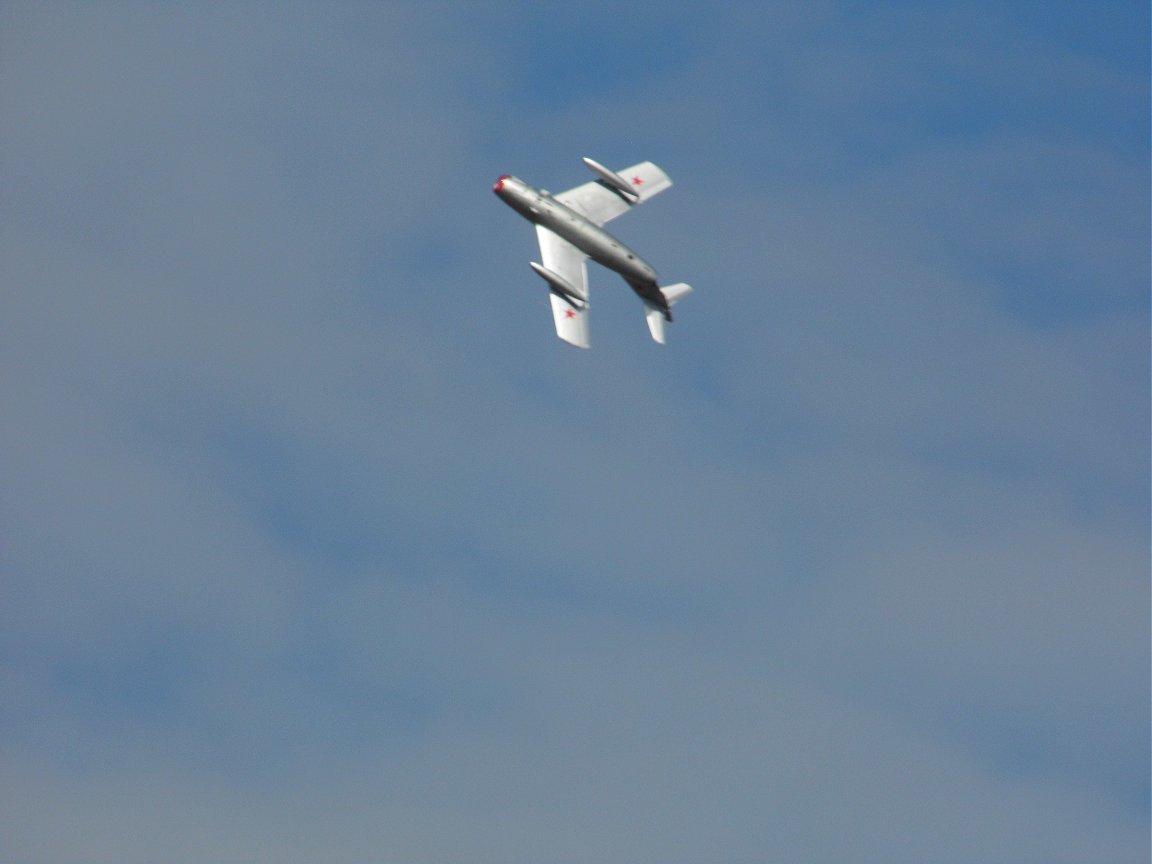 2014 - March: 6th - Russian Navy's Ochakov, a Kara-class cruiser, was intentionally sunk to blockade the Ukrainian Navy ships.
2014 - March: 6th - Crimea's parliament asks to join Russia and will put the decision to a referendum on 16 March.
2014 - March: 7th - 15:53: The website of Kerch Net TV has posted a video said to show some 20 Russian military vehicles driving through the centre of Kerch, located on the coast of the Kerch Strait that separates Crimea and Russia.
2014 - March: 16th - Crimea voters choose to secede in disputed referendum.
2014 - March: 17th - Crimean parliament declares independence and formally applies to join Russia.
2014 - March: 18th - Russian and Crimean leaders sign deal in Moscow to join the region to Russia. Putin compares Crimea to Kosovo and states West is inconsistent in allowing Kosovo independence and yet arguing Crimea is against international law. Putin accuses America and Western Europe of crossing a red line.
2014 - March: 18th - 16:17 Ukrainian Prime Minister Arseny Yatseniuk says the conflict in Crimea has entered a military phase. "Today, Russian soldiers began shooting at Ukrainian servicemen and this is a war crime without any expiry under a statute of limitations," Ukrainian PM Yatseniuk continues. Prime Minister Yatseniuk says he has ordered his defence minister to call a meeting with his counterparts from Britain, France, and Russia - signatories to a 1994 treaty guaranteeing Ukraine's borders - to "prevent an escalation of the conflict".
2014 - March: 18th - Serb Republic President Milorad Dodik becomes one of the few foreign leaders to welcome Russia's absorption of Crimea, Bosnian news agency Onasa reports. "I support today's agreement reached between Russia and Crimea, which means the beginning of procedure on inclusion of Crimea into Russian Federation," he says.
2014 - March: 18th - The Ukrainian soldier who was killed during the storming of a military base in Simferopol is a warrant officer who was on duty in a park inside the base. "All of the [Ukrainian] troops at the military base in Simferopol have now been arrested," the Ukrayinska Pravda website says. "Their ID cards and money have been confiscated. They were taken outside, lined up, and their weapons were taken from them," it quotes spokesman Vladyslav Seleznyov as saying.
2014 - March: 18th - Vladimir Putin gives a speech to Russian and Crimean politicians in the Kremlin. Stoking he New Cold War rhetoric, he describes the collapse of the USSR as a disaster, as he had done in 2005. Now his plans seem clear: to rebuild it, country by country. South Ossetia and Crimea being the start. Putin recalls the Crimean War and dismisses the hand over of Crimea to the Ukraine by Nikita Krushchev. He also emphasises the Western influence on the 'colour revolutions' of the early 21st Century. He concludes by thanking China for their indirect support, by their veto of UN action against Russia.
2014 - March: 19th - Pro-Russian activists have taken control of the HQ of Ukraine's navy in the Crimean city of Sevastopol.
2014 - March: 19th - Ukraine draws up plans to withdraw its soldiers and their families from Crimea, the security and defence chief in Kiev says. Andriy Parubiy said they wanted to move them "quickly and efficiently" to mainland Ukraine.
2014 - March 24th: In accordance with the decision of the government of Russian Federation, the new Su-34 frontline bomber was put into service, Interfax reports with reference to a source close to the military-industrial sector. He reminded that the bomber successfully completed all the necessary tests and its deliveries were started long ago. The serial Su-34s are being manufactured by Novosibirsk Aviation Plant.
"Last year Sukhoi Company successfully implemented the first contract for delivery of 32 Su-34s to Russian air forces and started the implementation of the second contract for delivery of 92 bombers of the type”, - the source said.
Commander-in-Chief of the Russian air forces, Lieutenant General, Viktor Bondarev, said earlier that the air forces plan to expand their Su-34 fleet to 150-200 jets. According to him, 16 Su-34s will be delivered to the air forces in 2014. "In total we will receive 150 vehicles of the type or maybe even 200 ones", - he said.
2014 - March 25th: Triumph and Pantsir-S air defense systems to be deployed in Moscow Region
An air defense regiment operating S-400 Triumph and Pantsir-S air defense systems came on duty on Monday in Zvenigorod (Moscow Region), RIA Novosti reports with reference to a representative of press-service of the Russian Ministry of Defense (responsible for Aerospace Defense Forces), Colonel Alexey Zolotukhin.
"On Monday, March 17th 2014, the air defense regiment of the Aerospace Defense Forces will come on duty in Zvenigorod (Moscow Region). The regiment operates the latest S-400 and Pantsi-S air defense systems", — Zolotukhin said.
2014 - March 25th: Russian Defense Minister Sergei Shoigu has called to step up the construction of the facilities of the Black Sea fleet base in Novorossiysk. Shoigu particularly asked to complete the construction of a mooring front and the western pier ahead of schedule - in 2015.
Shoigu, accompanied by a group of top officials, flew in a helicopter over the fleet facilities under construction. After the helicopter flight the defense minister met commanders of the Southern Military District and heads of the Spetstroi (construction) company who reported to the defense minister about the progress of the implementation of the tasks Shoigu set forth during his previous visit last May, including the construction of Vyazevo airport being built in the interests of the Defense Ministry.
2014 - March 25th: Lider head destroyer of new project will be brought into military service of Russia’s Navy in the near future, Russian Deputy Defence Minister Yuri Borisov told reporters on Tuesday.
2014 - March: 6th - Russian Navy's Ochakov, a Kara-class cruiser, was intentionally sunk to blockade the Ukrainian Navy ships.
2014 - March: 6th - Crimea's parliament asks to join Russia and will put the decision to a referendum on 16 March.
2014 - March: 7th - 15:53: The website of Kerch Net TV has posted a video said to show some 20 Russian military vehicles driving through the centre of Kerch, located on the coast of the Kerch Strait that separates Crimea and Russia.
2014 - March: 16th - Crimea voters choose to secede in disputed referendum.
2014 - March: 17th - Crimean parliament declares independence and formally applies to join Russia.
2014 - March: 18th - Russian and Crimean leaders sign deal in Moscow to join the region to Russia. Putin compares Crimea to Kosovo and states West is inconsistent in allowing Kosovo independence and yet arguing Crimea is against international law. Putin accuses America and Western Europe of crossing a red line.
2014 - March: 18th - 16:17 Ukrainian Prime Minister Arseny Yatseniuk says the conflict in Crimea has entered a military phase. "Today, Russian soldiers began shooting at Ukrainian servicemen and this is a war crime without any expiry under a statute of limitations," Ukrainian PM Yatseniuk continues. Prime Minister Yatseniuk says he has ordered his defence minister to call a meeting with his counterparts from Britain, France, and Russia - signatories to a 1994 treaty guaranteeing Ukraine's borders - to "prevent an escalation of the conflict".
2014 - March: 18th - Serb Republic President Milorad Dodik becomes one of the few foreign leaders to welcome Russia's absorption of Crimea, Bosnian news agency Onasa reports. "I support today's agreement reached between Russia and Crimea, which means the beginning of procedure on inclusion of Crimea into Russian Federation," he says.
2014 - March: 18th - The Ukrainian soldier who was killed during the storming of a military base in Simferopol is a warrant officer who was on duty in a park inside the base. "All of the [Ukrainian] troops at the military base in Simferopol have now been arrested," the Ukrayinska Pravda website says. "Their ID cards and money have been confiscated. They were taken outside, lined up, and their weapons were taken from them," it quotes spokesman Vladyslav Seleznyov as saying.
2014 - March: 18th - Vladimir Putin gives a speech to Russian and Crimean politicians in the Kremlin. Stoking he New Cold War rhetoric, he describes the collapse of the USSR as a disaster, as he had done in 2005. Now his plans seem clear: to rebuild it, country by country. South Ossetia and Crimea being the start. Putin recalls the Crimean War and dismisses the hand over of Crimea to the Ukraine by Nikita Krushchev. He also emphasises the Western influence on the 'colour revolutions' of the early 21st Century. He concludes by thanking China for their indirect support, by their veto of UN action against Russia.
2014 - March: 19th - Pro-Russian activists have taken control of the HQ of Ukraine's navy in the Crimean city of Sevastopol.
2014 - March: 19th - Ukraine draws up plans to withdraw its soldiers and their families from Crimea, the security and defence chief in Kiev says. Andriy Parubiy said they wanted to move them "quickly and efficiently" to mainland Ukraine.
2014 - March 24th: In accordance with the decision of the government of Russian Federation, the new Su-34 frontline bomber was put into service, Interfax reports with reference to a source close to the military-industrial sector. He reminded that the bomber successfully completed all the necessary tests and its deliveries were started long ago. The serial Su-34s are being manufactured by Novosibirsk Aviation Plant.
"Last year Sukhoi Company successfully implemented the first contract for delivery of 32 Su-34s to Russian air forces and started the implementation of the second contract for delivery of 92 bombers of the type”, - the source said.
Commander-in-Chief of the Russian air forces, Lieutenant General, Viktor Bondarev, said earlier that the air forces plan to expand their Su-34 fleet to 150-200 jets. According to him, 16 Su-34s will be delivered to the air forces in 2014. "In total we will receive 150 vehicles of the type or maybe even 200 ones", - he said.
2014 - March 25th: Triumph and Pantsir-S air defense systems to be deployed in Moscow Region
An air defense regiment operating S-400 Triumph and Pantsir-S air defense systems came on duty on Monday in Zvenigorod (Moscow Region), RIA Novosti reports with reference to a representative of press-service of the Russian Ministry of Defense (responsible for Aerospace Defense Forces), Colonel Alexey Zolotukhin.
"On Monday, March 17th 2014, the air defense regiment of the Aerospace Defense Forces will come on duty in Zvenigorod (Moscow Region). The regiment operates the latest S-400 and Pantsi-S air defense systems", — Zolotukhin said.
2014 - March 25th: Russian Defense Minister Sergei Shoigu has called to step up the construction of the facilities of the Black Sea fleet base in Novorossiysk. Shoigu particularly asked to complete the construction of a mooring front and the western pier ahead of schedule - in 2015.
Shoigu, accompanied by a group of top officials, flew in a helicopter over the fleet facilities under construction. After the helicopter flight the defense minister met commanders of the Southern Military District and heads of the Spetstroi (construction) company who reported to the defense minister about the progress of the implementation of the tasks Shoigu set forth during his previous visit last May, including the construction of Vyazevo airport being built in the interests of the Defense Ministry.
2014 - March 25th: Lider head destroyer of new project will be brought into military service of Russia’s Navy in the near future, Russian Deputy Defence Minister Yuri Borisov told reporters on Tuesday.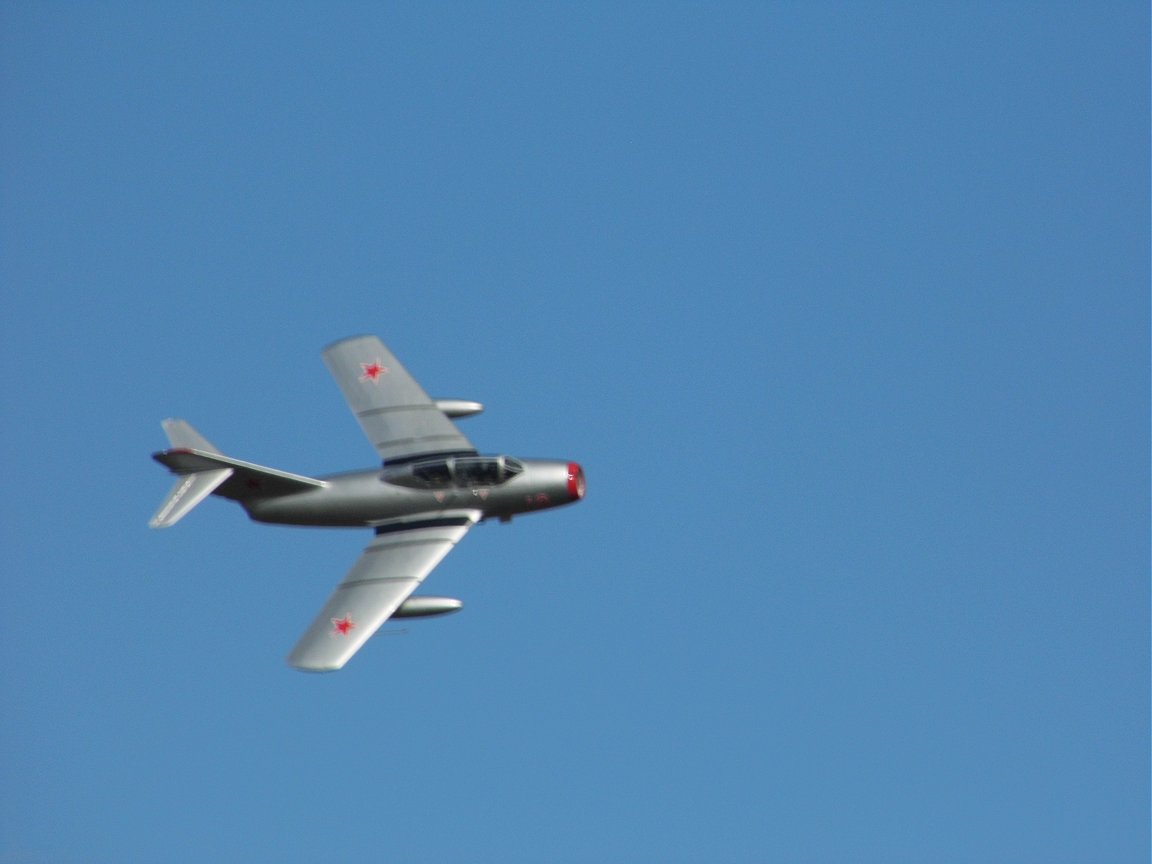 “According to plans of fleet development, warships and submarines equipped with high-precision assault and anti-submarine weapons, airborne and self-defence devices will come into service of Russian Navy,” he said. “These are Yasen nuclear submarines of new generation, modern multipurpose surface warships of such types as corvette, frigate, a small missile-carrying warship and Lider head destroyer of new project,” Borisov said.
He noted that more than 40 warships, submarines and support vessels of different classes will be put on combat duty in Russian naval forces this year. “In 2014 project 11356 coast guard ships, project 21631 small missile-carrying warships, project 21980 anti-sabotage cutters, modern rescue ship Igor Belousov will be commissioned in 2014, several support vessels, such as project 21180 icebreaker, project 02690 self-propelled floating crane and others will be laid down,” the deputy defence minister noted. “In all, Russian Navy plans to put into military service more than 40 warships, submarines and support vessels of different classes in 2014,” he added.
2014 - March 26th: Russian flags have been raised at all military units in Crimea, less than a week after the Russian leader signed a decree finalizing the reunification of the former Ukrainian region, Russia's military chief said Wednesday.
As Crimea's reunification process began last week, all 193 military units in the predominantly Russian-ethnic region have replaced Ukrainian flags with Russian ones and applied to join the Russian armed forces.
Some 1,500 out of 18,000 Ukrainian troops who have opted to continue their service with the Ukrainian armed forces will leave the region after handing over their weapons for protection, Valery Gerasimov, Chief of the General Staff of the Armed Forces said.
The servicemen and their families will be transported from the Black Sea peninsula by railways, under the agreement with the Russian Defense Ministry, Gerasimov said.
2014 - March 26th: Ukrainian military personnel may leave the Crimean Peninsula freely with or without their weapons at the discretion of the Russian military, the Kremlin said Tuesday.
"We said a long time ago that [Ukrainian] military personnel may leave freely from the territory of Crimea," Kremlin spokesman Dmitry Peskov said.
Peskov added that Russia's Ministry of Defense will have the authority to decide if servicemen can leave the peninsula with their weapons.
2014 - March 29th: The head of United Aircraft Corporation (UAC), Mikhail Pogosyan, believes that sanctions imposed against Russia by USA and EU will not affect the mutually-beneficial cooperation between aircraft companies, ITAR-TASS reports with reference to the source.
"I think that our economic cooperation is mutually-beneficial and those politically-motivated decisions taken today will not affect our long-standing partnership", - he stated.
Pogosyan added that our Western partners understand that it is impossible to maintain a long-standing partnership if you take into account specific events. "We have laid the foundation and it is unprofitable for both parties to destroy it", - president of UAC said.
2014 - March 29th: The results of snap combat readiness drills conducted last month have confirmed that training in the Russian military has improved, Russian President Vladimir Putin said Friday.
“The intensity and quality of the forces’ training have improved,” Putin said at a ceremony attended by senior commanders.
Putin added the improvement was aided by defense purchases last year, which have equipped the Russian army and navy with modern weapons.
The country’s military budget stands at about 2.5 trillion rubles ($70 billion), making it the world’s third largest behind the US and China.
Last month, Putin ordered snap military drills in Russia's Western and Central military districts, which border Ukraine. The exercises involved dozens of vessels from the Baltic and Northern Fleets and aircraft of the Russian Air Force.
2014 - March 29th: A senior Russian military official has confirmed that Russia is in talks with a number of Latin American countries over creation of logistics facilities for its naval ships, but at the same time dismissed rumours of Russia’s plans for planting its naval bases in some countries of the region. Deputy Defence Minister Anatoly Antonov told reporters on Friday media speculations of a looming “Russian military expansion” into Latin America were devoid of any foundation.
Antonov said oppositional media were particularly zealous in that respect. In Venezuela and Nicaragua, for instance, a real information war was well underway, he added.
“The purpose is to discredit the political leadership of both countries and to call in question the mutual benefits of military and military-technical cooperation with Russia,” he said. “Such media either distort the real facts or are reluctant to understand the purposes and tasks of our policy in the region.”
2014 - March 29th: State Duma on terminating the legal effect of a number of Russian-Ukrainian agreements on the parameters of division of the Black Sea Fleet that were signed on May 28, 1997, as well as on the status and conditions of the Russian Black Sea Fleet’s deployment on the territory of Ukraine, on reciprocal payments in connection with the Russian Black Sea Fleet’s deployment in Ukraine, and on the stationing of the Russian Black Sea Fleet in Ukraine (the latter agreement signed April 21, 2010).
A report on the Russian President’s legislative move was uploaded at the Kremlin’s official website.
Putin also issued a resolution appointing Deputy Foreign Minister Grigory Karasin and Deputy Defense Minister Nikolai Pankov his official representatives in both chambers of the Federal Assembly in the process of scrutiny of the proposals on cancelling the legal effect of the aforementioned agreements.
2014 - April 1st: Russia’s Federation Council has unanimously approved of the law to terminate the Russian-Ukrainian agreements on the Black Sea Fleet. All 134 upper house members voted for the decision.
The bill will now have to be signed by President Vladimir Putin to come into effect.
Earlier, the State Duma has approved the denunciation of Russian-Ukrainian agreements on the Black Sea Fleet. The proposal was approved unanimously by 433 members of parliament.
2014 - April 1st: Russia has no plans to create naval and military bases abroad like American facilities, Russian Foreign Minister Sergei Lavrov said in an interview on Saturday News with Sergei Brilyov on Russian television.
Commenting on reports that Russia allegedly planned to open bases on the Seashells, in Vietnam, Nicaragua, Cuba and Argentina, Lavrov said "It is not true at all. We have no plans to create naval and military bases abroad in the meaning you understand the term."
"The Navy has strengthened significantly in Russia, and I think, after the joining of Crimea to Russia, it will have much more potentialities for development," he noted. Aside from the Black Sea Fleet, we have the Far Eastern, Northern and other fleets," he said. "It is very important for the state to have the navy on the highest level of training, especially when the fleet has not only to cross oceans for training, but carry out specific tasks to fight piracy in the Gulf of Aden. Pirates appear in other parts of the world ocean. The fleet makes long trips."
2014 - April 2nd: The Republic of Crimea and the federal city of Sevastopol have become part of Russia’s Southern Military District, according to a decree signed by President Vladimir Putin and posted on the official legal information website on Wednesday.
“The Southern Military District is within the administrative borders of the Republic of Agygea, Republic of Dagestan, Republic of Ingushetia, the Kabardino-Balkarian Republic, the Republic of Kalmykia, the Karachay-Cherkess Republic, the Republic of Crimea, the Republic of North Ossetia-Alania, the Chechen Republic, the Krasnodar, Stavropol territories, the Astrakhan, Volgograd, Rostov regions and the city of Sevastopol,” the document says.
The decree enters into force on Wednesday.
2014 - April 2nd: The airborne assault unit of the Pskov division of Russia’s Airborne Forces (VDV) will take part in Russian-Belarusian manoeuvres that will take place in Belarus in mid-April, Russian Defence Ministry’s spokesman for VDV Lieutenant Colonel Yevgeny Meshkov told ITAR-TASS on Wednesday.
“The Pskov paratroopers will take part in battalion tactical manoeuvres of the special operations forces of the Belarusian army that are to be held from April 15 to 18,” he said.
2014 - April 2nd: The Russian military is drafting a security plan for Crimea through 2020 in an effort to ensure the work of Russian servicemen in the former Ukrainian region, Defense Minister Sergei Shoigu said Monday.
The Defense Ministry is due to consider the plan on Friday, Shoigu told a meeting of senior commanders after discussing issues related to the deployment and development of forces in Crimea.
Russia, which has mandatory conscription for men for one-year terms, has said Crimean residents will be drafted into the army beginning next year, but their service will be limited to the territory of the Black Sea peninsula until 2016.
2014 - April 3rd: Ilyushin Company submitted an offer to Russian Ministry of Defense for development of a patrol aircraft derived from Il-114
2014 - April 3rd: VASO completed the testing of another An-148 jet intended for Russian Ministry of Defense
2014 - April 3rd: Russia has suggested creating what it sees as "an atlas of risks" for the Black Sea region, encompassing the territories of the Black Sea littoral states, the Balkans and the Caucasus, the chairman of the Russian National Committee for Black Sea Economic Cooperation (RNC BSEC), Victor Arkhipov, said on Wednesday.
“Russia attaches great importance to the work of the Organization of the Black Sea Economic Cooperation (BSEC),” he said. “We will chair the organization in 2016 and we have already prepared a preliminary plan of activities.”
“Among other things, Russia’s Emergencies Ministry has suggested creating an atlas of risks in the Black Sea region,” he said. “We are working on this initiative at the moment.”
Arkhipov noted the effectiveness of economic cooperation with Bulgaria, which is also a BSEC member and has been chairing the organization since January.
2014 - April 3rd: The 2014 Komodo multilateral naval exercises of 17 countries that are drawing to a close in Indonesian waters have been very useful to Russia, Mikhail Galuzin, the country's envoy to Indonesia told RIA Novosti on Wednesday.
"The exercise not only allowed Russia to practice cooperation with other participants but, just as important, contributed to a better mutual understanding between sailors from different countries," Galuzin said.
Russia brought the largest squadron of naval ships to the exercises, including the Marshal Shaposhnikov, Irkut tanker and Alatau service ship.
"This indicates Russia's particular interest in questions concerning the development of multilateral cooperation in the Pacific Rim, aimed at the promotion of security and stability in the region," Galuzin said.
2014 - April 7th: Russia offered Chile Yak-130 operational trainers and small arms
2014 - April 7th: In Russia, the Warrior (Ratnik) military equipment is in the final stages of state testing. The next-generation equipment is outfitted with a system to register the physiological state of soldiers, with special sensors transmitting information to military medics.
According to Izvestia, the St. Petersburg Military Medical Academy named for Kirov (VMA) over the next two years will undergo an experimental modernization that includes a system to monitor soldiers’ vital functions and “to determine the physiological parameters of the wounded and assessing the severity of their injuries.”
The creators of the Warrior equipment (the Central Research Institute of Precision Engineering, part of the state corporation Rostec) confirmed to Izvestia that a health monitoring system was already being developed. The monitoring system is expected to be included in the next version of the Warrior equipment.
2014 - April 7th: More than 8,000 former Ukrainian military, who did their active duty service in Crimea, have filed requests for getting Russian passports, Russian Defense Minister Sergei Shoigu said Thursday at an extraordinary session of the ministerial board.
Most of these servicemen have also declared their willingness to join the Russian Armed Forces and the Russian commanders have given this opportunity to them, he said.
“More than 8,000 of them filed documents for obtaining Russian passports,” Shoigu said. “And about 3,000 of them have already received new assignments.”
“It’s important create all the conditions now for their earliest possible adaption to service in the Russian Army,” he said.
2014 - April 7th: Three Topol-M missile launchers will participate in the Victory Day Parade on Red Square in Moscow on May 9, a Russian Defense Ministry spokesman for missile troops, Igor Yegorov, told ITAR-TASS.
2014 - April 8th: Russia has no plans to increase its fortifications along the border with Ukraine, a source in the the country's Border Guard Service told RIA Novosti on Monday.
"All the necessary measures have already been taken, no follow-up steps for fortifying the borders with Ukraine are being considered," the source said.
The comment followed an earlier announcement by acting Ukrainian President Olexander Turchynov, who also chairs the country's parliament, about increasing protection on Ukraine's eastern borders.
Earlier on Monday, the People's Council in Donetsk Region, established by local demonstrators, declared plans to hold a referendum on establishing an independent Republic of Donetsk and seeking to join Russia. The protesters, who contest the legitimacy of Kiev's new authorities, called for a referendum like the one held in Crimea on March 16, which saw over 96 percent of voters support reunification with Russia.
2014 - April 8th: State contract for the supply to the Russian Ministry of Defence 32 prospective Ka-52K was signed, ITAR-TASS news agency, citing a source in the military-industrial complex, said.
The new helicopters will join the air groups of two built in France for the Russian Navy helicopter carriers "Mistral".
Executor of state orders for manufacturing of a Ka- 52K for the Defense Ministry will be Arsenyev Aviation Company "Progress" named after N.I. Sazykin (part of JSC Russian Helicopters, a subsidiary of OPK " Oboronprom " ) .
It is expected that 16 helicopters Ka- 52K will be based on each of the new helicopter carrier. Previously it was assumed that the air group "Mistral " will include eight Ka- 52K and eight transport-combat helicopters Ka- 29TB.
2014 - April 10th: Over 80 weapon systems of more than 180 types are planned to be tested in 2014 at the Kapustin Yar testing range near the city of Astrakhan. Russia’s Defense Ministry spokesperson for Strategic Missile Forces Col. Igor Yegorov reported this on Thursday.
He added that test on this range would be carried out in 2014 not only for the Defense Ministry, but also in the interests of other Russian ministries and institutions. “At present, the range is considered as an experimental site for testing robotic systems,” the Defense Ministry’s representative said.
According to Yegorov, among the priority scientific researches of the testing range in 2014 are the upgrading of military facilities’ defense and protection of weapon systems, as well as military and special equipment from technical reconnaissance equipment and precision-guided systems, and the research of development issues of test patterns for perspective samples of weapon systems, military and special equipment. “In 2013, tests of more than 30 weapon systems and military equipment have been finalized at the Kapustin Yar testing range. In solving these tasks, some 330 launches of missiles, targets and projectiles have been made,” the Defense Ministry’s representative reported, adding that in 2015, the full upgrade of the range’s measuring system and transfer to automatic mode would be completed.
2014 - April 15th: Tupolev design bureau has completed the design of Prospective Aviation Complex for Long-Range Aviation (PAK DA), Lenta.ru reports.
Jane's reports with reference to a source close to military-industrial sector, that the president of United Aircraft Corporation, Mikhail Pogosyan, confirmed the information. The production of components of the first PAK DA prototype should be launched soon.
Pogosyan didn’t unveil any details related to the advanced bomber. At present Tupolev design bureau and Kazan Aviation Production Association named after S.P. Gorbunov are taking part in the project. Both enterprises are part of United Aircraft Corporation, which is in charge of the project coordination.
It was reported in mid-February 2014 that Russian Ministry of Defense signed a contract with Tupolev Company for development of PAK DA in 2013. According to the Director of the Aviation Industry Department of the Ministry of Industry and Trade of Russia, Andrey Boginski, under this agreement Tupolev was responsible for completion of detailed design and full-scale development of the advanced bomber.
2014 - April 15th: Ukraine has completed the state testing of An-70 military-transport aircraft, ITAR-TASS reports with reference to Antonov State Enterprise.
The upgraded aircraft confirmed its performance and reliability of its systems and equipment, short-takeoff and landing capability and the ability to transport all the specified types of cargo. The tests have been carried out by pilots and engineers of the State Research Center (SRC) of the Ukrainian air forces in cooperation with Antonov State Enterprise.
The leading pilot of the SRC responsible for An-70 testing, Alexander Pakholchenko, highly appreciated the aircraft performance and the vehicle’s operating performance. According to him, the new cockpit meets the latest standards.
2014 - April 15th: The further development of Su-35S multi-role fighter program will be focused on expansion of the aircraft’s combat capabilities, ARMS-TASS reports with reference to the president of United Aircraft Corporation (UAC), Mikhail Pogosyan.
"In 2013 a number of weapons (after completion of their development) have been integrated into the fighter. 14 air-launched weapons have been integrated into Su-35S so far", - Mikhail Pogosyan said.
"We keep on expanding the fighter’s combat capabilities by means of integrating advanced weapons developed by Tactical Missiles Corporation into Su-35S", - he added.
2014 - April 15th: More than 16,000 former servicemen and civilian personnel of the Ukrainian armed forces have been employed in the military service and given civilian jobs in the Russian armed forces, First Deputy Defense Minister Arkady Bakhin said at an intercom conference held at the situation center of the Defense Ministry on Tuesday.
"The Russian citizenship was given to 9,268 former servicemen and personnel of the Ukrainian armed forces who were employed in the military service in the Russian armed forces on a contract basis," Bakhin said. " All of them have already received Russian passports," he added.
In accordance with the instructions issued by the Russian defense minister of April 3, 2014, drills have been organized for newly employed officers who are trained on programs of upgraded professional education at educational establishments of the Russian defense ministry. Besides, a total of 7,050 former civilian personnel of the Ukrainian armed forces have been employed at the units of the Russian Black Sea Fleet, Bakhin said.
2014 - April 15th: Russia has begun the process of transferring the first Ukrainian naval vessel in Crimea back to Ukraine, a source in the Black Sea Fleet Headquarters told RIA Novosti on Friday.
“Two Black Sea tugs have begun taking the missile boat from Karantinnaya Bay in Sevastopol,” the source said, referring to Ukraine’s Priluki missile boat.
Once the Priluki leaves the port of Sevastopol, the boat will be towed to neutral waters by a Russian sea-going tug where it will be met by representatives of Ukraine.
Last week, Vitaly Yarema, the first deputy prime minister of the interim government in Kiev, avoided giving a specific deadline for the complete removal of troops and equipment from Crimea.
“I cannot say for sure, as it depends on a number of factors such as the pace and availability of transportation and the functioning of the railroad as well. But as of today there is nothing to hinder the process,” he said.
2014 - April 16th: Concern "Radio-electronic technology" (KRET enters the Rostec) supplied the Russian army with modern means of electronic warfare (EW), the press service of Rostec said.
KRET supplied the Defense Ministry with the latest multifunctional complexes "Krasuha-4". The complex provides radar stealth technology and military units within a few hundred kilometers. It disrupts the radar, communications and other electronic equipment of the enemy.
Among the new products are unique avionics systems of aircraft protection "President-S" and jammer for combat aircraft SP-14/SAP-518.
2014 - April 17th: Russian Foreign Minister Sergei Lavrov said after the four-party meeting on Ukraine on Thursday that Russia did not intend to send troops to the territory of friendly Ukraine.
“We do not have the slightest desire to send troops to Ukraine. That contradicts Russia’s vital interests,” Lavrov stressed, adding Russia was not going to increase the number of its troops in Crimea.
Lavrov said there were no Russian servicemen, agents or infiltrators in Ukraine.
2014 - April 17th: Yuri Shmotin, general engineer of the company, reported during the International Forum of Engine Building that the Research and Production Association Saturn (NPO Saturn) of Rybinsk signed up an order to manufacture gas turbines for the Russian Navy ships.
2014 - April 17th: The Russian Defense Ministry has placed a 5-billion-ruble ($140-million) order at a Crimean shipyard, Russian President Vladimir Putin said during a live Q&A session with the public on Thursday.
“The Ministry of Defense has placed an order at one of the shipyards for 5 billion rubles,” Putin said.
He said that the better amount of modern Russian ships and support vessels would be transferred from Novorossiisk to Sevastopol.
In March, Russia approved an initial financial aid package to support Crimean economy. Russian Finance Minister Anton Siluanov said that Moscow would spend up to 243 billion rubles ($6.82 billion) in Crimea this year, to be financed from the budget reserve.
The Ukrainian economy has been hard hit by the ongoing political crisis following the unconstitutional seizure of power in February by the country's new leadership, which includes a number of far-right ultranationalists in key positions.
2014 - April 21st: President Vladimir Putin will hold a meeting of the national Security Council on Tuesday, April 22, to discuss Russia’s policy in the Arctic.
“The participants in the meeting will discuss practical aspects and map out a set of measures to improve the implementation of the documents approved by the president earlier, specifically ‘The Basic Principles of State Policy of the Russian Federation in the Arctic up to 2020 and Beyond’ and “The Strategy for the Development of the Arctic Zone of the Russian Federation and National Security up to 2020”,” the presidential press service said on Monday, April 21.
2014 - April 21st: More than 150 representatives of the Russian Air Force and their colleagues from Belarus will meet this week to discuss joint exercises and test the integration of the countries’ air forces and air defense systems, a spokesman for the Russian military said Monday.
The meeting will take place at the Ashuluk Firing Range in Russia’s southern Astrakhan region from Monday to Friday, with Russian Air Force commander Lt. Gen. Viktor Bondarev overseeing the operations.
Russian Air Force spokesman Igor Klimov told reporters the drills would include S-300 anti-aircraft missile systems, as well as Pantsir-S hybrid anti-aircraft artillery and missile systems.
2014 - April 22nd: 16 multi-role MiG-29SMT fighters will be delivered to Russian air forces by the end of 2016. The corresponding state contract has been signed by the Deputy Minister of Defense, Yuri Borisov, and CEO of RAC MiG (part of United Aircraft Corporation), Sergey Korotkov, the corporation’s press-service reports.
The value of this contract, including ground support, test and control equipment, is over 17 billion rubles. The contract is aimed at maintaining the combat readiness of light fighter fleet.
«28 MiG-29SMT jets were delivered to the air forces in 2009-2010. The aircraft showed good results. It is able to use a wide variety of weapons for destroying air and ground targets», - CEO of RAC MiG, Sergey Korotkov, said.
«This order allows the enterprise to face future with confidence and it will also lay foundation for production of the advanced jets, like MiG-35S", - Deputy Minister of Defense noted.
2014 - April 22nd: Russian President Vladimir Putin has suggested creating a unified system of naval bases in Russia’s Arctic.
Speaking at a meeting of the Security Council on Tuesday Putin underscored the need for enhancing the reliability of protection of Russia’s Arctic borders.
“This should be done in various ways, including the reinforcement of the border guard forces’ naval group. Alongside, steps must be taken to enhance military infrastructure. In particular, the point at issue is creation of a unified system of bases for surface ships and new generation submarines in our sector of the Arctic ,” Putin said.
2014 - April 22nd: The new Russian mobile security robot Taifun-M, designed to provide security at strategic missile facilities, has been shown on the Russian Vesti news program.
The combat robots, which have no foreign analogue, will be used to secure Yars and Topol-M missile sites and can be operated remotely by a secure wireless connection and in the future with an autonomous artificial intelligence system, the program reported Monday.
A spokesman for the Defense Ministry said last month several of the robots, which feature laser-targeting and a cannon, will be deployed at five sites by the end of the year, part of an upgrade of existing automated security systems.
2014 - April 23rd: Russia to start deliveries of Yak-130 operational trainers to Bangladesh in 2015
2014 - April 23rd: Perm Engine Company delivered the second batch of PS-90A-76 engines for Il-76MD-90A aircraft to United Aircraft Corporation (UAC), ITAR-TASS reports.
The acceptance certificate was signed on April 15th at International Forum of Engine Building 2014 (MFD-2014) by the Managing Director of Perm Engine Company, Sergey Popov, and Deputy CEO of UAC – Transport Aircraft, Olga Fedonyuk.
According to Sergey Popov, the first batch of engines was delivered to the customer last year. This year a total of four batches of PS-90A-76 engines will be delivered to Aviastar-SP responsible for assembly of Il-76MD-90A aircraft. One batch includes four engines.
2014 - April 23rd: A contract for delivery of MiG-35 fighters to Russian air forces will be signed after 2016. In the near term about 100 jets of the type will be manufactured, RIA Novosti reports with reference to Press and Information Office of the Russian Ministry of Defense (MoD).
Last Tuesday the MoD announced signing of contract with RAC MiG for delivery of 16 MiG-29SMT fighters and provision of MRO services; the value of this contract exceeds 17 billion rubles.
"The contract for delivery of “4++”-generation MiG-35S aircraft should be signed after 2016. In the near term about 100 MiG-35S jets will be manufactured", — said in the statement.
According to the press-service, the agreement will help optimize the fleet of heavy and light fighters operated by the Russian air forces.
2014 - May 15th: Tomilino-based Research, Development & Production Enterprise "Zvezda" (NPP Zvezda) is developing a new helmet for pilots of T-50 fifth-generation fighter (PAK FA). NPP Zvezda has vast experience in developing protective gear for military pilots, ITAR-TASS reports with reference to Chief Designer of Su-35 f Igor Demin.
He also said that it is important to join all the efforts in the network of development of the new helmet. "We cannot separate development of systems, including information display system, from development of the helmet itself", - Demin stated.
The Chief Designer also noted that France and USA have been developing helmets this way for a long time. However, in Russia the work in these two areas is separated. According to Demin, NPP Zvezda must use the latest technical solutions in the area of “built-in” technologies developed over the last 15 years by national companies.
2014 - May 15th: Russia plans to construct 50 GLONASS stations in a few tens of countries, RIA Novosti reports with reference to the head of presidential administration, Sergey Ivanov.
"We will keep on promoting GLONASS technologies at the global market. We will increase the competitiveness of Russian navigation services by means of establishing ground measuring facilities abroad. In future we would like to have 50 GLONASS stations in 36 countries. Such infrastructure will assure more stable and accurate work of GLONASS", — Sergey Ivanov said.
2014 - May 20th: A service center for maintenance of MiG-29 aircraft will be opened in India next year, ITAR-TASS reports with reference to CEO of Russian Aircraft Corporation MiG (RAC MiG), Sergey Korotkov.
"This year we must deliver equipment to the service center constructed under an agreement. It will open next year in accordance with the contract obligations of both parties. RAC MiG is implementing this contract in cooperation with Indian enterprises", - Sergey Korotkov noted.
It was reported earlier that RAC MiG signed two additional contracts with Basant Aerosrace Privet Limite (India) in the network of a general offset contract with Indian air forces at MAKS-2013. The contracts are valued at $55 million.
2014 - May 20th: Russian Aircraft Corporation MiG will deliver 10 deck-based MiG-29K/KUB fighters to Russian navy in 2014, Lenta.ru reports with reference to the CEO of RAC MiG, Sergey Korotkov.
According to him, RAC MiG will also deliver six jets of the type to Indian navy. In 2013 Russian and Indian navy took delivery of four and seven MiG-29K/KUB fighters respectively.
Russian Ministry of Defense signed a contract for delivery of MiG-29K/KUB aircraft in February 2012. Under this agreement RAC MiG must deliver 20 single-seat MiG-29K jets and four two-seat MiG-29KUB jets to the customer. It was reported in November 2013 that all of the abovementioned aircraft should be delivered to the Russian navy by 2015.
2014 - May 20th: Military units of Russian Armed Forces are returning to permanent bases after war games in regions bordering Ukraine, Deputy Defense Minister Anatoly Antonov said in an interview with BBC on Tuesday.
“It seems to me that several days will be enough,” Antonov told BBC in reply to a journalist’s question on how much time the return of Russian troops to permanent bases might take. “If you ask me, when we will begin this process, I want to confirm openly that it has already started right after an order of our president,” he said.
On May 19, the Kremlin stated that Russian President and Commander-in-Chief Vladimir Putin gave an order to bring back troops to their permanent bases after war games in Rostov-on-Don, Belgorod and Bryansk regions.
2014 - May 20th: The chief of the Russian Armed Forces’ General Staff, General of the Army Valery Gerasimov expressed concern about NATO’s increased military activity near Russian borders, the Russian Defense Ministry said Monday.
Gerasimov told NATO Military Committee Chairman, General Knud Bartels, by phone that such activity does not contribute to enhanced security in Europe.
“The sides confirmed the understanding of reciprocal steps aimed at decreasing tension and stabilizing the situation,” the Defense Ministry said. “The interlocutors also exchanged opinions on the situation around the crisis in Ukraine,” the ministry said. The two high-ranking defense officials agreed to continue contacts.
Ukraine is in turmoil after a coup occurred in the country in February. New people were propelled to power amid riots as security concerns caused President Viktor Yanukovich to leave the country the same month.
2014 - May 21st: Russian Aircraft Corporation MiG (part of United Aircraft Corporation) will take part in Kazakhstan Defense Expo 2014 (KADEX-2014) to be held in Astana (Kazakhstan) on May 22nd – 25th 2014, press-service of RAC MiG reports.
"The exhibition will be held for the third time; it is gaining the reputation of the major defense forum of Central Asia. RAC MiG will showcase the family of multi-role fighters, including MiG-29K/KUB, MiG-29M/M2 and MiG-35. Prototype of the two-seat MiG-35 will be performing demonstration flights at the show; the jet will be piloted by test-pilot Stanislav Gorbunov and navigator Nikolay Murmilov", - the company noted.
MiG-35 is the «4++»-generation fighter derived from MiG-29K/KUB and MiG-29M/M2. The fighters of this family outmatch MiG-29 fighters (delivered to Russian air forces and foreign customers since 2009) in terms of combat capabilities and operating performance. The State Arms Program for 2011–2020 includes deliveries of MiG-35 aircraft to Russian air forces.
2014 - May 26th: Rosoboronexport: Russia will complete the deliveries of 48 Mi-171 helicopters to China in 2014
2014 - May 26th: Multi-role Su-30SM fighter of the Russian air forces is being showcased at International Kazakhstan Defense Expo 2014 (KADEX – 2014) held in Astana on May 22nd – 25th 2014, press-service of the Russian air forces reports.
The jet is taking part in the show in accordance with the invitation from Kazakh Ministry of Defense.
Su-30SM fighter is being piloted by the chief test pilot of Irkut Corporation, Hero of Russia, Vyacheslav Averyanov, and the head of department – instructor pilot of the State Aircraft Staff Training and Operational Testing Center of the Ministry of Defense (Lipetsk), Lieutenant Colonel, Ashot Arustamov.
In the network of demonstration flights the crew will demonstrate the unique capabilities of Su-30SM supermaneuverable fighter.
The multi-role Su-30SM fighter manufactured by Irkut Corporation
2014 - May 26th: The flights of Yak-130 operational trainers will be resumed in July 2014. We remind you that Yak-130 fleet was grounded after a crash occurred on April 15th 2014 near Akhtubinsk, Lenta.ru reports with reference to Russian Ministry of Defense.
In addition, the ministry confirmed the plans for creation of the Yak-130 aerobatic team called “Krilya Tavridi” (The Wings of Tavrida). The team will comprise four jets and later two more aircraft will join it. The establishment of the team was started in November 2013. At present Russian air forces comprise four aerobatic teams: Russian Knights (Kubinka, operates Su-27 fighters), Strizhi (Kubinka, operates MiG-29 fighters), Sokoli Rossiyi (stand for Falcons of Russia, Lipetsk, operates Su-27 jets) and Torzhok-based helicopter aerobatic team Berkuti.
2014 - May 26th: Russian Aircraft Corporation MiG (part of United Aircraft Corporation) will take part in Kazakhstan Defense Expo 2014 (KADEX-2014) to be held in Astana (Kazakhstan) on May 22nd – 25th 2014, press-service of RAC MiG reports.
"The exhibition will be held for the third time; it is gaining the reputation of the major defense forum of Central Asia. RAC MiG will showcase the family of multi-role fighters, including MiG-29K/KUB, MiG-29M/M2 and MiG-35. Prototype of the two-seat MiG-35 will be performing demonstration flights at the show; the jet will be piloted by test-pilot Stanislav Gorbunov and navigator Nikolay Murmilov", - the company noted.
MiG-35 is the «4++»-generation fighter derived from MiG-29K/KUB and MiG-29M/M2. The fighters of this family outmatch MiG-29 fighters (delivered to Russian air forces and foreign customers since 2009) in terms of combat capabilities and operating performance. The State Arms Program for 2011–2020 includes deliveries of MiG-35 aircraft to Russian air forces.
2014 - May 26th: Russian Northern Fleet’s big submarine chaser Vice-Admiral Kulakov which is performing missions in the Russian naval task force in the Mediterranean Sea has made a routine visit to the Cypriot port of Limassol, Northern Fleet’s spokesman Captain First Rank Vadim Serga told ITAR-TASS on Monday.
He noted that for the warship crew the visit to Cyprus became the second visit to a foreign port during the current naval mission. Vice-Admiral Kulakov has earlier visited the Spanish port of Ceuta after crossing of the Atlantic.
“The plan of the current naval mission envisages replenishment of warship stocks. Russian naval sailors will also receive an opportunity to visit local tourist attractions and have some rest on the coast,” Serga said.
2014 - May 28th: The state testing of the latest Russian T-50 fighter (PAK FA project) have been started in Akhtubinsk (Astrakhan Region), RIA Nvosti reports with reference to the Commander-in-Chief of the Russian air forces, Lieutenant General Viktor Bondarev.
The deliveries of the fifth-generation fighter should be started in 2016. The air forces may take delivery of T-50 jets even earlier. So far only one country in the world operates fifth-generation fighters - F-22 and F-35.
"The pilots have passed necessary retraining course and started performing flights on one jet. The second one will join the test program soon", — Bondarev said.
He did not unveil the starting date of the state testing; it was reported earlier that the test program should have been started in April or March.
The General said earlier that T-50 to be presented at the all-Russian stage of international pilot competition Aviadarts-2014 in Voronezh. The fighter should have been demonstrated in the network of a special program prepared specially for Russian Minister of Defense, Sergey Shoygu.
2014 - May 28th: Deliveries of new PAK DA bombers to Russian air forces will be started in 2023, RIA Novosti reports with reference to the Commander-in-Chief of the Russian air forces, Lieutenant General Viktor Bondarev.
It was reported earlier that the deliveries will be started in 2020. PAK DA will be a subsonic jet and it will be capable of performing tasks currently performed by Tu-160, Tu-95MS and Tu-22 aircraft. According to unofficial data, PAK DA may be equipped with hypersonic weapons. Results may be achieved in this area in the near term.
"It must perform its maiden flight in 2019. In 2023 the state testing will be completed and the deliveries will be started", — Bondarev said.
2014 - May 29th: The analysis of military operations during the second defense of Sevastopol makes it possible to draw two vital conclusions concerning fleet deployments and the role of naval aviation, the Black Sea fleet commander, Alexander Vitko, told a historical conference devoted to the 70th anniversary of Crimea’s liberation from fascist occupiers.
“First, it is vitally important (for Russia) to have two huge naval bases: one in the Caucasus and the other in Sevastopol,” Vitko said.
“Second, the success of any military operation depends on air support. That is why aviation is a vital component of any naval assault force,” the commander went on to say.
2014 - June 5th: Russian Ministry of Defense will take delivery of the first military-transport Il-76MD-90A aircraft in 2014, Lenta.ru reports.
The jet will be delivered by Ulyanovsk-based Aviastar-SP under a contract for delivery of 39 Il-76MD-90A aircraft. Other details related to the upcoming delivery have not been unveiled.
The first stage of the joint state testing of the new military-transport Il-76MD-90A aircraft has been completed in December 2013. The functionality of all the aircraft systems has been checked and the aircraft performance has been assessed. The second stage will include testing of the aircraft’s avionics and communications systems. Il-76MD-90A will also perform a cargo airdrop.
The joint state testing of the military-transport Il-76MD-90A aircraft has been started in July 2013. It was reported that following the results of the first stage of testing Russian Ministry of Defense would approve the act for production of a pilot batch of Il-76MD-90A jets. This document will allow Aviastar-SP to launch the serial production of the new transport aircraft.
2014 - June 5th: The latest version of a missile for Russian fifth-generation fighter PAK FA will be developed by 2016, CEO of Tactical Missiles Corporation, Boris Obnosov, said at KADEX 2014, press-service of Russian Ministry of Industry and Trade reports.
«We are working closely with Sukhoi design bureau and we have created a joint working group. All the records of proceedings and other documents have been approved by both parties, the mock-ups will be manufactured on time, the program is on schedule – the development will be completed by 2016», - Boris Obnosov said, adding that this refers to the latest version of Kh-74M2 cruise missile.
«It is a hard work, testing is very intense and sometimes even Akhtubinsk State Proving Flying Center is unable to handle the workload», - the corporation’s CEO added.
2014 - June 5th: The newest boat of project 21820 "Denis Davydov" built for the Baltic Fleet at Yaroslavl Shipyard completes mooring trials. The crew of the boat from the military compound amphibious ships of the Baltic Fleet together with representatives of the manufacturer during the mooring trials examine the quality of the installation and operation of all systems and mechanisms to ensure the combat readiness of landing craft.
2014 - June 6th: The State Technical Supervision Body (Gosadmtehnadzor) for Moscow region will launch unmanned aircraft to spot garbage piles and landfills in the area next week, Tatiana Vitusheva, head of Gosadmtehnadzor, said.
2014 - June 6th: France to deliver its two Mistral-class helicopter-carrying warships to Russia in line with the schedule stated by the bilateral contract, if Europe imposes no further sanctions in regard to Moscow, French President Francois Hollande said.
2014 - June 6th: The multi-role “4++”-generation Su-30SM fighter took part in demonstration flights performed by Sokoli Rossiyi (Falcons of Russia) aerobatic team, RIA Novosti reports with reference to the representative of Russian air forces, Colonel Igor Klimov.
"Falcons of Russia" is the aerobatic team of the Russian air forces. It was established in 2006 at an airbase of Lipetsk retraining center in order to demonstrate the capabilities of Russian-produced military aircraft. The team’s pilots perform solo and formation flying using fourth-generation Su-27 fighters.
"Falcons of Russia demonstrated a new program in Tambov on May 31st 2014. The new multi-role Su-30SM fighter took part in demonstration flights performed by the team for the first time ever. The jet was piloted by the head of Lipetsk retraining center – Major General Alexander Kharchevskiy", — Klimov said.
2014 - June 6th: The specialists of aviation engineering service of the Western Military District (WMD) have completed the acceptance of two upgraded MiG-31BM fighter-interceptors, press-service of WMD reports.
"The new vehicles piloted by the representatives of WMD’s military units performed ferry flight to their home base – a military airfield located in Tver Region. In the near term the aircraft will come on duty and start protecting the airspace of Russian Federation", - the source added.
The fighter regiment of WMD stationed in Tver Region will be outfitted with jets of the type this year. In 2013 a squadron of Murmansk composite regiment of WMD was outfitted with the upgraded MiG-31BM fighter-interceptors, the press-service added.
2014 - June 9th: Russian Ministry of Defense will take delivery of the first Be-200 amphibian aircraft in 2014
2014 - June 9th: Russia will achieve a technological breakthrough in spite of the policy of sanctions pursued by the West, while the attempts to isolate this country will be doomed, Deputy Prime Minister Dmitry Rogozin said Thursday at a Technoprom 2014 forum meeting.
The current Western policy of containment aims to arrest Russia’s technological progress, in the first place.
“I think this policy will produce an adverse effect,” Rogozin said. “No one will ever be able to push our country into real isolation, first and foremost considering its capability for industrial and technological cooperation with other countries.”
He voiced the confidence that a certain feature of the Russian national character would play against the West. “When someone forbids us to do something, we begin to yearn for doing precisely the thing that has been forbidden,” he said jokingly.
“On the contrary, if we were told, well guys, go on with developing your technologies, then we’d probably feel like lazing away but as for now I can tell you for sure we expect a technological breakthrough, just because it has been forbidden to us,” Rogozin said.
2014 - June 9th: Syria may take delivery of 12 MiG-29M/M2 fighters by late 2017 under the contract with Russia signed in 2007. It was stated by the CEO of Russian Aircraft Corporation MiG (RAC MiG), Sergey Korotkov, at KADEX-2014, ITAR-TASS reports.
"The assembly of four airframes has been completed. However, the contract was signed earlier and we are not in a hurry", - Korotkov said. Speaking about the delivery dates and the number of jets to be delivered, he confirmed that Syrian air forces should take delivery of 12 MiG-29M/M2 fighters in 2016-2017 under the contract signed in 2007.
2014 - June 10th: India’s armed forces successfully test launched a BrahMos supersonic anti-ship cruise missile, developed jointly with Russia, from the country’s newest warship INS Kolkata, the PTI news agency reported Monday quoting Indian defense officials.
2014 - June 10th: Russia lifted the embargo on deliveries of weapons and military equipment to Pakistan
2014 - June 10th: According to the Deputy CEO of research and development of onboard equipment of the Radioelectric Technologies Group, Givi Janjgava, the helicopter Mil Mi-28N Night Hunter will receive the high-precision weapon, a new control system and the “electronic cockpit” in two or three years.
2014 - June 11th: Antonov State Enterprise (Kiev, Ukraine) continues development of medium military-transport An-70 wide-body aircraft having a short takeoff and landing capability, Delo website reports.
2014 - June 11th: Russia has deployed a grouping of 24 Baltic Fleet warships and vessels for military drills in the westernmost Kaliningrad Region, the Russian Defense Ministry’s press office said on Wednesday.
Russia started on Tuesday military exercises of the Baltic Fleet, Airborne Troops and Air Force in the Kaliningrad Region, its exclave on the Baltic Sea coast.
“The squadrons of warships are performing the tasks of ensuring the protection of the state border of the Russian Federation, protecting marine communications, providing for shipping safety, organizing air defense, searching for and detecting surface ships and submarines of the imaginary enemy,” Russia’s Defense Ministry said.
2014 - June 11th: The Borei-class strategic nuclear submarine Vladimir Monomakh has gone on sea trials in the White Sea, a source in the military-industrial complex said.
“Severodvinsk-based military shipyard Sevmash put the submarine on the two-week sea trials in the White Sea,” the source told ITAR-TASS on Wednesday.
“During the sea trials, the crew will check all warship systems, including navigation, radio-electronic systems and sailing features,” it said.
The head submarine Yuri Dolgoruky was brought into service of Russia’s Navy in 2012. The first serial warship Alexander Nevsky came into naval service in 2013. The fourth missile carrier Knyaz Vladimir will be laid down at Sevmarsh on July 19.
2014 - June 11th: Units of the Pskov Airborne Division for the time of the military exercises in the Kaliningrad region will be managed by the Western Military District. The units will be relocated to the Kaliningrad region, where they will parachute, Chief of the Headquarters First Deputy Commander of the Airborne Forces Nikolai Ignatov said on Wednesday.
The exercises are organized at the time when NATO holds its drills in the Baltic State - Saber Strike and BALTOPS. Initially, Russia was invited to participate in those exercises, but due to the Ukrainian crisis the Alliance decided to terminate the cooperation with Moscow.
Russia’s Defense Ministry announced the exercises involving the Baltic Fleet, Airborne and Air Forces on June 10. The ministry’s press service said the forces in the Russian exercises are comparable with those in NATO’s exercises, which feature 6,000 military. The Defense Ministry’s exercises involve vessel groups, Airborne Troops and Marine Corps units, Air Force formations, Sukhoi Su-34 (Fullback) fighter-bombers, Mil Mi-24 (Hind) helicopters and Tupolev Tu-22M3 (Backfire) bombers, the ministry said.
2014 - June 16th: Russia is testing its Pantsir S-1 short-range air defense system in the Arctic to ensure security in the resource-rich region, which is soon expected to become the centre of oil and gas exploration for the country, Alexander Denisov, head of the High-Precision Systems holding told RIA Novosti Monday.
2014 - June 16th: The Air Force will continue to modernize Russian Su-25SM3 Grach, told on Thursday Air Force Commander Lt. Gen. Viktor Bondarev. The latest Su-25SM3 is deeply modernized version of the Su-25, it is equipped with a satellite navigation system GLONASS (GPS) with the possibility of programming the endpoint on the map with an accuracy of up to ten meters, which allows the pilot to operate autonomously without ground support services even in zero visibility, RIA Novosti reported.
Due to the profound modernization, combat effectiveness of the use of lethal Su-25SM3 increased up to three times. In February 2013, the airbase of Southern Military District received the first batch of Su-25SM3.
"Deliveries to the army have already begun. We will continue the modernization of Su-25SM3, there are no aircraft in the world, which can carry such a load of weapons," he told to journalists.
2014 - June 16th: EDB named after Yakovlev, a member of the SPC Irkut, won the open competition of the Ministry of Defense for the best project of training aircraft for initial training and professional qualification of flight personnel in the Air Force schools.
State contract to build the Yak-152 must be signed in the near future. Developer will receive about 300 million rubles, the Military-Industrial Courier magazine reported. MoD needs are estimated at 250-300 Yak-152 training aircraft. DOSAAF needs about 105 aircraft. Serial production will be led by the Corporation Irkut. Technical design of the Yak-152 has been developed.
Moreover, China has put on the wing aircraft L-7, built with the participation of specialists of EDB Yakovlev. In fact it is an analogue of the Yak-152.
2014 - June 16th: Russian Airborne troops will have about 150 units of modernized BMD-2 before the end of 2014, according to the press-service management and information the Russian Defense Ministry.
Until now, more than 60 of these combat vehicles have already arrived in Pskov and Kamyshinskoye Airborne troops. The remaining airborne compounds will have about 150 units of the same BMD before the end of November 2014.
Fighting vehicle BMD-2 has established itself as the most tenacious, unpretentious, amphibious tracked vehicle having armed with quick-firing automatic gun, two machine guns and modern anti-tank weapons.
2014 - June 17th: Service life of heavy intercontinental ballistic missiles Voevoda (SS-18 Satan according to NATO classification) was extended from 20 to 27 years, the press service of Russian Strategic Missile Forces said.
Service life of missiles RS-20V Voevoda was extended to 27 years, RS-12M Topol to 26 years, RS-12M2 Topol-M (SS-27) is being extended to more than 15 years, and RS-18 (Stiletto SS-19) — to 36 years.
2014 - June 17th: Russia's Navy has put into service the first Yasen K-560 nuclear attack submarine, produced by the country's largest shipyard. A flag-hoisting ceremony on the new submarine took place in Severodvinsk on Tuesday.
The Severodvinsk, a 4th generation vessel, has logged 14 sea trials lasting 222 days in total, dozens of thousands of nautical miles, and hundreds of divings.
It features a new hull and armaments architecture, state-of-the-art communications and navigation systems and an advanced power unit. Its displacement is 9,500 tons, with length at 120 meters, diving depth at 600 meters, and a speed of 31 knots /about 57 kilometers per hour/. It carries a crew of 85.
The Severodvinsk has become the 131st nuclear submarine built at Sevmash for the Russian Navy. Sevmash, which is Russia's largest shipyard, is building two new generation submarines: Yasen-class attack submarines and Borei strategic submarines.
2014 - June 17th: Russian fifth-generation submarines will be armed with military robots, Commander-in-Chief of the Russian Navy said.
"The combat capabilities of the multipurpose nuclear and conventional submarines will be improved in the future through integration of promising robotic systems into their weaponry," admiral Viktor Chirkov said on Tuesday.
He stressed that tough laws of shipbuilding demand to avoid pauses in the creation of new generations of submarines. This is due to the construction time, cyclical use of ships and submarines, and the rapid development of scientific and technical progress.
Currently, the fourth-generation ships are passing into service of the Russian Navy – the Yasen-class nuclear multipurpose attack submarines Severodvinsk and the Borey-class ballistic missile submarines.
2014 - June 17th: Russia and France continue to collaborate on the project of creating a new infantry fighting vehicle "Atom" in the interests of third countries. This was announced today at the International Salon of weapons for the Army "Eurosatory 2014" Itar-Tass said the head of the delegation of "Rosoboronexport", Deputy CEO Igor Sevost'yanov.
2014 - June 18th: The Russian government has introduced a bill that stipulates a ratification of an agreement signed between Russia and Cuba in the sphere of space investigations, the statement on the government's website says.
2014 - June 18th: Orders from abroad for S-400 Triumf anti-aircraft weapons systems are being processed, Igor Sevastyanov, the head of the Russian delegation to the Eurosatory 2014 international military exhibition, told journalists Wednesday.
2014 - June 18th: Cruise missiles with vertical takeoff are used on multipurpose nuclear submarine with cruise missiles "Severodvinsk" as the primary weapon for the first time. Navy Commander Victor Chirkov told reporters.
“The project "Yasen"itself is unique because there are cruise missiles with vertical takeoff”, Chirkov said. “This is first such project.”
Chirkov also noted that the most modern missiles with a range greater than 1.5 thousand km are installed on the submarine. "This increase in power of our submarine fleet and in the future we will build ships of this class. I think we do not limit ourselves to a series of eight submarines, and will build as many as it is necessary to ensure the country's security", assured the commander in chief.
2014 - June 18th: Russia’s state-of-the-art heavy armaments (the Armata tank platform and the Koalitsiya self-propelled artillery system) will be presented to the public for the first time at the Victory Day Parade in Moscow on May 9, 2015 that will be held in honor of the 70th anniversary of the Allied victory in World War II.
2014 - June 18th: In accordance with the State Arms Program Russian Ministry of Defense will take delivery of 10 upgraded Tu-160 strategic bombers by 2020. The implementation of this program is possible thanks to resuming the production of NK-32 engines, Lenta.ru reports with reference to the Deputy Minister of Defense, Yuri Borisov.
2014 - June 18th: Russian Aircraft Corporation MiG (RAC MiG) leaves open the possibility of developing a light fifth-generation fighter. MiG-35 fighter may be chosen as a platform for development of the next-generation jet, ARMS-TASS reports with reference to Flight.
According to CEO of RAC MiG, Sergey Korotkov, the corporation’s specialists are already developing a concept of the new fighter. "I know that this is one of the design bureau’s areas of activities, - he said. – I hope that we will take a closer look at this project soon".
Korotkov did not unveil any details related to the results of the corporation’s research, but he believes that the development of the new jet is “quite possible”. "The most important thing is to have a contract for development", - he added.
2014 - June 18th: For the first time in two months Yak-130 operational trainer will perform a flight in Moscow Region in order to test the upgraded control system. The flight is scheduled for late June 2014, ITAR-TASS reports with reference to Deputy CEO of Yakovlev design bureau on flight testing, Hero of Russia, Roman Taskaev.
On April 15th 2014 Yak-130 operational trainer crashed near Akhtubinsk. The jet was operated by Borisoglebsk training center of the Air Force Academy named after N.E. Zhukovsky and Y.A. Gagarin. The crew comprising two pilots has managed to eject, but one of the pilots died. The same day Yak-130 fleet was grounded in accordance with the decision made by the Commander-in-Chief of the Russian air forces. The crash occurred due to control system failure.
"At present we are taking deliveries of additional software connected with the jet’s equipment. At the same time we are taking necessary measures following the results of the crash. I think that Yak-130 will start performing flights in late June", - Taskaev said.
2014 - June 18th: Another demonstration of Russia's new multi-purpose fighter Su-35 to Chinese military delegation headed by Deputy Minister of Defence of People's Liberation Army of China, Colonel-General Zhang Youxia was held Kubinka, Moscow Region, on Tuesday.
"This show is organized as part of preparation for the contract to supply China with a batch of Su-35 fighters. Chinese military experts who are familiar with combat and flight characteristics of the aircraft, saw aircraft in the air and held consultations on specific use of the fighter," a source familiar with the situation said to "Interfax-AVN".
According to him, judging by the reaction of the Chinese military, they liked the plane and they are tuned to the purchase of this machine. "The conversation was substantive, Chinese specialists are interested in literally everything," said the agency interlocutor.
2014 - June 19th: Sukhoi Holding Company delivered the first batch of Su-34 bombers to Russian Ministry of Defense in the network of State Defense Order for 2014, the company’s press-service reports.
2014 - June 19th: 20 Su-27 fighters will be stationed at Belbek airfield in Crimea
2014 - June 20th: Satan Missile was launched from Yasny launch base in the Southern Urals
2014 - June 23rd: After a meeting with Indian External Affairs Minister Sushma Swaraj, the Russian Deputy Prime Minister Dmitry Rogozin talked about plans for the development of bilateral relations with the new Indian government, prospects for joint production of defence equipment and his views about Indian culture.
2014 - June 23rd: A solemn ceremony dedicated to the opening of the bust of Sergey Ilyushin was held at the Walk of Fame of the national aerospace industry located in Crimea near Klementyev’s mountain (Uzun-Syrt) on June 14th 2014, Ilyushin Company reports.
2014 - June 24th: Russia is ready till the end of 2016 to test gas turbine units for warships of its own production. It was reported in an interview to “Russia 24? by USC head Alexei Rakhmanov.
As recalled by the agency, formerly Minister of Industry and Trade Denis Manturov said that Ukraine detains delivery of equipment for the Russian defense industry, particularly the supply of gas turbines for shipbuilding companies in Russia.
According to A.Rahmanov, “Our biggest concern regards turbine units that are on our surface ships. I think the decision has already been made clear, the president talked about it – we will go towards import substitution. There is an understanding that by the end of 2016 the first gas turbine units produced in Russia wiil be already tested and ready to be implemented on the projects,” said the agency.
2014 - June 24th: A memorandum on the deployment of three GLONASS ground stations in China and of three Beidou stations in Russia could be signed shortly.
"The memorandum has been prepared for signing. Roscosmos has confirmed the plans to cooperate and to locate the stations on mutually-beneficial terms," Sergei Savelyev, deputy head of the federal space agency Roscosmos, told Interfax on Tuesday.
Savelyev earlier said that three stations of China's Beidou system could be set up in Russia and three GLONASS stations could be put in place in China.
2014 - June 24th: Russia’s Yasen-class nuclear submarine Severodvinsk (Project 885), which joined the Navy last week, will go on a trial run in deep sees in early July, the Sevmsh shipyard said on Monday.
The submarine will resume climatic trials in the White Sea in early July and will continue them for several months, during which it will make several voyages. The source said that the trials would not end before September or October and this timeline might be changed to November or December.
Since the Dagdizel plant in Dagestan, southern Russia, has not yet finished building the new heat-seeking self-guided torpedo Fizik, the Severodvinsk, just like the Yuri Dolgoruky and Alexander Nevsky, both accepted by the Navy last year, are armed with a USET-80 multipurpose electric-propelled torpedo.
2014 - June 24th: The governments of Russia and Vietnam are discussing the formation of a joint venture (JV) to provide naval maintenance and repair services for the Vietnamese navy, Vietnamese and Russian media sources reported on 23 June.
If it comes to fruition, the naval JV will be the third defence-industrial agreement between Russia and Vietnam since 2012.
2014 - June 25th: The Russian Defense Ministry will receive from the aircraft plant named after Yuri Gagarin in Komsomolsk-on-Amur (KnAAZ) about 20 Su aircraft before the end of 2014, 14 more aircraft will arrive in 2015, said the deputy head of the military department Yuri Borisov, who visited the plant engaged in creation of the Su-30M2, Su-35s and T-50, repair and modernization of Su-33.
"Until the end of 2014, the plant shall deliver 12 Su-35 and Su-30M2 7. KnAAZ is ready to build another 14 Su-35S aircraft before the end of 2015," said Borisov.
According to authorities, the deputy minister praised the course of production of aircraft for the Defense Ministry. During work meeting the standard delivery on current contracts and entering into new long-term contracts for the production of Su-35s were discussed.
2014 - June 26th: All missile-threat directions on the territory of Russia are covered by ground-based radars Voronezh manufactured by the concern RTI, the concern's General Director Sergei Boyev said on Wednesday.
"A continuous radar field has now been created, which ensures round-the-clock permanent control over all missile-threat directions, and the ground-based segment makes it possible to cover the Russian territory, regardless of the space group," Boyev said.
The radars Voronezh-M and Voronezh-DM will be put on combat duty in the Irkutsk region and in Kaliningrad, respectively, by late 2014, Boyev said. "The radars in Yeniseysk and Barnaul will be placed on experimental combat duty by the end of 2014," he said.
2014 - June 26th: A launching ceremony for the Rostov-on-Don (Project 636) diesel electric submarine built for the Russian Black Sea Fleet took place at Admiralty Shipyards in St. Petersburg on June 26, a Russian Defense Ministry source told Interfax-AVN. "Six submarines of this project will be built for the Black Sea Fleet within the next two years.
Russian Navy main command expects that the revival of the combat potential of the Black Sea Fleet's submarine forces should enable it to fully perform its duties in its area of responsibility," he said. Russian Navy Deputy Commander Vice Adm. Alexander Fedotenkov took part in the ceremony.
2014 - June 26th: Russia's lead Project 885 Yasen-class nuclear-powered attack/guided-missile submarine (SSN/SSGN) Severodvinsk (K 329) has been accepted into full service, it has been announced.
A flag raising ceremony took place on 17 June on the Kola Peninsula in northern Russia. The event was attended by Navy Commander Admiral Victor Chirkov, Northern Fleet Commander Admiral Vladimir Korolev, and senior officials from builder Sevmash and designer Malachite Central Design Bureau.
The vessel was previously handed over to the fleet on 30 December 2013 for operational trials.
2014 - June 26th: Russia’s Navy is to receive four new minesweepers by 2019 under Project 12700, with the first to be put into service in late 2015, the Russian Defense Ministry said Thursday.
A ceremony is to be held at the Sredne-Nevsky Shipyard in St. Petersburg on Friday to introduce the lead mine countermeasures vessel of the project, the Alexander Obukhov, named after a famed Soviet fleet boat commander and hero (1917-2009).
“The Alexander Obukhov minesweeper is the lead vessel in the series, and in April 2014, the Sredne-Nevsky Shipyard signed a contract with the Russian Defense Ministry to build three [additional] ships for the project. Under the contract, the ships are due to be delivered in 2016-2018,” the ministry said in a statement.
2014 - June 27th: Algeria has signed a contract covering the delivery of two Project 636 Varshavyanka ('Kilo')-class diesel-electric submarines that will be built at Admiralty Shipyards in St Petersburg, Russia.
"The date of the start of construction of two submarines to the foreign customer has been fixed, the contract is under way," Russia's ITAR-TASS news agency quoted Admiralty Shipyards director-general Alexandre Bouzakov as saying on 26 June.
Bouzakov did not provide any further details, but ITAR-TASS cited a Russian defence industry source as saying that the first submarine would be delivered in 2018.
Algeria signed a contract in 2006 to buy two Project 636 boats, which were delivered in 2010 and are based at Mers-el-Kébir in northwest Algeria along with two Project 877 submarines acquired in the 1980s.
2014 - June 27th: Around 30 minesweepers are expected to join Russia’s Navy by 2050, a deputy Russian defense minister said Friday.
“The shipbuilding program, approved by the president in May, envisages building around 30 minesweepers by 2050,” Yuri Borisov said at a ceremony in St. Petersburg to introduce the lead mine countermeasures vessel of the project, the Alexander Obukhov, named after a famed Soviet fleet boat commander and hero.
Borisov said the employees of the Sredne-Nevsky Shipyard, where the ceremony was held, have a “stable future.”
Commander-in-Chief of the Russian Navy Admiral Viktor Chirkov said “a great deal is to be done to learn how to use the sophisticated equipment of the ship.”
2014 - June 27th: Project 636.3 diesel electric submarines being built for the Russian Black Sea Fleet will be tested in deep waters at the North Fleet, Admiralty Shipyard Director-General Alexander Buzakov said on Thursday, June 26.
A second Project 636.3 submarine for the Black Sea Fleet, called Rostov on Don, was launched earlier in the day. The first submarine, Novorossiysk, is undergoing sea trials. The third such craft, Stary Oskol, is to be launched in August. All three are expected to be handed over to the Navy before the end of the year.
The new submarines will be stationed in Novorossiysk and Sevastopol.
The Black Sea Fleet will get about 30 new warships in the next six years, Navy Commander-in-Chief Viktor Chirkov said earlier this week.
2014 - June 30th: RT-Chemcomposite discussed its readiness for production of composite components for MS-21 and T-50 aircraft
2014 - June 30th: Iraq begins receiving Su-25 combat aircraft to fight ISIL
2014 - June 30th: Russia to cooperate with China in space-related projects
2014 - June 30th: The fifth annual aerobatic show Wings of Parma took place this weekend in Russia's Perm Territory. The festival was held at two airfields.
Such aircrafts as MiG-31, Tu-134, Yak-40, Mi-2 and Mi-8 took part in the show. The famous aerobatic team Strizhi (Swifts) performed on their five Mig-29 fighters.
2014 - July 1st: One of the two Mistral-type ships being built in France for Russia will sail off with a Russian crew aboard for a test voyage shortly, a military source said to ITAR-TASS on Monday, June 30.
In the morning, 400 Russian sailors arrived in Saint-Nazaire, France, aboard the ship Smolny to train in the use and operation of the new helicopter carrier which is under construction at the local shipyard. The new craft, the Vladivostok, will be handed over to Russia in October or November 2014.
2014 - July 1st: About 150 Ka-52 Alligator combat helicopters will be delivered to Russian Ministry of Defense during the period until 2020.
2014 - July 2nd: The Russian Navy’s Northern Fleet will be expanded with two port service vessels.
The state-of-the-art vessels, which are supposed to join the fleet until Russian Navy Day, will be named Umba and Pecha.
These are just two of the planned 16 vessels that will join the Russian Navy fleet in 2014.
Intended for combat service support of submarines, surface ships and floating facilities, their main tasks will be the supply of fuels, lubricants and water, cargo transport, collecting waste from ships and floating facilities and oil spill response activities.
2014 - July 3rd: St Petersburg's Severnaya Verf shipyard delivered the fourth Steregushchiy-class multipurpose frigate, the Project 20381 variant Stoiky , to the Russian Navy in late May. Four additional units are in build, at Severnaya Verf and at the Amur shipyard on the Pacific coast.
Current Russian plans stipulate a requirement for 20 ships in the class, although industrial, financial, and technological challenges are complicating the completion of this programme.
The Steregushchiy vessels are the first new class of surface combatants to enter series production for the Russian Navy since 1991. Lead ship Project 20380 variantSteregushchiy was laid down at Severnaya Verf in December 2001. The St Petersburg-based Central Maritime Design Bureau developed the Steregushchiy class as a flexible, multipurpose platform with anti-surface, anti-submarine, and anti-air warfare capabilities. The frigates will operate in coastal waters and 'near ocean zones' across all four Russian fleets.
2014 - July 4th: Russia’s Federal Special Construction Agency (Spetsstroi) by the end of 2017 will finish construction of the new naval base of the Russian Pacific Fleet in Vladivostok that in the future will host the Mistral-class helicopter carriers and other new ships, Spetsstroi’s spokeswoman Svetlana Chumikova told Itar-Tass.
"The quay on which reconstruction and construction works are underway has stretched for more than 2.5 kilometers. The initial stage of the work should be completed by October 2015, and by the end of 2017 the naval base that meets most modern requirements will be fully ready for operation," Chumikova said.
2014 - July 7th: Russia has successfully test-launched a long-range interceptor missile which will be brought into service of a promising air defense missile system S-500, a source in the defense and industrial complex said on Monday.
2014 - July 8th: Russian President Vladimir Putin set out his and his country's present foreign and defence policy objectives to Russian ambassadors and heads of missions at the Foreign Ministry in Moscow on 1 July.
He focused on the protection of national interests and the enforcement of Russia's interpretation of international law, against the backdrop of continuing conflict in Ukraine.
Most of the goals are a projection of the Russian 'Five Principles of the New World Order' pronounced by then-President Dmitri Medvedev at Sochi on 31 August 2008, immediately after the Georgia Conflict.
President Putin set out the growing potential for world conflict caused by the failure to respect international law, describing the "deterrence policy" that, in his words, had "provoked" Russia's intervention in Ukraine, as notorious and a continuation of the Cold War.
2014 - July 14th: The second Tu-214ON aircraft assembled by Kazan Aviation Production Association named after S.P. Gorbunov (KAPA) performed ferry flight to its home base on July 4th 2014, press-service of United Aircraft Corporation (UAC) reports. The jet is designed for surveillance flights performed in the network of Open Skies treaty.
2014 - July 14th: Painting of first serial Il-76MD-90A transport aircraft was completed. The jet was decorated with “Ulyanovsk” sign and the emblem of Ulyanovsk Region, the press-service reports.
2014 - July 16th: The first upgraded Tu-22M3 supersonic long-range bomber will perform its maiden flight in 2017, BUSINESS Online reports.
2014 - July 16th: A new nanotechnology center has been opened in the Dubna science town in the north of the Moscow region. It is the 8th nanocenter of the RUSNANO management company. The center’s budget is some 60 million U.S. dollars. The portfolio of the new Dubna nanocenter already has more than 40 innovation projects at the initial stage.
2014 - July 18th: Belarus plans to purchase four Russian Yak-130 operational trainers and a squadron of Tor-M2 air defense systems, Kommersant reports.
2014 - July 21st: Troops of Aerospace Defense can start testing the new system of global control of missiles this year. In 2014 spacecraft "Tundra" can be launched into orbit.
From that moment, the deployment of United Space System, one function of which would be warning on a missile attack, will begin. The satellite launch is scheduled for the fourth quarter of 2014 from Plesetsk using rocket "Soyuz-2.1b" and the upper stage "Fregat".
In June 2013 President Vladimir Putin announced the plans to create a unified aerospace defense system. In this complex, first of all, should be included missile and air attack warning systems, means of target location and target killers.
2014 - July 24th: KAMPO OJSC has commenced the procedure of delivering search and rescue boat of project 23370 to RF Navy, the company says.
The new generation catamaran designed and built by KAMPO OJSC is intended for underwater engineering works and rescue operations within the contiguous zone as well as for training of divers and rescuers.
2014 - July 25th: Two Russian submarines are entering service just in time for the Russian Navy Day, which falls on July 27 this year: a Yasen-class nuclear attack submarine Severodvinsk and a Borei-class ballistic missile submarine Alexander Nevsky.
2014 - July 28th: Advanced armament support ship Akademik Kovalev will be set afloat in northern Russian seaport of Severodvinsk on Saturday, a chief press officer of shipyard Zvezdochka said.
The armament support ship “is planned to take tests of its equipment and take sea trials already in autumn,” Nadezhda Shcherbinina said. The new warship is expected to be brought into naval service already at the end of this year.
Akademik Kovalev is an ice reinforcement class ship with a total displacement of 6.3 thousand tonnes. It is 107.6 metres long, 17.8 metres wide and has 60-strong crew. The contract for its construction was signed in September 2011. The naval carrier project develops the design concept of sea-going rescue towboat Zvezdochka handed over in naval service in 2010.
2014 - July 28th: Three new submarines - the Knyaz Oleg (Borei project), the Krasnoyarsk (Yasen project) and the Khabarovsk - were laid down on Sunday at Russia’s Sevmash shipyards, Sevmash director general Mikhail Budnichenko told Russian President Vladimir Putin from Severodvinsk.
2014 - July 29th: The Russian Navy’s Vice-Admiral Kulakov, an Udaloy-class destroyer, is moving to the eastern parts of the Mediterranean Sea, where it will join the permanent Russian naval task force, Northern Fleet spokesman Capt. 1st Rank Vadim Serga said.
Earlier this month, the Vice-Admiral Kulakov entered the port of La Valetta, Malta, where Northern Fleet sailors celebrated Russia’s Navy Day while berthed in Dock No. 6 at the Maltese shipyard.
2014 - July 29th: The company "Tupolev" continues development activities to create advanced, special-purpose aircraft modifications based on the Tu-214.
This Interfax-AVN reported according to a source in the aviation industry.
"Currently, a number of development activities are being performed to create promising modifications of special planes on the platform of Tu-214," the spokesman said. According to him, these works are carried out on behalf of various government clients and are financed from the state budget.
The agency's interlocutor said that currently aircraft Tu-214ON, aircraft transponders Tu-214SR, airborne command post Tu-214PU, aircraft Tu-node communication 214SUS, scout Tu-214R, etc. are being created according to the "Open Skies" program.
2014 - July 31st: The Caspian Flotilla commenced builder's sea trials of the Buyan-M class missile corvette (Project 21631) Veliky Ustyug. Sea trials are scheduled for completion in December 2014, RIA Novosti reports citing the Southern Military District.
All stages of the state acceptance trials will be carried out in the Caspian Sea. The corvette is now preparing for missile and artillery fire. The commissioning team and the crew will be practicing interaction, the crew will undergo training on board the ship.
The multipurpose river-sea-going corvette was designed by in-house engineering bureau at Zelenodolsk Shipyard. The Veliky Ustyug keel was laid down on July 27, 2011. The Buyan-M class corvettes are armed with Kalibr (SS-N-27) anti-ship missiles, 100-mm and 30-mm guns and Igla-1M air defense missiles.
2014 - July 31st: Azerbaijan purchases Russian Yak-130 jets
2014 - Aug 1st: Chief of the Russian General Staff, Gen. Valery Gerasimov, said on Thursday that Russia is strictly implementing the Intermediate-Range Nuclear Forces (INF) Treaty with the United States.
Gerasimov discussed the situation around the Soviet-era agreement in a phone call with US Chairman of the Joint Chiefs of Staff, Gen. Martin Dempsey.
“Gerasimov reaffirmed Russia’s adherence to strict implementation of the INF Treaty,” the Defense Ministry said in a statement.
Washington has recently accused Moscow of violating its obligations under the treaty, but declined to provide any evidence.
2014 - Aug 7th: The first three ship-based Ka-52K helicopters to be delivered to Russian navy in late 2014
2014 - Aug 8th: Russia is planning to double the size of its Airborne Troops (VDV) by 2019 to 72,000 personnel, it has been reported.
2014 - Aug 8th: Project 636.5 Varshavyanka head diesel-electric submarine Novorossiysk produced for Russian Black Sea Fleet will be handed over to the country’s Navy on August 28, a high-ranking source in the military and industrial sector told ITAR-TASS on Friday.
“A festive St. Andrew naval flag-hoisting ceremony will be held abroad Novorossiysk at the Admiralty Wharfs in the city of St. Petersburg on August 28,” the high-placed military source said.
2014 - Aug 8th: The Ulan-Ude Aviation Plant (UUAP) may resume the production of Sukhoi Su-25 fighter jets, the plant’s managing director Leonid Belykh said.
“We used to produce the Su-25 jets and today our equipment is still in good condition, so the question is under consideration. Some serious investment will be needed, and it is likely that another factory will take up the production. But if the government orders us to do it, we shall do it. If the production is to be transferred to somebody else, so be it,” Belykh told RIA Novosti.
2014 - Aug 11th: The multi-service (may serve as a ship-based vehicle as well as the land-based one) attack and reconnaissance UAV Ka-175 may perform its maiden flight within a year, ARMS-TASS reports with reference to the General Designer of Kamov Design Bureau, Sergey Mikheev.
2014 - Aug 11th: Russia has ordered a batch of Kamov Ka-52K 'Hokum B' naval attack helicopters for the Russian Navy's Mistral-class landing helicopter dock (LHD) vessels.
Speaking to IHS Jane's , a Russian defence industry source stated that the order included 32 Ka-52K helicopters. These will be built by Progress Aresenyev Aviation Company 'Nikolai Sazykin', a subsidiary of Russian Helicopters.
Each Mistral-class LHD is capable of operating an air wing of around 16 naval helicopters, although their air group composition has yet to be finalised. One option could see the LHDs operating a mixed air group of eight Ka-52K strike helicopters and eight Ka-29TB 'Helix' assault transport helicopters. One or two Ka-27PS 'Helix-D' search-and-rescue helicopters may also be included. No order has yet been placed for other potential elements of the Mistral's air wing, although these could be drawn from existing stocks.
2014 - Aug 11th: Tatarstan's Zelenodolsk Shipyard laid down the second Project 22160 patrol ship -Dmitry Rogachev - for the Russian Navy on 25 July. The keel of first-in-class Vasily Bykov was laid on 26 February.
The 94 m vessels will displace 1,300 tonnes, have a crew of 80, a top speed of 30 kt, cruising endurance of 60 days, and range of 6,000 n miles. They will likely embark a Ka-27PS helicopter in a telescopic hangar. Basic armament includes a 57 mm A-220M gun and eight Igla surface-to-air missiles (SAM) mounted on a 3M47 Gibka launcher.
Designed by Severnoe PKB of St Petersburg, Project 22160 ships are intended to be a flexible surface platform for offshore missions, including territorial waters security, exclusive economic zone enforcement, anti-smuggling and anti-piracy operations, search and rescue, and environmental monitoring.
2014 - Aug 11th: Western companies are determined to work with Russia, despite sanctions, Moscow welcomes this intention and is ready to widen the cooperation, Russian President Vladimir Putin said Saturday.
2014 - Aug 12th: Deliveries of an advanced interceptor aircraft, which should replace MiG-31, will be started by 2025, ITAR-TASS reports with reference to the Commander-in-Chief of the Russian air forces, Colonel General, Viktor Bondarev.
"We will start development of advanced long-range interceptor aircraft in 2017; it will replace MiG-31 jets. The research activities are in progress, later we will start research and development work. I think the deliveries may be started in 2025", - the Commander-in-Chief said. Bondarev noted that the research and development work in the network of this project will be started in 2017.
Last year Bondarev said that the air forces wanted the industry to develop the advanced interceptor aircraft by the end of current State Arms Program (expires in 2020). According to him, the aircraft will be able to replace MiG-31 fleet by 2028.
Russian air forces will not put MiG-29 fighters out of operation, because these jets have enough potential to remain in operation for 10-15 more years after an upgrade. According to the Commander-in-Chief, MiG-29 “has as much potential as other aircraft and it may remain in operation for at least 10-15 more years after an upgrade".
"The aircraft manufactured in the Soviet era are outdated and their engines are worn. Nevertheless, there are no serious problems with the airframe, engines and equipment. Faults occur from time to time, but they allow pilots to land an aircraft successfully", - Bondarev said.
2014 - Aug 12th: Russia’s fifth-generation T-50 jet fighter will begin to be supplied to the Armed Forces from 2016, Air Force Commander, Lieutenant General Viktor Bondarev said on Saturday.
2014 - Aug 12th: Russia's moon exploration plans have found reflection in a draft Federal Space Programme (FSP) for a 2016-2025 period, worked by the Federal Space Agency (Roscosmos). The draft FSP envisions that already in 2018 work will be started to develop the elements of a moon base and special-purpose technology that will be required for building it, the newspaper Izvestia writes referring to the document a copy of which it has available.
2014 - Aug 13th: Rosoboronexport has signed large contracts with a number of Middle East and North African countries. Rosoboronexport will supply Kornet-EM antitank missiles to Bahrain while Namibia is buying small arms, Kornet-E systems, Isaikin said.
"The largest contracts have been signed with countries of the Middle East and North Africa. They envision the supplies of practically all kinds of weapons and military equipment," Isaikin said, adding that the contracts with Bahrein and Namibia were a benchmark.
2014 - Aug 13th: The first in the series of six Varshavyanka-class diesel-electric submarines, built for Crimea-based Black Sea Fleet, will be put in service with the Russian Navy on August 22, a Navy spokesman said on Tuesday.
“On August 22, St. Andrew's flag of the Russian Navy will be raised on diesel-electric submarine Novorossiisk at the Admiralty Shipyards in St. Petersburg,” Capt. 1st Rank Igor Dygalo said.
2014 - Aug 14th: The advanced long-range bomber (PAK DA) will perform its maiden flight in 2019. It was stated by the Commander-in-Chief of the Russian air forces, Viktor Bondarev, at Aviadarts-2014, ITAR-TASS reports.
"The maiden flight will be performed in 2019; the state testing will be completed in 2023 and the deliveries will be started ", - Bondarev said.
2014 - Aug 15th: The factory testing of another An-148-100E jet intended for Russian Ministry of Defense has been completed by VASO, IA REGNUM reports with reference to press-service of the enterprise. It is the 23rd serial regional aircraft of the type manufactured by VASO (MSN 42-10, tail number RA-61723) and the fourth one to be delivered to the Russian Ministry of Defense.
2014 - Aug 15th: Belarusian military industries' participation in the Russian defence programme is set to grow, with an emphasis on supplying integrated circuits for defence applications, the Belarus Ministry of Industry and Trade said on 13 August.
2014 - Aug 15th: Russia demands second ship delivery before paying for its Mistrals.
2014 - Aug 15th: The Mistral-type helicopter landing craft and dockship Vladivostok will be equipped with Russian weapons systems in the North Shipyard, located in St. Petersburg.
Igor Sevastyanov, head of the Rosoboronexport delegation to the exhibition Engineering Technologies, revealed this information, according to Interfax.
“The construction of the ship Vladivostok is nearing completion. The crew is stationed at Saint-Nazaire, where they have begun their training. All the work is on schedule. The ship will be retrofitted with Russian-made weapons at St. Petersburg’s North Shipyard,” said Igor Sevastyanov.
2014 - Aug 18th: Russia's United Aircraft Corporation (UAC) has completed the front-end engineering design of the Fifth Generation Fighter Aircraft (FGFA) for India's Air Force, UAC president Mikhail Pogosyan said Friday.
2014 - Aug 19th: An engine for PAK DA bomber will be derived from the engine, which powers Tu-160.
2014 - Aug 19th: The state-testing of advanced A-100 Airborne Warning and Control System aircraft (AWACS) will be started in 2017, ITAR-TASS reports with reference to Deputy Director General of Vega Concern, Anatoly Kraylyuk (Vega is responsible for development of A-100 aircraft).
According to him, the production of aircraft equipment is underway; the state testing of these components will be started in 2016.
2014 - Aug 19th: Next-generation military-transport aircraft may have a lifting fuselage.
2014 - Aug 19th: Strategic Rocket Forces will complete to the end of this year the testing of the new stationary robotic system designed to protect missile silos, the press-service representative of the Defense Ministry of Strategic Missile Forces, Major Dmitry Andreev told to RIA Novosti.
2014 - Aug 25th: The construction of the Vladimir Monomakh submarine began at the Sevmash shipyard in 2006
The third Borey-class nuclear-powered ballistic-missile submarine will be handed over to the Russian Navy by the end of 2014, the president of the United Shipbuilding Corporation said Friday. "The submarine will enter service by the end of this year as planned," Alexei Rakhmanov said.
2014 - Aug 26th: Yak-130 operational trainers will be delivered to Belarusian armed forces in 2015
2014 - Aug 26th: 11 Tu-204 aircraft may be manufactured on an urgent basis in order to perform flights to Crimea
2014 - Aug 26th: Acceptance trials of Russia's Beriev A-100 new-generation advanced airborne early warning and control (AEW&C) aircraft could begin in 2017, according to Anatoly Krailyuk, deputy director-general for research and development at the Vega concern that is building the new platform's radar system.
Speaking on 15 August at the Oboronexpo-2014 military exhibition in Zhukovsky, Krailyuk said the new aircraft's experimental onboard equipment has been completed and its design documentation prepared; the equipment is due to be presented for acceptance trials in 2016.
The A-100 uses the Il-476 (Il-76-MD-90A) military transport, powered by PS-90A-76 engines, as its base platform, a production line for which is located at the Aviastar factory in Ulyanovsk.
2014 - Aug 27th: Roscosmos to develop a “lunomobil” worth 6 billion rubles
2014 - Aug 27th: Russian enterprises will stop production of S-300 air defense systems in 2015, Lenta.ru reports with reference to a source close to the military-industrial sector. This refers to production of export versions of the air defense system as well as the ones intended for Russian armed forces. At that the production of components and spare parts for S-300 will continue.
2014 - Aug 27th: Sukhoi Holding Company may cannibalize Su-30K fighters previously operated by India
2014 - Aug 27th: Commander of the air and missile defense forces of the Russian aerospace defense forces, Andrei Demin, said that the first S-500 system will protect Moscow and the central part of Russia, Gazeta.ru reports.
«I am confident that upon completion of development and testing of S-500 air defense system it will be delivered to our units protecting Moscow and the central part of Russia», — Demin said.
2014 - Aug 28th: The Indian and Russian air forces began exercises in Russia's southern Astrakhan region near the Caspian Sea on 25 August, their first drills together despite decades of close defence relations between the two countries.
The Indian Air Force (IAF), however, is not fielding any of its assets for the 10-day exercise. Instead, its fighter and helicopter pilots, missile combat crews, and engineers are operating Russian Air Force platforms and equipment.
2014 - Sept 1st: Nuclear submarine "Vladimir Monomakh" (project "Borei") completed the next stage of the state tests and confirmed one of its main advantages - low noise, the press service of JSC "PO "Sevmash" told reporters.
2014 - Sept 1st: Newest small missile ship of Project 21631 "Buyan-M", intended for the Black Sea Fleet, laid down on Friday in Kazan; the ship was named "Ingushetia", the representative of the press service and information to the Defense Ministry of the Navy Captain of the First Rank Igor Dygalo said.
"Ingushetia" is the eighth in a series of ships of the project 21631. The ceremony was attended by the Russian Navy Commander, Admiral Viktor Chirkov, head of Ingushetia Yunus-Bek Yevkurov and Prime Minister of the Republic of Tatarstan Ildar Khalikov.
2014 - Sept 3rd: The first consignment of a recent order of 40 Mil Mi-8AMTSh 'Hip' helicopters has been delivered to the Russian Ministry of Defence (MoD), Russian Helicopters announced on 1 September.
2014 - Sept 4th: Dmitry Rogozin took part in acceptance of six Su-30SM and Yak-130 jets
2014 - Sept 4th: Russia's Zelenodolsk Shipyard held a keel-laying ceremony for an eighth Project 21631 Buyan-M-class guided-missile corvette, to be named Ingushetiya , at its yard in Tatarstan on 29 August.
Originally six units were planned, with all to be deployed with the Russian Navy's Caspian Flotilla. However, the latest keel-laying ceremony follows that of a seventh hull, Orehovo-Zyevo , on 29 May and IHS Jane's understands that additional units may follow.
The first six vessels were laid down between August 2010 and September 2013. Lead ship Grad Sviyazhsk and second ship Uglich reportedly completed trials in the first half of 2014 and entered service with the Caspian Flotilla around July.
2014 - Sept 5th: In 2014 Russian armed forces will take delivery of 230 new aircraft and helicopters, Gazeta.ru reports with reference to Russian Minister of Defense, Sergey Shoygu.
2014 - Sept 5th: Sergey Sergeev was appointed CEO of Ilyushin Company
2014 - Sept 5th: Another batch of Russian-produced Mi-28NE “Night Hunter” attack helicopters was delivered to Iraq, ITAR-TASS reports with reference to the website of Iraqi Ministry of Defense.
2014 - Sept 8th: France halts first Russian Mistral delivery in response to Ukraine crisis
2014 - Sept 8th: The flight crew of a Russian-made Ansat multi-purpose light helicopter produced by Russian Helicopters (a subsidiary of Oboronprom, part of State Corporation Rostec) was awarded the grand prix prize in the Mil Cup helicopter race. The competition was part of the 10th anniversary of the Hydroaviasalon-2014 international exhibition and conference, and followed a course from Moscow to Gelendzhik, via the cities of Voronezh and Rostov-on-Don. The Ansat flight crew was led by experienced pilots from the Kazan Helicopters, including first-class test pilotchief Sergey Golotenko and third-class test pilot Mikhail Miklhailov. The Ansat helicopter (produced at Kazan Helicopters, part of Russian Helicopters) made its debut appearance at the helicopter race this year.
2014 - Sept 11th: Russia has disbanded state defence procurement agencies Rosoboronzakaz and Rosoboronpostavka, the Kremlin announced on 8 September.
The official logic behind the move is to cut out unneeded layers of bureaucracy and duplication of effort. The previous responsibilities of the two agencies will now be distributed to other departments.
Rosobornopostavka stated they were being abolished "in order to improve governance and control of the state defence order of weapons, military and special equipment, and supplies."
2014 - Sept 12th: Russia and China will sign a contract to complete the final design of a long-haul wide-body aircraft in October.
2014 - Sept 15th: Boris Aleshin: $6 billion will be allocated for development of aeronautical science
2014 - Sept 15th: UAC is negotiating to start production of Tu-204SM aircraft in Iran
2014 - Sept 15th: The launch of the Bulava intercontinental ballistic missile from the Yuri Dolgoruky nuclear-powered submarine scheduled for October will mark an important stage in testing the submarine’s missile system, a source in the Russian Navy headquarters said on Monday.
“This will be the first launch of the Bulava missile from the submerged position by the Project 955 (Borey) missile-carrying nuclear submarine with a full set of 16 Bulava ICBMs on its board,” the source said.
“The launch will test the submarine’s operation after the test-firing. Earlier, all Borey-class submarines went into the sea with only one missile aboard, which was launched,” the source said.
2014 - Sept 15th: Russian Prime Minister Dmitry Medvedev said on Monday he had signed a government resolution on new state guarantees for loans to defense producers.
“I have signed a government resolution on providing state guarantees to defense and industrial enterprises for a term of up to five years, when they manufacture products under the state defense order,” Medvedev told a meeting with vice-premiers.
2014 - Sept 15th: The infantry combat vehicle “Atom”, developed by the Uralvagonzavod (UVZ) research and production corporation, will be shown in operation for the first time at the IDEX-2015 international exhibition of armaments in Abu Dhabi (United Arab Emirates) from February 22 to 26, next year, UVZ General Director Oleg Siyenko told ITAR-TASS in an exclusive interview at the ADEX-2014 international arms exhibition.
2014 - Sept 17th: Russian Su-30 fighters were deployed at Belbek airfield (Crimea, near Sevastopol), RIA Novosti reports with reference to the acting governor of Sevastopol, Sergey Menyailo.
Earlier Belbek airfield was used for transportation of Ukrainian government officials and a unit of air defense forces was deployed there. "The new Su-30 aircraft have already been deployed at Belbek", — Menyailo said.
He didn’t unveil the number of the fighters deployed there; however, RIA Novosti sources reported that this refers to about 20 Su-30 fighters.
2014 - Sept 17th: The Board of Directors of Sukhoi Holding Company approved the provision of 3 billion rubles loan to Sukhoi Civil Aircraft Company (SCAC). The decision was made at a meeting of the Board of Directors held on September 2nd 2014, Interfax-AVN reports.
2014 - Sept 17th: Russian Helicopters will bring a number of commercial and military models to the Africa Aerospace and Defence 2014 (AAD 2014) aerospace and security exhibition in Pretoria, South Africa, from 17-21 September.
2014 - Sept 17th: Prototype of the promising destroyer "Lider" will be created in Russia, approximately, by 2018. Deputy Chairman of the Military-Industrial Commission Oleg Bochkarev gave reporters this information. "The first "iron" prototype will be created in three years," he said.
2014 - Sept 18th: The specialized UAV test ranges will be created in Russia soon. Igor Denisov, Deputy Director General of the Russian Foundation for Advanced Research Projects in the Defense Industry, told ITAR-TASS about it at the Military-industrial conference.
2014 - Sept 19th: Russia to start heavy UAV serial production in 2017
2014 - Sept 19th: Nigeria to buy ‘significant number’ of Russian helos
2014 - Sept 19th: Russia looks to sell arms in Africa amid arms embargo race
2014 - Sept 19th: Russia and Brazil to Sign Contract on Pantsir-S1 Supplies
2014 - Sept 19th: Putin approved military-technical cooperation deal with Kazakhstan
2014 - Sept 19th: In the near future an unmanned aerial vehicle, capable of performing tasks in areas with muted GPS satellite signals and interference conditions will be presented in Moscow.
2014 - Sept 19th: AK-74M will be produced in Azerbaijan.
2014 - Sept 22nd: Russian Helicopters celebrates 45th anniversary of Mi-24 first flight
2014 - Sept 22nd: In September 2014, Rostvertol, a Russian Helicopters company (a subsidiary of Oboronprom, part of State Corporation Rostec), celebrates the 50th anniversary of the serial produced Mi-10's maiden flight.
The Mi-10 is a specialised military-transport helicopter, known as the 'Flying Crane'. Development work on it started in 1958, taking the Mi-6 transport helicopter as its base – using as many of its components and parts to ensure consistency. Taking its control and transmission systems, and its power plant from the Mi-6, it is distinguished by its slim fuselage and original tall four-wheeled chassis that enable it to cope with large loads up to 3.5 metres high or to carry them on a platform under the fuselage. The cargo platform was later fixed to the chassis with hydraulic claws. The Mi-10 boasts a five-blade main rotor and a four-blade tail rotor.
2014 - Sept 22nd: The Russian Aerospace Defense Forces (ADF) held large-scale military drills with the aim of exercising measures under conditions of the ‘escalated military and political situation’, including a possible enemy’s nuclear attack, a spokesman for the ADF said on Friday.
Colonel Alexey Zolotukhin said some 1,500 military servicemen took part in the military exercise. The Main Missile Warning Center, the Main Space Intelligence Center and the Titov Main Test and Space Systems Control Center were put on alert for the drills, he said.
“The on-ground services of the Space Command held daily about 1,500 management sessions of spacecraft from the Russian orbital grouping and some 80,000 calculations on objects in space,” Zolotukhin said.
2014 - Sept 22nd: Concern Kalashnikov, part of Rostec Corporation, has presented a strategy for technical re-equipment and production modernization. More than 4 billion rubles will be invested into this process. When implemented, the project will qualitatively improve production technology and greatly reduce running costs and energy consumption while also improving working conditions and overall productivity.
2014 - Sept 22nd: Russia and India to conduct joint anti-terrorism exercises in the south of Russia
2014 - Sept 23rd: Russian Defense Minister Sergei Shoigu expressed his displeasure on Tuesday over the construction of the docking and maintenance facilities at a naval base in the country's Far East intended for the deployment of Russia’s Borei-class strategic nuclear-powered missile submarines.
While inspecting the construction of the Pacific Fleet’s facility on the Kamchatka Peninsula in the Avacha Bay on Tuesday, Shoigu expressed his dissatisfaction with the work of the local supervising bodies overseeing the quality of construction works.
2014 - Sept 24th: Russian Ministry of Defense: airfield located at Novaya Zemlya is ready to service aircraft
2014 - Sept 24th: Russia’s United Shipbuilding Corporation ready to build Mistral-class warships
2014 - Sept 24th: Russia’s Black Sea port of Novorossiysk to house subs carrying long-range cruise missiles
2014 - Sept 24th: Large-scale military drills Vostok-2014 are coming to an end in Russia. Over 100,000 servicemen, thousands of tanks and aircraft, dozens of ships participated in the drills. The exercises are to continue until September 25.
The drills are the final stage of a series of command and staff, and special exercises, drills, and surprise inspections in 2014.
2014 - Sept 25th: "United Shipbuilding Corporation" is under study of the warships appearance of the main classes to be used by "Joint Strategic Command "Sever" in the Arctic.
United Shipbuilding Corporation has already been building support and patrol ships, CEO Alexei Rakhmanov said. According to him, at a shipyard named after Gorky at Zelenodolsk coast guard vessel of ice class of project 22100 "Okean" for the FSB Border Guard is being built. The project was developed by the Central Marine Design Bureau "Almaz" (St. Petersburg).
2014 - Sept 25th: On September, 24 Berlin hosted an international conference "Railway Engineering: partnership of 1520 and 1435."
It was attended by representatives of the largest engineering companies in the world, shipping companies, infrastructure owners and operators of rolling stock. Delegation of JSC "Russian Railways" was headed by a senior vice president Valentin Gapanovich.
2014 - Sept 25th: Japan expands sanctions against Russia
2014 - Sept 25th: African countries are interested in purchasing Yak-130 aircraft
2014 - Sept 25th: Denis Manturov: Russia plans to get Mistral warship in time
2014 - Sept 26th: Russian engines to replace Ukrainian-made in Russian Navy ships by 2017
2014 - Sept 26th: Russia and South Africa signed the agreement on strategic partnership in nuclear energy
2014 - Sept 26th: In October the Defense Ministry will decide which of the two small-arms systems will be chosen for "future soldier" outfit "Ratnik".
The basis of "Ratnik" is the small-arms system which is to replace the AK-74, the main machine of the modern Russian army. There are two contenders: AK-12 of "Kalashnikov" - recently updated version of the famous AK-74 and AEK-971 of "Kovrov Plant named after Degtyarev " - created in the 80-ies of the last century.
2014 - Sept 29th: Egypt reportedly orders S-300VM
2014 - Sept 29th: Russia’s Bulava missile to be test-launched by two nuclear subs in autumn 2015
2014 - Sept 30th: Russia and France may sign transfer act for Mistral warship this fall
2014 - Oct 1st: Russia preparing legal action over French Mistral halt
2014 - Oct 1st: Russia will increase defence expenditure by 21.2% in 2015, according to figures released by Russian business daily Vedomosti ; however, budget growth for 2016-17 will be lower than projected in previous government plans.
2014 - Oct 1st: Russia completes sending material supplies to Arctic forces
2014 - Oct 1st: Ten new radar stations to take up combat duty to intercede in Western Military District of Russia of the Russian Federation until the end of the year
2014 - Oct 1st: Russia and Japan signed research protocol
2014 - Oct 2nd: Sea trials of landing craft Lieutenant Rimsky-Korsakov completed
2014 - Oct 3rd: Russia may provide ecotechnologies for construction of Mexico City airport.
2014 - Oct 3rd: Experts from a state research-and-development center are creating a monitoring system to watch over Russia's combined strategic command for the Arctic.
When implemented, the system will protect the northern and western military formations being set up to safeguard Russian interests in the Arctic. Monitoring will extend across the Arctic into the Novya Zemlya archipelago, Franz Josef Land, the Novosibirsk Islands and Wrangel Island.
2014 - Oct 6th: Putin considers plans to privatise defence industry assets
2014 - Oct 6th: The new prefabricated radar stations Voronezh for the Russian missile attack warning system will be created in the Orenburg region (Volga area) and in the Arctic Circle, Commander of the Aerospace Defence Forces Lieutenant General Aleksandr Golovko told reporters on Saturday.
“The work for the creation of the new generation radar have been started in the Orenburg region and trans-polar area,” he said.
2014 - Oct 7th: RAC MiG and Moscow Aviation Institute developed a flight simulator with stereoscopic visualization system
2014 - Oct 7th: Drills involving Topol missile systems held in Russia’s Volga District
2014 - Oct 7th: Borei-class 4th generation nuclear-powered submarine Vladimir Monomakh has completed extensive acoustic trials returning from a voyage, the press service of military shipyard Sevmash in Russian northern city of Severodvinsk where the nuclear submarine had been built told TASS on Tuesday.
2014 - Oct 7th: CEO of RAC MiG, Sergey Korotkov, said that MiG-35 fighters were included in the State Defense Order, Lenta.ru reports. According to him, Ministry of Defense and the Corporation are closer to agreement on purchase of these vehicles by the Russian air forces. The exact number of aircraft to be delivered has not been specified yet.
2014 - Oct 8th: Russia is working on a new "more realistic" armament programme for 2016-25, finance minister Anton Siluanov announced on 7 October at a parliamentary hearing about the country's state budgeting policy through 2017.
2014 - Oct 10th: The maiden flight of 16-seat light multi-role Rysachok aircraft is scheduled for the first quarter of 2015, Interfax reports with reference to a source close to the military-industrial sector.
2014 - Oct 10th: Another heavy transport helicopter Mi-26TS will be delivered to China next year, Interfax-AVN reports with reference to a source close to the military-industrial sector.
2014 - Oct 10th: Over 20 Tor-M2U air defense systems will be delivered to Eastern Military District in 2014, RIA Novosti reports with reference to the head of press-service of the Eastern Military District (EMD), Colonel Alexander Gordeev.
A number of air defense units of EMD have already put Tor systems into service. "By the year end motorized rifle units of EMD based at Primorski Krai will take delivery of over 20 Tor-M2U air defense systems", — Gordeev said.
2014 - Oct 10th: Today the Sukhoi Company handed over a batch of Su-35 and Su-30M2 fighter aircraft to the Ministry of Defense in the framework of the common day of acceptance of the military equipment delivered by the defense industry.
2014 - Oct 10th: The Russian Defense Ministry plans to finish the construction of several new anti-missile radars within five years to cover the entire Russian territory, a senior defense official said Friday.
The Voronezh-DM radar in Siberia’s Irkutsk Region completed state trials on September 30.
“Within the next five years we plan to produce and put into service similar stations at other designated locations, covering the entire Russian territory with a continuous radar field,” Col. Oleg Stepanov said.
2014 - Oct 10th: Russia will replace its existing missile-warning system with a space-based alternative to help protect the country from nuclear attack, Defense Minister Sergei Shoigu said Thursday.
2014 - Oct 10th: Russia may make landing on the Moon by end of next decade
2014 - Oct 13th: On October 10th 2014 Almaz-Antey Concern delivered S-400 Triumph air defense missile system to Russian Ministry of Defense ahead of schedule. The solemn handover ceremony was held in the network of the Day of acceptance of defense products at Kapustin Yar firing range (Astrakhan Region), the concern’s press-service reports.
2014 - Oct 13th: Russian Ministry of Defense will order the production of several hundred Unmanned Aerial Vehicles (UAVs), Director of UAV development programs at Russia’s Vega Radio Engineering Corporation Arkady Syroyezhko told RIA Novosti.
“According to our estimates, the Ministry of Defense will need several hundred UAVs until 2020. We need to think about how and where to produce the requested amount of hardware the client needs. We have set up an investment project, and next year we are launching a short-range [UAV] systems production facility in Rybinsk [a city in Russia’s Yaroslavl region],” Syroyezhko said.
2014 - Oct 13th: Russia's Irkut aircraft maker will deliver 30 Su-family fighter jets and 30 Yak-130 combat trainers to the Russian Armed Forces, the company said Monday.
"The year 2015 will be a record-setting year for us as we will deliver 60 aircraft, including 30 of the Su-family and 30 Yaks," head of Irkut, Oleg Demchenko, said in an interview with Rossiya-24 television.
2014 - Oct 13th: The Aurora cruiser — a legendary battleship that fired a historic shot in 1917 to start a socialist revolution in Russia, will be brought back to its harbor in St.Petersburg in 2016, Chief of the Culture Department of the Russian Defense Ministry Anton Gubankov said on Monday. The Aurora was taken to the shipyard for repairs in September.
Last year the legendary ship marked its 110th anniversary. It had last been overhauled in the 1980s.
2014 - Oct 14th: Russia is developing a new unified space system to detect ballistic missile launches, with creating the new system being a "key direction" of Russia's strategic nuclear deterrent, Russian Minister of Defence Sergei Shoigu stated on 9 October.
The new system will replace Soviet legacy equipment with new-generation satellites, modernised space control posts, and updated computer networks. Shoigu said the defence ministry plans to review testing of its ground infrastructure, as well as the development of new satellites.
2014 - Oct 14th: Russian shipbuilding industry can easily design analogues of amphibious assault ships "Mistral", TASS reported with reference to the Director General of Nevsky Design Bureau Sergey Vlasov.
"There are no new technologies in connection with the purchase of "Mistral", as I believe, which we have not got ... Russia could easily produce such ships," Vlasov said.
2014 - Oct 14th: Upon completion of the official tests, the acceptance/delivery certificate for the tenth Grachonok-class special-purpose boat of Project 21980 build by Zelenodolsk Plant was signed on October 9, 2014, the shipyard’s press center says.
The Black Sea Fleet of Russia has obtained the seventh Grachonok-class boat 13 months ahead of the schedule.
Grachonok-class special-purpose boats of Project 21980 have been built for RF Navy by Zelenodolsk Shipyard from 2008. The seventh Grachonok-class boat was laid down on July 27, 2013.
2014 - Oct 15th: Irkut Corporation is implementing large contracts for delivery of multi-role Su-30SM fighters and Yak-130 operational trainers to Russian Ministry of Defense, Interfax-AVN reports with reference to Oleg Demchenko, president of the corporation.
"We will set a new record in 2015 – 30 Su-30SM jets and 30 Yak-130s. In 2014 we will deliver a total of 52 aircraft (specified in the State Defense Order). This is a very important milestone", - O.Demchenko said (he turned 70 on October 13th 2014) during his interview at Rossiya-24 TV channel.
2014 - Oct 15th: Russia’s military aviation industry planned next month in China Zhuhai Airshow held efforts to expand long-term export relationship with the People’s Liberation Army. Reports that focus on arms trade relations between China and Russia pointed out that Moscow and Beijing ‘s military trade promotion measures appear in Russia’s intervention and occupation of eastern Ukraine, Crimea , Malaysia Airlines MH17 was shot down and other violations, causing Russia to be in a marginalised position, thus causing fewer defense industry partners.
2014 - Oct 15th: Ship designers are advancing the blueprint for a new-generation, multi-purpose warship to join Russia’s navy.
Features of the planned corvette are still under wraps but the vessel is thought likely to carry a helicopter-type Gorizont drone within its armoury. Planners at Russia’s Central Marine Engineering Design Bureau Almaz and United Shipbuilding Corporation expect the keel to be laid next year, possibly at St. Petersburg’s Severny shipyard though it is still unconfirmed.
2014 - Oct 15th: Russia will put a recently-built early warning radar station in the Kaliningrad Region on full combat duty in December 2014, Deputy Defense Minister Yuri Borisov said Wednesday. The Voronezh-DM class radar has successfully completed a five-month testing phase, Borisov told reporters following an inspection tour of the station deployed in Russia's Baltic exclave of Kaliningrad.
2014 - Oct 16th: •The key policy objectives behind the September decision to liquidate two federal defence procurement agencies appear to be a reorientation to the domestic military industrial complex and a move away from imports.
•While such structural changes are necessary to resolve existing problems in the Russian defence sector, including the need to modernise arsenals and curb costs, they also highlight the conflicting interests of Russia's Ministry of Defence Ministry and the industrial complex
•The effect is likely to be increased hands-on control of the sector by President Vladimir Putin and Minister of Defence Sergei Shoigu. With Putin overseeing defence contract pricing and orders, potential pricing disputes are likely to be resolved more quickly
2014 - Oct 16th: The Far Eastern Higher Command Academy in Blagoveshchensk has opened the first-ever duty training course for officers of the combat Arctic training center of the airborne troops, the Marines and special purpose forces. Future instructors will be tasked with the mission to train personnel for Russia’s Arctic force, the spokesman for the Eastern Military District, Alexander Gordeyev, told TASS.
2014 - Oct 16th: Russia is due to establish an airbase in Babruysk, in eastern Belarus, in 2016 and deploy Sukhoi Su-27 fighter jets, Russian Air Force Commander-In-Chief Colonel General Viktor Bondarev said on Wednesday.
2014 - Oct 16th: Interceptors MiG-31 and front-line attack aircraft will be based permanently at a Russian Arctic airfield in northernmost Yakutia’s location Tiksi starting from 2017, Air Force Commander Colonel-General Viktor Bondarev said.
“According to plans of fleet development, warships and submarines equipped with high-precision assault and anti-submarine weapons, airborne and self-defence devices will come into service of Russian Navy,” he said. “These are Yasen nuclear submarines of new generation, modern multipurpose surface warships of such types as corvette, frigate, a small missile-carrying warship and Lider head destroyer of new project,” Borisov said.
He noted that more than 40 warships, submarines and support vessels of different classes will be put on combat duty in Russian naval forces this year. “In 2014 project 11356 coast guard ships, project 21631 small missile-carrying warships, project 21980 anti-sabotage cutters, modern rescue ship Igor Belousov will be commissioned in 2014, several support vessels, such as project 21180 icebreaker, project 02690 self-propelled floating crane and others will be laid down,” the deputy defence minister noted. “In all, Russian Navy plans to put into military service more than 40 warships, submarines and support vessels of different classes in 2014,” he added.
2014 - March 26th: Russian flags have been raised at all military units in Crimea, less than a week after the Russian leader signed a decree finalizing the reunification of the former Ukrainian region, Russia's military chief said Wednesday.
As Crimea's reunification process began last week, all 193 military units in the predominantly Russian-ethnic region have replaced Ukrainian flags with Russian ones and applied to join the Russian armed forces.
Some 1,500 out of 18,000 Ukrainian troops who have opted to continue their service with the Ukrainian armed forces will leave the region after handing over their weapons for protection, Valery Gerasimov, Chief of the General Staff of the Armed Forces said.
The servicemen and their families will be transported from the Black Sea peninsula by railways, under the agreement with the Russian Defense Ministry, Gerasimov said.
2014 - March 26th: Ukrainian military personnel may leave the Crimean Peninsula freely with or without their weapons at the discretion of the Russian military, the Kremlin said Tuesday.
"We said a long time ago that [Ukrainian] military personnel may leave freely from the territory of Crimea," Kremlin spokesman Dmitry Peskov said.
Peskov added that Russia's Ministry of Defense will have the authority to decide if servicemen can leave the peninsula with their weapons.
2014 - March 29th: The head of United Aircraft Corporation (UAC), Mikhail Pogosyan, believes that sanctions imposed against Russia by USA and EU will not affect the mutually-beneficial cooperation between aircraft companies, ITAR-TASS reports with reference to the source.
"I think that our economic cooperation is mutually-beneficial and those politically-motivated decisions taken today will not affect our long-standing partnership", - he stated.
Pogosyan added that our Western partners understand that it is impossible to maintain a long-standing partnership if you take into account specific events. "We have laid the foundation and it is unprofitable for both parties to destroy it", - president of UAC said.
2014 - March 29th: The results of snap combat readiness drills conducted last month have confirmed that training in the Russian military has improved, Russian President Vladimir Putin said Friday.
“The intensity and quality of the forces’ training have improved,” Putin said at a ceremony attended by senior commanders.
Putin added the improvement was aided by defense purchases last year, which have equipped the Russian army and navy with modern weapons.
The country’s military budget stands at about 2.5 trillion rubles ($70 billion), making it the world’s third largest behind the US and China.
Last month, Putin ordered snap military drills in Russia's Western and Central military districts, which border Ukraine. The exercises involved dozens of vessels from the Baltic and Northern Fleets and aircraft of the Russian Air Force.
2014 - March 29th: A senior Russian military official has confirmed that Russia is in talks with a number of Latin American countries over creation of logistics facilities for its naval ships, but at the same time dismissed rumours of Russia’s plans for planting its naval bases in some countries of the region. Deputy Defence Minister Anatoly Antonov told reporters on Friday media speculations of a looming “Russian military expansion” into Latin America were devoid of any foundation.
Antonov said oppositional media were particularly zealous in that respect. In Venezuela and Nicaragua, for instance, a real information war was well underway, he added.
“The purpose is to discredit the political leadership of both countries and to call in question the mutual benefits of military and military-technical cooperation with Russia,” he said. “Such media either distort the real facts or are reluctant to understand the purposes and tasks of our policy in the region.”
2014 - March 29th: State Duma on terminating the legal effect of a number of Russian-Ukrainian agreements on the parameters of division of the Black Sea Fleet that were signed on May 28, 1997, as well as on the status and conditions of the Russian Black Sea Fleet’s deployment on the territory of Ukraine, on reciprocal payments in connection with the Russian Black Sea Fleet’s deployment in Ukraine, and on the stationing of the Russian Black Sea Fleet in Ukraine (the latter agreement signed April 21, 2010).
A report on the Russian President’s legislative move was uploaded at the Kremlin’s official website.
Putin also issued a resolution appointing Deputy Foreign Minister Grigory Karasin and Deputy Defense Minister Nikolai Pankov his official representatives in both chambers of the Federal Assembly in the process of scrutiny of the proposals on cancelling the legal effect of the aforementioned agreements.
2014 - April 1st: Russia’s Federation Council has unanimously approved of the law to terminate the Russian-Ukrainian agreements on the Black Sea Fleet. All 134 upper house members voted for the decision.
The bill will now have to be signed by President Vladimir Putin to come into effect.
Earlier, the State Duma has approved the denunciation of Russian-Ukrainian agreements on the Black Sea Fleet. The proposal was approved unanimously by 433 members of parliament.
2014 - April 1st: Russia has no plans to create naval and military bases abroad like American facilities, Russian Foreign Minister Sergei Lavrov said in an interview on Saturday News with Sergei Brilyov on Russian television.
Commenting on reports that Russia allegedly planned to open bases on the Seashells, in Vietnam, Nicaragua, Cuba and Argentina, Lavrov said "It is not true at all. We have no plans to create naval and military bases abroad in the meaning you understand the term."
"The Navy has strengthened significantly in Russia, and I think, after the joining of Crimea to Russia, it will have much more potentialities for development," he noted. Aside from the Black Sea Fleet, we have the Far Eastern, Northern and other fleets," he said. "It is very important for the state to have the navy on the highest level of training, especially when the fleet has not only to cross oceans for training, but carry out specific tasks to fight piracy in the Gulf of Aden. Pirates appear in other parts of the world ocean. The fleet makes long trips."
2014 - April 2nd: The Republic of Crimea and the federal city of Sevastopol have become part of Russia’s Southern Military District, according to a decree signed by President Vladimir Putin and posted on the official legal information website on Wednesday.
“The Southern Military District is within the administrative borders of the Republic of Agygea, Republic of Dagestan, Republic of Ingushetia, the Kabardino-Balkarian Republic, the Republic of Kalmykia, the Karachay-Cherkess Republic, the Republic of Crimea, the Republic of North Ossetia-Alania, the Chechen Republic, the Krasnodar, Stavropol territories, the Astrakhan, Volgograd, Rostov regions and the city of Sevastopol,” the document says.
The decree enters into force on Wednesday.
2014 - April 2nd: The airborne assault unit of the Pskov division of Russia’s Airborne Forces (VDV) will take part in Russian-Belarusian manoeuvres that will take place in Belarus in mid-April, Russian Defence Ministry’s spokesman for VDV Lieutenant Colonel Yevgeny Meshkov told ITAR-TASS on Wednesday.
“The Pskov paratroopers will take part in battalion tactical manoeuvres of the special operations forces of the Belarusian army that are to be held from April 15 to 18,” he said.
2014 - April 2nd: The Russian military is drafting a security plan for Crimea through 2020 in an effort to ensure the work of Russian servicemen in the former Ukrainian region, Defense Minister Sergei Shoigu said Monday.
The Defense Ministry is due to consider the plan on Friday, Shoigu told a meeting of senior commanders after discussing issues related to the deployment and development of forces in Crimea.
Russia, which has mandatory conscription for men for one-year terms, has said Crimean residents will be drafted into the army beginning next year, but their service will be limited to the territory of the Black Sea peninsula until 2016.
2014 - April 3rd: Ilyushin Company submitted an offer to Russian Ministry of Defense for development of a patrol aircraft derived from Il-114
2014 - April 3rd: VASO completed the testing of another An-148 jet intended for Russian Ministry of Defense
2014 - April 3rd: Russia has suggested creating what it sees as "an atlas of risks" for the Black Sea region, encompassing the territories of the Black Sea littoral states, the Balkans and the Caucasus, the chairman of the Russian National Committee for Black Sea Economic Cooperation (RNC BSEC), Victor Arkhipov, said on Wednesday.
“Russia attaches great importance to the work of the Organization of the Black Sea Economic Cooperation (BSEC),” he said. “We will chair the organization in 2016 and we have already prepared a preliminary plan of activities.”
“Among other things, Russia’s Emergencies Ministry has suggested creating an atlas of risks in the Black Sea region,” he said. “We are working on this initiative at the moment.”
Arkhipov noted the effectiveness of economic cooperation with Bulgaria, which is also a BSEC member and has been chairing the organization since January.
2014 - April 3rd: The 2014 Komodo multilateral naval exercises of 17 countries that are drawing to a close in Indonesian waters have been very useful to Russia, Mikhail Galuzin, the country's envoy to Indonesia told RIA Novosti on Wednesday.
"The exercise not only allowed Russia to practice cooperation with other participants but, just as important, contributed to a better mutual understanding between sailors from different countries," Galuzin said.
Russia brought the largest squadron of naval ships to the exercises, including the Marshal Shaposhnikov, Irkut tanker and Alatau service ship.
"This indicates Russia's particular interest in questions concerning the development of multilateral cooperation in the Pacific Rim, aimed at the promotion of security and stability in the region," Galuzin said.
2014 - April 7th: Russia offered Chile Yak-130 operational trainers and small arms
2014 - April 7th: In Russia, the Warrior (Ratnik) military equipment is in the final stages of state testing. The next-generation equipment is outfitted with a system to register the physiological state of soldiers, with special sensors transmitting information to military medics.
According to Izvestia, the St. Petersburg Military Medical Academy named for Kirov (VMA) over the next two years will undergo an experimental modernization that includes a system to monitor soldiers’ vital functions and “to determine the physiological parameters of the wounded and assessing the severity of their injuries.”
The creators of the Warrior equipment (the Central Research Institute of Precision Engineering, part of the state corporation Rostec) confirmed to Izvestia that a health monitoring system was already being developed. The monitoring system is expected to be included in the next version of the Warrior equipment.
2014 - April 7th: More than 8,000 former Ukrainian military, who did their active duty service in Crimea, have filed requests for getting Russian passports, Russian Defense Minister Sergei Shoigu said Thursday at an extraordinary session of the ministerial board.
Most of these servicemen have also declared their willingness to join the Russian Armed Forces and the Russian commanders have given this opportunity to them, he said.
“More than 8,000 of them filed documents for obtaining Russian passports,” Shoigu said. “And about 3,000 of them have already received new assignments.”
“It’s important create all the conditions now for their earliest possible adaption to service in the Russian Army,” he said.
2014 - April 7th: Three Topol-M missile launchers will participate in the Victory Day Parade on Red Square in Moscow on May 9, a Russian Defense Ministry spokesman for missile troops, Igor Yegorov, told ITAR-TASS.
2014 - April 8th: Russia has no plans to increase its fortifications along the border with Ukraine, a source in the the country's Border Guard Service told RIA Novosti on Monday.
"All the necessary measures have already been taken, no follow-up steps for fortifying the borders with Ukraine are being considered," the source said.
The comment followed an earlier announcement by acting Ukrainian President Olexander Turchynov, who also chairs the country's parliament, about increasing protection on Ukraine's eastern borders.
Earlier on Monday, the People's Council in Donetsk Region, established by local demonstrators, declared plans to hold a referendum on establishing an independent Republic of Donetsk and seeking to join Russia. The protesters, who contest the legitimacy of Kiev's new authorities, called for a referendum like the one held in Crimea on March 16, which saw over 96 percent of voters support reunification with Russia.
2014 - April 8th: State contract for the supply to the Russian Ministry of Defence 32 prospective Ka-52K was signed, ITAR-TASS news agency, citing a source in the military-industrial complex, said.
The new helicopters will join the air groups of two built in France for the Russian Navy helicopter carriers "Mistral".
Executor of state orders for manufacturing of a Ka- 52K for the Defense Ministry will be Arsenyev Aviation Company "Progress" named after N.I. Sazykin (part of JSC Russian Helicopters, a subsidiary of OPK " Oboronprom " ) .
It is expected that 16 helicopters Ka- 52K will be based on each of the new helicopter carrier. Previously it was assumed that the air group "Mistral " will include eight Ka- 52K and eight transport-combat helicopters Ka- 29TB.
2014 - April 10th: Over 80 weapon systems of more than 180 types are planned to be tested in 2014 at the Kapustin Yar testing range near the city of Astrakhan. Russia’s Defense Ministry spokesperson for Strategic Missile Forces Col. Igor Yegorov reported this on Thursday.
He added that test on this range would be carried out in 2014 not only for the Defense Ministry, but also in the interests of other Russian ministries and institutions. “At present, the range is considered as an experimental site for testing robotic systems,” the Defense Ministry’s representative said.
According to Yegorov, among the priority scientific researches of the testing range in 2014 are the upgrading of military facilities’ defense and protection of weapon systems, as well as military and special equipment from technical reconnaissance equipment and precision-guided systems, and the research of development issues of test patterns for perspective samples of weapon systems, military and special equipment. “In 2013, tests of more than 30 weapon systems and military equipment have been finalized at the Kapustin Yar testing range. In solving these tasks, some 330 launches of missiles, targets and projectiles have been made,” the Defense Ministry’s representative reported, adding that in 2015, the full upgrade of the range’s measuring system and transfer to automatic mode would be completed.
2014 - April 15th: Tupolev design bureau has completed the design of Prospective Aviation Complex for Long-Range Aviation (PAK DA), Lenta.ru reports.
Jane's reports with reference to a source close to military-industrial sector, that the president of United Aircraft Corporation, Mikhail Pogosyan, confirmed the information. The production of components of the first PAK DA prototype should be launched soon.
Pogosyan didn’t unveil any details related to the advanced bomber. At present Tupolev design bureau and Kazan Aviation Production Association named after S.P. Gorbunov are taking part in the project. Both enterprises are part of United Aircraft Corporation, which is in charge of the project coordination.
It was reported in mid-February 2014 that Russian Ministry of Defense signed a contract with Tupolev Company for development of PAK DA in 2013. According to the Director of the Aviation Industry Department of the Ministry of Industry and Trade of Russia, Andrey Boginski, under this agreement Tupolev was responsible for completion of detailed design and full-scale development of the advanced bomber.
2014 - April 15th: Ukraine has completed the state testing of An-70 military-transport aircraft, ITAR-TASS reports with reference to Antonov State Enterprise.
The upgraded aircraft confirmed its performance and reliability of its systems and equipment, short-takeoff and landing capability and the ability to transport all the specified types of cargo. The tests have been carried out by pilots and engineers of the State Research Center (SRC) of the Ukrainian air forces in cooperation with Antonov State Enterprise.
The leading pilot of the SRC responsible for An-70 testing, Alexander Pakholchenko, highly appreciated the aircraft performance and the vehicle’s operating performance. According to him, the new cockpit meets the latest standards.
2014 - April 15th: The further development of Su-35S multi-role fighter program will be focused on expansion of the aircraft’s combat capabilities, ARMS-TASS reports with reference to the president of United Aircraft Corporation (UAC), Mikhail Pogosyan.
"In 2013 a number of weapons (after completion of their development) have been integrated into the fighter. 14 air-launched weapons have been integrated into Su-35S so far", - Mikhail Pogosyan said.
"We keep on expanding the fighter’s combat capabilities by means of integrating advanced weapons developed by Tactical Missiles Corporation into Su-35S", - he added.
2014 - April 15th: More than 16,000 former servicemen and civilian personnel of the Ukrainian armed forces have been employed in the military service and given civilian jobs in the Russian armed forces, First Deputy Defense Minister Arkady Bakhin said at an intercom conference held at the situation center of the Defense Ministry on Tuesday.
"The Russian citizenship was given to 9,268 former servicemen and personnel of the Ukrainian armed forces who were employed in the military service in the Russian armed forces on a contract basis," Bakhin said. " All of them have already received Russian passports," he added.
In accordance with the instructions issued by the Russian defense minister of April 3, 2014, drills have been organized for newly employed officers who are trained on programs of upgraded professional education at educational establishments of the Russian defense ministry. Besides, a total of 7,050 former civilian personnel of the Ukrainian armed forces have been employed at the units of the Russian Black Sea Fleet, Bakhin said.
2014 - April 15th: Russia has begun the process of transferring the first Ukrainian naval vessel in Crimea back to Ukraine, a source in the Black Sea Fleet Headquarters told RIA Novosti on Friday.
“Two Black Sea tugs have begun taking the missile boat from Karantinnaya Bay in Sevastopol,” the source said, referring to Ukraine’s Priluki missile boat.
Once the Priluki leaves the port of Sevastopol, the boat will be towed to neutral waters by a Russian sea-going tug where it will be met by representatives of Ukraine.
Last week, Vitaly Yarema, the first deputy prime minister of the interim government in Kiev, avoided giving a specific deadline for the complete removal of troops and equipment from Crimea.
“I cannot say for sure, as it depends on a number of factors such as the pace and availability of transportation and the functioning of the railroad as well. But as of today there is nothing to hinder the process,” he said.
2014 - April 16th: Concern "Radio-electronic technology" (KRET enters the Rostec) supplied the Russian army with modern means of electronic warfare (EW), the press service of Rostec said.
KRET supplied the Defense Ministry with the latest multifunctional complexes "Krasuha-4". The complex provides radar stealth technology and military units within a few hundred kilometers. It disrupts the radar, communications and other electronic equipment of the enemy.
Among the new products are unique avionics systems of aircraft protection "President-S" and jammer for combat aircraft SP-14/SAP-518.
2014 - April 17th: Russian Foreign Minister Sergei Lavrov said after the four-party meeting on Ukraine on Thursday that Russia did not intend to send troops to the territory of friendly Ukraine.
“We do not have the slightest desire to send troops to Ukraine. That contradicts Russia’s vital interests,” Lavrov stressed, adding Russia was not going to increase the number of its troops in Crimea.
Lavrov said there were no Russian servicemen, agents or infiltrators in Ukraine.
2014 - April 17th: Yuri Shmotin, general engineer of the company, reported during the International Forum of Engine Building that the Research and Production Association Saturn (NPO Saturn) of Rybinsk signed up an order to manufacture gas turbines for the Russian Navy ships.
2014 - April 17th: The Russian Defense Ministry has placed a 5-billion-ruble ($140-million) order at a Crimean shipyard, Russian President Vladimir Putin said during a live Q&A session with the public on Thursday.
“The Ministry of Defense has placed an order at one of the shipyards for 5 billion rubles,” Putin said.
He said that the better amount of modern Russian ships and support vessels would be transferred from Novorossiisk to Sevastopol.
In March, Russia approved an initial financial aid package to support Crimean economy. Russian Finance Minister Anton Siluanov said that Moscow would spend up to 243 billion rubles ($6.82 billion) in Crimea this year, to be financed from the budget reserve.
The Ukrainian economy has been hard hit by the ongoing political crisis following the unconstitutional seizure of power in February by the country's new leadership, which includes a number of far-right ultranationalists in key positions.
2014 - April 21st: President Vladimir Putin will hold a meeting of the national Security Council on Tuesday, April 22, to discuss Russia’s policy in the Arctic.
“The participants in the meeting will discuss practical aspects and map out a set of measures to improve the implementation of the documents approved by the president earlier, specifically ‘The Basic Principles of State Policy of the Russian Federation in the Arctic up to 2020 and Beyond’ and “The Strategy for the Development of the Arctic Zone of the Russian Federation and National Security up to 2020”,” the presidential press service said on Monday, April 21.
2014 - April 21st: More than 150 representatives of the Russian Air Force and their colleagues from Belarus will meet this week to discuss joint exercises and test the integration of the countries’ air forces and air defense systems, a spokesman for the Russian military said Monday.
The meeting will take place at the Ashuluk Firing Range in Russia’s southern Astrakhan region from Monday to Friday, with Russian Air Force commander Lt. Gen. Viktor Bondarev overseeing the operations.
Russian Air Force spokesman Igor Klimov told reporters the drills would include S-300 anti-aircraft missile systems, as well as Pantsir-S hybrid anti-aircraft artillery and missile systems.
2014 - April 22nd: 16 multi-role MiG-29SMT fighters will be delivered to Russian air forces by the end of 2016. The corresponding state contract has been signed by the Deputy Minister of Defense, Yuri Borisov, and CEO of RAC MiG (part of United Aircraft Corporation), Sergey Korotkov, the corporation’s press-service reports.
The value of this contract, including ground support, test and control equipment, is over 17 billion rubles. The contract is aimed at maintaining the combat readiness of light fighter fleet.
«28 MiG-29SMT jets were delivered to the air forces in 2009-2010. The aircraft showed good results. It is able to use a wide variety of weapons for destroying air and ground targets», - CEO of RAC MiG, Sergey Korotkov, said.
«This order allows the enterprise to face future with confidence and it will also lay foundation for production of the advanced jets, like MiG-35S", - Deputy Minister of Defense noted.
2014 - April 22nd: Russian President Vladimir Putin has suggested creating a unified system of naval bases in Russia’s Arctic.
Speaking at a meeting of the Security Council on Tuesday Putin underscored the need for enhancing the reliability of protection of Russia’s Arctic borders.
“This should be done in various ways, including the reinforcement of the border guard forces’ naval group. Alongside, steps must be taken to enhance military infrastructure. In particular, the point at issue is creation of a unified system of bases for surface ships and new generation submarines in our sector of the Arctic ,” Putin said.
2014 - April 22nd: The new Russian mobile security robot Taifun-M, designed to provide security at strategic missile facilities, has been shown on the Russian Vesti news program.
The combat robots, which have no foreign analogue, will be used to secure Yars and Topol-M missile sites and can be operated remotely by a secure wireless connection and in the future with an autonomous artificial intelligence system, the program reported Monday.
A spokesman for the Defense Ministry said last month several of the robots, which feature laser-targeting and a cannon, will be deployed at five sites by the end of the year, part of an upgrade of existing automated security systems.
2014 - April 23rd: Russia to start deliveries of Yak-130 operational trainers to Bangladesh in 2015
2014 - April 23rd: Perm Engine Company delivered the second batch of PS-90A-76 engines for Il-76MD-90A aircraft to United Aircraft Corporation (UAC), ITAR-TASS reports.
The acceptance certificate was signed on April 15th at International Forum of Engine Building 2014 (MFD-2014) by the Managing Director of Perm Engine Company, Sergey Popov, and Deputy CEO of UAC – Transport Aircraft, Olga Fedonyuk.
According to Sergey Popov, the first batch of engines was delivered to the customer last year. This year a total of four batches of PS-90A-76 engines will be delivered to Aviastar-SP responsible for assembly of Il-76MD-90A aircraft. One batch includes four engines.
2014 - April 23rd: A contract for delivery of MiG-35 fighters to Russian air forces will be signed after 2016. In the near term about 100 jets of the type will be manufactured, RIA Novosti reports with reference to Press and Information Office of the Russian Ministry of Defense (MoD).
Last Tuesday the MoD announced signing of contract with RAC MiG for delivery of 16 MiG-29SMT fighters and provision of MRO services; the value of this contract exceeds 17 billion rubles.
"The contract for delivery of “4++”-generation MiG-35S aircraft should be signed after 2016. In the near term about 100 MiG-35S jets will be manufactured", — said in the statement.
According to the press-service, the agreement will help optimize the fleet of heavy and light fighters operated by the Russian air forces.
2014 - May 15th: Tomilino-based Research, Development & Production Enterprise "Zvezda" (NPP Zvezda) is developing a new helmet for pilots of T-50 fifth-generation fighter (PAK FA). NPP Zvezda has vast experience in developing protective gear for military pilots, ITAR-TASS reports with reference to Chief Designer of Su-35 f Igor Demin.
He also said that it is important to join all the efforts in the network of development of the new helmet. "We cannot separate development of systems, including information display system, from development of the helmet itself", - Demin stated.
The Chief Designer also noted that France and USA have been developing helmets this way for a long time. However, in Russia the work in these two areas is separated. According to Demin, NPP Zvezda must use the latest technical solutions in the area of “built-in” technologies developed over the last 15 years by national companies.
2014 - May 15th: Russia plans to construct 50 GLONASS stations in a few tens of countries, RIA Novosti reports with reference to the head of presidential administration, Sergey Ivanov.
"We will keep on promoting GLONASS technologies at the global market. We will increase the competitiveness of Russian navigation services by means of establishing ground measuring facilities abroad. In future we would like to have 50 GLONASS stations in 36 countries. Such infrastructure will assure more stable and accurate work of GLONASS", — Sergey Ivanov said.
2014 - May 20th: A service center for maintenance of MiG-29 aircraft will be opened in India next year, ITAR-TASS reports with reference to CEO of Russian Aircraft Corporation MiG (RAC MiG), Sergey Korotkov.
"This year we must deliver equipment to the service center constructed under an agreement. It will open next year in accordance with the contract obligations of both parties. RAC MiG is implementing this contract in cooperation with Indian enterprises", - Sergey Korotkov noted.
It was reported earlier that RAC MiG signed two additional contracts with Basant Aerosrace Privet Limite (India) in the network of a general offset contract with Indian air forces at MAKS-2013. The contracts are valued at $55 million.
2014 - May 20th: Russian Aircraft Corporation MiG will deliver 10 deck-based MiG-29K/KUB fighters to Russian navy in 2014, Lenta.ru reports with reference to the CEO of RAC MiG, Sergey Korotkov.
According to him, RAC MiG will also deliver six jets of the type to Indian navy. In 2013 Russian and Indian navy took delivery of four and seven MiG-29K/KUB fighters respectively.
Russian Ministry of Defense signed a contract for delivery of MiG-29K/KUB aircraft in February 2012. Under this agreement RAC MiG must deliver 20 single-seat MiG-29K jets and four two-seat MiG-29KUB jets to the customer. It was reported in November 2013 that all of the abovementioned aircraft should be delivered to the Russian navy by 2015.
2014 - May 20th: Military units of Russian Armed Forces are returning to permanent bases after war games in regions bordering Ukraine, Deputy Defense Minister Anatoly Antonov said in an interview with BBC on Tuesday.
“It seems to me that several days will be enough,” Antonov told BBC in reply to a journalist’s question on how much time the return of Russian troops to permanent bases might take. “If you ask me, when we will begin this process, I want to confirm openly that it has already started right after an order of our president,” he said.
On May 19, the Kremlin stated that Russian President and Commander-in-Chief Vladimir Putin gave an order to bring back troops to their permanent bases after war games in Rostov-on-Don, Belgorod and Bryansk regions.
2014 - May 20th: The chief of the Russian Armed Forces’ General Staff, General of the Army Valery Gerasimov expressed concern about NATO’s increased military activity near Russian borders, the Russian Defense Ministry said Monday.
Gerasimov told NATO Military Committee Chairman, General Knud Bartels, by phone that such activity does not contribute to enhanced security in Europe.
“The sides confirmed the understanding of reciprocal steps aimed at decreasing tension and stabilizing the situation,” the Defense Ministry said. “The interlocutors also exchanged opinions on the situation around the crisis in Ukraine,” the ministry said. The two high-ranking defense officials agreed to continue contacts.
Ukraine is in turmoil after a coup occurred in the country in February. New people were propelled to power amid riots as security concerns caused President Viktor Yanukovich to leave the country the same month.
2014 - May 21st: Russian Aircraft Corporation MiG (part of United Aircraft Corporation) will take part in Kazakhstan Defense Expo 2014 (KADEX-2014) to be held in Astana (Kazakhstan) on May 22nd – 25th 2014, press-service of RAC MiG reports.
"The exhibition will be held for the third time; it is gaining the reputation of the major defense forum of Central Asia. RAC MiG will showcase the family of multi-role fighters, including MiG-29K/KUB, MiG-29M/M2 and MiG-35. Prototype of the two-seat MiG-35 will be performing demonstration flights at the show; the jet will be piloted by test-pilot Stanislav Gorbunov and navigator Nikolay Murmilov", - the company noted.
MiG-35 is the «4++»-generation fighter derived from MiG-29K/KUB and MiG-29M/M2. The fighters of this family outmatch MiG-29 fighters (delivered to Russian air forces and foreign customers since 2009) in terms of combat capabilities and operating performance. The State Arms Program for 2011–2020 includes deliveries of MiG-35 aircraft to Russian air forces.
2014 - May 26th: Rosoboronexport: Russia will complete the deliveries of 48 Mi-171 helicopters to China in 2014
2014 - May 26th: Multi-role Su-30SM fighter of the Russian air forces is being showcased at International Kazakhstan Defense Expo 2014 (KADEX – 2014) held in Astana on May 22nd – 25th 2014, press-service of the Russian air forces reports.
The jet is taking part in the show in accordance with the invitation from Kazakh Ministry of Defense.
Su-30SM fighter is being piloted by the chief test pilot of Irkut Corporation, Hero of Russia, Vyacheslav Averyanov, and the head of department – instructor pilot of the State Aircraft Staff Training and Operational Testing Center of the Ministry of Defense (Lipetsk), Lieutenant Colonel, Ashot Arustamov.
In the network of demonstration flights the crew will demonstrate the unique capabilities of Su-30SM supermaneuverable fighter.
The multi-role Su-30SM fighter manufactured by Irkut Corporation
2014 - May 26th: The flights of Yak-130 operational trainers will be resumed in July 2014. We remind you that Yak-130 fleet was grounded after a crash occurred on April 15th 2014 near Akhtubinsk, Lenta.ru reports with reference to Russian Ministry of Defense.
In addition, the ministry confirmed the plans for creation of the Yak-130 aerobatic team called “Krilya Tavridi” (The Wings of Tavrida). The team will comprise four jets and later two more aircraft will join it. The establishment of the team was started in November 2013. At present Russian air forces comprise four aerobatic teams: Russian Knights (Kubinka, operates Su-27 fighters), Strizhi (Kubinka, operates MiG-29 fighters), Sokoli Rossiyi (stand for Falcons of Russia, Lipetsk, operates Su-27 jets) and Torzhok-based helicopter aerobatic team Berkuti.
2014 - May 26th: Russian Aircraft Corporation MiG (part of United Aircraft Corporation) will take part in Kazakhstan Defense Expo 2014 (KADEX-2014) to be held in Astana (Kazakhstan) on May 22nd – 25th 2014, press-service of RAC MiG reports.
"The exhibition will be held for the third time; it is gaining the reputation of the major defense forum of Central Asia. RAC MiG will showcase the family of multi-role fighters, including MiG-29K/KUB, MiG-29M/M2 and MiG-35. Prototype of the two-seat MiG-35 will be performing demonstration flights at the show; the jet will be piloted by test-pilot Stanislav Gorbunov and navigator Nikolay Murmilov", - the company noted.
MiG-35 is the «4++»-generation fighter derived from MiG-29K/KUB and MiG-29M/M2. The fighters of this family outmatch MiG-29 fighters (delivered to Russian air forces and foreign customers since 2009) in terms of combat capabilities and operating performance. The State Arms Program for 2011–2020 includes deliveries of MiG-35 aircraft to Russian air forces.
2014 - May 26th: Russian Northern Fleet’s big submarine chaser Vice-Admiral Kulakov which is performing missions in the Russian naval task force in the Mediterranean Sea has made a routine visit to the Cypriot port of Limassol, Northern Fleet’s spokesman Captain First Rank Vadim Serga told ITAR-TASS on Monday.
He noted that for the warship crew the visit to Cyprus became the second visit to a foreign port during the current naval mission. Vice-Admiral Kulakov has earlier visited the Spanish port of Ceuta after crossing of the Atlantic.
“The plan of the current naval mission envisages replenishment of warship stocks. Russian naval sailors will also receive an opportunity to visit local tourist attractions and have some rest on the coast,” Serga said.
2014 - May 28th: The state testing of the latest Russian T-50 fighter (PAK FA project) have been started in Akhtubinsk (Astrakhan Region), RIA Nvosti reports with reference to the Commander-in-Chief of the Russian air forces, Lieutenant General Viktor Bondarev.
The deliveries of the fifth-generation fighter should be started in 2016. The air forces may take delivery of T-50 jets even earlier. So far only one country in the world operates fifth-generation fighters - F-22 and F-35.
"The pilots have passed necessary retraining course and started performing flights on one jet. The second one will join the test program soon", — Bondarev said.
He did not unveil the starting date of the state testing; it was reported earlier that the test program should have been started in April or March.
The General said earlier that T-50 to be presented at the all-Russian stage of international pilot competition Aviadarts-2014 in Voronezh. The fighter should have been demonstrated in the network of a special program prepared specially for Russian Minister of Defense, Sergey Shoygu.
2014 - May 28th: Deliveries of new PAK DA bombers to Russian air forces will be started in 2023, RIA Novosti reports with reference to the Commander-in-Chief of the Russian air forces, Lieutenant General Viktor Bondarev.
It was reported earlier that the deliveries will be started in 2020. PAK DA will be a subsonic jet and it will be capable of performing tasks currently performed by Tu-160, Tu-95MS and Tu-22 aircraft. According to unofficial data, PAK DA may be equipped with hypersonic weapons. Results may be achieved in this area in the near term.
"It must perform its maiden flight in 2019. In 2023 the state testing will be completed and the deliveries will be started", — Bondarev said.
2014 - May 29th: The analysis of military operations during the second defense of Sevastopol makes it possible to draw two vital conclusions concerning fleet deployments and the role of naval aviation, the Black Sea fleet commander, Alexander Vitko, told a historical conference devoted to the 70th anniversary of Crimea’s liberation from fascist occupiers.
“First, it is vitally important (for Russia) to have two huge naval bases: one in the Caucasus and the other in Sevastopol,” Vitko said.
“Second, the success of any military operation depends on air support. That is why aviation is a vital component of any naval assault force,” the commander went on to say.
2014 - June 5th: Russian Ministry of Defense will take delivery of the first military-transport Il-76MD-90A aircraft in 2014, Lenta.ru reports.
The jet will be delivered by Ulyanovsk-based Aviastar-SP under a contract for delivery of 39 Il-76MD-90A aircraft. Other details related to the upcoming delivery have not been unveiled.
The first stage of the joint state testing of the new military-transport Il-76MD-90A aircraft has been completed in December 2013. The functionality of all the aircraft systems has been checked and the aircraft performance has been assessed. The second stage will include testing of the aircraft’s avionics and communications systems. Il-76MD-90A will also perform a cargo airdrop.
The joint state testing of the military-transport Il-76MD-90A aircraft has been started in July 2013. It was reported that following the results of the first stage of testing Russian Ministry of Defense would approve the act for production of a pilot batch of Il-76MD-90A jets. This document will allow Aviastar-SP to launch the serial production of the new transport aircraft.
2014 - June 5th: The latest version of a missile for Russian fifth-generation fighter PAK FA will be developed by 2016, CEO of Tactical Missiles Corporation, Boris Obnosov, said at KADEX 2014, press-service of Russian Ministry of Industry and Trade reports.
«We are working closely with Sukhoi design bureau and we have created a joint working group. All the records of proceedings and other documents have been approved by both parties, the mock-ups will be manufactured on time, the program is on schedule – the development will be completed by 2016», - Boris Obnosov said, adding that this refers to the latest version of Kh-74M2 cruise missile.
«It is a hard work, testing is very intense and sometimes even Akhtubinsk State Proving Flying Center is unable to handle the workload», - the corporation’s CEO added.
2014 - June 5th: The newest boat of project 21820 "Denis Davydov" built for the Baltic Fleet at Yaroslavl Shipyard completes mooring trials. The crew of the boat from the military compound amphibious ships of the Baltic Fleet together with representatives of the manufacturer during the mooring trials examine the quality of the installation and operation of all systems and mechanisms to ensure the combat readiness of landing craft.
2014 - June 6th: The State Technical Supervision Body (Gosadmtehnadzor) for Moscow region will launch unmanned aircraft to spot garbage piles and landfills in the area next week, Tatiana Vitusheva, head of Gosadmtehnadzor, said.
2014 - June 6th: France to deliver its two Mistral-class helicopter-carrying warships to Russia in line with the schedule stated by the bilateral contract, if Europe imposes no further sanctions in regard to Moscow, French President Francois Hollande said.
2014 - June 6th: The multi-role “4++”-generation Su-30SM fighter took part in demonstration flights performed by Sokoli Rossiyi (Falcons of Russia) aerobatic team, RIA Novosti reports with reference to the representative of Russian air forces, Colonel Igor Klimov.
"Falcons of Russia" is the aerobatic team of the Russian air forces. It was established in 2006 at an airbase of Lipetsk retraining center in order to demonstrate the capabilities of Russian-produced military aircraft. The team’s pilots perform solo and formation flying using fourth-generation Su-27 fighters.
"Falcons of Russia demonstrated a new program in Tambov on May 31st 2014. The new multi-role Su-30SM fighter took part in demonstration flights performed by the team for the first time ever. The jet was piloted by the head of Lipetsk retraining center – Major General Alexander Kharchevskiy", — Klimov said.
2014 - June 6th: The specialists of aviation engineering service of the Western Military District (WMD) have completed the acceptance of two upgraded MiG-31BM fighter-interceptors, press-service of WMD reports.
"The new vehicles piloted by the representatives of WMD’s military units performed ferry flight to their home base – a military airfield located in Tver Region. In the near term the aircraft will come on duty and start protecting the airspace of Russian Federation", - the source added.
The fighter regiment of WMD stationed in Tver Region will be outfitted with jets of the type this year. In 2013 a squadron of Murmansk composite regiment of WMD was outfitted with the upgraded MiG-31BM fighter-interceptors, the press-service added.
2014 - June 9th: Russian Ministry of Defense will take delivery of the first Be-200 amphibian aircraft in 2014
2014 - June 9th: Russia will achieve a technological breakthrough in spite of the policy of sanctions pursued by the West, while the attempts to isolate this country will be doomed, Deputy Prime Minister Dmitry Rogozin said Thursday at a Technoprom 2014 forum meeting.
The current Western policy of containment aims to arrest Russia’s technological progress, in the first place.
“I think this policy will produce an adverse effect,” Rogozin said. “No one will ever be able to push our country into real isolation, first and foremost considering its capability for industrial and technological cooperation with other countries.”
He voiced the confidence that a certain feature of the Russian national character would play against the West. “When someone forbids us to do something, we begin to yearn for doing precisely the thing that has been forbidden,” he said jokingly.
“On the contrary, if we were told, well guys, go on with developing your technologies, then we’d probably feel like lazing away but as for now I can tell you for sure we expect a technological breakthrough, just because it has been forbidden to us,” Rogozin said.
2014 - June 9th: Syria may take delivery of 12 MiG-29M/M2 fighters by late 2017 under the contract with Russia signed in 2007. It was stated by the CEO of Russian Aircraft Corporation MiG (RAC MiG), Sergey Korotkov, at KADEX-2014, ITAR-TASS reports.
"The assembly of four airframes has been completed. However, the contract was signed earlier and we are not in a hurry", - Korotkov said. Speaking about the delivery dates and the number of jets to be delivered, he confirmed that Syrian air forces should take delivery of 12 MiG-29M/M2 fighters in 2016-2017 under the contract signed in 2007.
2014 - June 10th: India’s armed forces successfully test launched a BrahMos supersonic anti-ship cruise missile, developed jointly with Russia, from the country’s newest warship INS Kolkata, the PTI news agency reported Monday quoting Indian defense officials.
2014 - June 10th: Russia lifted the embargo on deliveries of weapons and military equipment to Pakistan
2014 - June 10th: According to the Deputy CEO of research and development of onboard equipment of the Radioelectric Technologies Group, Givi Janjgava, the helicopter Mil Mi-28N Night Hunter will receive the high-precision weapon, a new control system and the “electronic cockpit” in two or three years.
2014 - June 11th: Antonov State Enterprise (Kiev, Ukraine) continues development of medium military-transport An-70 wide-body aircraft having a short takeoff and landing capability, Delo website reports.
2014 - June 11th: Russia has deployed a grouping of 24 Baltic Fleet warships and vessels for military drills in the westernmost Kaliningrad Region, the Russian Defense Ministry’s press office said on Wednesday.
Russia started on Tuesday military exercises of the Baltic Fleet, Airborne Troops and Air Force in the Kaliningrad Region, its exclave on the Baltic Sea coast.
“The squadrons of warships are performing the tasks of ensuring the protection of the state border of the Russian Federation, protecting marine communications, providing for shipping safety, organizing air defense, searching for and detecting surface ships and submarines of the imaginary enemy,” Russia’s Defense Ministry said.
2014 - June 11th: The Borei-class strategic nuclear submarine Vladimir Monomakh has gone on sea trials in the White Sea, a source in the military-industrial complex said.
“Severodvinsk-based military shipyard Sevmash put the submarine on the two-week sea trials in the White Sea,” the source told ITAR-TASS on Wednesday.
“During the sea trials, the crew will check all warship systems, including navigation, radio-electronic systems and sailing features,” it said.
The head submarine Yuri Dolgoruky was brought into service of Russia’s Navy in 2012. The first serial warship Alexander Nevsky came into naval service in 2013. The fourth missile carrier Knyaz Vladimir will be laid down at Sevmarsh on July 19.
2014 - June 11th: Units of the Pskov Airborne Division for the time of the military exercises in the Kaliningrad region will be managed by the Western Military District. The units will be relocated to the Kaliningrad region, where they will parachute, Chief of the Headquarters First Deputy Commander of the Airborne Forces Nikolai Ignatov said on Wednesday.
The exercises are organized at the time when NATO holds its drills in the Baltic State - Saber Strike and BALTOPS. Initially, Russia was invited to participate in those exercises, but due to the Ukrainian crisis the Alliance decided to terminate the cooperation with Moscow.
Russia’s Defense Ministry announced the exercises involving the Baltic Fleet, Airborne and Air Forces on June 10. The ministry’s press service said the forces in the Russian exercises are comparable with those in NATO’s exercises, which feature 6,000 military. The Defense Ministry’s exercises involve vessel groups, Airborne Troops and Marine Corps units, Air Force formations, Sukhoi Su-34 (Fullback) fighter-bombers, Mil Mi-24 (Hind) helicopters and Tupolev Tu-22M3 (Backfire) bombers, the ministry said.
2014 - June 16th: Russia is testing its Pantsir S-1 short-range air defense system in the Arctic to ensure security in the resource-rich region, which is soon expected to become the centre of oil and gas exploration for the country, Alexander Denisov, head of the High-Precision Systems holding told RIA Novosti Monday.
2014 - June 16th: The Air Force will continue to modernize Russian Su-25SM3 Grach, told on Thursday Air Force Commander Lt. Gen. Viktor Bondarev. The latest Su-25SM3 is deeply modernized version of the Su-25, it is equipped with a satellite navigation system GLONASS (GPS) with the possibility of programming the endpoint on the map with an accuracy of up to ten meters, which allows the pilot to operate autonomously without ground support services even in zero visibility, RIA Novosti reported.
Due to the profound modernization, combat effectiveness of the use of lethal Su-25SM3 increased up to three times. In February 2013, the airbase of Southern Military District received the first batch of Su-25SM3.
"Deliveries to the army have already begun. We will continue the modernization of Su-25SM3, there are no aircraft in the world, which can carry such a load of weapons," he told to journalists.
2014 - June 16th: EDB named after Yakovlev, a member of the SPC Irkut, won the open competition of the Ministry of Defense for the best project of training aircraft for initial training and professional qualification of flight personnel in the Air Force schools.
State contract to build the Yak-152 must be signed in the near future. Developer will receive about 300 million rubles, the Military-Industrial Courier magazine reported. MoD needs are estimated at 250-300 Yak-152 training aircraft. DOSAAF needs about 105 aircraft. Serial production will be led by the Corporation Irkut. Technical design of the Yak-152 has been developed.
Moreover, China has put on the wing aircraft L-7, built with the participation of specialists of EDB Yakovlev. In fact it is an analogue of the Yak-152.
2014 - June 16th: Russian Airborne troops will have about 150 units of modernized BMD-2 before the end of 2014, according to the press-service management and information the Russian Defense Ministry.
Until now, more than 60 of these combat vehicles have already arrived in Pskov and Kamyshinskoye Airborne troops. The remaining airborne compounds will have about 150 units of the same BMD before the end of November 2014.
Fighting vehicle BMD-2 has established itself as the most tenacious, unpretentious, amphibious tracked vehicle having armed with quick-firing automatic gun, two machine guns and modern anti-tank weapons.
2014 - June 17th: Service life of heavy intercontinental ballistic missiles Voevoda (SS-18 Satan according to NATO classification) was extended from 20 to 27 years, the press service of Russian Strategic Missile Forces said.
Service life of missiles RS-20V Voevoda was extended to 27 years, RS-12M Topol to 26 years, RS-12M2 Topol-M (SS-27) is being extended to more than 15 years, and RS-18 (Stiletto SS-19) — to 36 years.
2014 - June 17th: Russia's Navy has put into service the first Yasen K-560 nuclear attack submarine, produced by the country's largest shipyard. A flag-hoisting ceremony on the new submarine took place in Severodvinsk on Tuesday.
The Severodvinsk, a 4th generation vessel, has logged 14 sea trials lasting 222 days in total, dozens of thousands of nautical miles, and hundreds of divings.
It features a new hull and armaments architecture, state-of-the-art communications and navigation systems and an advanced power unit. Its displacement is 9,500 tons, with length at 120 meters, diving depth at 600 meters, and a speed of 31 knots /about 57 kilometers per hour/. It carries a crew of 85.
The Severodvinsk has become the 131st nuclear submarine built at Sevmash for the Russian Navy. Sevmash, which is Russia's largest shipyard, is building two new generation submarines: Yasen-class attack submarines and Borei strategic submarines.
2014 - June 17th: Russian fifth-generation submarines will be armed with military robots, Commander-in-Chief of the Russian Navy said.
"The combat capabilities of the multipurpose nuclear and conventional submarines will be improved in the future through integration of promising robotic systems into their weaponry," admiral Viktor Chirkov said on Tuesday.
He stressed that tough laws of shipbuilding demand to avoid pauses in the creation of new generations of submarines. This is due to the construction time, cyclical use of ships and submarines, and the rapid development of scientific and technical progress.
Currently, the fourth-generation ships are passing into service of the Russian Navy – the Yasen-class nuclear multipurpose attack submarines Severodvinsk and the Borey-class ballistic missile submarines.
2014 - June 17th: Russia and France continue to collaborate on the project of creating a new infantry fighting vehicle "Atom" in the interests of third countries. This was announced today at the International Salon of weapons for the Army "Eurosatory 2014" Itar-Tass said the head of the delegation of "Rosoboronexport", Deputy CEO Igor Sevost'yanov.
2014 - June 18th: The Russian government has introduced a bill that stipulates a ratification of an agreement signed between Russia and Cuba in the sphere of space investigations, the statement on the government's website says.
2014 - June 18th: Orders from abroad for S-400 Triumf anti-aircraft weapons systems are being processed, Igor Sevastyanov, the head of the Russian delegation to the Eurosatory 2014 international military exhibition, told journalists Wednesday.
2014 - June 18th: Cruise missiles with vertical takeoff are used on multipurpose nuclear submarine with cruise missiles "Severodvinsk" as the primary weapon for the first time. Navy Commander Victor Chirkov told reporters.
“The project "Yasen"itself is unique because there are cruise missiles with vertical takeoff”, Chirkov said. “This is first such project.”
Chirkov also noted that the most modern missiles with a range greater than 1.5 thousand km are installed on the submarine. "This increase in power of our submarine fleet and in the future we will build ships of this class. I think we do not limit ourselves to a series of eight submarines, and will build as many as it is necessary to ensure the country's security", assured the commander in chief.
2014 - June 18th: Russia’s state-of-the-art heavy armaments (the Armata tank platform and the Koalitsiya self-propelled artillery system) will be presented to the public for the first time at the Victory Day Parade in Moscow on May 9, 2015 that will be held in honor of the 70th anniversary of the Allied victory in World War II.
2014 - June 18th: In accordance with the State Arms Program Russian Ministry of Defense will take delivery of 10 upgraded Tu-160 strategic bombers by 2020. The implementation of this program is possible thanks to resuming the production of NK-32 engines, Lenta.ru reports with reference to the Deputy Minister of Defense, Yuri Borisov.
2014 - June 18th: Russian Aircraft Corporation MiG (RAC MiG) leaves open the possibility of developing a light fifth-generation fighter. MiG-35 fighter may be chosen as a platform for development of the next-generation jet, ARMS-TASS reports with reference to Flight.
According to CEO of RAC MiG, Sergey Korotkov, the corporation’s specialists are already developing a concept of the new fighter. "I know that this is one of the design bureau’s areas of activities, - he said. – I hope that we will take a closer look at this project soon".
Korotkov did not unveil any details related to the results of the corporation’s research, but he believes that the development of the new jet is “quite possible”. "The most important thing is to have a contract for development", - he added.
2014 - June 18th: For the first time in two months Yak-130 operational trainer will perform a flight in Moscow Region in order to test the upgraded control system. The flight is scheduled for late June 2014, ITAR-TASS reports with reference to Deputy CEO of Yakovlev design bureau on flight testing, Hero of Russia, Roman Taskaev.
On April 15th 2014 Yak-130 operational trainer crashed near Akhtubinsk. The jet was operated by Borisoglebsk training center of the Air Force Academy named after N.E. Zhukovsky and Y.A. Gagarin. The crew comprising two pilots has managed to eject, but one of the pilots died. The same day Yak-130 fleet was grounded in accordance with the decision made by the Commander-in-Chief of the Russian air forces. The crash occurred due to control system failure.
"At present we are taking deliveries of additional software connected with the jet’s equipment. At the same time we are taking necessary measures following the results of the crash. I think that Yak-130 will start performing flights in late June", - Taskaev said.
2014 - June 18th: Another demonstration of Russia's new multi-purpose fighter Su-35 to Chinese military delegation headed by Deputy Minister of Defence of People's Liberation Army of China, Colonel-General Zhang Youxia was held Kubinka, Moscow Region, on Tuesday.
"This show is organized as part of preparation for the contract to supply China with a batch of Su-35 fighters. Chinese military experts who are familiar with combat and flight characteristics of the aircraft, saw aircraft in the air and held consultations on specific use of the fighter," a source familiar with the situation said to "Interfax-AVN".
According to him, judging by the reaction of the Chinese military, they liked the plane and they are tuned to the purchase of this machine. "The conversation was substantive, Chinese specialists are interested in literally everything," said the agency interlocutor.
2014 - June 19th: Sukhoi Holding Company delivered the first batch of Su-34 bombers to Russian Ministry of Defense in the network of State Defense Order for 2014, the company’s press-service reports.
2014 - June 19th: 20 Su-27 fighters will be stationed at Belbek airfield in Crimea
2014 - June 20th: Satan Missile was launched from Yasny launch base in the Southern Urals
2014 - June 23rd: After a meeting with Indian External Affairs Minister Sushma Swaraj, the Russian Deputy Prime Minister Dmitry Rogozin talked about plans for the development of bilateral relations with the new Indian government, prospects for joint production of defence equipment and his views about Indian culture.
2014 - June 23rd: A solemn ceremony dedicated to the opening of the bust of Sergey Ilyushin was held at the Walk of Fame of the national aerospace industry located in Crimea near Klementyev’s mountain (Uzun-Syrt) on June 14th 2014, Ilyushin Company reports.
2014 - June 24th: Russia is ready till the end of 2016 to test gas turbine units for warships of its own production. It was reported in an interview to “Russia 24? by USC head Alexei Rakhmanov.
As recalled by the agency, formerly Minister of Industry and Trade Denis Manturov said that Ukraine detains delivery of equipment for the Russian defense industry, particularly the supply of gas turbines for shipbuilding companies in Russia.
According to A.Rahmanov, “Our biggest concern regards turbine units that are on our surface ships. I think the decision has already been made clear, the president talked about it – we will go towards import substitution. There is an understanding that by the end of 2016 the first gas turbine units produced in Russia wiil be already tested and ready to be implemented on the projects,” said the agency.
2014 - June 24th: A memorandum on the deployment of three GLONASS ground stations in China and of three Beidou stations in Russia could be signed shortly.
"The memorandum has been prepared for signing. Roscosmos has confirmed the plans to cooperate and to locate the stations on mutually-beneficial terms," Sergei Savelyev, deputy head of the federal space agency Roscosmos, told Interfax on Tuesday.
Savelyev earlier said that three stations of China's Beidou system could be set up in Russia and three GLONASS stations could be put in place in China.
2014 - June 24th: Russia’s Yasen-class nuclear submarine Severodvinsk (Project 885), which joined the Navy last week, will go on a trial run in deep sees in early July, the Sevmsh shipyard said on Monday.
The submarine will resume climatic trials in the White Sea in early July and will continue them for several months, during which it will make several voyages. The source said that the trials would not end before September or October and this timeline might be changed to November or December.
Since the Dagdizel plant in Dagestan, southern Russia, has not yet finished building the new heat-seeking self-guided torpedo Fizik, the Severodvinsk, just like the Yuri Dolgoruky and Alexander Nevsky, both accepted by the Navy last year, are armed with a USET-80 multipurpose electric-propelled torpedo.
2014 - June 24th: The governments of Russia and Vietnam are discussing the formation of a joint venture (JV) to provide naval maintenance and repair services for the Vietnamese navy, Vietnamese and Russian media sources reported on 23 June.
If it comes to fruition, the naval JV will be the third defence-industrial agreement between Russia and Vietnam since 2012.
2014 - June 25th: The Russian Defense Ministry will receive from the aircraft plant named after Yuri Gagarin in Komsomolsk-on-Amur (KnAAZ) about 20 Su aircraft before the end of 2014, 14 more aircraft will arrive in 2015, said the deputy head of the military department Yuri Borisov, who visited the plant engaged in creation of the Su-30M2, Su-35s and T-50, repair and modernization of Su-33.
"Until the end of 2014, the plant shall deliver 12 Su-35 and Su-30M2 7. KnAAZ is ready to build another 14 Su-35S aircraft before the end of 2015," said Borisov.
According to authorities, the deputy minister praised the course of production of aircraft for the Defense Ministry. During work meeting the standard delivery on current contracts and entering into new long-term contracts for the production of Su-35s were discussed.
2014 - June 26th: All missile-threat directions on the territory of Russia are covered by ground-based radars Voronezh manufactured by the concern RTI, the concern's General Director Sergei Boyev said on Wednesday.
"A continuous radar field has now been created, which ensures round-the-clock permanent control over all missile-threat directions, and the ground-based segment makes it possible to cover the Russian territory, regardless of the space group," Boyev said.
The radars Voronezh-M and Voronezh-DM will be put on combat duty in the Irkutsk region and in Kaliningrad, respectively, by late 2014, Boyev said. "The radars in Yeniseysk and Barnaul will be placed on experimental combat duty by the end of 2014," he said.
2014 - June 26th: A launching ceremony for the Rostov-on-Don (Project 636) diesel electric submarine built for the Russian Black Sea Fleet took place at Admiralty Shipyards in St. Petersburg on June 26, a Russian Defense Ministry source told Interfax-AVN. "Six submarines of this project will be built for the Black Sea Fleet within the next two years.
Russian Navy main command expects that the revival of the combat potential of the Black Sea Fleet's submarine forces should enable it to fully perform its duties in its area of responsibility," he said. Russian Navy Deputy Commander Vice Adm. Alexander Fedotenkov took part in the ceremony.
2014 - June 26th: Russia's lead Project 885 Yasen-class nuclear-powered attack/guided-missile submarine (SSN/SSGN) Severodvinsk (K 329) has been accepted into full service, it has been announced.
A flag raising ceremony took place on 17 June on the Kola Peninsula in northern Russia. The event was attended by Navy Commander Admiral Victor Chirkov, Northern Fleet Commander Admiral Vladimir Korolev, and senior officials from builder Sevmash and designer Malachite Central Design Bureau.
The vessel was previously handed over to the fleet on 30 December 2013 for operational trials.
2014 - June 26th: Russia’s Navy is to receive four new minesweepers by 2019 under Project 12700, with the first to be put into service in late 2015, the Russian Defense Ministry said Thursday.
A ceremony is to be held at the Sredne-Nevsky Shipyard in St. Petersburg on Friday to introduce the lead mine countermeasures vessel of the project, the Alexander Obukhov, named after a famed Soviet fleet boat commander and hero (1917-2009).
“The Alexander Obukhov minesweeper is the lead vessel in the series, and in April 2014, the Sredne-Nevsky Shipyard signed a contract with the Russian Defense Ministry to build three [additional] ships for the project. Under the contract, the ships are due to be delivered in 2016-2018,” the ministry said in a statement.
2014 - June 27th: Algeria has signed a contract covering the delivery of two Project 636 Varshavyanka ('Kilo')-class diesel-electric submarines that will be built at Admiralty Shipyards in St Petersburg, Russia.
"The date of the start of construction of two submarines to the foreign customer has been fixed, the contract is under way," Russia's ITAR-TASS news agency quoted Admiralty Shipyards director-general Alexandre Bouzakov as saying on 26 June.
Bouzakov did not provide any further details, but ITAR-TASS cited a Russian defence industry source as saying that the first submarine would be delivered in 2018.
Algeria signed a contract in 2006 to buy two Project 636 boats, which were delivered in 2010 and are based at Mers-el-Kébir in northwest Algeria along with two Project 877 submarines acquired in the 1980s.
2014 - June 27th: Around 30 minesweepers are expected to join Russia’s Navy by 2050, a deputy Russian defense minister said Friday.
“The shipbuilding program, approved by the president in May, envisages building around 30 minesweepers by 2050,” Yuri Borisov said at a ceremony in St. Petersburg to introduce the lead mine countermeasures vessel of the project, the Alexander Obukhov, named after a famed Soviet fleet boat commander and hero.
Borisov said the employees of the Sredne-Nevsky Shipyard, where the ceremony was held, have a “stable future.”
Commander-in-Chief of the Russian Navy Admiral Viktor Chirkov said “a great deal is to be done to learn how to use the sophisticated equipment of the ship.”
2014 - June 27th: Project 636.3 diesel electric submarines being built for the Russian Black Sea Fleet will be tested in deep waters at the North Fleet, Admiralty Shipyard Director-General Alexander Buzakov said on Thursday, June 26.
A second Project 636.3 submarine for the Black Sea Fleet, called Rostov on Don, was launched earlier in the day. The first submarine, Novorossiysk, is undergoing sea trials. The third such craft, Stary Oskol, is to be launched in August. All three are expected to be handed over to the Navy before the end of the year.
The new submarines will be stationed in Novorossiysk and Sevastopol.
The Black Sea Fleet will get about 30 new warships in the next six years, Navy Commander-in-Chief Viktor Chirkov said earlier this week.
2014 - June 30th: RT-Chemcomposite discussed its readiness for production of composite components for MS-21 and T-50 aircraft
2014 - June 30th: Iraq begins receiving Su-25 combat aircraft to fight ISIL
2014 - June 30th: Russia to cooperate with China in space-related projects
2014 - June 30th: The fifth annual aerobatic show Wings of Parma took place this weekend in Russia's Perm Territory. The festival was held at two airfields.
Such aircrafts as MiG-31, Tu-134, Yak-40, Mi-2 and Mi-8 took part in the show. The famous aerobatic team Strizhi (Swifts) performed on their five Mig-29 fighters.
2014 - July 1st: One of the two Mistral-type ships being built in France for Russia will sail off with a Russian crew aboard for a test voyage shortly, a military source said to ITAR-TASS on Monday, June 30.
In the morning, 400 Russian sailors arrived in Saint-Nazaire, France, aboard the ship Smolny to train in the use and operation of the new helicopter carrier which is under construction at the local shipyard. The new craft, the Vladivostok, will be handed over to Russia in October or November 2014.
2014 - July 1st: About 150 Ka-52 Alligator combat helicopters will be delivered to Russian Ministry of Defense during the period until 2020.
2014 - July 2nd: The Russian Navy’s Northern Fleet will be expanded with two port service vessels.
The state-of-the-art vessels, which are supposed to join the fleet until Russian Navy Day, will be named Umba and Pecha.
These are just two of the planned 16 vessels that will join the Russian Navy fleet in 2014.
Intended for combat service support of submarines, surface ships and floating facilities, their main tasks will be the supply of fuels, lubricants and water, cargo transport, collecting waste from ships and floating facilities and oil spill response activities.
2014 - July 3rd: St Petersburg's Severnaya Verf shipyard delivered the fourth Steregushchiy-class multipurpose frigate, the Project 20381 variant Stoiky , to the Russian Navy in late May. Four additional units are in build, at Severnaya Verf and at the Amur shipyard on the Pacific coast.
Current Russian plans stipulate a requirement for 20 ships in the class, although industrial, financial, and technological challenges are complicating the completion of this programme.
The Steregushchiy vessels are the first new class of surface combatants to enter series production for the Russian Navy since 1991. Lead ship Project 20380 variantSteregushchiy was laid down at Severnaya Verf in December 2001. The St Petersburg-based Central Maritime Design Bureau developed the Steregushchiy class as a flexible, multipurpose platform with anti-surface, anti-submarine, and anti-air warfare capabilities. The frigates will operate in coastal waters and 'near ocean zones' across all four Russian fleets.
2014 - July 4th: Russia’s Federal Special Construction Agency (Spetsstroi) by the end of 2017 will finish construction of the new naval base of the Russian Pacific Fleet in Vladivostok that in the future will host the Mistral-class helicopter carriers and other new ships, Spetsstroi’s spokeswoman Svetlana Chumikova told Itar-Tass.
"The quay on which reconstruction and construction works are underway has stretched for more than 2.5 kilometers. The initial stage of the work should be completed by October 2015, and by the end of 2017 the naval base that meets most modern requirements will be fully ready for operation," Chumikova said.
2014 - July 7th: Russia has successfully test-launched a long-range interceptor missile which will be brought into service of a promising air defense missile system S-500, a source in the defense and industrial complex said on Monday.
2014 - July 8th: Russian President Vladimir Putin set out his and his country's present foreign and defence policy objectives to Russian ambassadors and heads of missions at the Foreign Ministry in Moscow on 1 July.
He focused on the protection of national interests and the enforcement of Russia's interpretation of international law, against the backdrop of continuing conflict in Ukraine.
Most of the goals are a projection of the Russian 'Five Principles of the New World Order' pronounced by then-President Dmitri Medvedev at Sochi on 31 August 2008, immediately after the Georgia Conflict.
President Putin set out the growing potential for world conflict caused by the failure to respect international law, describing the "deterrence policy" that, in his words, had "provoked" Russia's intervention in Ukraine, as notorious and a continuation of the Cold War.
2014 - July 14th: The second Tu-214ON aircraft assembled by Kazan Aviation Production Association named after S.P. Gorbunov (KAPA) performed ferry flight to its home base on July 4th 2014, press-service of United Aircraft Corporation (UAC) reports. The jet is designed for surveillance flights performed in the network of Open Skies treaty.
2014 - July 14th: Painting of first serial Il-76MD-90A transport aircraft was completed. The jet was decorated with “Ulyanovsk” sign and the emblem of Ulyanovsk Region, the press-service reports.
2014 - July 16th: The first upgraded Tu-22M3 supersonic long-range bomber will perform its maiden flight in 2017, BUSINESS Online reports.
2014 - July 16th: A new nanotechnology center has been opened in the Dubna science town in the north of the Moscow region. It is the 8th nanocenter of the RUSNANO management company. The center’s budget is some 60 million U.S. dollars. The portfolio of the new Dubna nanocenter already has more than 40 innovation projects at the initial stage.
2014 - July 18th: Belarus plans to purchase four Russian Yak-130 operational trainers and a squadron of Tor-M2 air defense systems, Kommersant reports.
2014 - July 21st: Troops of Aerospace Defense can start testing the new system of global control of missiles this year. In 2014 spacecraft "Tundra" can be launched into orbit.
From that moment, the deployment of United Space System, one function of which would be warning on a missile attack, will begin. The satellite launch is scheduled for the fourth quarter of 2014 from Plesetsk using rocket "Soyuz-2.1b" and the upper stage "Fregat".
In June 2013 President Vladimir Putin announced the plans to create a unified aerospace defense system. In this complex, first of all, should be included missile and air attack warning systems, means of target location and target killers.
2014 - July 24th: KAMPO OJSC has commenced the procedure of delivering search and rescue boat of project 23370 to RF Navy, the company says.
The new generation catamaran designed and built by KAMPO OJSC is intended for underwater engineering works and rescue operations within the contiguous zone as well as for training of divers and rescuers.
2014 - July 25th: Two Russian submarines are entering service just in time for the Russian Navy Day, which falls on July 27 this year: a Yasen-class nuclear attack submarine Severodvinsk and a Borei-class ballistic missile submarine Alexander Nevsky.
2014 - July 28th: Advanced armament support ship Akademik Kovalev will be set afloat in northern Russian seaport of Severodvinsk on Saturday, a chief press officer of shipyard Zvezdochka said.
The armament support ship “is planned to take tests of its equipment and take sea trials already in autumn,” Nadezhda Shcherbinina said. The new warship is expected to be brought into naval service already at the end of this year.
Akademik Kovalev is an ice reinforcement class ship with a total displacement of 6.3 thousand tonnes. It is 107.6 metres long, 17.8 metres wide and has 60-strong crew. The contract for its construction was signed in September 2011. The naval carrier project develops the design concept of sea-going rescue towboat Zvezdochka handed over in naval service in 2010.
2014 - July 28th: Three new submarines - the Knyaz Oleg (Borei project), the Krasnoyarsk (Yasen project) and the Khabarovsk - were laid down on Sunday at Russia’s Sevmash shipyards, Sevmash director general Mikhail Budnichenko told Russian President Vladimir Putin from Severodvinsk.
2014 - July 29th: The Russian Navy’s Vice-Admiral Kulakov, an Udaloy-class destroyer, is moving to the eastern parts of the Mediterranean Sea, where it will join the permanent Russian naval task force, Northern Fleet spokesman Capt. 1st Rank Vadim Serga said.
Earlier this month, the Vice-Admiral Kulakov entered the port of La Valetta, Malta, where Northern Fleet sailors celebrated Russia’s Navy Day while berthed in Dock No. 6 at the Maltese shipyard.
2014 - July 29th: The company "Tupolev" continues development activities to create advanced, special-purpose aircraft modifications based on the Tu-214.
This Interfax-AVN reported according to a source in the aviation industry.
"Currently, a number of development activities are being performed to create promising modifications of special planes on the platform of Tu-214," the spokesman said. According to him, these works are carried out on behalf of various government clients and are financed from the state budget.
The agency's interlocutor said that currently aircraft Tu-214ON, aircraft transponders Tu-214SR, airborne command post Tu-214PU, aircraft Tu-node communication 214SUS, scout Tu-214R, etc. are being created according to the "Open Skies" program.
2014 - July 31st: The Caspian Flotilla commenced builder's sea trials of the Buyan-M class missile corvette (Project 21631) Veliky Ustyug. Sea trials are scheduled for completion in December 2014, RIA Novosti reports citing the Southern Military District.
All stages of the state acceptance trials will be carried out in the Caspian Sea. The corvette is now preparing for missile and artillery fire. The commissioning team and the crew will be practicing interaction, the crew will undergo training on board the ship.
The multipurpose river-sea-going corvette was designed by in-house engineering bureau at Zelenodolsk Shipyard. The Veliky Ustyug keel was laid down on July 27, 2011. The Buyan-M class corvettes are armed with Kalibr (SS-N-27) anti-ship missiles, 100-mm and 30-mm guns and Igla-1M air defense missiles.
2014 - July 31st: Azerbaijan purchases Russian Yak-130 jets
2014 - Aug 1st: Chief of the Russian General Staff, Gen. Valery Gerasimov, said on Thursday that Russia is strictly implementing the Intermediate-Range Nuclear Forces (INF) Treaty with the United States.
Gerasimov discussed the situation around the Soviet-era agreement in a phone call with US Chairman of the Joint Chiefs of Staff, Gen. Martin Dempsey.
“Gerasimov reaffirmed Russia’s adherence to strict implementation of the INF Treaty,” the Defense Ministry said in a statement.
Washington has recently accused Moscow of violating its obligations under the treaty, but declined to provide any evidence.
2014 - Aug 7th: The first three ship-based Ka-52K helicopters to be delivered to Russian navy in late 2014
2014 - Aug 8th: Russia is planning to double the size of its Airborne Troops (VDV) by 2019 to 72,000 personnel, it has been reported.
2014 - Aug 8th: Project 636.5 Varshavyanka head diesel-electric submarine Novorossiysk produced for Russian Black Sea Fleet will be handed over to the country’s Navy on August 28, a high-ranking source in the military and industrial sector told ITAR-TASS on Friday.
“A festive St. Andrew naval flag-hoisting ceremony will be held abroad Novorossiysk at the Admiralty Wharfs in the city of St. Petersburg on August 28,” the high-placed military source said.
2014 - Aug 8th: The Ulan-Ude Aviation Plant (UUAP) may resume the production of Sukhoi Su-25 fighter jets, the plant’s managing director Leonid Belykh said.
“We used to produce the Su-25 jets and today our equipment is still in good condition, so the question is under consideration. Some serious investment will be needed, and it is likely that another factory will take up the production. But if the government orders us to do it, we shall do it. If the production is to be transferred to somebody else, so be it,” Belykh told RIA Novosti.
2014 - Aug 11th: The multi-service (may serve as a ship-based vehicle as well as the land-based one) attack and reconnaissance UAV Ka-175 may perform its maiden flight within a year, ARMS-TASS reports with reference to the General Designer of Kamov Design Bureau, Sergey Mikheev.
2014 - Aug 11th: Russia has ordered a batch of Kamov Ka-52K 'Hokum B' naval attack helicopters for the Russian Navy's Mistral-class landing helicopter dock (LHD) vessels.
Speaking to IHS Jane's , a Russian defence industry source stated that the order included 32 Ka-52K helicopters. These will be built by Progress Aresenyev Aviation Company 'Nikolai Sazykin', a subsidiary of Russian Helicopters.
Each Mistral-class LHD is capable of operating an air wing of around 16 naval helicopters, although their air group composition has yet to be finalised. One option could see the LHDs operating a mixed air group of eight Ka-52K strike helicopters and eight Ka-29TB 'Helix' assault transport helicopters. One or two Ka-27PS 'Helix-D' search-and-rescue helicopters may also be included. No order has yet been placed for other potential elements of the Mistral's air wing, although these could be drawn from existing stocks.
2014 - Aug 11th: Tatarstan's Zelenodolsk Shipyard laid down the second Project 22160 patrol ship -Dmitry Rogachev - for the Russian Navy on 25 July. The keel of first-in-class Vasily Bykov was laid on 26 February.
The 94 m vessels will displace 1,300 tonnes, have a crew of 80, a top speed of 30 kt, cruising endurance of 60 days, and range of 6,000 n miles. They will likely embark a Ka-27PS helicopter in a telescopic hangar. Basic armament includes a 57 mm A-220M gun and eight Igla surface-to-air missiles (SAM) mounted on a 3M47 Gibka launcher.
Designed by Severnoe PKB of St Petersburg, Project 22160 ships are intended to be a flexible surface platform for offshore missions, including territorial waters security, exclusive economic zone enforcement, anti-smuggling and anti-piracy operations, search and rescue, and environmental monitoring.
2014 - Aug 11th: Western companies are determined to work with Russia, despite sanctions, Moscow welcomes this intention and is ready to widen the cooperation, Russian President Vladimir Putin said Saturday.
2014 - Aug 12th: Deliveries of an advanced interceptor aircraft, which should replace MiG-31, will be started by 2025, ITAR-TASS reports with reference to the Commander-in-Chief of the Russian air forces, Colonel General, Viktor Bondarev.
"We will start development of advanced long-range interceptor aircraft in 2017; it will replace MiG-31 jets. The research activities are in progress, later we will start research and development work. I think the deliveries may be started in 2025", - the Commander-in-Chief said. Bondarev noted that the research and development work in the network of this project will be started in 2017.
Last year Bondarev said that the air forces wanted the industry to develop the advanced interceptor aircraft by the end of current State Arms Program (expires in 2020). According to him, the aircraft will be able to replace MiG-31 fleet by 2028.
Russian air forces will not put MiG-29 fighters out of operation, because these jets have enough potential to remain in operation for 10-15 more years after an upgrade. According to the Commander-in-Chief, MiG-29 “has as much potential as other aircraft and it may remain in operation for at least 10-15 more years after an upgrade".
"The aircraft manufactured in the Soviet era are outdated and their engines are worn. Nevertheless, there are no serious problems with the airframe, engines and equipment. Faults occur from time to time, but they allow pilots to land an aircraft successfully", - Bondarev said.
2014 - Aug 12th: Russia’s fifth-generation T-50 jet fighter will begin to be supplied to the Armed Forces from 2016, Air Force Commander, Lieutenant General Viktor Bondarev said on Saturday.
2014 - Aug 12th: Russia's moon exploration plans have found reflection in a draft Federal Space Programme (FSP) for a 2016-2025 period, worked by the Federal Space Agency (Roscosmos). The draft FSP envisions that already in 2018 work will be started to develop the elements of a moon base and special-purpose technology that will be required for building it, the newspaper Izvestia writes referring to the document a copy of which it has available.
2014 - Aug 13th: Rosoboronexport has signed large contracts with a number of Middle East and North African countries. Rosoboronexport will supply Kornet-EM antitank missiles to Bahrain while Namibia is buying small arms, Kornet-E systems, Isaikin said.
"The largest contracts have been signed with countries of the Middle East and North Africa. They envision the supplies of practically all kinds of weapons and military equipment," Isaikin said, adding that the contracts with Bahrein and Namibia were a benchmark.
2014 - Aug 13th: The first in the series of six Varshavyanka-class diesel-electric submarines, built for Crimea-based Black Sea Fleet, will be put in service with the Russian Navy on August 22, a Navy spokesman said on Tuesday.
“On August 22, St. Andrew's flag of the Russian Navy will be raised on diesel-electric submarine Novorossiisk at the Admiralty Shipyards in St. Petersburg,” Capt. 1st Rank Igor Dygalo said.
2014 - Aug 14th: The advanced long-range bomber (PAK DA) will perform its maiden flight in 2019. It was stated by the Commander-in-Chief of the Russian air forces, Viktor Bondarev, at Aviadarts-2014, ITAR-TASS reports.
"The maiden flight will be performed in 2019; the state testing will be completed in 2023 and the deliveries will be started ", - Bondarev said.
2014 - Aug 15th: The factory testing of another An-148-100E jet intended for Russian Ministry of Defense has been completed by VASO, IA REGNUM reports with reference to press-service of the enterprise. It is the 23rd serial regional aircraft of the type manufactured by VASO (MSN 42-10, tail number RA-61723) and the fourth one to be delivered to the Russian Ministry of Defense.
2014 - Aug 15th: Belarusian military industries' participation in the Russian defence programme is set to grow, with an emphasis on supplying integrated circuits for defence applications, the Belarus Ministry of Industry and Trade said on 13 August.
2014 - Aug 15th: Russia demands second ship delivery before paying for its Mistrals.
2014 - Aug 15th: The Mistral-type helicopter landing craft and dockship Vladivostok will be equipped with Russian weapons systems in the North Shipyard, located in St. Petersburg.
Igor Sevastyanov, head of the Rosoboronexport delegation to the exhibition Engineering Technologies, revealed this information, according to Interfax.
“The construction of the ship Vladivostok is nearing completion. The crew is stationed at Saint-Nazaire, where they have begun their training. All the work is on schedule. The ship will be retrofitted with Russian-made weapons at St. Petersburg’s North Shipyard,” said Igor Sevastyanov.
2014 - Aug 18th: Russia's United Aircraft Corporation (UAC) has completed the front-end engineering design of the Fifth Generation Fighter Aircraft (FGFA) for India's Air Force, UAC president Mikhail Pogosyan said Friday.
2014 - Aug 19th: An engine for PAK DA bomber will be derived from the engine, which powers Tu-160.
2014 - Aug 19th: The state-testing of advanced A-100 Airborne Warning and Control System aircraft (AWACS) will be started in 2017, ITAR-TASS reports with reference to Deputy Director General of Vega Concern, Anatoly Kraylyuk (Vega is responsible for development of A-100 aircraft).
According to him, the production of aircraft equipment is underway; the state testing of these components will be started in 2016.
2014 - Aug 19th: Next-generation military-transport aircraft may have a lifting fuselage.
2014 - Aug 19th: Strategic Rocket Forces will complete to the end of this year the testing of the new stationary robotic system designed to protect missile silos, the press-service representative of the Defense Ministry of Strategic Missile Forces, Major Dmitry Andreev told to RIA Novosti.
2014 - Aug 25th: The construction of the Vladimir Monomakh submarine began at the Sevmash shipyard in 2006
The third Borey-class nuclear-powered ballistic-missile submarine will be handed over to the Russian Navy by the end of 2014, the president of the United Shipbuilding Corporation said Friday. "The submarine will enter service by the end of this year as planned," Alexei Rakhmanov said.
2014 - Aug 26th: Yak-130 operational trainers will be delivered to Belarusian armed forces in 2015
2014 - Aug 26th: 11 Tu-204 aircraft may be manufactured on an urgent basis in order to perform flights to Crimea
2014 - Aug 26th: Acceptance trials of Russia's Beriev A-100 new-generation advanced airborne early warning and control (AEW&C) aircraft could begin in 2017, according to Anatoly Krailyuk, deputy director-general for research and development at the Vega concern that is building the new platform's radar system.
Speaking on 15 August at the Oboronexpo-2014 military exhibition in Zhukovsky, Krailyuk said the new aircraft's experimental onboard equipment has been completed and its design documentation prepared; the equipment is due to be presented for acceptance trials in 2016.
The A-100 uses the Il-476 (Il-76-MD-90A) military transport, powered by PS-90A-76 engines, as its base platform, a production line for which is located at the Aviastar factory in Ulyanovsk.
2014 - Aug 27th: Roscosmos to develop a “lunomobil” worth 6 billion rubles
2014 - Aug 27th: Russian enterprises will stop production of S-300 air defense systems in 2015, Lenta.ru reports with reference to a source close to the military-industrial sector. This refers to production of export versions of the air defense system as well as the ones intended for Russian armed forces. At that the production of components and spare parts for S-300 will continue.
2014 - Aug 27th: Sukhoi Holding Company may cannibalize Su-30K fighters previously operated by India
2014 - Aug 27th: Commander of the air and missile defense forces of the Russian aerospace defense forces, Andrei Demin, said that the first S-500 system will protect Moscow and the central part of Russia, Gazeta.ru reports.
«I am confident that upon completion of development and testing of S-500 air defense system it will be delivered to our units protecting Moscow and the central part of Russia», — Demin said.
2014 - Aug 28th: The Indian and Russian air forces began exercises in Russia's southern Astrakhan region near the Caspian Sea on 25 August, their first drills together despite decades of close defence relations between the two countries.
The Indian Air Force (IAF), however, is not fielding any of its assets for the 10-day exercise. Instead, its fighter and helicopter pilots, missile combat crews, and engineers are operating Russian Air Force platforms and equipment.
2014 - Sept 1st: Nuclear submarine "Vladimir Monomakh" (project "Borei") completed the next stage of the state tests and confirmed one of its main advantages - low noise, the press service of JSC "PO "Sevmash" told reporters.
2014 - Sept 1st: Newest small missile ship of Project 21631 "Buyan-M", intended for the Black Sea Fleet, laid down on Friday in Kazan; the ship was named "Ingushetia", the representative of the press service and information to the Defense Ministry of the Navy Captain of the First Rank Igor Dygalo said.
"Ingushetia" is the eighth in a series of ships of the project 21631. The ceremony was attended by the Russian Navy Commander, Admiral Viktor Chirkov, head of Ingushetia Yunus-Bek Yevkurov and Prime Minister of the Republic of Tatarstan Ildar Khalikov.
2014 - Sept 3rd: The first consignment of a recent order of 40 Mil Mi-8AMTSh 'Hip' helicopters has been delivered to the Russian Ministry of Defence (MoD), Russian Helicopters announced on 1 September.
2014 - Sept 4th: Dmitry Rogozin took part in acceptance of six Su-30SM and Yak-130 jets
2014 - Sept 4th: Russia's Zelenodolsk Shipyard held a keel-laying ceremony for an eighth Project 21631 Buyan-M-class guided-missile corvette, to be named Ingushetiya , at its yard in Tatarstan on 29 August.
Originally six units were planned, with all to be deployed with the Russian Navy's Caspian Flotilla. However, the latest keel-laying ceremony follows that of a seventh hull, Orehovo-Zyevo , on 29 May and IHS Jane's understands that additional units may follow.
The first six vessels were laid down between August 2010 and September 2013. Lead ship Grad Sviyazhsk and second ship Uglich reportedly completed trials in the first half of 2014 and entered service with the Caspian Flotilla around July.
2014 - Sept 5th: In 2014 Russian armed forces will take delivery of 230 new aircraft and helicopters, Gazeta.ru reports with reference to Russian Minister of Defense, Sergey Shoygu.
2014 - Sept 5th: Sergey Sergeev was appointed CEO of Ilyushin Company
2014 - Sept 5th: Another batch of Russian-produced Mi-28NE “Night Hunter” attack helicopters was delivered to Iraq, ITAR-TASS reports with reference to the website of Iraqi Ministry of Defense.
2014 - Sept 8th: France halts first Russian Mistral delivery in response to Ukraine crisis
2014 - Sept 8th: The flight crew of a Russian-made Ansat multi-purpose light helicopter produced by Russian Helicopters (a subsidiary of Oboronprom, part of State Corporation Rostec) was awarded the grand prix prize in the Mil Cup helicopter race. The competition was part of the 10th anniversary of the Hydroaviasalon-2014 international exhibition and conference, and followed a course from Moscow to Gelendzhik, via the cities of Voronezh and Rostov-on-Don. The Ansat flight crew was led by experienced pilots from the Kazan Helicopters, including first-class test pilotchief Sergey Golotenko and third-class test pilot Mikhail Miklhailov. The Ansat helicopter (produced at Kazan Helicopters, part of Russian Helicopters) made its debut appearance at the helicopter race this year.
2014 - Sept 11th: Russia has disbanded state defence procurement agencies Rosoboronzakaz and Rosoboronpostavka, the Kremlin announced on 8 September.
The official logic behind the move is to cut out unneeded layers of bureaucracy and duplication of effort. The previous responsibilities of the two agencies will now be distributed to other departments.
Rosobornopostavka stated they were being abolished "in order to improve governance and control of the state defence order of weapons, military and special equipment, and supplies."
2014 - Sept 12th: Russia and China will sign a contract to complete the final design of a long-haul wide-body aircraft in October.
2014 - Sept 15th: Boris Aleshin: $6 billion will be allocated for development of aeronautical science
2014 - Sept 15th: UAC is negotiating to start production of Tu-204SM aircraft in Iran
2014 - Sept 15th: The launch of the Bulava intercontinental ballistic missile from the Yuri Dolgoruky nuclear-powered submarine scheduled for October will mark an important stage in testing the submarine’s missile system, a source in the Russian Navy headquarters said on Monday.
“This will be the first launch of the Bulava missile from the submerged position by the Project 955 (Borey) missile-carrying nuclear submarine with a full set of 16 Bulava ICBMs on its board,” the source said.
“The launch will test the submarine’s operation after the test-firing. Earlier, all Borey-class submarines went into the sea with only one missile aboard, which was launched,” the source said.
2014 - Sept 15th: Russian Prime Minister Dmitry Medvedev said on Monday he had signed a government resolution on new state guarantees for loans to defense producers.
“I have signed a government resolution on providing state guarantees to defense and industrial enterprises for a term of up to five years, when they manufacture products under the state defense order,” Medvedev told a meeting with vice-premiers.
2014 - Sept 15th: The infantry combat vehicle “Atom”, developed by the Uralvagonzavod (UVZ) research and production corporation, will be shown in operation for the first time at the IDEX-2015 international exhibition of armaments in Abu Dhabi (United Arab Emirates) from February 22 to 26, next year, UVZ General Director Oleg Siyenko told ITAR-TASS in an exclusive interview at the ADEX-2014 international arms exhibition.
2014 - Sept 17th: Russian Su-30 fighters were deployed at Belbek airfield (Crimea, near Sevastopol), RIA Novosti reports with reference to the acting governor of Sevastopol, Sergey Menyailo.
Earlier Belbek airfield was used for transportation of Ukrainian government officials and a unit of air defense forces was deployed there. "The new Su-30 aircraft have already been deployed at Belbek", — Menyailo said.
He didn’t unveil the number of the fighters deployed there; however, RIA Novosti sources reported that this refers to about 20 Su-30 fighters.
2014 - Sept 17th: The Board of Directors of Sukhoi Holding Company approved the provision of 3 billion rubles loan to Sukhoi Civil Aircraft Company (SCAC). The decision was made at a meeting of the Board of Directors held on September 2nd 2014, Interfax-AVN reports.
2014 - Sept 17th: Russian Helicopters will bring a number of commercial and military models to the Africa Aerospace and Defence 2014 (AAD 2014) aerospace and security exhibition in Pretoria, South Africa, from 17-21 September.
2014 - Sept 17th: Prototype of the promising destroyer "Lider" will be created in Russia, approximately, by 2018. Deputy Chairman of the Military-Industrial Commission Oleg Bochkarev gave reporters this information. "The first "iron" prototype will be created in three years," he said.
2014 - Sept 18th: The specialized UAV test ranges will be created in Russia soon. Igor Denisov, Deputy Director General of the Russian Foundation for Advanced Research Projects in the Defense Industry, told ITAR-TASS about it at the Military-industrial conference.
2014 - Sept 19th: Russia to start heavy UAV serial production in 2017
2014 - Sept 19th: Nigeria to buy ‘significant number’ of Russian helos
2014 - Sept 19th: Russia looks to sell arms in Africa amid arms embargo race
2014 - Sept 19th: Russia and Brazil to Sign Contract on Pantsir-S1 Supplies
2014 - Sept 19th: Putin approved military-technical cooperation deal with Kazakhstan
2014 - Sept 19th: In the near future an unmanned aerial vehicle, capable of performing tasks in areas with muted GPS satellite signals and interference conditions will be presented in Moscow.
2014 - Sept 19th: AK-74M will be produced in Azerbaijan.
2014 - Sept 22nd: Russian Helicopters celebrates 45th anniversary of Mi-24 first flight
2014 - Sept 22nd: In September 2014, Rostvertol, a Russian Helicopters company (a subsidiary of Oboronprom, part of State Corporation Rostec), celebrates the 50th anniversary of the serial produced Mi-10's maiden flight.
The Mi-10 is a specialised military-transport helicopter, known as the 'Flying Crane'. Development work on it started in 1958, taking the Mi-6 transport helicopter as its base – using as many of its components and parts to ensure consistency. Taking its control and transmission systems, and its power plant from the Mi-6, it is distinguished by its slim fuselage and original tall four-wheeled chassis that enable it to cope with large loads up to 3.5 metres high or to carry them on a platform under the fuselage. The cargo platform was later fixed to the chassis with hydraulic claws. The Mi-10 boasts a five-blade main rotor and a four-blade tail rotor.
2014 - Sept 22nd: The Russian Aerospace Defense Forces (ADF) held large-scale military drills with the aim of exercising measures under conditions of the ‘escalated military and political situation’, including a possible enemy’s nuclear attack, a spokesman for the ADF said on Friday.
Colonel Alexey Zolotukhin said some 1,500 military servicemen took part in the military exercise. The Main Missile Warning Center, the Main Space Intelligence Center and the Titov Main Test and Space Systems Control Center were put on alert for the drills, he said.
“The on-ground services of the Space Command held daily about 1,500 management sessions of spacecraft from the Russian orbital grouping and some 80,000 calculations on objects in space,” Zolotukhin said.
2014 - Sept 22nd: Concern Kalashnikov, part of Rostec Corporation, has presented a strategy for technical re-equipment and production modernization. More than 4 billion rubles will be invested into this process. When implemented, the project will qualitatively improve production technology and greatly reduce running costs and energy consumption while also improving working conditions and overall productivity.
2014 - Sept 22nd: Russia and India to conduct joint anti-terrorism exercises in the south of Russia
2014 - Sept 23rd: Russian Defense Minister Sergei Shoigu expressed his displeasure on Tuesday over the construction of the docking and maintenance facilities at a naval base in the country's Far East intended for the deployment of Russia’s Borei-class strategic nuclear-powered missile submarines.
While inspecting the construction of the Pacific Fleet’s facility on the Kamchatka Peninsula in the Avacha Bay on Tuesday, Shoigu expressed his dissatisfaction with the work of the local supervising bodies overseeing the quality of construction works.
2014 - Sept 24th: Russian Ministry of Defense: airfield located at Novaya Zemlya is ready to service aircraft
2014 - Sept 24th: Russia’s United Shipbuilding Corporation ready to build Mistral-class warships
2014 - Sept 24th: Russia’s Black Sea port of Novorossiysk to house subs carrying long-range cruise missiles
2014 - Sept 24th: Large-scale military drills Vostok-2014 are coming to an end in Russia. Over 100,000 servicemen, thousands of tanks and aircraft, dozens of ships participated in the drills. The exercises are to continue until September 25.
The drills are the final stage of a series of command and staff, and special exercises, drills, and surprise inspections in 2014.
2014 - Sept 25th: "United Shipbuilding Corporation" is under study of the warships appearance of the main classes to be used by "Joint Strategic Command "Sever" in the Arctic.
United Shipbuilding Corporation has already been building support and patrol ships, CEO Alexei Rakhmanov said. According to him, at a shipyard named after Gorky at Zelenodolsk coast guard vessel of ice class of project 22100 "Okean" for the FSB Border Guard is being built. The project was developed by the Central Marine Design Bureau "Almaz" (St. Petersburg).
2014 - Sept 25th: On September, 24 Berlin hosted an international conference "Railway Engineering: partnership of 1520 and 1435."
It was attended by representatives of the largest engineering companies in the world, shipping companies, infrastructure owners and operators of rolling stock. Delegation of JSC "Russian Railways" was headed by a senior vice president Valentin Gapanovich.
2014 - Sept 25th: Japan expands sanctions against Russia
2014 - Sept 25th: African countries are interested in purchasing Yak-130 aircraft
2014 - Sept 25th: Denis Manturov: Russia plans to get Mistral warship in time
2014 - Sept 26th: Russian engines to replace Ukrainian-made in Russian Navy ships by 2017
2014 - Sept 26th: Russia and South Africa signed the agreement on strategic partnership in nuclear energy
2014 - Sept 26th: In October the Defense Ministry will decide which of the two small-arms systems will be chosen for "future soldier" outfit "Ratnik".
The basis of "Ratnik" is the small-arms system which is to replace the AK-74, the main machine of the modern Russian army. There are two contenders: AK-12 of "Kalashnikov" - recently updated version of the famous AK-74 and AEK-971 of "Kovrov Plant named after Degtyarev " - created in the 80-ies of the last century.
2014 - Sept 29th: Egypt reportedly orders S-300VM
2014 - Sept 29th: Russia’s Bulava missile to be test-launched by two nuclear subs in autumn 2015
2014 - Sept 30th: Russia and France may sign transfer act for Mistral warship this fall
2014 - Oct 1st: Russia preparing legal action over French Mistral halt
2014 - Oct 1st: Russia will increase defence expenditure by 21.2% in 2015, according to figures released by Russian business daily Vedomosti ; however, budget growth for 2016-17 will be lower than projected in previous government plans.
2014 - Oct 1st: Russia completes sending material supplies to Arctic forces
2014 - Oct 1st: Ten new radar stations to take up combat duty to intercede in Western Military District of Russia of the Russian Federation until the end of the year
2014 - Oct 1st: Russia and Japan signed research protocol
2014 - Oct 2nd: Sea trials of landing craft Lieutenant Rimsky-Korsakov completed
2014 - Oct 3rd: Russia may provide ecotechnologies for construction of Mexico City airport.
2014 - Oct 3rd: Experts from a state research-and-development center are creating a monitoring system to watch over Russia's combined strategic command for the Arctic.
When implemented, the system will protect the northern and western military formations being set up to safeguard Russian interests in the Arctic. Monitoring will extend across the Arctic into the Novya Zemlya archipelago, Franz Josef Land, the Novosibirsk Islands and Wrangel Island.
2014 - Oct 6th: Putin considers plans to privatise defence industry assets
2014 - Oct 6th: The new prefabricated radar stations Voronezh for the Russian missile attack warning system will be created in the Orenburg region (Volga area) and in the Arctic Circle, Commander of the Aerospace Defence Forces Lieutenant General Aleksandr Golovko told reporters on Saturday.
“The work for the creation of the new generation radar have been started in the Orenburg region and trans-polar area,” he said.
2014 - Oct 7th: RAC MiG and Moscow Aviation Institute developed a flight simulator with stereoscopic visualization system
2014 - Oct 7th: Drills involving Topol missile systems held in Russia’s Volga District
2014 - Oct 7th: Borei-class 4th generation nuclear-powered submarine Vladimir Monomakh has completed extensive acoustic trials returning from a voyage, the press service of military shipyard Sevmash in Russian northern city of Severodvinsk where the nuclear submarine had been built told TASS on Tuesday.
2014 - Oct 7th: CEO of RAC MiG, Sergey Korotkov, said that MiG-35 fighters were included in the State Defense Order, Lenta.ru reports. According to him, Ministry of Defense and the Corporation are closer to agreement on purchase of these vehicles by the Russian air forces. The exact number of aircraft to be delivered has not been specified yet.
2014 - Oct 8th: Russia is working on a new "more realistic" armament programme for 2016-25, finance minister Anton Siluanov announced on 7 October at a parliamentary hearing about the country's state budgeting policy through 2017.
2014 - Oct 10th: The maiden flight of 16-seat light multi-role Rysachok aircraft is scheduled for the first quarter of 2015, Interfax reports with reference to a source close to the military-industrial sector.
2014 - Oct 10th: Another heavy transport helicopter Mi-26TS will be delivered to China next year, Interfax-AVN reports with reference to a source close to the military-industrial sector.
2014 - Oct 10th: Over 20 Tor-M2U air defense systems will be delivered to Eastern Military District in 2014, RIA Novosti reports with reference to the head of press-service of the Eastern Military District (EMD), Colonel Alexander Gordeev.
A number of air defense units of EMD have already put Tor systems into service. "By the year end motorized rifle units of EMD based at Primorski Krai will take delivery of over 20 Tor-M2U air defense systems", — Gordeev said.
2014 - Oct 10th: Today the Sukhoi Company handed over a batch of Su-35 and Su-30M2 fighter aircraft to the Ministry of Defense in the framework of the common day of acceptance of the military equipment delivered by the defense industry.
2014 - Oct 10th: The Russian Defense Ministry plans to finish the construction of several new anti-missile radars within five years to cover the entire Russian territory, a senior defense official said Friday.
The Voronezh-DM radar in Siberia’s Irkutsk Region completed state trials on September 30.
“Within the next five years we plan to produce and put into service similar stations at other designated locations, covering the entire Russian territory with a continuous radar field,” Col. Oleg Stepanov said.
2014 - Oct 10th: Russia will replace its existing missile-warning system with a space-based alternative to help protect the country from nuclear attack, Defense Minister Sergei Shoigu said Thursday.
2014 - Oct 10th: Russia may make landing on the Moon by end of next decade
2014 - Oct 13th: On October 10th 2014 Almaz-Antey Concern delivered S-400 Triumph air defense missile system to Russian Ministry of Defense ahead of schedule. The solemn handover ceremony was held in the network of the Day of acceptance of defense products at Kapustin Yar firing range (Astrakhan Region), the concern’s press-service reports.
2014 - Oct 13th: Russian Ministry of Defense will order the production of several hundred Unmanned Aerial Vehicles (UAVs), Director of UAV development programs at Russia’s Vega Radio Engineering Corporation Arkady Syroyezhko told RIA Novosti.
“According to our estimates, the Ministry of Defense will need several hundred UAVs until 2020. We need to think about how and where to produce the requested amount of hardware the client needs. We have set up an investment project, and next year we are launching a short-range [UAV] systems production facility in Rybinsk [a city in Russia’s Yaroslavl region],” Syroyezhko said.
2014 - Oct 13th: Russia's Irkut aircraft maker will deliver 30 Su-family fighter jets and 30 Yak-130 combat trainers to the Russian Armed Forces, the company said Monday.
"The year 2015 will be a record-setting year for us as we will deliver 60 aircraft, including 30 of the Su-family and 30 Yaks," head of Irkut, Oleg Demchenko, said in an interview with Rossiya-24 television.
2014 - Oct 13th: The Aurora cruiser — a legendary battleship that fired a historic shot in 1917 to start a socialist revolution in Russia, will be brought back to its harbor in St.Petersburg in 2016, Chief of the Culture Department of the Russian Defense Ministry Anton Gubankov said on Monday. The Aurora was taken to the shipyard for repairs in September.
Last year the legendary ship marked its 110th anniversary. It had last been overhauled in the 1980s.
2014 - Oct 14th: Russia is developing a new unified space system to detect ballistic missile launches, with creating the new system being a "key direction" of Russia's strategic nuclear deterrent, Russian Minister of Defence Sergei Shoigu stated on 9 October.
The new system will replace Soviet legacy equipment with new-generation satellites, modernised space control posts, and updated computer networks. Shoigu said the defence ministry plans to review testing of its ground infrastructure, as well as the development of new satellites.
2014 - Oct 14th: Russian shipbuilding industry can easily design analogues of amphibious assault ships "Mistral", TASS reported with reference to the Director General of Nevsky Design Bureau Sergey Vlasov.
"There are no new technologies in connection with the purchase of "Mistral", as I believe, which we have not got ... Russia could easily produce such ships," Vlasov said.
2014 - Oct 14th: Upon completion of the official tests, the acceptance/delivery certificate for the tenth Grachonok-class special-purpose boat of Project 21980 build by Zelenodolsk Plant was signed on October 9, 2014, the shipyard’s press center says.
The Black Sea Fleet of Russia has obtained the seventh Grachonok-class boat 13 months ahead of the schedule.
Grachonok-class special-purpose boats of Project 21980 have been built for RF Navy by Zelenodolsk Shipyard from 2008. The seventh Grachonok-class boat was laid down on July 27, 2013.
2014 - Oct 15th: Irkut Corporation is implementing large contracts for delivery of multi-role Su-30SM fighters and Yak-130 operational trainers to Russian Ministry of Defense, Interfax-AVN reports with reference to Oleg Demchenko, president of the corporation.
"We will set a new record in 2015 – 30 Su-30SM jets and 30 Yak-130s. In 2014 we will deliver a total of 52 aircraft (specified in the State Defense Order). This is a very important milestone", - O.Demchenko said (he turned 70 on October 13th 2014) during his interview at Rossiya-24 TV channel.
2014 - Oct 15th: Russia’s military aviation industry planned next month in China Zhuhai Airshow held efforts to expand long-term export relationship with the People’s Liberation Army. Reports that focus on arms trade relations between China and Russia pointed out that Moscow and Beijing ‘s military trade promotion measures appear in Russia’s intervention and occupation of eastern Ukraine, Crimea , Malaysia Airlines MH17 was shot down and other violations, causing Russia to be in a marginalised position, thus causing fewer defense industry partners.
2014 - Oct 15th: Ship designers are advancing the blueprint for a new-generation, multi-purpose warship to join Russia’s navy.
Features of the planned corvette are still under wraps but the vessel is thought likely to carry a helicopter-type Gorizont drone within its armoury. Planners at Russia’s Central Marine Engineering Design Bureau Almaz and United Shipbuilding Corporation expect the keel to be laid next year, possibly at St. Petersburg’s Severny shipyard though it is still unconfirmed.
2014 - Oct 15th: Russia will put a recently-built early warning radar station in the Kaliningrad Region on full combat duty in December 2014, Deputy Defense Minister Yuri Borisov said Wednesday. The Voronezh-DM class radar has successfully completed a five-month testing phase, Borisov told reporters following an inspection tour of the station deployed in Russia's Baltic exclave of Kaliningrad.
2014 - Oct 16th: •The key policy objectives behind the September decision to liquidate two federal defence procurement agencies appear to be a reorientation to the domestic military industrial complex and a move away from imports.
•While such structural changes are necessary to resolve existing problems in the Russian defence sector, including the need to modernise arsenals and curb costs, they also highlight the conflicting interests of Russia's Ministry of Defence Ministry and the industrial complex
•The effect is likely to be increased hands-on control of the sector by President Vladimir Putin and Minister of Defence Sergei Shoigu. With Putin overseeing defence contract pricing and orders, potential pricing disputes are likely to be resolved more quickly
2014 - Oct 16th: The Far Eastern Higher Command Academy in Blagoveshchensk has opened the first-ever duty training course for officers of the combat Arctic training center of the airborne troops, the Marines and special purpose forces. Future instructors will be tasked with the mission to train personnel for Russia’s Arctic force, the spokesman for the Eastern Military District, Alexander Gordeyev, told TASS.
2014 - Oct 16th: Russia is due to establish an airbase in Babruysk, in eastern Belarus, in 2016 and deploy Sukhoi Su-27 fighter jets, Russian Air Force Commander-In-Chief Colonel General Viktor Bondarev said on Wednesday.
2014 - Oct 16th: Interceptors MiG-31 and front-line attack aircraft will be based permanently at a Russian Arctic airfield in northernmost Yakutia’s location Tiksi starting from 2017, Air Force Commander Colonel-General Viktor Bondarev said.
“Reconstruction of the Tiksi airfield will compulsorily begin next year. A formation of front-line warplanes and interceptor fighters MiG-31 will be based at the airfield in 2017. MiG-31 will be also based at an airfield in (administrative center of the Russian Polar Chukotka autonomous area) Anadyr,” Bondarev said during a three-day inspection visit to Air Force facilities under construction.
2014 - Oct 16th: Russia can independently manufacture all of the military products it needs, but sometimes it is not feasible from the economic perspective, the country's Deputy Defense Minister Yuriy Borisov said Thursday.
2014 - Oct 16th: Sukhoi Holding Company delivered another batch of Su-34 bombers to Russian air forces. The handover ceremony was held at Novosibirsk Aviation Plant named after V.P. Chkalov (NAZ), press-service of Sukhoi Company reports.
2014 - Oct 16th: Kazakhstan plans to start production of KA-226T helicopters by 2016 under the label Made in Kazakhstan, says the Director of "Aircraft Repair Plant No.405” Konstantin Ushakov.
2014 - Oct 17th: The model of Russian 20-ton attack drone, developed by the company "Sukhoi", is ready.
2014 - Oct 17th: Russia starts development of all-composite sixth-generation fighter.
2014 - Oct 20th: Almaz-Antei may acquire radar designer RTI Sistemy.
2014 - Oct 20th: Russia has announced that naval industrial organisations in the Crimean peninsula will be included in the national state defence order within the next three years.
2014 - Oct 20th: The Russian Navy has ordered a second Ivan Gren-class (Project 11711) landing ship.
2014 - Oct 20th: The Radio Electronic Technologies concern provided the Prospective Airborne Complex of Frontline Aviation (PAC FA) T-50 with the first batch of Himalayas electronic warfare systems.
2014 - Oct 20th: Fifth and sixth diesel-electric submarine of project 636.3 ("Varshavyanka") for the Black Sea Fleet will be laid on the "Admiralteiskie Verfi" in St. Petersburg on October 30th 2014.
2014 - Oct 21st: The sixth guided-missile cruiser of the fourth generation Project 955-A (code "Borey-A"), which will be provided by the military shipyard "Sevmash" (Severodvinsk) in December, will be named "Knyaz Suvorov".
2014 - Oct 21st: Indonesia may buy Russian amphibious aircraft Be-200
2014 - Oct 22nd: Nikolai Merkushkin valued the project for launching production of Il-114 aircraft at 24 billion rubles
2014 - Oct 22nd: An aviation regiment of the Southern Military District based in Rostov Region took delivery of another batch of the latest Su-34 fighter-bombers
2014 - Oct 22nd: Klimov Company started the development of production engine for light military-transport aircraft Il-112
2014 - Oct 22nd: Mass production of advanced transport aircraft Ermak should be started in 2024
2014 - Oct 22nd: Talks lie ahead with Kazakhstan to prolong Russia's use of the Balkhash radar station based there as part of Russia's defense shield early warning system.
Russia's government has approved documents for signing a deal to extend the facility's operation under a 1994 accord between the two states, the official portal of legal information reported on Wednesday.
Balkhash belongs to Kazakhstan, but is operated by Russia under five-year deals to use the radar, communications posts and engineering systems installed there.
2014 - Oct 22nd: A Russian scientific institute has developed a jam-resistant communication system for the Russian army, a source from the institute told TASS at the Interpolitex 2014 exhibition in Moscow on Tuesday.
The head of the marketing department of the Voronezh-based Vega scientific institute, Valerian Kislenko, said the system was tested at the plant and was planned to undergo state tests next year.
The system will ensure high-quality communication, and it will be technically impossible for an enemy to jam it fully, he said, adding that the model was developed by the Voronezh-based institute on its initiative. It may be used by all kinds of forces, for example for communication between field troops and headquarters. It may be carried even by an aerostat, Kislenko said.
2014 - Oct 23rd: A composite regiment operating Su-30SM fighters has come on duty in Transbaikal. Its objective is to protect the area located near the state border and stretching from Baikal to Amur, ITAR-TASS reports with reference to the head of press-service of Eastern Military District, Colonel Alexnader Gordeev.
"10 fighter elements will come on duty and protect the airspace", - Gordeev added.
Su-30SM is the 4++-generation multi-role super-maneuverable fighter able to attack five ground and air targets simultaneously and track up to 15 targets. The fighters operated by this regiment have taken part in recent Vostok-2014 maneuvers and performed missions above the Sea of Japan and the Sea of Okhotsk, in Primorski Krai, Kamchatka and Kuril Islands, the Colonel noted.
2014 - Oct 23rd: Russia’s Defense Ministry and the precision engineering research institute TsNIITochMash have signed a three-year contract for supplying the armed forces with a set of new generation Ratnik combat gear, the manufacturer’s CEO Dmitry Semizorov, has told TASS.
“The contract has been concluded. Next month we are finishing work under a contract for supplying first generation gear. The work on a new one is about to be started. The first sets will be delivered this year, and the bulk of the supplies, starting from 2015. The contract is extended for three years,” Semizorov said.
TsNIITochMash, in the city of Klimovsk, is the chief contractor under the program for creating full combat gear for the “soldier of the future.” Earlier, Semizorov estimated the annual amount of combat gear sets to be purchased by the Defense Ministry at 50,000 pieces.
2014 - Oct 27th: Russia, Brazil and South Africa are considering a possibility of joint development of military purpose products, deputy director of the Russian Federal Service for Military-Technical Cooperation Anatoly Punchuk said on Monday.
He is leader of the Russian delegation at Euronaval 2014 (International Naval Defence and Maritime Exhibition and Conference).
“In terms of BRICS [Brazil, Russia, India, China and South Africa] a series of major projects with India is being implemented now. South Africa shows more interest in cooperation with Russia in the joint development and production of military weaponry,” Punchuk said.
2014 - Oct 27th: In the near term a new Tu-214SR aircraft will join the fleet of Rossiya special aircraft division, Business Online reports.
The jet performed its maiden flight in October 11th 2014. At present the aircraft is undergoing flight testing; it will be handed over to the customer upon completion of acceptance flights.
We remind you that the special aircraft division already has two Tu-214SR jets (radio relay aircraft) in its fleet. Kazan Aviation Plant is assembling two more vehicles of the type.
2014 - Oct 27th: Bangladesh is looking to Russia to strengthen its naval fleet and lessen dependence on Chinese armoury, a government minister has revealed.
First sights are on buying two off-the-shelf diesel-electric submarines andwarplanes for its navy as the country seeks to distance itself from Chinese sourcing of around half its weapons inventory, Minister of Information Hasanul Haq Inu told Tass on Monday.
Defense sector partnership would not be limited to equipment, he said, eyeing Russian training for Bangladeshi military and technology transfer.
The two states are already cooperating successfully in the defense sector. In recent years, Russia has supplied Bangladesh with MiG-29 jets, three Mi-171Sh helicopters and several dozen armoured vehicles.
Partnership received new impetus when Prime Minister and Defense Minister Sheikh Hasina visited Moscow last year to agree a $1.5 billion loan for Bangladesh, mostly to buy Russian weapons for ground troops, air defence equipment and military transport helicopters.
2014 - Oct 27th: Russian signalers to receive superstable communication systems by 2020
2014 - Oct 27th: Undersea combat robots will be protecting Russian oilrigs and transportation networks in the Arctic region at some point, Deputy General Director of the Russian Foundation for Advanced Research Projects, Chairman of the Foundation's Scientific and Technological Board Vitaly Davydov told Interfax-AVN.
"The Foundation is not designing robotic sharks but it is working on undersea robots and autonomous gadgets capable of protecting infrastructure, controlling the waters and detecting, tracking and, if necessary, destroying a potential enemy. The prospective machinery may be deployed on the sea bottom and specialized submersibles," he said.
So far, the Foundation is focused not so much on defense issues as on mineral development projects, Davydov said.
2014 - Oct 28th: Armavir training base to take delivery of three Yak-130 jets
2014 - Oct 28th: State testing of Ka-52K attack helicopters for Mistral helicopter carriers will be competed in 2015, head of Russian delegation, Deputy Director of the Federal Service for Military-Technical Cooperation (FSMTC), Anatoly Punchuk, told RIA Novosti.
FSMTC believes that the first Mistral will be delivered to Russian navy this year. After that it will be ferried to St. Petersburg-based Severnaya Verf (stands for Northern Shipyard) plant in order to fit the vessel with Russian weapons. This work should be completed in mid-2015.
“This project is being implemented. In accordance with the schedule, the state testing of Ka-52K helicopter must be completed in 2015”,- Punchuk said at Euronaval 2014 exhibition held in Paris.
According to him, four Ka-52K prototypes are under construction. “These attack helicopters will be based on Mistral helicopter carriers”,- the head of Russian delegation explained.
The contract for delivery of two Mistral helicopter carriers was signed by DCNS (France) and Rosoboronexport in 2011. The value of this contract is €1,2 billion.
2014 - Oct 28th: Russia is moving to a new stage of development that involves import substitution and the development of its own technologies in most sectors. One of the government's priorities will be to support startups. The new idea is called "Innovations 2.0." Russia's chief partner will be China, although collaboration with the EU will also continue in the area of research. Russia will strive to achieve full national independence in the IT sector.
According to Russian Minister of Communications and Mass Media, Nikolai Nikiforov, Chinese companies are now actively entering the Russian market. Cooperation with them will develop in various directions, including software engineering and the creation of supercomputers. In 2015 the city of Ufa will host the Shanghai Cooperation Organization Summit and a meeting between the BRICS leaders. "For the Russian IT industry this will be an opportunity to articulate its plan in the context of the global market and take a step towards a multi-polar world," said Nikiforov.
"The above artwork is © Interplay Productions. All rights reserved"







 Klingon and Humans 2151 - 2166:
Klingon and Humans 2151 - 2166: All attention was grabbed when Archer forged the Coalition of Planets. This organisation successfully threw off the latest Ferasan aggression and would later be successful in a war against the Romulans. Everything had changed and the United Federation of Planets was created, a threat to the beliefs and ways of Kahless. The Klingons disregarded the fledgling United Federation of Planets as a coalition that could be shattered by Klingon military might at any time.
All attention was grabbed when Archer forged the Coalition of Planets. This organisation successfully threw off the latest Ferasan aggression and would later be successful in a war against the Romulans. Everything had changed and the United Federation of Planets was created, a threat to the beliefs and ways of Kahless. The Klingons disregarded the fledgling United Federation of Planets as a coalition that could be shattered by Klingon military might at any time.


























 2265 - 2270 Klingon Augments, Confrontation with the Federation and the Gonmog Sector:
2265 - 2270 Klingon Augments, Confrontation with the Federation and the Gonmog Sector: In 2268 on Stardate 4211.4, the Klingon Empire was able to send a warship far beyond the Neutral Zone border to Neural. This world was coreward of the Klingon Empire, The Romulan Star Empire and even the Ferasan Patriarchy. The warship had already forged new relations with the Ferasans and was locating new worlds that might bring allies and prosperity to the Klingon Empire. The Federation had been sending ships to Neural for years, but the Empire hed to influence the military technological development of these people to change the political allegiences into their favour. Interference from the Enterprise and Captain James T. Kirk, in violation of their own Prime Directive, similarly armed their own allies to maintain the political balance on Neural and thwart the Klingon ambitions there.
In 2268 on Stardate 4211.4, the Klingon Empire was able to send a warship far beyond the Neutral Zone border to Neural. This world was coreward of the Klingon Empire, The Romulan Star Empire and even the Ferasan Patriarchy. The warship had already forged new relations with the Ferasans and was locating new worlds that might bring allies and prosperity to the Klingon Empire. The Federation had been sending ships to Neural for years, but the Empire hed to influence the military technological development of these people to change the political allegiences into their favour. Interference from the Enterprise and Captain James T. Kirk, in violation of their own Prime Directive, similarly armed their own allies to maintain the political balance on Neural and thwart the Klingon ambitions there.
 The advent of the neutralising of all Klingon and Starfleet tactical vessels by the Organians in 2267 led the Federation and Klingon Empire to adopt their own treaty to cool off hostilities. The Treaty of Organia was the first agreement to be signed on Nimbus III, which itself was created to avoid such hostilities again in the Beta Quadrant. The Neutral Zone was proposed by the United Federation of Planets as this tactic had shown itself to be effective in diffusing hostilities with the Romulan Star Empire.
The advent of the neutralising of all Klingon and Starfleet tactical vessels by the Organians in 2267 led the Federation and Klingon Empire to adopt their own treaty to cool off hostilities. The Treaty of Organia was the first agreement to be signed on Nimbus III, which itself was created to avoid such hostilities again in the Beta Quadrant. The Neutral Zone was proposed by the United Federation of Planets as this tactic had shown itself to be effective in diffusing hostilities with the Romulan Star Empire. The Delta and Epsilon stations were designed and constructed within two years, using the already-advanced designs to upgrade the Romulan Neutral Zone monitoring stations in light of the Romulan attacks of stardate 1709.1 in Earth calender year 2266. The facilities were large arrays of sensors and listening equipment designed to detect all starships along the frontier, whether cloaked or not, and report their positions back to the chain of Starbases, primarily Starbases 6, 12, 15, 22, 24 and 36. This would then be forwarded on to Starfleet Headquarters.
The Delta and Epsilon stations were designed and constructed within two years, using the already-advanced designs to upgrade the Romulan Neutral Zone monitoring stations in light of the Romulan attacks of stardate 1709.1 in Earth calender year 2266. The facilities were large arrays of sensors and listening equipment designed to detect all starships along the frontier, whether cloaked or not, and report their positions back to the chain of Starbases, primarily Starbases 6, 12, 15, 22, 24 and 36. This would then be forwarded on to Starfleet Headquarters.  These new monitoring stations were commanded by a Starfleet officer of rank Commander or Captain. The stations themselves had only defensive deflectors and shields. The loss of Epsilon IX in 2273 highlighted the vulnerability of the stations, but the political sensitivity of their proximity to the border meant they had to remain unarmed as scientific monitoring stations only. Epsilon IX was replaced within 18 months of its loss, to ensure the rising tensions with the Klingon Empire were addressed and their warships followed.
These new monitoring stations were commanded by a Starfleet officer of rank Commander or Captain. The stations themselves had only defensive deflectors and shields. The loss of Epsilon IX in 2273 highlighted the vulnerability of the stations, but the political sensitivity of their proximity to the border meant they had to remain unarmed as scientific monitoring stations only. Epsilon IX was replaced within 18 months of its loss, to ensure the rising tensions with the Klingon Empire were addressed and their warships followed.



 We Klingons responded to the Delta and Epsilon stations by constructing our own intelligence gathering eave-dropping stations. These are larger, clumsier affairs than the Federation ones but are no less sensitive to detecting the presence and type of Starfleet starships. We have the added benefit that the Federation don't believe in using cloaking technology and their starships were readily visible on sensors. The crude Klingon technology needed constant maintainence and did not always operate well, but the Morska series was operational around the turn of the 2270s.
We Klingons responded to the Delta and Epsilon stations by constructing our own intelligence gathering eave-dropping stations. These are larger, clumsier affairs than the Federation ones but are no less sensitive to detecting the presence and type of Starfleet starships. We have the added benefit that the Federation don't believe in using cloaking technology and their starships were readily visible on sensors. The crude Klingon technology needed constant maintainence and did not always operate well, but the Morska series was operational around the turn of the 2270s. The facility had murals with Soviet space scenes, Lenin and other propaganda images. After the Chernobyl disaster, the facility had to be evacuated and by 1989 the site went silent. This facility was designed to detect missile attacks, much like the RAF Fylingdales site in North Yorkshire, UK. NATO gave Duga-3 the nickname Steel Yard.
The facility had murals with Soviet space scenes, Lenin and other propaganda images. After the Chernobyl disaster, the facility had to be evacuated and by 1989 the site went silent. This facility was designed to detect missile attacks, much like the RAF Fylingdales site in North Yorkshire, UK. NATO gave Duga-3 the nickname Steel Yard.

 The new decade brought with it a new confidence in the Klingon Empire. The new K'T'inga class battlecruiser was easily a match for any Federation warship, despite the loss of the Amar, Arakkab and Eelst to an alien probe. With the discovery of the cure to the Augment Virus, a new Age of Honour was ascending in the Empire. The Empire would expand through glorious battle and not deceit and subterfuge. The D-10 Riskadh had entered service in numbers and the fleets were looking in the best shape they had in decades. Development was underway for a battleship designated B-10; merely the mention of this dreadnought had the Federation cowering in their own shipyards.
The new decade brought with it a new confidence in the Klingon Empire. The new K'T'inga class battlecruiser was easily a match for any Federation warship, despite the loss of the Amar, Arakkab and Eelst to an alien probe. With the discovery of the cure to the Augment Virus, a new Age of Honour was ascending in the Empire. The Empire would expand through glorious battle and not deceit and subterfuge. The D-10 Riskadh had entered service in numbers and the fleets were looking in the best shape they had in decades. Development was underway for a battleship designated B-10; merely the mention of this dreadnought had the Federation cowering in their own shipyards.  2289 - 2291 Tabula Rasa Campaign:
2289 - 2291 Tabula Rasa Campaign:
 2290 - 2293 Klingon Civil War, Praxis and the rise of Gorkon:
2290 - 2293 Klingon Civil War, Praxis and the rise of Gorkon: Torlek was awarded the Emperor class heavy cruiser may van Bom after Colonel Drakkor was killed. Melkor's forces regrouped after their recent clash to fight Gorkon's forces, meanwhile Chang regrouped from the Qojup system to Qayngo and Veygh systems, capturing and destroying Relentless, K'Tinga and Warrior's Anger class warships. Torlek met with Gorkon in the tlhuq'on system and acquired the use of a repair facility to aid Gorkon's cause. The next battle was a game-changer: Thok Mak led Chang's forces into the qeping, DoviD system (with its mining facilities) and the Qovon system. At Qovon the Klingon forces captured a Romulan Ambassador who revealed the price for helping Melkor: The Gates of Tal'lhnor.
Torlek was awarded the Emperor class heavy cruiser may van Bom after Colonel Drakkor was killed. Melkor's forces regrouped after their recent clash to fight Gorkon's forces, meanwhile Chang regrouped from the Qojup system to Qayngo and Veygh systems, capturing and destroying Relentless, K'Tinga and Warrior's Anger class warships. Torlek met with Gorkon in the tlhuq'on system and acquired the use of a repair facility to aid Gorkon's cause. The next battle was a game-changer: Thok Mak led Chang's forces into the qeping, DoviD system (with its mining facilities) and the Qovon system. At Qovon the Klingon forces captured a Romulan Ambassador who revealed the price for helping Melkor: The Gates of Tal'lhnor.
 The truth is that this was not the end for the House of g'Iogh; the House was too powerful, with powerful allied Houses along the Romulan border region. Whilst Melkor had been killed, the bloodline of Kalnor was continued through his young son J'bok. Their continued support was made on the basis that Melkor was half-blood to the Kalnor bloodline and his ambition had descended into madness and corruption. The House of G'Iogh saw that his bloodline was ended so to regain their honour in the eyes of their allies. In time they would fight in the invasion of the Klingon Empire by the Syr'Ypt'Q: their valour in battle would restore their name under Chancellor Kaarg. The civil war had allowed alliances to be made in deep space away from the High Council chambers: Chang owed a debt to Gorkon and this would in time lead to a change of Chancellor as the seeds of change were already sown.
The truth is that this was not the end for the House of g'Iogh; the House was too powerful, with powerful allied Houses along the Romulan border region. Whilst Melkor had been killed, the bloodline of Kalnor was continued through his young son J'bok. Their continued support was made on the basis that Melkor was half-blood to the Kalnor bloodline and his ambition had descended into madness and corruption. The House of G'Iogh saw that his bloodline was ended so to regain their honour in the eyes of their allies. In time they would fight in the invasion of the Klingon Empire by the Syr'Ypt'Q: their valour in battle would restore their name under Chancellor Kaarg. The civil war had allowed alliances to be made in deep space away from the High Council chambers: Chang owed a debt to Gorkon and this would in time lead to a change of Chancellor as the seeds of change were already sown.




 Khitomer Accords, Terajuni Incident and the rise of Azetbur:
Khitomer Accords, Terajuni Incident and the rise of Azetbur:


 2294. Stardate 9856.4, the U.S.S. Enterprise NCC-1701-B picked up Doctor Leonard McCoy to deal with an outbreak of Terrellian Virus, which he was an expert in. The Enterprise was challenged by the Imperial Klingon Cruiser Vengeance under the command of General Choroth. After a short exchange of fire, Captain John Harriman surrendered to the Klingons; this was a ruse to arm photon torpedoes and beam them onto the Klingon K'T'inga class warship, simultaneously baming the entire Klingon crew off. There were unsubstantiated allegations that the virus outbreak was caused by the General. After the resulting political fall-out, Choroth returned to the Empire with his crew and was re-assigned. Azetbur had neither the political strength, nor the abundance of generals to exile the embarrassing failure to Rura Penthe. In the event, the blame went on the Tactical Officer of the Vengeance who was executed for his incompetance. General Choroth swore revenge on Harriman and they would clash many times after this.
2294. Stardate 9856.4, the U.S.S. Enterprise NCC-1701-B picked up Doctor Leonard McCoy to deal with an outbreak of Terrellian Virus, which he was an expert in. The Enterprise was challenged by the Imperial Klingon Cruiser Vengeance under the command of General Choroth. After a short exchange of fire, Captain John Harriman surrendered to the Klingons; this was a ruse to arm photon torpedoes and beam them onto the Klingon K'T'inga class warship, simultaneously baming the entire Klingon crew off. There were unsubstantiated allegations that the virus outbreak was caused by the General. After the resulting political fall-out, Choroth returned to the Empire with his crew and was re-assigned. Azetbur had neither the political strength, nor the abundance of generals to exile the embarrassing failure to Rura Penthe. In the event, the blame went on the Tactical Officer of the Vengeance who was executed for his incompetance. General Choroth swore revenge on Harriman and they would clash many times after this.  The Vengeance Incident came from Captain's Log: Harriman graphic novel by Marc Guggenheim. This was set 6 months after the loss of Kirk in the encounter with the Nexus. I like the way the K'T'inga is the Vengeance - a nice nod to John M Ford's novel The Final Reflection, which features the same named warship as a series enjoyed by all Klingons.
The Vengeance Incident came from Captain's Log: Harriman graphic novel by Marc Guggenheim. This was set 6 months after the loss of Kirk in the encounter with the Nexus. I like the way the K'T'inga is the Vengeance - a nice nod to John M Ford's novel The Final Reflection, which features the same named warship as a series enjoyed by all Klingons.
 Dark Range Platform – useful story location between Klingon and Federation space.
Dark Range Platform – useful story location between Klingon and Federation space. Late Azetbur era: Treaties, Treason and Destiny 2299 - 2311:
Late Azetbur era: Treaties, Treason and Destiny 2299 - 2311: During this period in the reign of Chancellor Azetbur, the Imperial Klingon Navy consisted of some 10 000 warships. Starfleet Intelligence believed only 60% of the fleet were operational with many of those with non-functioning aspects (e.g. non-functioning torpedo launchers or cloaking device). There were signs a policy was in place to refurbish the medium and smaller sized elements of the fleet, rather than refurbish the larger battleships or build new warships. After nearly two decades of disuse, the Klingon military-industrial complex was showing signs of life once again, however the damage done during the time of neglect is showing. As the mission of the U.S.S. Sheffield showed, the classified report of Stardate 9521 was influenced by Federation-centric thinking that if Earth had been similarly damaged then the Federation would be seriously compromised. The Klingon Military is not centrally organised and therefore besides the IKN losses from the actual explosion of Praxis, the fleet is still up to numbers. It is only the reallocation of resources to repairing Kronos and appeasing the Federation that has actually degraded the Klingon Navy.
During this period in the reign of Chancellor Azetbur, the Imperial Klingon Navy consisted of some 10 000 warships. Starfleet Intelligence believed only 60% of the fleet were operational with many of those with non-functioning aspects (e.g. non-functioning torpedo launchers or cloaking device). There were signs a policy was in place to refurbish the medium and smaller sized elements of the fleet, rather than refurbish the larger battleships or build new warships. After nearly two decades of disuse, the Klingon military-industrial complex was showing signs of life once again, however the damage done during the time of neglect is showing. As the mission of the U.S.S. Sheffield showed, the classified report of Stardate 9521 was influenced by Federation-centric thinking that if Earth had been similarly damaged then the Federation would be seriously compromised. The Klingon Military is not centrally organised and therefore besides the IKN losses from the actual explosion of Praxis, the fleet is still up to numbers. It is only the reallocation of resources to repairing Kronos and appeasing the Federation that has actually degraded the Klingon Navy. 













 “According to plans of fleet development, warships and submarines equipped with high-precision assault and anti-submarine weapons, airborne and self-defence devices will come into service of Russian Navy,” he said. “These are Yasen nuclear submarines of new generation, modern multipurpose surface warships of such types as corvette, frigate, a small missile-carrying warship and Lider head destroyer of new project,” Borisov said.
He noted that more than 40 warships, submarines and support vessels of different classes will be put on combat duty in Russian naval forces this year. “In 2014 project 11356 coast guard ships, project 21631 small missile-carrying warships, project 21980 anti-sabotage cutters, modern rescue ship Igor Belousov will be commissioned in 2014, several support vessels, such as project 21180 icebreaker, project 02690 self-propelled floating crane and others will be laid down,” the deputy defence minister noted. “In all, Russian Navy plans to put into military service more than 40 warships, submarines and support vessels of different classes in 2014,” he added.
“According to plans of fleet development, warships and submarines equipped with high-precision assault and anti-submarine weapons, airborne and self-defence devices will come into service of Russian Navy,” he said. “These are Yasen nuclear submarines of new generation, modern multipurpose surface warships of such types as corvette, frigate, a small missile-carrying warship and Lider head destroyer of new project,” Borisov said.
He noted that more than 40 warships, submarines and support vessels of different classes will be put on combat duty in Russian naval forces this year. “In 2014 project 11356 coast guard ships, project 21631 small missile-carrying warships, project 21980 anti-sabotage cutters, modern rescue ship Igor Belousov will be commissioned in 2014, several support vessels, such as project 21180 icebreaker, project 02690 self-propelled floating crane and others will be laid down,” the deputy defence minister noted. “In all, Russian Navy plans to put into military service more than 40 warships, submarines and support vessels of different classes in 2014,” he added.




